- Search Search
- bahasa Indonesia
- Useful Information

15 of the Best Places to Visit in Nagano
Enjoy Nagano's wild natural scenery at its many national parks, historical sites and hot springs.
Updated: 2023-11-09
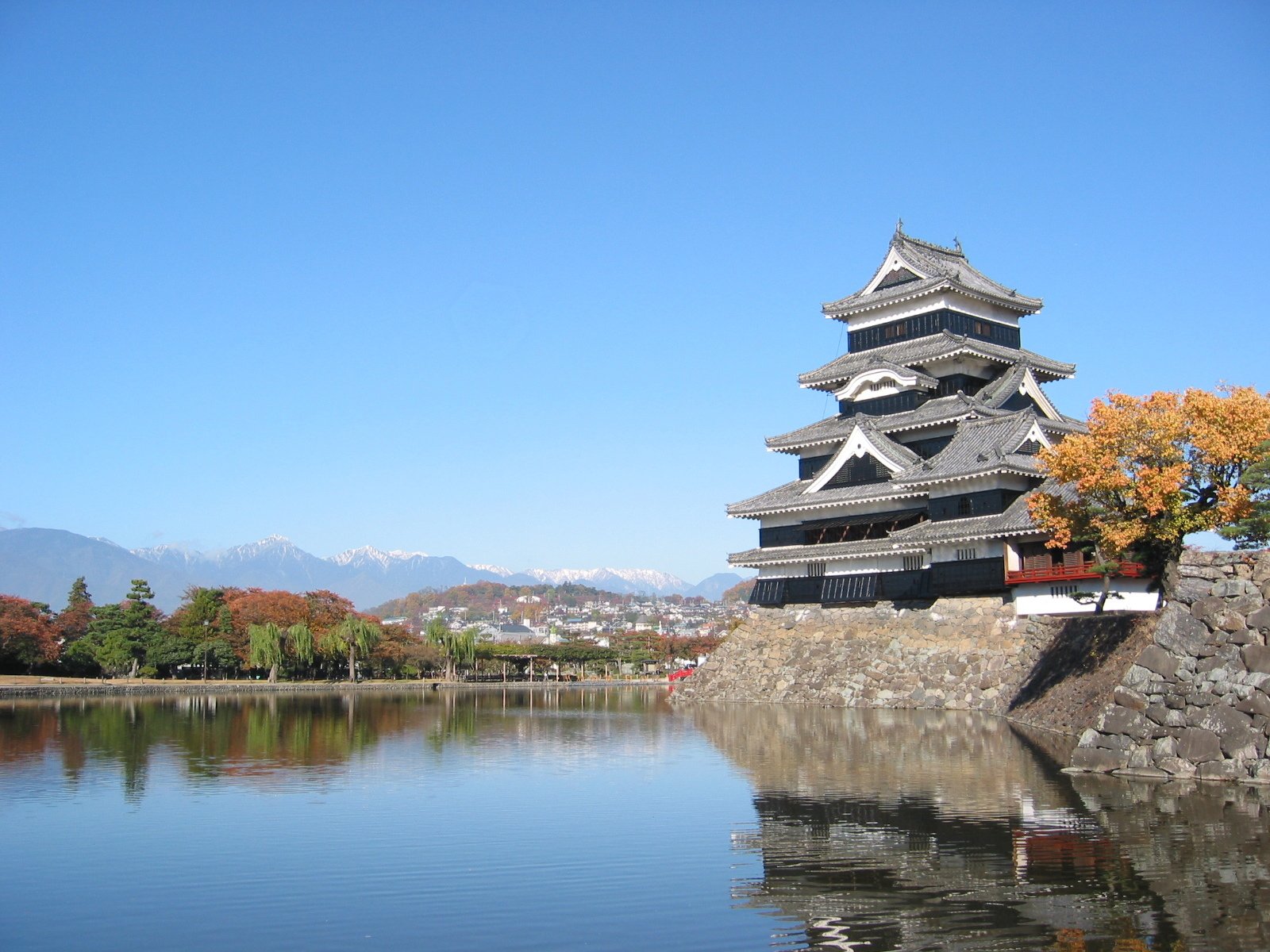
Looking to explore the Japanese Countryside but don’t know where to start? Look no further than Nagano.
Easily accessible from Tokyo, Nagoya and other major cities, it’s your gateway to the countryside and the majestic mountains of the Japanese Alps.
Here are our recommendations for 15 of Nagano’s best sightseeing spots.
1. Jigokudani Wild Monkey Park
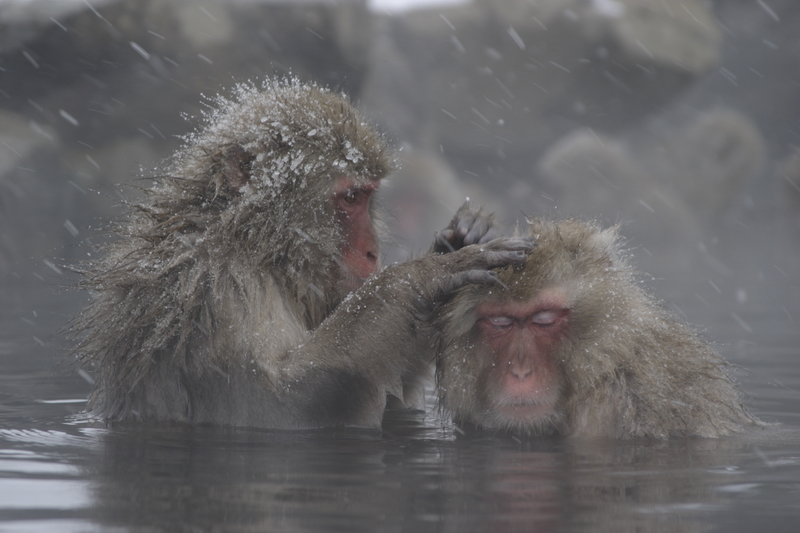
In the Jigokudani Valley above the hot spring town of Yamanouchi, you’ll find steaming geothermal vents and a troupe of onsen-loving Japanese macaques .
It is said that the monkeys first discovered hot spring bathing after watching a man bathe in the outdoor bath of the nearby Korakukan inn. After locals witnessed the monkeys using the baths for themselves, they decided to set up a hot spring especially for them.
It’s no zoo&emdash;there are no fences separating the visitors from the monkeys. You can see them in their natural habitat as they bathe in hot springs and go about their everyday lives, up close and personal.
2. Matsumoto Castle
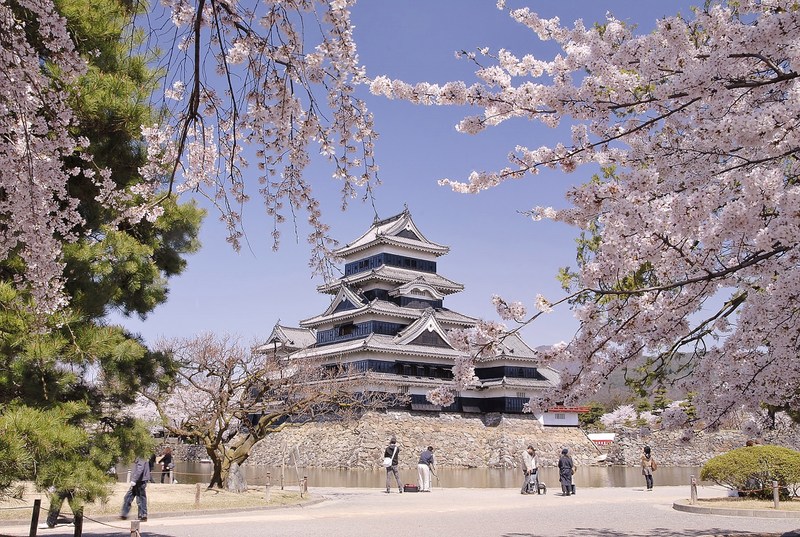
One of Japan’s few remaining original castles, Matsumoto Castle is a National Treasure and the proud symbol of Matsumoto City.
Its exquisite black-and-white exterior contrasts beautifully against the Northern Japanese Alps, and its interior includes a large museum of wartime artifacts, with many intact rifles and weapons from the Warring States Period. You can climb all the way up the castle's steep stairs—or are they more like ladders?—to the top of the castle and see Matsumoto City from above.
Around the castle you’ll find its jokamachi , old castle town streets with a rich history, featuring cozy cafes, shops and restaurants.
3. Zenkoji Temple
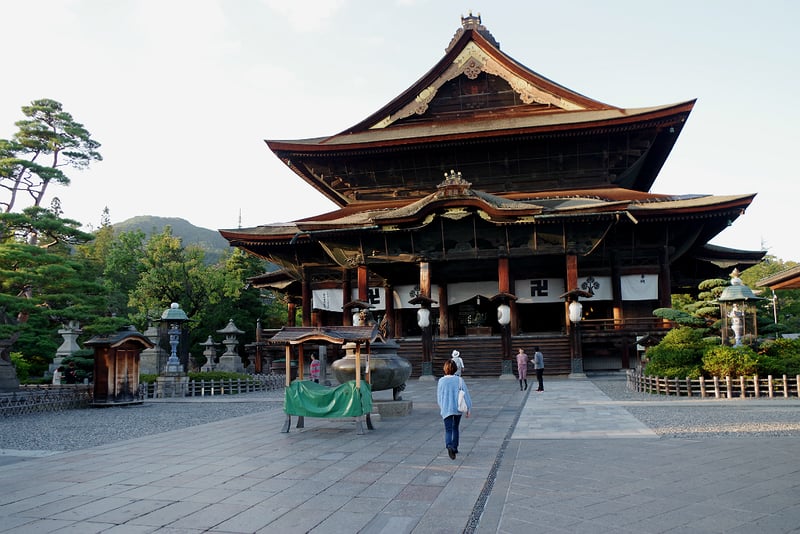
Zenkoji Temple is a national treasure with over 1,400 years of history.
The first Buddhist icon to be brought from India to Japan is enshrined here, making the temple an important pilgrimage spot for Buddhists in Japan. The saying goes that everyone should visit Zenkoji at least once in their lives.
There are 39 lodges around the temple where pilgrims stay and rest after their long journeys. Tourists can stay here as well and experience Zazen meditation, sutra-copying exercises and more .
4. Kamikochi
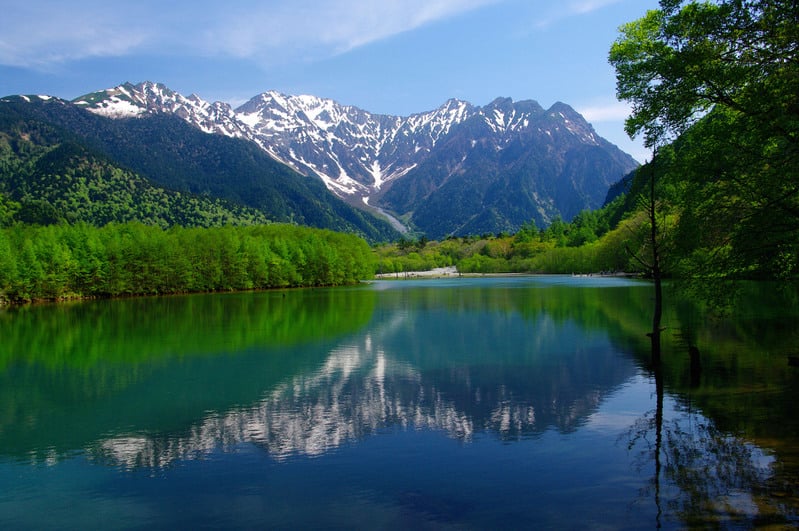
At the base of the Northern Japanese Alps is Kamikochi , an idyllic basin with crystal clear water and verdant forests. The views of the Hotaka mountain range from Kamikochi’s central Kappa Bridge are awe-inspiring and earn it a special place in the hearts of nature enthusiasts around Japan, and even around the world.
There are hours and hours of walking trails along the Azusa River, taking you to a number of scenic locales around the basin. You can also head into the mountains from Kamikochi, tackling day-trips to smaller mountains or going on multi-day treks to the highest peaks of the alps.
5. The Post Towns of the Nakasendo
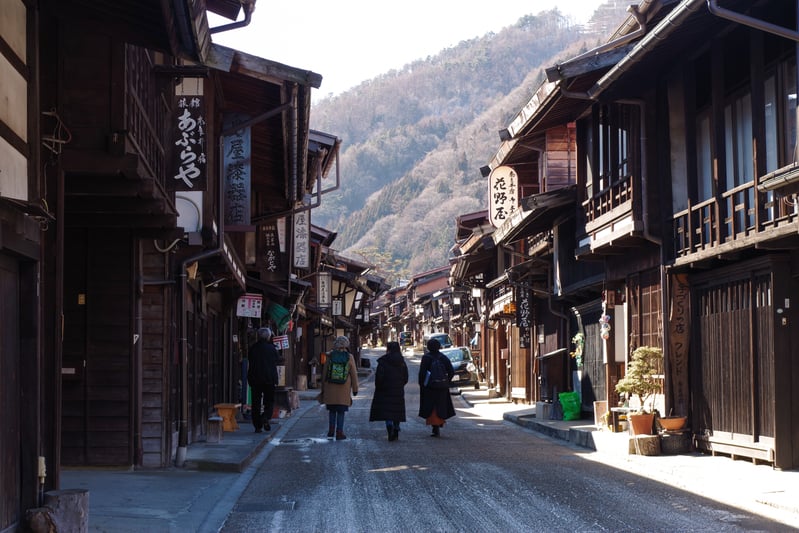
The Nakasendo is a 534-kilometer-long trail that connects Kyoto and Tokyo. Constructed during the Edo Period (1603-1868), it was one of the longest but safest ways to travel between the old and new capital.
It was one of five major roads established at the time, but unlike others that have succumb to modernization, much of the Nakasendo has remained largely untouched. Parts of the road that people traveled hundreds of years ago, as well as the towns in which they stayed during their long journeys, can still be seen today.
Magome, Tsumago and Narai are the most well-preserved and popular post-towns to visit. Walk among these ancient townscapes and the old roads that connected them and experience a slice of Japan’s history.
6. Togakushi
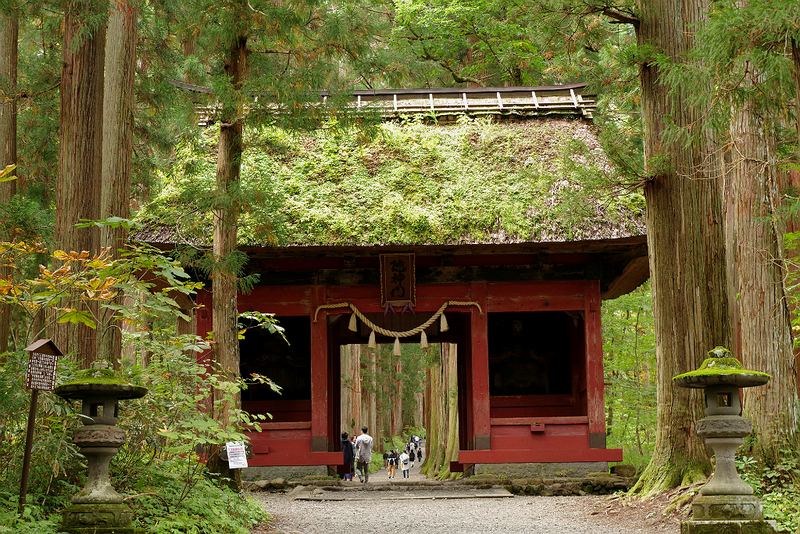
This area, tied to Shinto legend, has long been a haunt of mountain ascetics. Five Shinto shrines were established here and are connected by a long trail leading to the foot of Mt. Togakushi.
The most famous among them is the final Okusha Shrine , which sits at the end of a 40-minute long trail through the woods. But more impressive than the shrine itself is the scenery along the way. Near the halfway point past a thatched-roof gate, you are greeted by rows of towering, 400-year-old trees. Nature seems to thrive around these Shinto shrines, and the area buzzes with a spiritual energy.
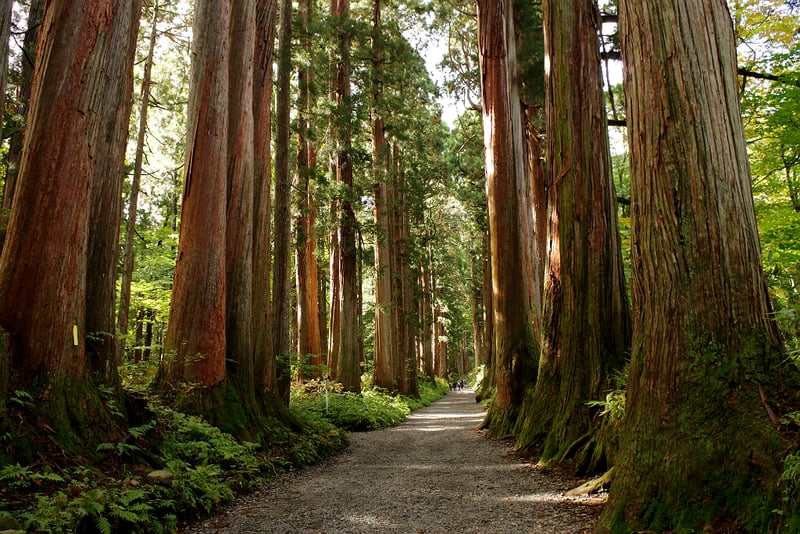
Due to its remote location and the lack of villages here, Togakushi was also an ideal location for ninja. The Togakure Ninja Museum , across from the entrance to the Okusha Shrine, is dedicated to the area’s history and has on display many of the tools that ninja used in their work.
7. Bessho Onsen
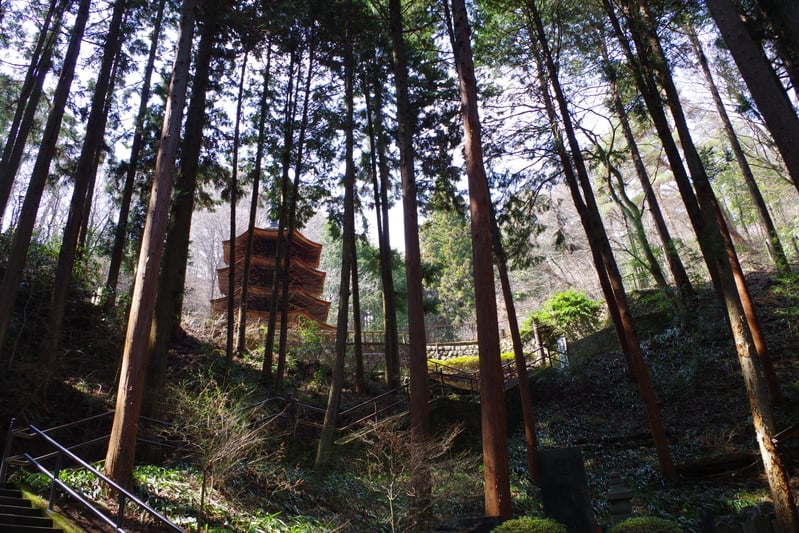
The small hot spring village of Bessho Onsen sits on a hill overlooking vast fields of rice. Home to several beautiful temples and one of Nagano’s national treasures, the village is also known as “Little Kamakura.”
Bessho is a place to relax and take life slow. Stay at a hot spring ryokan, leisurely soak in its bathes, and walk around town to see its ancient temples of Kitamuki Kannon and Anrakuji.
Stop to smell the roses the Bessho way, by taking a dip in one of the sotoyu (public) baths or tasting the hot spring water bubbling out of dragon-shaped fountains.
More about Hot Springs
Find other hot spring areas around Nagano Learn about hot spring etiquette
8. Daio Wasabi Farm
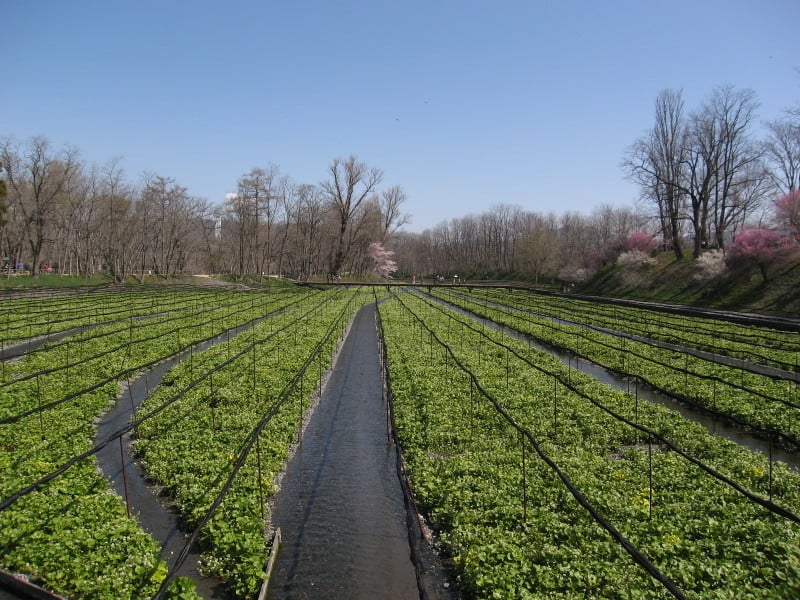
Wasabi can’t be grown just anywhere. It requires a constant supply of clean, cool, free-flowing water. Thanks to snow melt from the Japanese Alps, the Daio Wasabi Farm produces plenty of wasabi and is one of the largest wasabi farms in Japan.
At the farm, you can taste fresh wasabi and wasabi-flavored snacks like croquettes, ice cream and even beer. You’ll be surprised by fresh wasabi’s subtle flavor—much less spicy than the preservative-filled green tubes that you find in supermarkets.
9. The Hakuba Valley
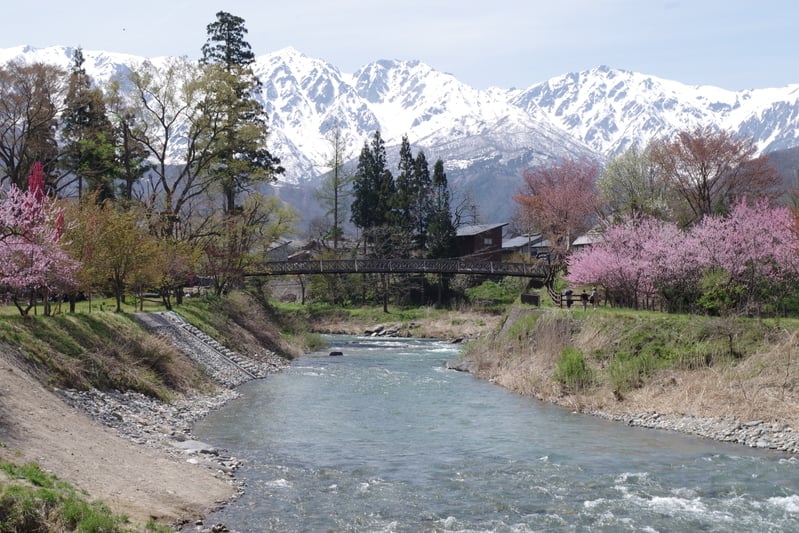
At the foot of the Japanese Alps, the Hakuba Valley is one of Japan’s premiere mountain resort areas. One of the stages for the 1998 Winter Olympic Games, it is well known for its plentiful powder snow and scenic ski resorts.
But winter isn’t the only time to visit, it’s a great place to enjoy the outdoors year-round. You can go mountain biking in the valley or on downhill trails, hike up its mountains, go canyoning in its ravines, or even paraglide through the sky.
For those looking for the best mountain views, we recommend visiting Happo Pond or Hakuba Mountain Harbor .
10. Karuizawa
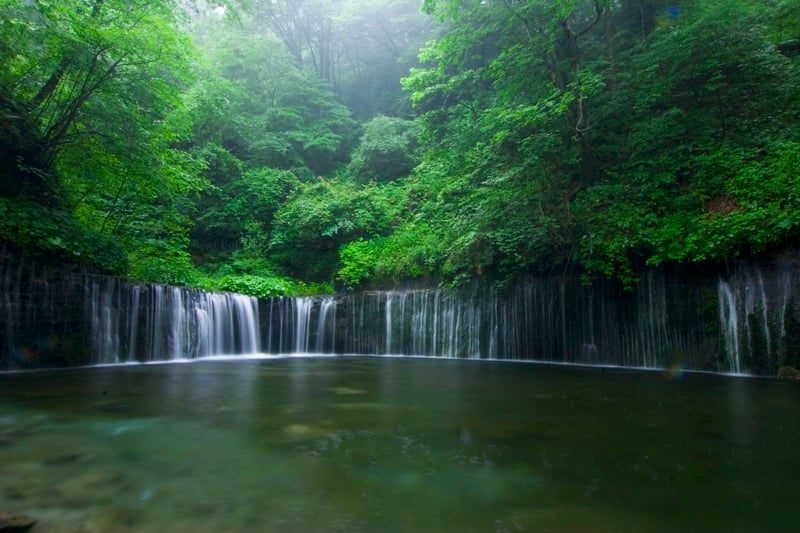
A refreshing resort town in the mountains of Eastern Nagano and just 60 minutes away from Tokyo, Karuizawa is a great escape from the heat of summer.
Karuizawa strikes a fine balance between the style and comfort of the city and the fresh air and greenery of the countryside. The Karuizawa Prince Shopping Plaza embodies this concept, spreading out its over 220 outlet stores over green lawn and placid bodies of water. Karuizawa’s other main shopping areas, Kyu-karuizawa Ginza and the Harunire Terrace, are tucked into the woods at the foot of the mountains.
Further afield, Shiraito Falls is a must-see for nature lovers. This short but elegant waterfall traces a 70-meter arc, flowing like individual threads of white silk into the pool below.
11. Senjojiki Cirque
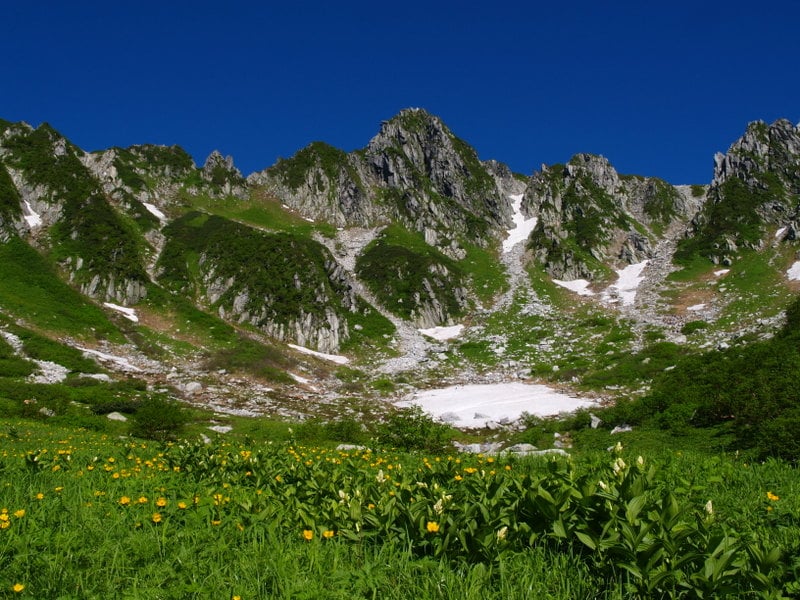
Japan’s first ropeway, located in the Central Japanese Alps, takes visitors over 2,600 meters high to see Senjojiki Cirque .
This natural amphitheater was formed by glacial activity over thousands of years. Its name refers to its vast size—so large that 1,000 tatami mats could be laid across it.
At these altitudes, you can see incredible scenery year-round. In winter and spring, the area is covered in snow and ice. In summer, colorful alpine flowers dot the landscape. In autumn, the low-lying bushes turn fiery shades of red and orange. And any time of year, you can see majestic views of the Southern Japanese Alps on the far side of the Ina Valley.
Senjojiki Cirque and Komagane in Spring
12. The Tateyama Kurobe Alpine Route
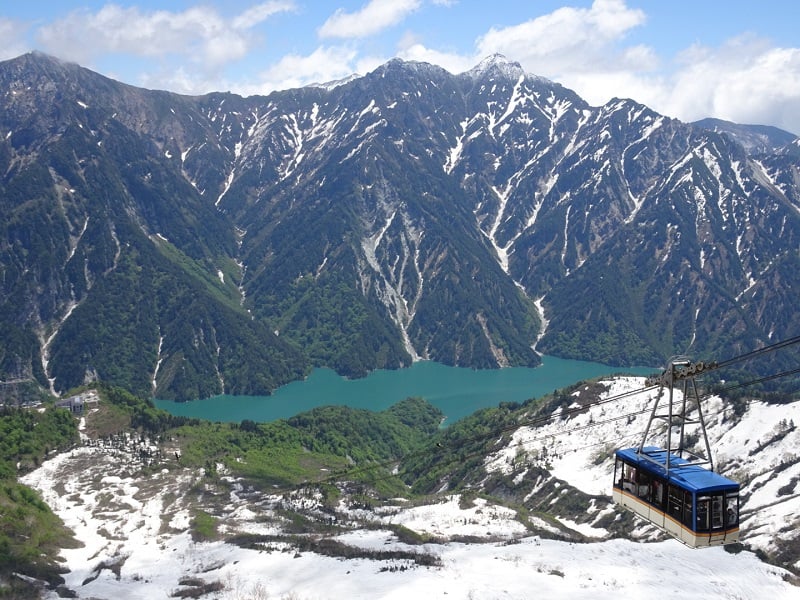
The Tateyama Kurobe Alpine Route cuts through the mountains separating Nagano and Toyama prefectures with the use of cable cars, ropeways, trolleys and buses, introducing passengers to incredible alpine scenery.
Open from mid-April to early November, you can see massive snow walls in spring, greenery in summer, and vivid red and yellow foliage in autumn.
13. Star Village Achi
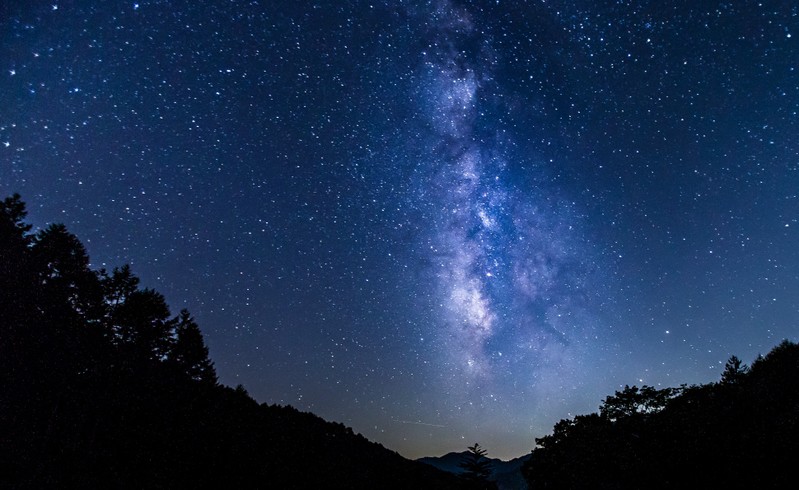
In the southernmost reaches of Nagano Prefecture is the small village of Achi. Removed from the cities and surrounded by mountains, Achi is a great place to enjoy the peace and quiet of nature while gazing at the stars. Take a lift up to the top of the local ski resort and enjoy the views from Star Village Achi .
As if an evening under the stars couldn't get any more relaxing, the area is also known for its steamy hot spring baths. Most visitors spend the night at one of the inns here at Hirugami Onsen , whose waters are known for their rejuvenating properties.
While far from most parts of Nagano, the area is just 1 hour and 40 minutes from Nagoya by bus.
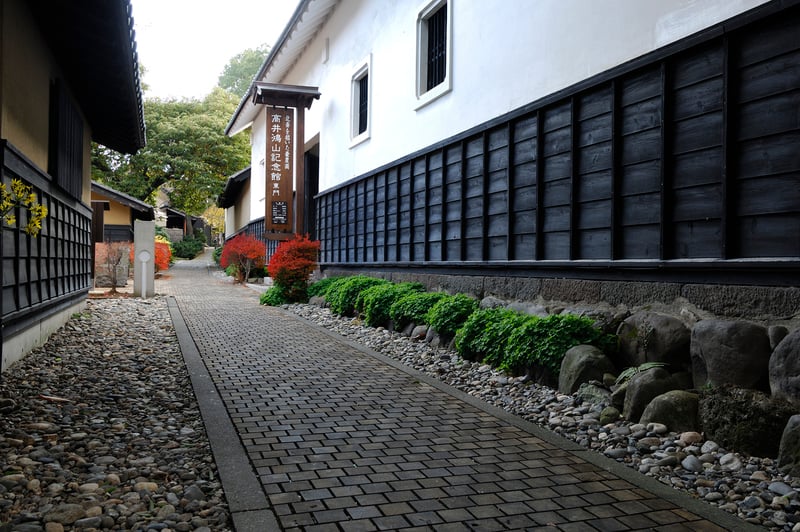
The town of Obuse sits by the shore of the Chikuma River between Suzaka and Nakano cities in Northern Nagano. Surrounded by plentiful farmland and placed conveniently between Zenkoji Temple and the Sea of Japan, it long served as a hub for trade and travel.
One of the area’s most famous guests, who ended up living here for many years, was Katsushika Hokusai, whose works are some of the most well-known images of Japanese art outside of Japan (see: "the Great Wave off Kanagawa").
The Hokusai Museum was dedicated to him and houses many of the works that he made while he was here, and on the outskirts of town, Gansho-in Temple has one of his most beautifully preserved paintings.
15. The Venus Line
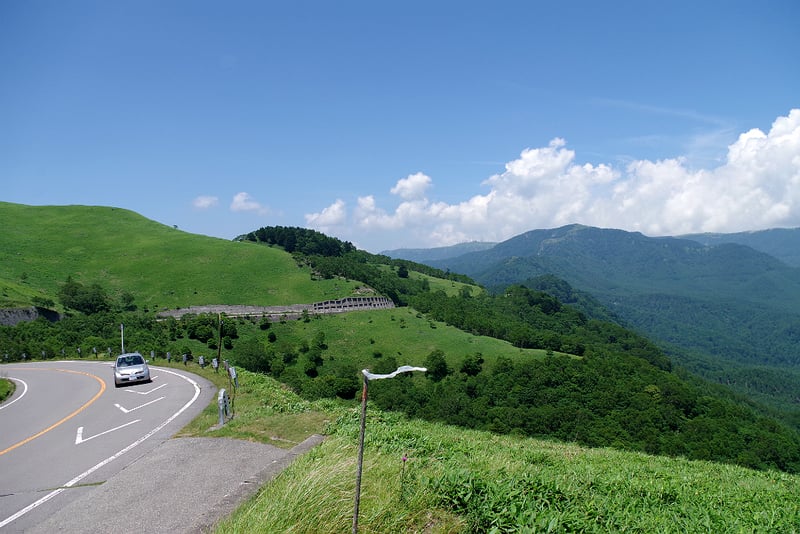
Extending across the central highlands of Nagano, the Venus Line takes you past serene lakes, expansive moors and majestic mountains at altitudes from 1,500 to 2,000 meters high.
Drive through grassy highlands covered in day lilies, pass idyllic pastures with grazing cattle, and stop to admire the contrast of natural and man-made beauty at the Utsukushigahara Open Air Museum.
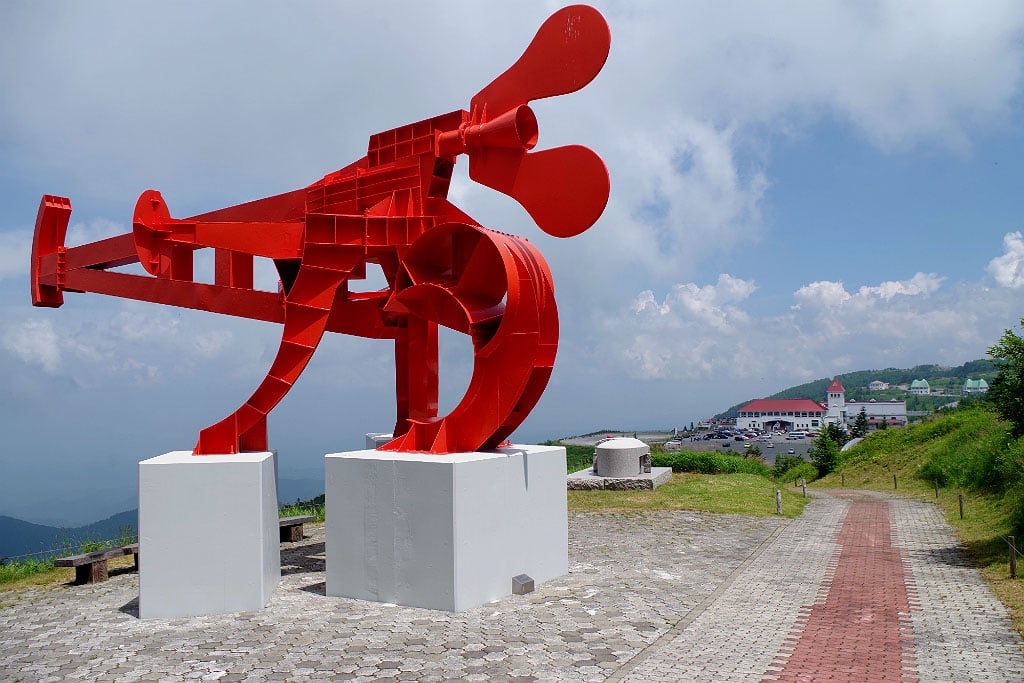
Driving in Japan may seem daunting at first, but it opens up so much more of what Japan has to offer, especially when visiting the countryside. And if you do choose to drive, it's hard to beat the scenery that the Venus Line has to offer.
Renting a Car in Nagano Two days of driving around the Roof of Japan
Recommended articles
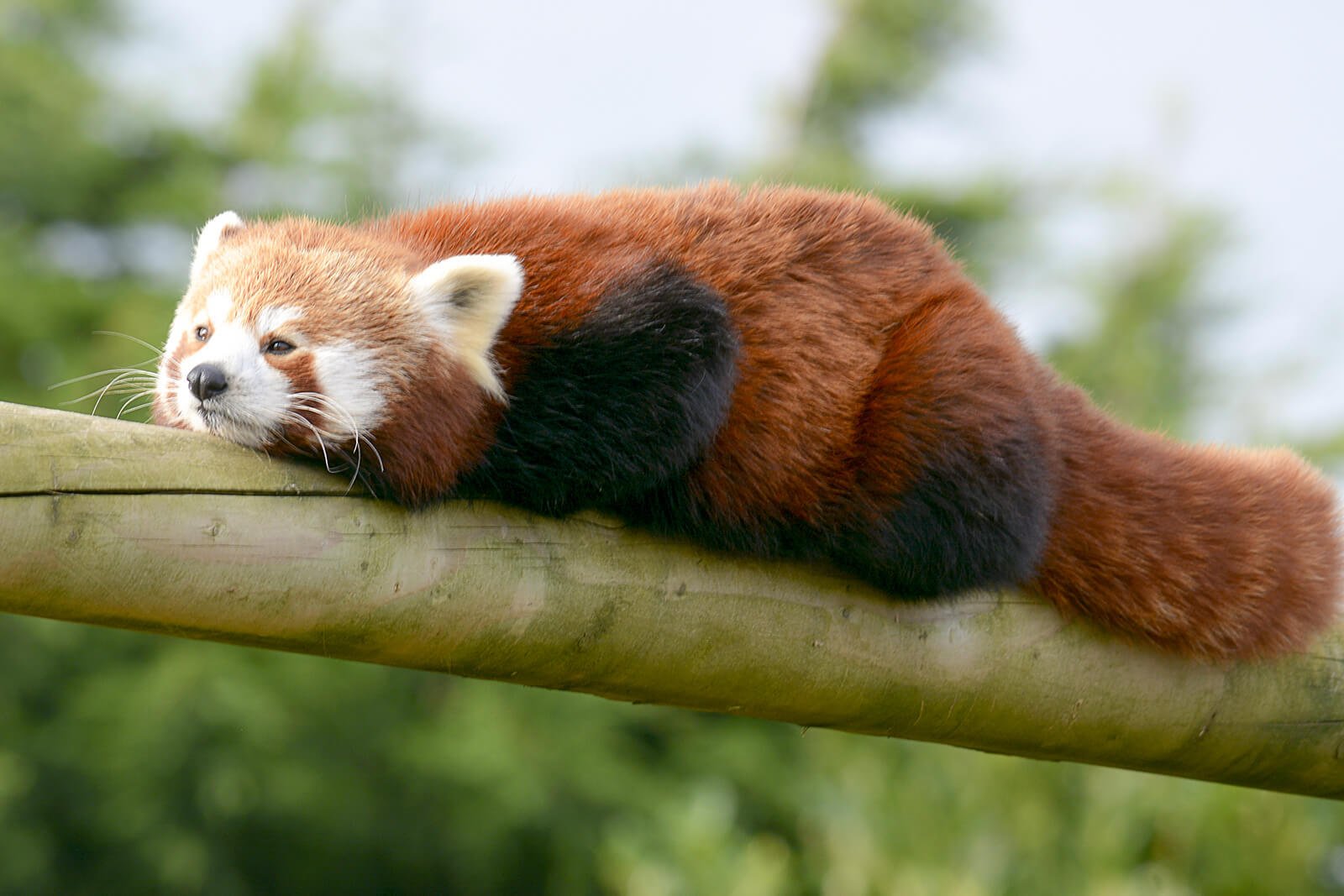
News Letter

Home » Travel Guides » Japan » 15 Best Things to Do in Nagano (Japan)
15 Best Things to Do in Nagano (Japan)
The city of Nagano is located in the Nagano Prefecture and this is known as one of the premium destinations to visit on Honshu if you are looking for some winter fun.
To that end you will find a number of ski slopes here that are perfect if you fancy going skiing or snowboarding, and you can also come here to check out the famous ‘snow monkeys’ that like to bath in the local hot springs when the temperatures drop.
As well as the monkeys and the snow however you will also find a range of other interesting sights in Nagano such as temples, gardens and museums, and this is also a good place to base yourself if you want to get out into the wider region.
There are some idyllic day trips on offer here that let you see a less visited side of Japan and this is one of the less touristy parts of the country that lets you see how people truly live and work in places outside the main hubs like Tokyo and Osaka.
Here are the 15 best things to do in Nagano …
1. Visit Zenkoji

Zenkoji is a temple that was built in the 7th century and this is also one of the most famous pilgrimage sites in Japan for the Buddhist community.
There is a hibutsu here which is known as a hidden Buddha and this is show to the public every six years and the next showing will be in 2022, and then every six years after that.
As such you need to time your visit carefully if you want to get a glimpse of the Buddha statue and you can also take in the serene grounds here and walk along the rows of shops in front of the temple that also sell lucky charms and talismans.
2. Explore Nishi-no-Mon
Nishi-no-Mon is the name for a sake brewery which is located in Nagano and also has a gift shop, museum and restaurant attached.
You can tour the brewery and museum where you can see a range of old photographs that tell the story of the brewery and you can also check out some ancient as well as modern brewing equipment on site.
At the end of the tour you can also sample some of the sake which is a kind of Japanese rice wine and buy a few bottles as souvenirs of your trip.
3. Try the onsen
Nagano is known for its onsen which are traditional Japanese hot springs where you can bathe both inside and outside which is a great way to relax at the end of a hot day.
One of the most famous onsen in Nagano is the Kagai onsen Ichiyoukan which has baths filled with brown water which are separated according to gender.
Another is the Omuro Onsen Makibanoyu which has a large bath located out of doors which is known as a rotenburo and allows you to look out over the neighboring Zenkouji Plain.
4. Try the local delicacies

Nagano is not one of the major food capitals of Japan but that doesn’t mean that you can’t still sample the local delicacies here.
Some of the favorites in this part of the country include oyaki which are Japanese dumplings that are steamed and come in both sweet and savory varieties.
Some of the various fillings used include pumpkin, eggplant and red bean paste, or you can also get them with pickled vegetables and mushrooms.
Also make sure you try the oden which is a stew made with white radishes, hard boiled eggs and fish cakes.
5. Visit the Nagano Prefectural Shinano Art Museum

Nagano Prefectural Shinano Art Museum is known as one of the most important museums in this part of Japan and art lovers flock here from all over the country.
There are a number of galleries here which are known for their pretty landscape paintings and you will find a range of European art on show as well as pieces from around Japan.
There are also a number of traditional nihon-ga paintings which show off one of the most famous styles of Japanese painting.
6. Go skiing

The Nagano region is known for its ski resorts so if you are in Nagano City then you can easily go outside the city center and head to some of the most famous resorts in Japan.
These include Yabuhara Heights as well as Shiga Kogen Heights and Nozawa Onsen.
All these resorts have a range of slopes that you can try in the winter months and they also have a selection of ski lifts, ropeways and gondolas that you can ride to take in the scenery.
If you prefer then you can also go hiking around the resorts and in the winter time snow shoeing is also a popular activity.
7. Experience Binzuru

Binzuru is the main summer event in Nagano and takes place on the first Saturday of August every year.
There are some 200 musical and dance groups that attend the festival every year and you there is also a procession here that honors the Indian Buddhist saint which was known as Pindola Bharadvaja.
To the end, people walk through the streets of Nagano to the Zenkoji temple where they then rub the statue of Binzuru which is meant to bring them good luck.
8. Visit Togakushi Shrine

Togakushi Shrine is known for being one of the most beautiful shrines in Nagano and is there are actually several small shrines here as well as some hiking trails that take you out to the surrounding areas.
There are also signature features here such as the Kagami Pond which is known for its calming waters and you can also visit the famous noodle shop across the street which locals flock to for its toothsome soba noodles.
9. Check out the snow monkeys
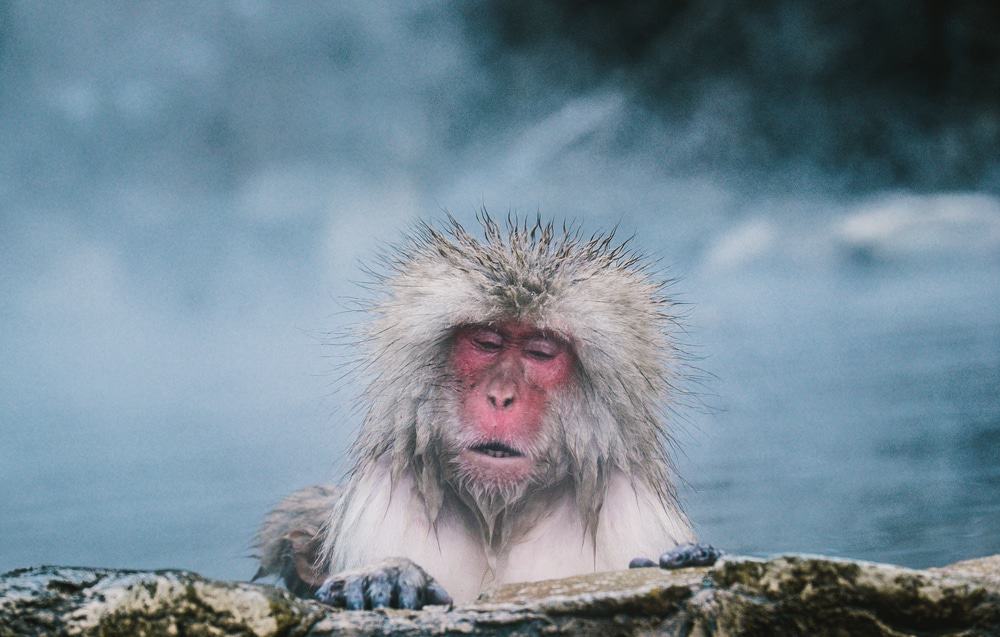
One of the main reasons why people come to Nagano is to check out the famous ‘snow monkeys’ that live here.
The monkeys live in a place called Jigokudani in the valley which is part of the Yokoyu River and you can get there from Shiga Heights and the Shibu-Yudanaka Onsens.
There are more than two hundred monkeys here that are called snow monkeys as when the weather gets cold they flock to the local onsens or hot springs for a dip in the warm waters.
10. Try horse meat sashimi

If you are feeling brave when you are in Nagano then you may want to try one of its more unusual specialties which is horse meat.
The twist on this dish however is that the meat is known as basashi and is actually raw to make a kind of sashimi, but made out of thin slices of horse meat.
You will find this served up all over the city and local rave about the deep gamey flavor.
11. Visit Chibikko Ninja Village
If you like the ninja culture or are traveling with children then make sure that you check out the Chibikko Ninja Village.
Ninja were known across Japan in the 15th and 16th centuries when they worked as mercenaries and you can now find a ninja house here which has real life ninja who will show off a range of tricks around the home.
You can also have a go at training to be a ninja yourself and there are classes on how to throw knives as well as fight using a bamboo sword.
The classes may sound a bit alarming but many of them are also designed with children in mind so don’t be afraid to bring the family and make a day of it!
12. Visit the Sanada Treasure Museum

The Sanada Treasure Museum is known in Nagano for housing some of the memorabilia and antiques of the Sanada family who lived during the Edo period and were originally from humble beginnings before becoming more affluent as the years went on.
Nowadays you can see all the treasures that they accumulated during their lifetime and you can also walk around the scenic grounds where you will get a feel for how people would have lived in this part of Japan in the days of old.
This is one of the smaller museums in Nagano but it is well worth stopping by especially if you like antiques and old photographs.
13. Take a trip to Matsushiro

If you want to get out of Nagano for the day then you need to head to Matsushiro which is around 12 kilometers to the south of the city.
This part of Japan is known for its pretty little samurai houses which date from the days of old and will transport you back in time.
A huge number of the buildings here are still in the traditional style and you will also find a wealth of gorgeous Japanese Zen gardens here.
There are also some small museums here and dainty temples dotted around making this a great picturesque day trip if you have the time.
14. Togakushi Forest Botanical Garden

Togakushi Forest Botanical Garden stretches for some 771 hectares and is known for its amazing pine forests.
If you like bird watching then this is one of the best places to go it as the forests are the home to a huge range of avians and you can also enjoy checking out other flora and fauna here.
There are a number of cycling paths all over the garden and you can also spend time walking around the inner pathways and savoring the relaxing atmosphere and the colorful plants.
15. Stock up on Shichimi

Shichimi is the name for a famous Japanese condiment which is known as ‘Seven Flavors’ as it is made of a heady blend of different herbs and spices such as ground chilies, sesame seeds and citrus leaves.
This condiment is usually served on top of food such as soba noodle soup in order to give it a bit of a kick and you can buy it at Yawayata Isogoro which is a local store in Nagano that has been producing Shichimi for over 280 years.
If you want a taste of Japan long after you have gone home then this is the place to find it.
15 Best Things to Do in Nagano (Japan):
- Visit Zenkoji
- Explore Nishi-no-Mon
- Try the onsen
- Try the local delicacies
- Visit the Nagano Prefectural Shinano Art Museum
- Experience Binzuru
- Visit Togakushi Shrine
- Check out the snow monkeys
- Try horse meat sashimi
- Visit Chibikko Ninja Village
- Visit the Sanada Treasure Museum
- Take a trip to Matsushiro
- Togakushi Forest Botanical Garden
- Stock up on Shichimi
- Tours & Experiences
- Tailor-made Trips
- Bahasa Indonesia
We are happy to see you again!
Continue with
Or use email.
No Account? Create one
Create account
Already have an account? Sign in
Quickly Sign up with
I agree to Japan Travel's Terms of Service and Privacy Policy . Terms of--> and acknowledge that Japan Travel's Privacy--> applies to me.-->
Email reset password link
Please check your inbox and click the link we will send to you.

Mountain adventures at Japan's Alps
Top attractions in nagano.
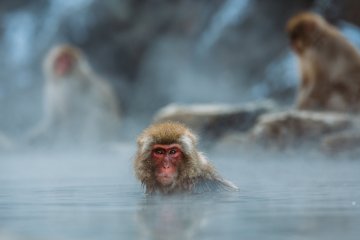
Jigokudani Monkey Park
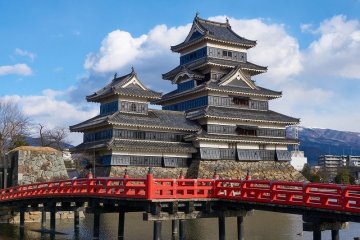
Matsumoto Castle

Matsumoto City Museum of Art
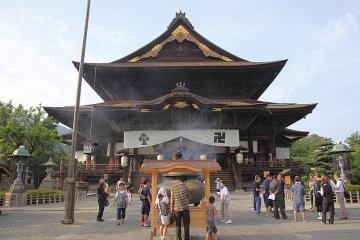
Zenkoji Temple
Around nagano.
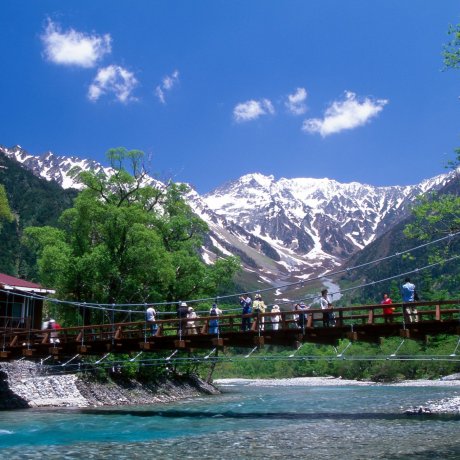
Many people think of Matsumoto in Nagano prefecture as an overnight spot before heading to the Japan Alps or Utsukushigahara Heights. If not for my wife having a good friend who is a resident,..
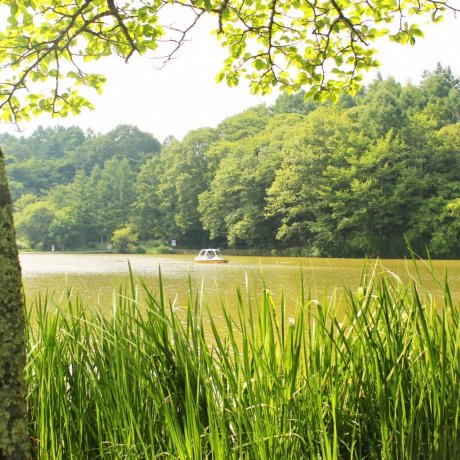
Tokyo is a great city to enjoy, with its unfinishable array of sights, shops and restaurants, but sometimes it's nice to get away for a day or two to somewhere quieter, and enjoy a more tranquil..
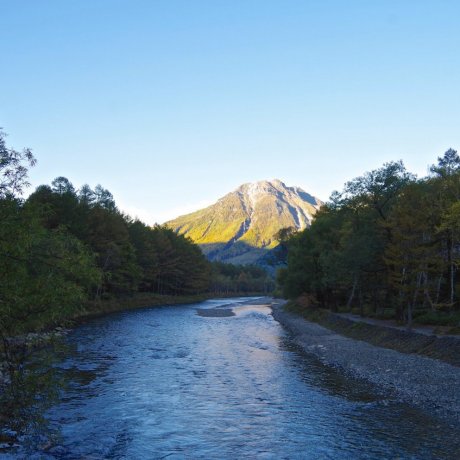
Kamikochi is a popular resort and often associated with some of the best natural beauty that the central Japanese Alps—and indeed Japan—have to offer. Go for a hike on one of the many trails..
About Nagano
The mountainous prefecture of Nagano Prefecture (長野県, Nagano - ken ) is the perfect summer resort to avoid the heat, with the town of Karuizawa being one of the most popular summer getaway spots in Japan.
Take advantage of the relatively cool weather to explore the famous Matsumoto Castle , one of Japan’s oldest shrines in Suwa Taisha, and Zenko-ji , a major pilgrimage site. Nagano’s many tall mountains serve as challenging but beautiful hiking trails, especially those of Kamikochi .
That being said, Nagano is also a great destination in the winter, and it was the host of the 1998 Winter Olympics. The prefecture’s mountains are some of the largest ski resorts in Japan, most notably Shika Kogen and Mount Hakuba . After being out in the cold, seek warmth in one of Nagano’s many famous hot springs.
- Things to Do in Nagano
Nagano Top 10
- Recommended

Glamping Workations at Hakuba's Mominoki Hotel

Komagane's Cedar Shrines

ROKA Luxury Apartments

Blades of Shinanomachi

Straddling the Skyline in Shibu Toge Pass

Hotel Housei in Yudanaka

Wellness Travel in Japan’s Northern Alps

The Top Four Snowy Slopes of Nagano, Niigata

The Bathhouses of Shibu Onsen

Takato Castle Park Sakura Festival

Nagaoka Festival

Matsumoto Grand Taiko Festival

Snow Machine Hakuba

Achi Village Peach Blossom Festival

Spring Festa at Alps Azumino National Park

Iiyama Nanohana Festival

Frog Street in Matsumoto

Matsumoto Frog Festival

Nagano Ebisukō Fireworks Festival
Upcoming nagano events.

Spring Festa at Alps Azumino National Park 2024
While spring in Japan might immediately evoke visions of cherry blossoms, they're not the only flowers that can be enjoyed..

Karuizawa Half Marathon 2024
The resort town of Karuizawa in Nagano is a popular destination for various outdoor recreation pursuits, from cycling to skiing...

Shinshu Azumino Half Marathon 2024
The Shinshu Azumino Half Marathon is now in its 10th year, and it's an event that showcases the area's beautiful surroundings..
Where to eat in Nagano
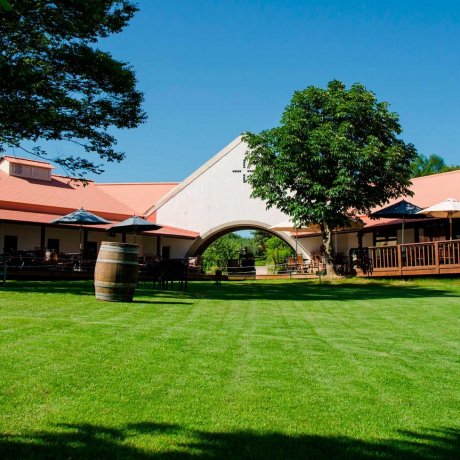
St. Cousair Winery
St. Cousair, an award-winning winery located in northern Nagano Prefecture’s town of Iizuna, is a delightful spot to relax, en..
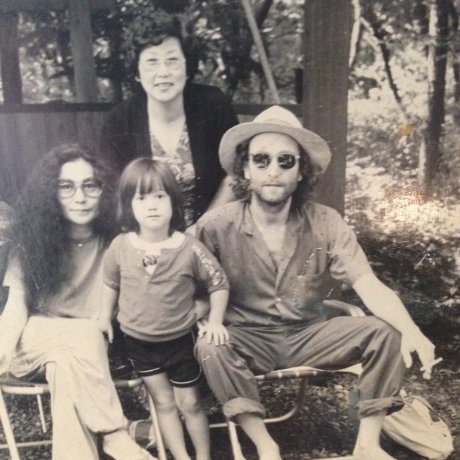
Singing Norwegian Wood at "Rizanbo"
There are secrets in the forest of Karuizawa. One of them involves an Englishman, his Japanese wife and their seven year old boy...

The Best Soba in Togakushi
It has been said that Togakushi is the birthplace of soba. So why not go with the best of them all: the centuries-old, family-run..
Places to stay in Nagano

Shibu Onsen in Nagano Prefecture is a lovely onsen town in a gorgeous natural area. But it also has something more to offer - 9..
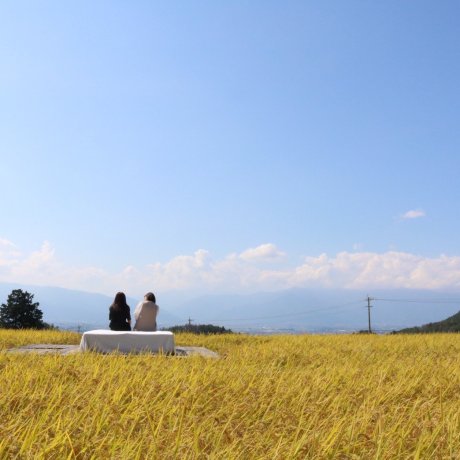
Take a break from your everyday routine with a healing retreat in Matsumoto, Nagano Prefecture. Here, cultural heritage, bountiful..

Koshinzuka is a charming minshuku - or traditional Japanese inn - near Tsumago on the Nakasendo in the Kiso Valley.
Latest Nagano Reports
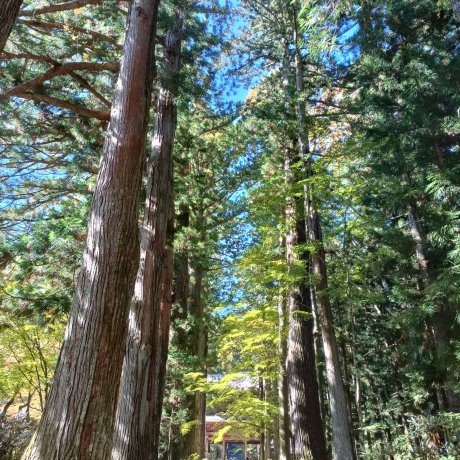
Komagane's Kozenji and Omiya Isuzu Shrines exemplify how sacred cedars can augment a shrine's already holy atmosphere.
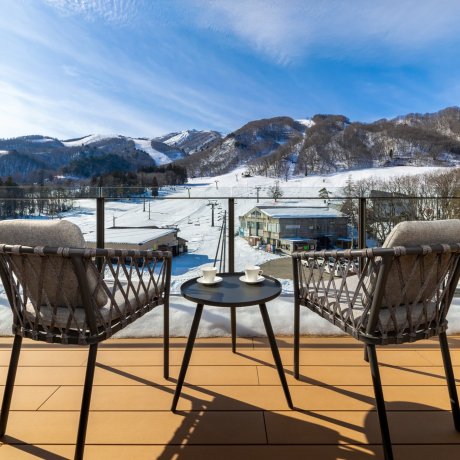
Driving on Route 292 around Gunma's Kusatsu Onsen offers stunning views as well as interesting places like the highest point..
Let us know how we can help.
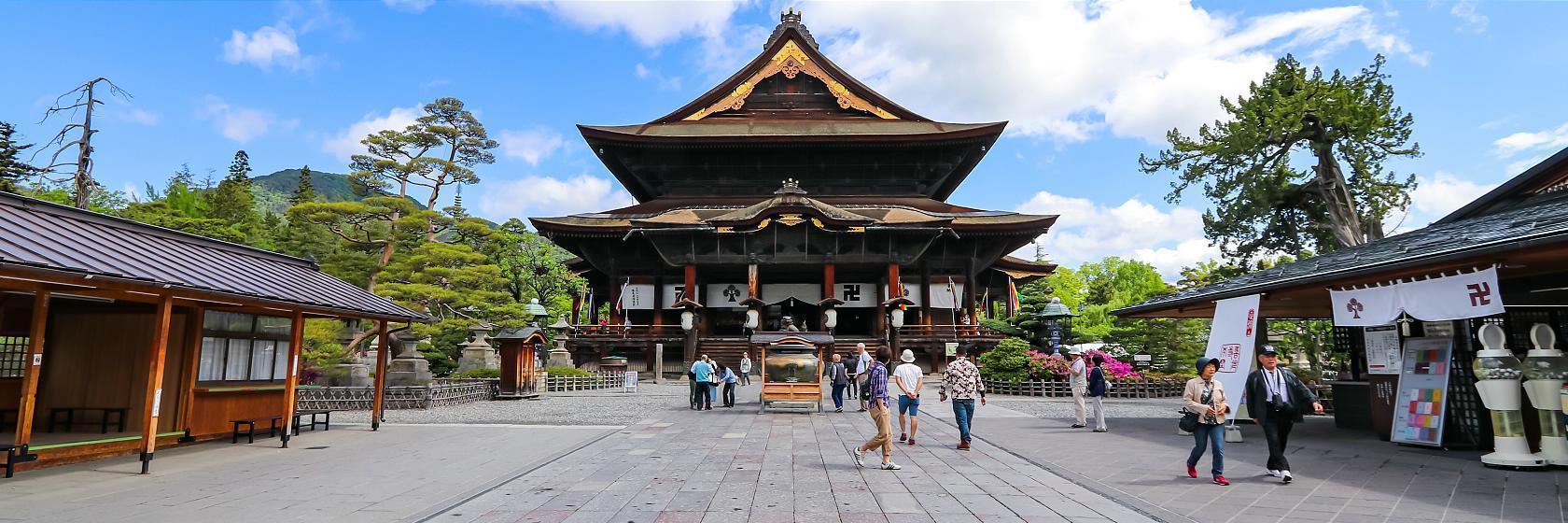
Nagano City (����) is the capital of Nagano Prefecture . It evolved as a temple town around Zenkoji , one of Japan's most popular temples . In 1998, the city hosted the Winter Olympic Games , and some former olympic facilities can still be viewed around town.
In the forested mountains northwest of the city center lies the Togakushi area which attracts tourists with its popular shrines and as the legendary home of the Togakure Ninja School. The Togakushi Ninpo Museum and the Kids Ninja Village provide good entertainment and a glimpse of the area's ninja past.
Top attractions in Nagano
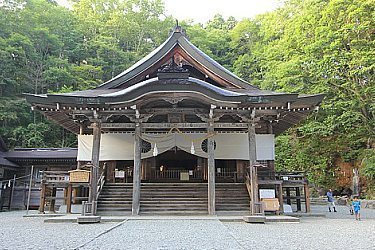
Togakushi Shrine •
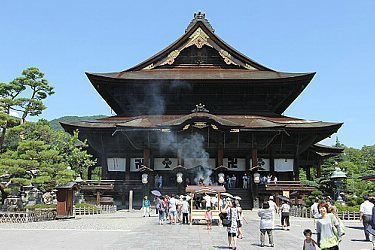
Zenkoji Temple •
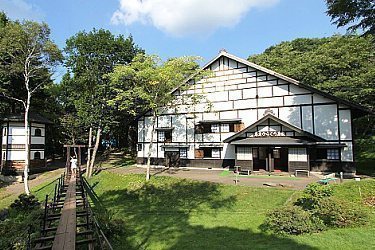
Ninpo Museum •
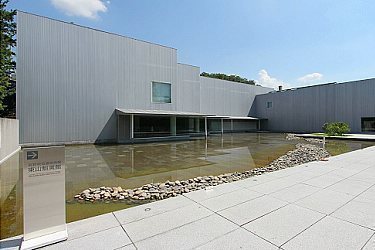
Nagano Art Museum
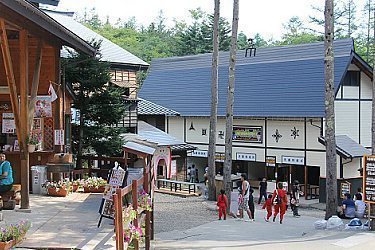
Kids Ninja Village
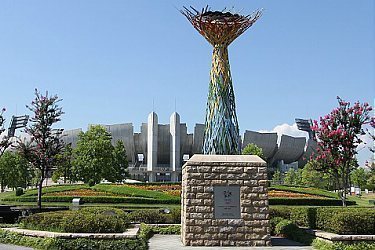
Olympic Facilities
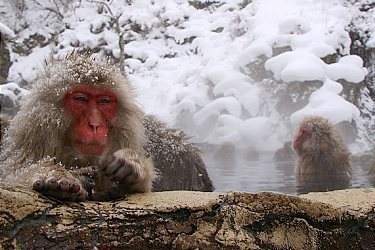
Yamanouchi ••
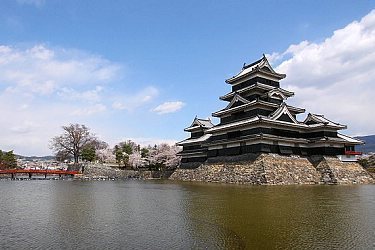
Matsumoto •
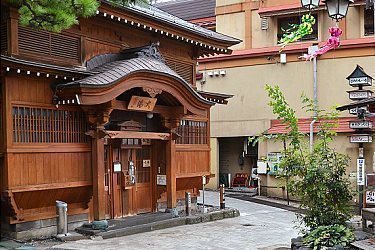
Nozawa Onsen
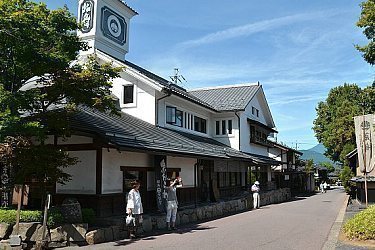
Bessho Onsen
Getting there and around.
Questions? Ask in our forum .
Links and Resources
Nagano city, hotels around nagano.
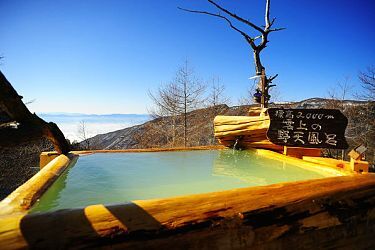
Experiences around Nagano
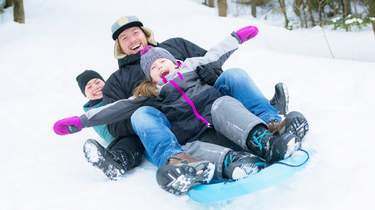
Top 12 Things to Do in Nagano, Japan
:max_bytes(150000):strip_icc():format(webp)/jessicaesaprofile-7bb1d24acee44aa5839ac875cb2e0bff.jpg)
Getty Images / Anton Petrus
The city of Nagano, and surrounding Nagano Prefecture, is an intensely beautiful and historic part of Japan, only a stone’s throw away from the capital city of Tokyo. The city’s Zenko-Ji Temple hides Japan’s first-ever Buddhist statue, while the mountains surrounding the city made it an ideal host for the 1998 Winter Olympics. A mountainous place that transforms with the seasons, Nagano is a place of incredible Shinto and Buddhist history and home to one of Japan’s most iconic castles. While many of Japan’s cities lay claim to an identity of nature-meets-human-invention, that atmosphere can be felt in Nagano better than almost anywhere else in Japan.
Visit Matsumoto Castle
Getty Images / Tanatat Pongphibool
While our minds may land on an image of Osaka Castle—or possibly Himeji Castle—when we think about Japanese castles, Nagano’s Matsumoto Castle is easily as impressive a sight, if not more so. In many ways, it resembles Osaka Castle’s dark twin. It shares a striking resemblance thanks to its moat, high stone walls, and multiple towers, but its black exterior has earned Matsumoto Castle the nickname Karasu-jo or Crow Castle. Two of Japan’s great unifiers had dealings with the castle during the Sengoku period, with Tokugawa Ieyasu ruling the area for a short time before Toyotomi Hideyoshi place the castle in the charge of Ishikawa Kazumasa, who built the towers and keep we can see standing tall today.
Watch the Wild Japanese Macaques
Getty Images / Alan Tsai
Seeing the Japanese macaque relaxing in a snowy hot spring is a picture many associate with Japan. The snow monkey is a cultural treasure, and within one hour of Nagano city, in the Valley of Yokoyu River, you can watch the wild monkeys bathing in Jigokudani Monkey Park . Visiting between December and March will reward you with those perfect snowy pictures, but the park is well worth a visit any time of year. Not just for the monkeys, visitors can enjoy the hot springs and visit the nearby onsen towns of Shibu and Yudanaka, where you can find ryokan, traditional restaurants, and a selection of baths.
Walk the Roof of Japan
Getty Images / Wibowo Rusli
The highest road in Japan, the Norikura Echo Line, with an altitude of 8,800 feet, allows visitors to see the ten-meter high snow walls that make up the Tateyama Snow Corridor. The most famous part of the Tateyama Kurobe Alpine Route, the corridor and sweeping views of the surrounding peaks across the horizon make for incredible photo opportunities. Open from late April to the end of June every year, you can get there by taking a bus from Norikura Kogen Tourist Information Center. Once at the top, you’ll be able to hike or have a walk around to look at the snow wall from there. You should bring good boots for walking in the snow, wear warm clothes, and bring sunglasses for the glare.
Wander the Matsumoto City Museum of Art
Getty Images / Olivier DJIANN
An unmissable museum, especially for fans of Matsumoto-born Yayoi Kusama who not only donated some of her most notable works to the museum for the permanent “The Place for My Soul’ exhibition, which spans her seventy-year career, but also designed the Matsumoto City Museum of Art’s exterior and outdoor plant sculptures. The museum is dedicated to showcasing local art from Matusomoto city, and the rest of the museum houses the rotating local art exhibitions and a sizeable art and souvenirs shop. The museum is just twenty minutes walk from Matsumoto Station and the impressive Matsumoto Castle.
Visit Zenko-ji Temple
Getty Images / Christopher Groenhout
Nagano city is known as a monzen-machi or a town or city developed around a major temple or shrine. Zenko-Ji Temple is incredibly important in Buddhism's history in Japan, founded in the seventh century and home to the first Buddhist statue to ever be brought to the country, attracting pilgrims and visitors to the city for over a thousand years. Despite its importance, Zenko-Ji remains a tranquil place to explore in the city. Zenko-ji’s main hall, designated a National Treasure of Japan in 1908, is beautifully decorated and features Buddhist statues and the temple’s main altar. Behind the main hall is the Zenkoji History Museum, which displays the 100 Rakan, the disciples of Buddha and Buddhas and Bodhisattva statues. Approaching the main entrances of Sanmon Gate and Nioman Gate, you’ll find Chuo-Dori and Nakamise Street, which are lined with small restaurants and shops to enjoy.
Try Oyaki Dumplings
Getty Images / MIXA
Nagano, being a mountainous and cold region, is known for its wheat production rather than its rice making for wholesome meals and snacks originating in the area – like oyaki dumplings. Thicker and more portable than the typical gyoza style dumpling, these were historically taken out into the farmers' fields for lunch with simple vegetable fillings. Oyaki with richer and sweet fillings adzuki beans were usually served on festive occasions like the new year. Made from soba flour and pan-fried, they are crispy on the outside and soft in the center and typically filled with pumpkin, sliced radish, mushroom, and leek miso—Japanese comfort food at its finest.
Hike Up to Togakushi Shrine
Getty Images / Augustcindy
Togakushi Shrine consists of five shrines steeped in Japanese mythology, which are found on Mount Togakushi: Hokosha (lower shrine), Hinomikosha, Chusha (middle shrine), and Kuzuryusha and Okusha (upper shrine). These sacred areas can be reached via five trails taking you through a primeval forest, with the hike up to all five shrines taking around two hours. You will also see small waterfalls, ponds, and flowers and also walk through a botanical garden on the way. To reach the Togakushi Shrine, take bus number 70 from Nagano Station in the direction of Togakushi. You’ll be able to exit at any of the five shrines, depending on how far you want to walk. There’s also a small traditional restaurant near the walkway to Okusha (upper shrine) if you need a rest.
Visit Shiraito Falls
Getty Images / CHUNYIP WONG
Beautiful all year round, Shirato Falls is an easy day trip from Nagano City or Tokyo, with fall being one of the most popular times to visit due to the surrounding forest. A path leads up to the waterfall and, at the bottom, you will find various amenities, including food stalls and a washroom. The 10-foot waterfall is said to resemble thin ‘white threads’ and is the product of the melting snow from the top of Mount Asama, which appears from underground. To get there, you’ll need to take the train to Karuizawa Station and then the thirty-minute Kusakaru Kotsu bus from there. Be careful not to mix up these falls with Shiraito Falls in Shizuoka prefecture near Mount Fuji.
Visit Matsushiro
Getty Images / MasaoTaira
Located in what is today the greater Nagano city area, Matsushiro was once a powerful stronghold during the Sengoku period of Japanese history. Known once as Matsushiro Town, what remains today is Matsushiro Castle. The town was a stronghold of the powerful Sanada clan, meaning that Matsushiro has a fascinating samurai history tied to it. During the pre-modern Edo period of Japan, this area remained a powerful samurai stronghold. Today, its historic buildings offer tourists the chance to step back in time. Visiting the Sanada clan residence and exploring the Matsushiro Castle Park can be done all year round. In the spring, the area is a popular place for hanami (cherry blossom viewing).
Soak at Shirahone Onsen
Getty Images / tanukiphoto
Visiting Japan’s onsen towns is one of life’s great pleasures, and Shirahone Onsen, which has a 600-year history, is no exception. Found on the eastern side of the Norikuradake mountains, the hot spring waters are a milky color giving it the name ‘white bone hot spring’—the waters are said to cure several bodily ailments, with one legend saying if you bathe for three days here, you won’t catch a cold for three years. Near natural alpine spots of Kamikochi and Norikura, this escape from city life is refreshing.
Hike Part of the Nakasando Way
Getty Images / visualspace
The ancient Nakasando Way is ideal for anyone wanting to combine time spent outdoors in nature with small towns of historical significance. The road connected Tokyo and Kyoto during the Edo period (1603-1867) and takes the walker through 335 miles of mountains with 69 post towns on the route. A large part of this runs through Kiso Valley in Nagano Prefecture, known as the Kiso Trail. This route allows you to explore Edo towns such as Narai and Tsumago, famous for cobblestone paths, 300-year-old inns, and a functioning wooden waterwheel in the famous post-town of Magome. As well as sacred spots like Joshoji Temple in Suhara. The hike can take up to five days with stops, but it's not uncommon for people to choose sections they are particularly interested in. A typical starting point is Magome, which can be reached by bus from Nakatsugawa Station.
Get to Know the City of Suwa
Getty Images
Perhaps best known for its lake of the same name, Suwa City in Nagano Prefecture is a beautiful hidden gem in this part of Japan. Lake Suwa is the largest lake in the entire prefecture and can be found within the city limits. Visiting in the spring months means seeing the lake lined with cherry blossoms on every single side. Beyond the lake, Suwa is also home to one of Japan’s oldest Shinto shrines: Suwa Taisha and picturesque gardens surround it. Suwa is also home to a renowned and revered taiko troupe, and in the city, you can find Osuwa Daiko, a museum and exhibition area for the Japanese art of taiko.
The 15 Best Day Trips from Tokyo
The Top 18 Things to Do in Tokyo
18 Best Things to Do in Japan in Summer
The Top 15 Destinations to Visit in Japan
The Top 25 Things to Do in Japan
48 Hours in Tokyo: The Perfect Itinerary
The Best Time to Visit Japan
10 Best Honeymoon Destinations in the Mountains
Every Neighborhood to Know in Tokyo
The Top 15 Things to Do in Hiroshima
The Best 10 Things to Do in Nikko
The Top 10 Things to Do in Nagoya
Kyoto Guide: Planning Your Trip
The 5 Most Romantic Ryokans in Japan
The 10 Snowiest Cities in the World
The 10 Best Hot Springs Destinations in Japan
Niigata's Murakami City: Enjoy Fun Events, Sightseeing, and Local Cuisine!
We use cookies to improve our contents. Check the detail and update your settings here .
We use cookies to improve our services.
For more details, please click here .

- Change setting
- Food & Drink
- Accommodation
- Things To Do
- All the categories
Transportation
- Weather & Seasons
- Long-Term Stay
- Travel Tips
- Event Tickets
- About MATCHA
- Company Profile
- Things To Do in Nagano
- Food & Drink in Nagano
- MATCHA Special Features
Nagano: 25 Things to Do and Travel Tips for 2024

Nagano is the perfect place to go to experience Japan's great outdoors year-round, including winter sports. Learn about how to get there, 25 of the best spots to visit, ski resort information, and other useful information on traveling in this gorgeous prefecture accessible from Tokyo and Osaka.
Travel in Nagano - Destinations, Ski Resorts, and Tips

The prefecture of Nagano became a popular travel destination after it hosted the 1998 Winter Olympics. One particularly popular tourist spot of Nagano is the Jigokudani Monkey Park , where visitors can see monkeys taking dips in the hot springs.
If you like Japanese history or architecture Matsumoto Castle and Ueda Castle are not to be missed. A popular holiday getaway we recommend is Karuizawa filled with resorts, hotels, museums, and other places that allow you to experience Japanese culture.
This article introduces the must-go destinations in Nagano, various ski and winter sports resorts, local food, and many other helpful travel tips.
Find accommodation in Nagano on Booking.com
Nagano Travel Tips for 2023
Nagano Area Guide 25 Places You Should See in Nagano 1. Matsumoto Castle 2. Zenkoji Temple 3. Hakuba Village 4. Happo-one Nature Study Course 5. Tsugaike Nature Park 6. Kagami Pond 7. Togakushi Shrine 8. Daio Wasabi Farm (Japanese Horseradish Farm) 9. Lake Shirakaba 10. Ikushima Tarushima Shrine 11. Shinano Kokubunji Temple 12. Ueda Castle 13. Bessho Onsen 14. The Stone Church (Ishi no Kyoukai) 15. Karuizawa Picturebook Museum 16. Nozawa Onsen 17. Jigokudani Monkey Park 18. Lake Suwa 19. Takato Castle Park 20. Komagatake Ropeway 21. Kamikochi 22. Okuhida Onsen Town 23. Goshikinoyu 24. Mt. Sannosawa 25. Kisoji
More to experience in Nagano - Top 10 Nagano Ski Resorts - Dining and Buying Souvenirs in Nagano - Nagano Hotels, Weather and What To Wear - Traveling Around Nagano - How to Get to Nagano
Nagano's Main Areas
Nagano (nagano/iiyama) area.
The representative tourist destinations of Nagano and Iiyama are the Buddhist temples Zenkoji and Togakushi. The area surrounding Togakushi is well-known as a great location for viewing autumn foliage. For those looking to relax, Nozawa Onsen is a hot spring which gets 100% of its hot water supply from natural springs.
Ueda/Saku/Karuizawa Area
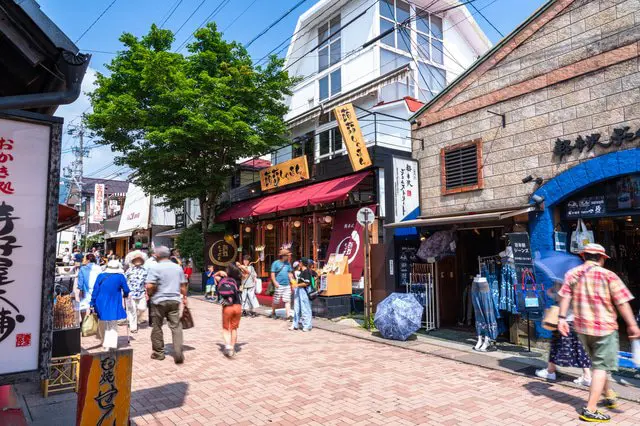
Ueda, Saku and Karuizawa are cities located in eastern Nagano Prefecture. They are home to various sightseeing spots including historical landmarks, hot springs, and art spots. Notable examples are Ueda Castle , which appeared in the NHK period drama "Sanadamaru ," as well as the Bessho Onsen and the Utsukushigahara Open-Air Museum .
Suwa/Ida (Ina/Chino/Komagane/Ida) Area

Nagano Prefecture’s southern region is home to the natural beauty of the Kirigamine plateau and Lake Shirakaba , as well as the famous Suwa Grand Shrine and the allegedly impregnable Takashima Castle . You don't want to miss out on the southern region when visiting Nagano!
Matsumoto (Matsumoto/Shiojiri/Omachi) Area

The western area of Nagano Prefecture is rich with picturesque scenery, sites like Kamikochi , Yarigatake , and Lake Suwa are all beautiful. If you want a superb view of the Japanese alps , we recommend visiting the Matsumoto area.
If you’re looking for more things to see, Matsumoto is also where you will find the symbol of Nagano, Matsumoto Castle , as well as the small galleries of Azumino , the scenic views from Hakuba , and the Takatojoshi Park .
25 Places You Should See in Nagano
1. matsumoto castle.
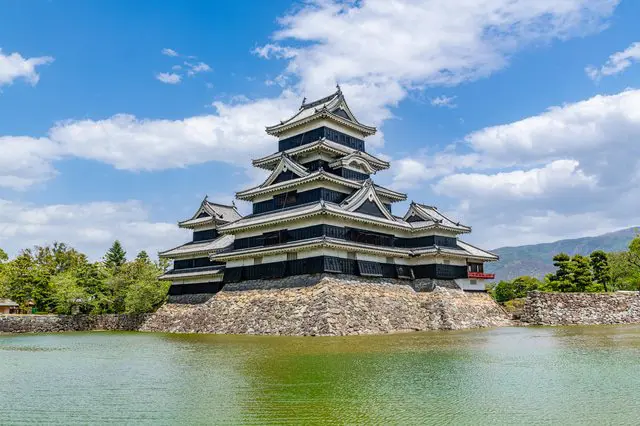
Designated a national treasure, Matsumoto Castle is famous for its magnificent keep tower, as well as for its jet-black exterior which brought it the nickname of "Crow Castle." The sight of the castle against the northern Alps filling the background in the distance makes for an ideal photo opportunity.
Matsumoto Castle can be visited all around the year, except for three days before New Year's, between 8:30 AM and 5:00 PM. (Admission costs 610 yen.)
Address: Nagano, Matsumoto, Marunouchi 4-1 Homepage: http://www.matsumoto-castle.jp/about

Matsumoto Castle

2. Zenkoji Temple
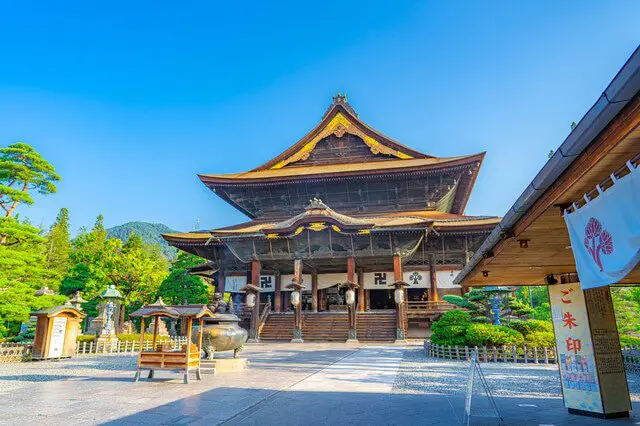
This non-sectarian temple in Motoyoshi-cho was built during the 7th century, and was a pillar of faith for both the masses and the ruling samurai class.
Zenkoji Temple is famous for having been one of the bases of operations for Uesugi Kenshin during his battles against Takeda Shingen, during Japan's Warring States period ( Sengoku era ).
Nowadays, restaurants and souvenir shops can be found down the Zenkoji Omotesando street, as well as the passageways to the temple. After paying your respects at the temple, how about taking a leisurely stroll in this area?
For an in-depth experience at Zenkoji Temple and its surrounding areas, taking a guided tour could be fun ! This one day tour includes a visit to the the temple, viewing the monkeys at Jigokudani Monkey Park, and some sake tastings.
Address: Nagano, Nagano City, Motoyoshi-cho 491 Homepage: http://www.zenkoji.jp/

3. Hakuba Village

Hakuba Village , located at the foot of Mt. Hakuba, is the perfect destination for people who love mountain sports like climbing and skiing. Hakuba served as a ski venue during the Nagano Winter Olympics back in 1998, and its Happo-one Ski Resort is the largest and oldest in Hakuba. Challenge yourself to some paddle boating, hot air balloon riding, or some rafting! You can also visit the Hakuba Art Museum , which has a collection of Japanese iris art prints.
Address: Nagano, Kita Azumi, Hakuba Village Homepage: http://www.vill.hakuba.nagano.jp/

White Horse Village
Hakuba Stay - Spend the Night Under Nagano's Starry Sky
Camping is another great activity to enjoy in the Hakuba area. For those looking to enjoy luxurious camping in the great outdoors, trying a glamping experience complete with marshmallow roasting and a concierge service, is highly recommended.
4. Happo-one Nature Study Course
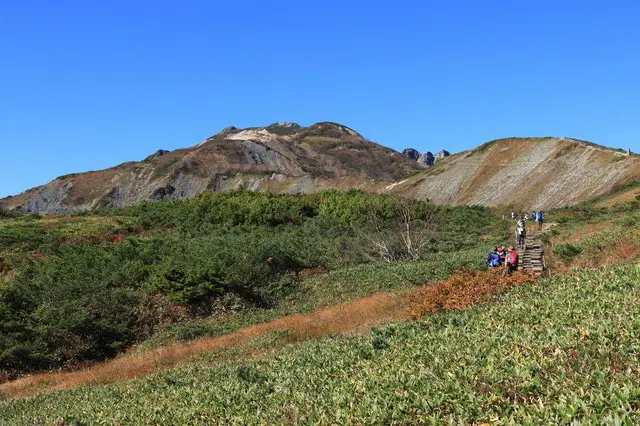
The Happo-one Nature Study Course is a popular hiking trail in the Hakuba area. Hikers can enjoy the picturesque landscape of the northern Alps while checking out the rare mountain vegetation along their hike.
Address: Nagano, Hakuba Village, Kitajo Happo Homepage: https://www.nsd-hakuba.jp/green/happo/kenkyu.html

Bafang Pond
5. Tsugaike Nature Park
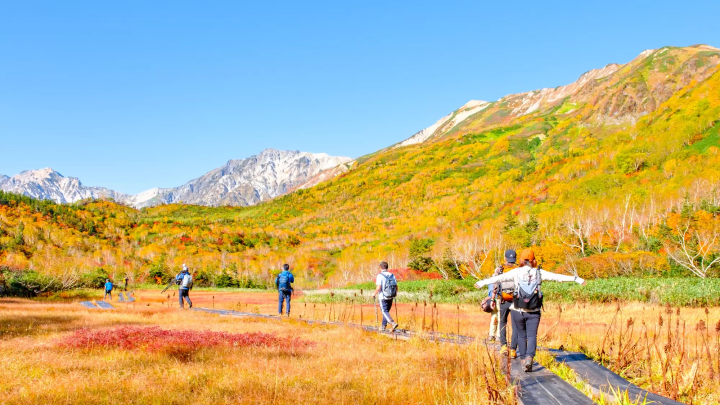
Pictures courtesy of pixta
Tsugaike is a beautiful nature park with high-elevation marshlands. With over five and a half kilometers of paths to walk, visitors are able to stroll around and admire Hakuba’s mountainous scenery and the unique vegetation that grows in this high altitude.
Address: Nagano, Kita Azumi, Otarimura Chikuniotsu Homepage: http://sizenen.otarimura.com/

Tsugaike Nature Garden
6. Kagami Pond
Kagami Pond is a pond surrounded by the Togakushi mountains. The pond’s mirror-like surface reflects the ring of mountains, creating a must-see spectacle!
Visit during the spring or summer to see a fresh green reflection, but absolutely visit during autumn to see the brilliant fall colors reflecting off the water!
Address: Nagano, Nagano City, Togakushi
7. Togakushi Shrine
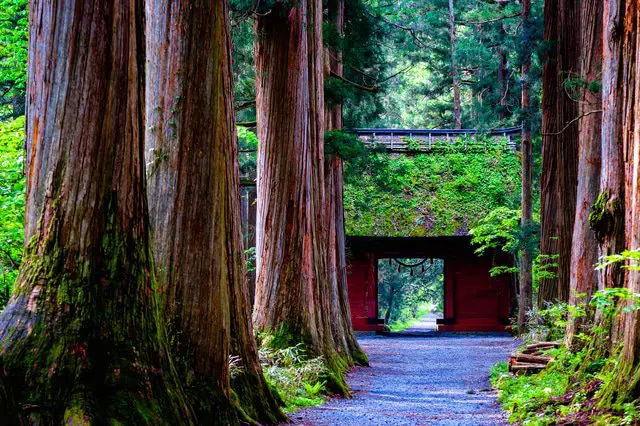
A shrine with over two millennia of history, Togakushi Shrine once prospered as a place for priests to pursue knowledge. A few of the highlights of Togakushi Shrine include a holy tree which is over 700 years old, a rear shrine that venerates Ame-no-Tajikarao-no-Mikoto, the Japanese god of legend; and the Kuzuryu Shrine, where the god of good harvests and cavities, Kuzuryu-Okami, is deified.
Address: Nagano, Nagano, Togakushi 3506 Homepage: http://www.togakushi-jinja.jp/
8. Daio Wasabi Farm (Japanese Horseradish Farm)
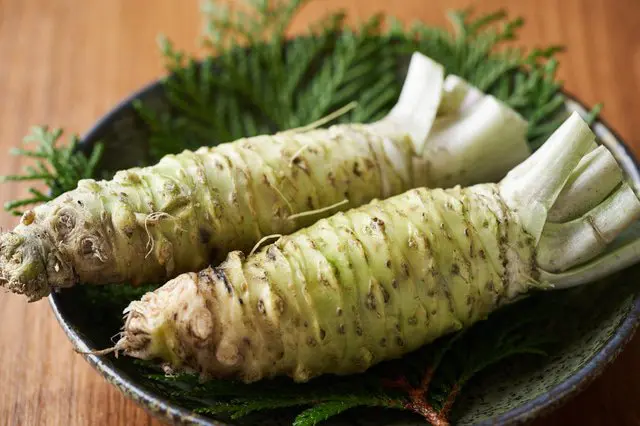
Established in 1917, visitors to Daio Wasabi Farm can visit their wasabi fields and can even try pickling some fresh wasabi for themselves. Another popular activity is rafting on a inflatable boat through the Tadegawa River which flows through the farm grounds. The farm also has a menu with plenty of food items which are exclusive to the farm, such as wasabi-don, real wasabi soft serve ice cream, wasabi croquettes, and more.
Address: Nagano, Azumino Shihodaka 1692 Homepage: http://www.daiowasabi.co.jp/

Daio Wasabi Farm
9. Lake Shirakaba

Lake Shirakaba is an artificial lake on Tateshina plateau, an area filled with beautiful Shirakaba trees. The lake is in Mt. Yatsugatake Quasi-National Park, where visitors can enjoy various outdoor activities like canoeing, paragliding, and more.
Homepage: Nagano, Chino, Kitayama, Lake Shirakaba 3419−3
10. Ikushima Tarushima Shrine

The Ikushima Tarushima Shrine venerates two gods: Ikushima-no-Okami, the god of birth, and Tarushima-no-Okami, the god of satisfaction. The shrine’s main sanctuary, built atop a small island floating in a lake, is notable for its superb architecture, even within Japan.
Address: Nagano, Ueda, Shimono, Naka-ikenishi 701 Homepage: https://www.ikushimatarushima.com/

Ikushimatarushima Shrine
11. Shinano Kokubunji Temple
Shinano Kokubunji Temple is a Tendai Buddhist temple in the Kokubun area of Ueda City. Its must-see attractions include the main temple building (Yakushi-do), the pagoda, the bell tower, the Kanon-do Hall and Daikokuten-do Hall. The three-story pagoda has been designated as an important cultural property by the national government.
Address: Nagano, Ueda City, Kokubun 1049 Homepage: http://www.avis.ne.jp/~kokubunj/

Shinano Kokubunji
12. Ueda Castle
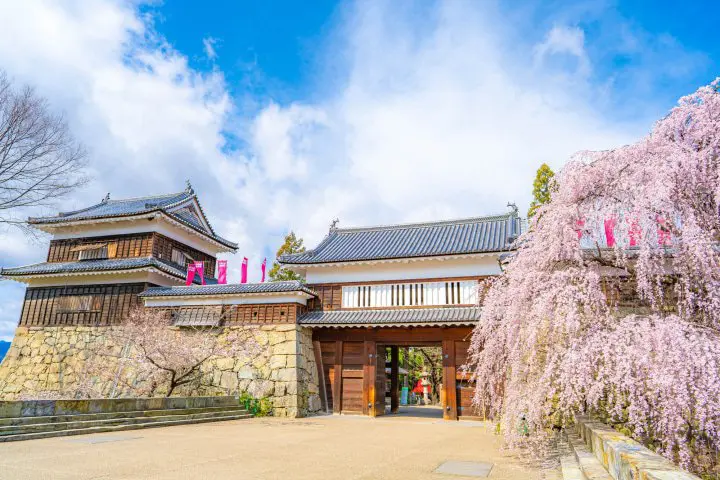
Ueda Castle has become the focus of renewed attention thanks to the NHK historical drama "Sanadamaru." Nobushige Sanada, the show’s protagonist, played a large role in the history of Ueda Castle, which was built in 1583 by his father Masayuki. In 1600, the Sanada Clan went to war with the Tokugawa Clan and were defeated at the Battle of Sekigahara. Their castle was also badly damaged as a result, unable to hold onto its former glory.
In 1626, the new lord of Ueda Castle, Hidehisa Sengoku, launched a project to rebuild the castle. The modern Ueda Castle that currently exists is a segment of the reconstructed castle, which served as a battleground for conflicts with the architect of the Edo period - Ieyasu Tokugawa - and also suffered damage wreaked by earthquakes and floods. Ueda castle is an integral part of Japanese history and is a must-see for visitors interested in the country's history.
Address: Nagano, Ueda, Ninomaru 6263-I Homepage: http://www.ueda-cb.gr.jp/uedajo/index.html
Ueda Castle Ninomaru Ruins
13. Bessho Onsen

Bessho Onsen's 100% natural hot spring resorts are said to be the oldest in the Shinshu area, the traditional name of Nagano Prefecture. There are also museums and temples in the vicinity, making it a great destination for a two-day getaway. While most of the hot springs here feature indoor installations for inn guests, there are also three outdoor baths which you can use even if you are not staying at an inn, all of which just cost 150 yen for admission. There are also two other hot springs which have free admission.
Address: Nagano, Ueda, Bessho Onsen 1853-3 Homepage: http://www.bessho-spa.jp/

Bessho Onsen Station
14.The Stone Church (Ishi no Kyoukai)
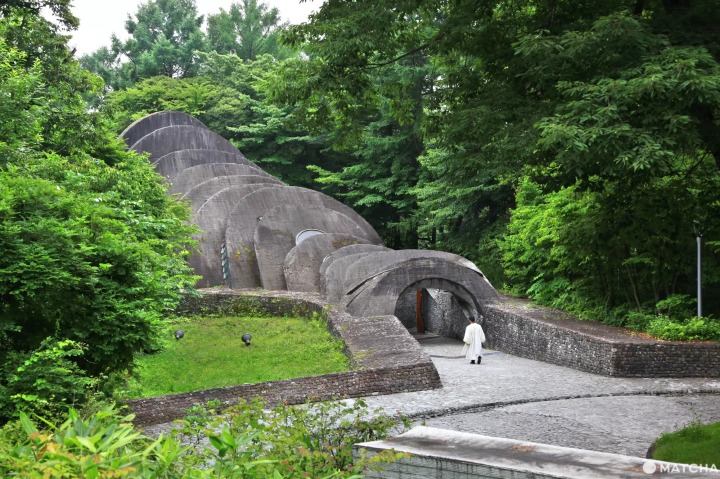
Pictures courtesy of pixta The Stone Church was designed by American architect Kendrick Bangs Kellogg, taking inspiration from the nature of Karuizawa. It is a fusion of stone, light, water, greenery and wood, which attracts so many people. Some come here for their weddings. The entire church is made of large arcs of stone and glass. Depending on the time of day, the sun illuminates the building, creating a different look.
Address: Nagano, Karuizawa-cho, Hoshino Access: 5 minutes by taxi from Naka Karuizawa station, 15 minutes by taxi from Karuizawa station
15. Karuizawa Picturebook Museum

Pictures courtesy of pixta Karuizawa Picturebook Museum exhibits original picture book illustrations and documents by modern or contemporary authors. "The Peter Rabbit™ Secret Room" is a permanent exhibition that gives visitors a peek behind the scenes of Peter Rabbit™. The museum also has a Picture Book Library with over 1,800 picture books, mainly from Western countries, for adults and children to enjoy.
Address: Nagano, Kitasaku-gun, Karuzawa-cho, Nagakura 182 Access: 10 minutes by taxi from Karuizawa station

Karuizawa Town's Best 26 Restaurants in Japan 2024
16. Nozawa Onsen
Nozawa Onsen in Nozawa Onsen Town has 13 different open-air baths available to the public, which locals make use of daily. While admission is free, there are donation boxes at each one of the baths, so drop in some coins according to how satisfied you were. Make sure to learn about proper bathing etiquette when using the hot springs.
Address: Nagano, Shimotakai, Nozawa Onsen Town Homepage: http://nozawakanko.jp/
Nozawa Onsen Sotoyu Oh-yu

Bath Culture In Japan: What Every Visitor Should Know Ahead Of Time
17. Jigokudani Monkey Park
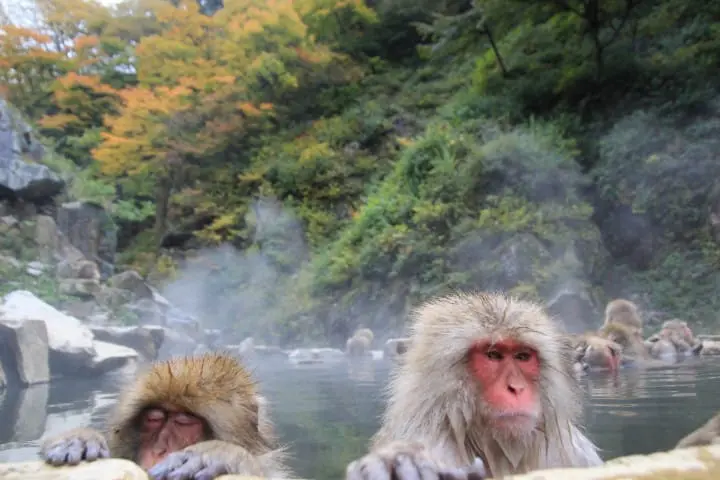
Jigokudani Monkey Park is a park that protects wild Japanese monkeys and keeps them under observation. Come visit during the wintertime for the main attraction, where you can see the monkeys of the park taking dips in the hot springs!
Address: Nagano, Shimotakaido, Yamanouchi-machi, Hirao 6845 Homepage: http://jigokudani-yaenkoen.co.jp/

Jigokudani Wild Monkey Park
18. Lake Suwa
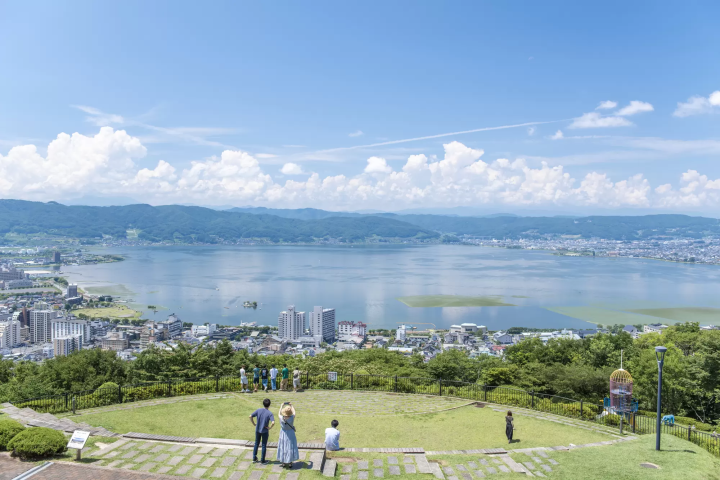
Pictures courtesy of pixta Lake Suwa borders the territories of Okaya City, Suwa City, and Shimosuwa Town. Whooper swans and tundra swans are a few of the native birds that inhabit this lush habitat, which is also home to various species of fish and shellfish. You can also take a pleasure cruise around the lake.

19. Takato Castle Park
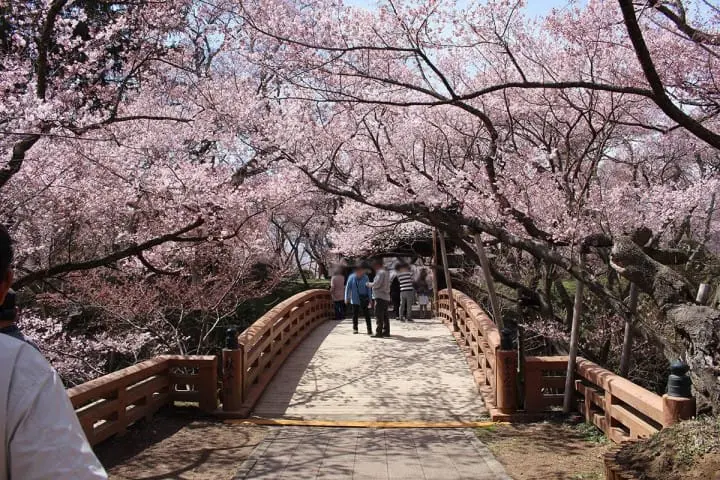
Takato Castle Park consists of the Takato Castle and the area surrounding the castle. The castle grounds are home to 1500 higan cherry trees, a unique breed of sakura. Crowds of people come to see these trees blossoming during the annual sakura cherry blossom festival.
Address: Nagano, Ina, Takato, Higashi-Takato Homepage: http://inashi-kankoukyoukai.jp/contents/archives/26702

Takato Castle Ruins Park
20. Komagatake Ropeway

The Komagatake Ropeway connects Miyada Village in Kami-ina District with Komagane City. The ride on the ropeway takes about seven minutes and 30 seconds, and is a straight shot for more than two kilometers over the mountain trails. From the windows of the car, you can get a spectacular view of Mt. Fuji, the southern Alps, Mt. Mitake, Mt. Norikura, and the northern Alps.
Address: Nagano, Komagane, Ako 759-489 Homepage: https://www.chuo-alps.com/
21. Kamikochi
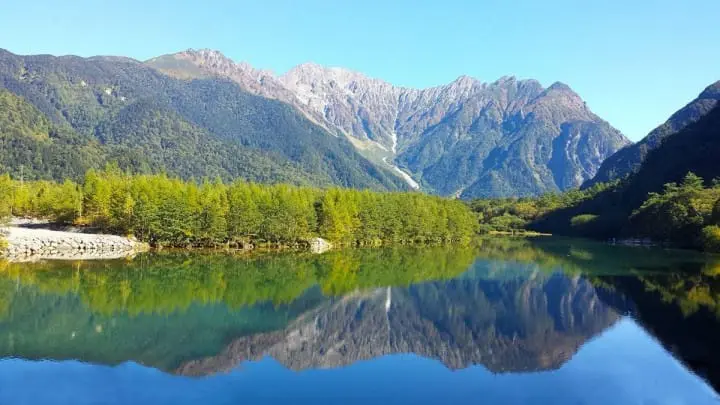
Designated as a national cultural property back in 1952, Japanese people are well-acquainted with Kamikochi's deep mountain resort, which is said to have been on the ocean floor around 300 million years ago. Eons of mountain activity and river erosion have formed the mysterious natural beauty of the area, which is also known as the “Descent of Gods,” a homonym for the name Kamikochi in Japanese kanji.
Address: Nagano, Matsumoto, Azumi Kamikochi Homepage: http://www.kamikochi.or.jp/

22. Okuhida Onsen Town
Okuhida Onsen Town has nearly 20 hot spring facilities, including the Shin-Hotaka Onsen with river-sourced springs, and Hirayu-no-Mori with 16 open-air baths on a 50,000 square-meter plot of land. The Shin-Hotaka Ropeway and the Hida Grotto, two tourist spots, are located close by.
Address: Gifu, Takayama, Okuhida Onsen-go Homepage: http://www.okuhida.or.jp/
23. Goshikinoyu
Depending on the climate and time of year, the hot spring waters at Goshiki Onsen can be either clear, white, blue, green, or grey, which is how the onsen got its name Goshiki (five-color). The feeling of soaking in an open-air bath as you gaze up at the beauty of the Shinshu mountains is nothing short of spectacular.
Address: Nagano, Kamitakai, Takayama, Okuyamada, Goshiki Onsen Homepage: https://goshikinoyu.nagano.jp/
24. Mt. Sannosawa
On Mt. Sannosawa you'll find that many unique plants and other vegetation, such as Edelweiss flowers, thrive in the high-altitude environment of this mountain. From the summit, you can get a view of several mountains in the area including Mt. Kisogoma, Mt. Utsugi, Mt. Norikura, and Mt. Ontake.
Address: Nagano, Kiso, Agematsu-machi, Okuwamura
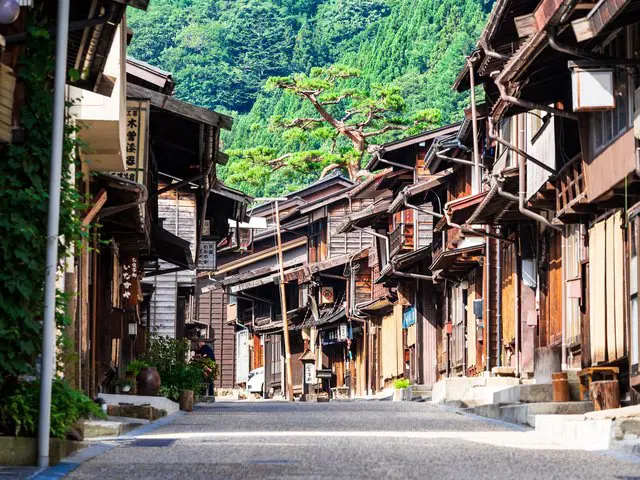
During the Edo period of Japan, Nagano’s Kisoji road was a key route connecting old Edo (now Tokyo) with the city of Kyoto. The inns and tea houses lining the road lifted the spirits of tired travelers. Even in modern times, some of the buildings retain their classic appearance, creating a doorway back in time.
Address: Nagano, Kiso, Kiso-cho Homepage: http://www.kisoji.com/
Top 10 Ski Resorts in Nagano

If you’re visiting in Nagano in the winter, you’re going to want to hit the slopes! We’ll introduce the best area snowy spots for skiers and snowboarders.
1. Nozawa Onsen Ski Resort
This ski resort features 100% natural snow, and the Hikage main slope is fully equipped with amenities, including a ski school, ski center, nursery, kids’ park, and more. During the season, there is a free shuttle which goes from the village to the ski resort. After you are finished with your ski runs, a long soak in one of Nozawa Onsen’s hot springs is the perfect way to relax and wind down.
Address: Nagano, Shimotakai, Nozawa Onsen Town, Toyosato 7653
Homepage: https://en.nozawaski.com/ Ski Season: Late Nov. to early May

2. Kurohime Plateau Snow Park
Featuring all natural snow, this park’s 11 courses feature a plethora of variations, making them excellent for skiing. During the offseason, the ski slopes transform into a flower park, with cosmos, dahlias, and more flowers in full bloom.
Address: Nagano, Kamiminochi, Shinano-machi, Nojiri 3807 Ski Season: December 21 to March Homepage: http://www.kurohime-kogen.co.jp/
3. Togakushi Ski Resort
The appeal of this ski resort is the grand sight of the Togakushi mountains in the background as you race down the slopes. The ski resort is also fully equipped with a nursery, nap areas, changing rooms, break spaces, and a kids’ park, making it great for a family ski getaway!
Address: Nagano, Nagano City, Togakushi3682 Homepage: http://www.togakusi.com/
4. Shiga Kogen Plateau
One of Nagano’s most popular ski resorts, Shiga Kogen is actually comprised of 19 different ski areas of varying sizes and is said to be one of the largest in Japan. The natural powder snow has received great reviews for its quality for skiing!
Address: Nagano, Shimotakai, Yama-no-Uchi, Shiga Kogen Ski Season: Late Nov. to end of May Homepage: https://shigakogen-ski.or.jp/english/
5. Tsugaike Ski Resort
While Tsugaike is relatively compact in comparison to other resorts, you can enjoy some rarer activities next to the regular ski slopes: snow biking, snowshoeing, heli-skiing, and snowboarding. This resort has 10 courses in total that you’ll be able to enjoy in the all-natural snow.
Address: Nagano, Kita-Azumi, Otari Village, Chikuniotsu Ski Season: starts December Homepage: https://www.tsugaike.gr.jp/snow
6. Hakuba Goryu Ski Resort
The vast Hakuba Goryu Ski Resort impressively has over 45 courses tailored to various skill levels, so that ski beginners and experts alike can fully enjoy the slopes together. There are also ski lessons taught by international instructors, with the lessons conducted in English and German.
Address: Nagano, Kita-Azumi, Hakuba Village, Kamishiro 22184−10 Ski Season: December to March Homepage: http://www.hakubagoryu.com/
7. Hakuba Happo-one Ski Resort
Well-regarded for its long ski runs and the great quality of its snow, Hakuba Happo-one Ski Resort is one of the biggest ski resorts in Japan. Race down the slopes as you behold the beautiful mountain surroundings.
Address: Nagano, Kita-Azumi, Hakuba Village, Oazahokujo 5713 Ski Season: December to May Homepage: http://www.happo-one.jp/
8. Fujimi Panorama Resort
Fujimi Panorama Resort is a popular resort with long courses and even offers ski and snowboard lessons. During the springtime, visitors can enjoy trekking and mountain biking in the area.
Address: Nagano, Suwa, Fujimi-machi, Fujimi 6666−703 Ski Season: December to April Homepage: http://www.fujimipanorama.com/snow/
9. Hakuba Cortina Ski Resort
Hakuba Cortina Ski Resort’s slopes, laden with powdery natural snow, are the main attraction for the groups of tourists who come to visit. You can get an amazing view of the five mountains in Nagano’s Hokushin region, including Mt. Ushirotateyama and Mt. Myoko.
Address: Nagano, Kita-Azumi, Otari Town, Chikuniotsu 12860−1 Ski Season: December to April Homepage: http://www.hgp.co.jp/cortina/ski/
10. Lake Shirakaba Royal Hill
Operated by the Lake Shirakaba Royal Hill Hotel, this ski resort uses man-made snow to keep the weather from influencing snow conditions. Guests can ski down the slopes from starting from early December to the end of March. The hotel is directly in front of the slopes, making it very convenient to get skiing quickly.
Address: Nagano, Chino City, Kitayama 419 Ski Season: mid-December to April Homepage: http://www.royalhill.co.jp/
Dining in Nagano
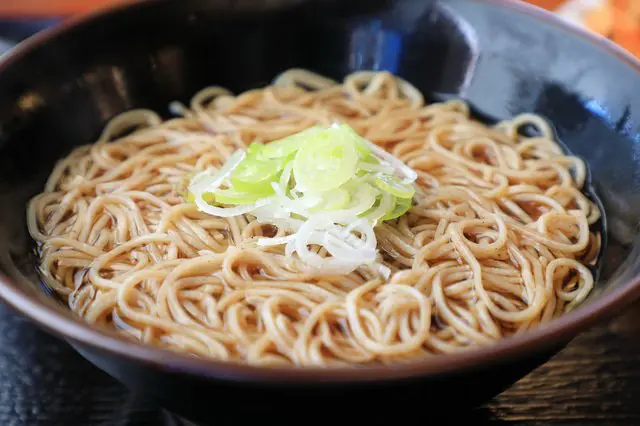
Nagano cuisine is famous for its soba (buckwheat) noodles; Shinshu soba and Togakushi soba both exist as superb examples of the natural flavor profile of soba. If you have the chance, by all means, visit Nagano’s soba towns and try out the authentic noodles for yourself. There are also cafes that serve galette cookies made using soba flour.
Horse meat is another dish with a long and fond history in Nagano. Basashi (raw horse meat) is particularly well-regarded for its tenderness and its lack of a strong odor.

Pictures courtesy of pixta Nagano also boasts the presence of its leading Japanese wineries , such as St. Cousair, Azumino, Izutsu, Obuse, and Shinano . When visiting the wineries, you can take tours of grape vineyards and the wine factories, and also sample some of the wine of Nagano.
Nagano Souvenirs
Nagano Prefecture’s notable exports are apples and wasabi . Whole apple pies from Chikuma Seika, and wasabi chocolates and wasabi rice crackers from the Daio Wasabi Factory , are perfect and delicious souvenirs for you to pick up during your travels.
We recommend trying oyaki from Irohado, a dumpling made by wrapping soba dough around a filling such as Nozawa vegetables, wild vegetables, or anko , then grilling the dumpling. There are also exclusive seasonal varieties. Enjoy the simple taste of Japan with an oyaki.
If you want to find some more personal souvenirs, Nagano also has many hand crafted goods. Beautifully grained Nagiso wooden crafts made with lathes, elegant Kiso lacquerware, 400-year old Uchiyama paper, and the bamboo pieces made in Togakushi and Ina are all famous items that make excellent souvenirs.
Nagano Hotels, Weather, and What To Wear

Pictures courtesy of pixta While Nagano's onsen areas like Togakushi have traditional onsen inns, getaway destination areas like Hakuba are rife with Western-style vacation villas. You can expect to pay around 10,000 yen per night to stay.

There are also several business hotels around Nagano Station where rooms start from 6,000 yen. Choose the accommodations that are right for you, depending on your budget and where you want to go.

Weather And Clothing
With its relatively high elevation and low humidity, Nagano's weather has cool summers and cold winters. Summer nights can get a bit chilly. It’s a good idea to bring a shawl or a thin outer garment.
You will absolutely need a down coat, gloves, and a hat during the cold winter months, and if you plan on going to the mountains for skiing, it would be prudent to get spiked snow boots. It is also said that snow glare can cause UV damage to the eyes, so bringing sunglasses is recommended.
If you’re visiting Nagano in winter, prepare for lots of snow and cold temperatures, and enjoy your travels!
Traveling Around Nagano Prefecture
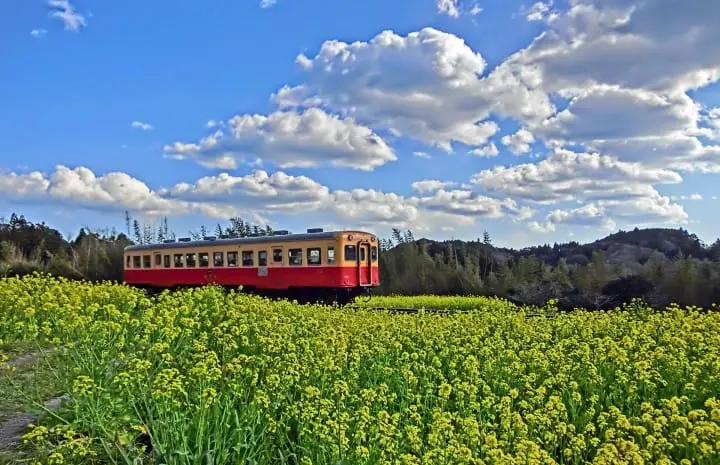
We’ll explain the transportation options for getting around Nagano Prefecture.
JR and the Nagano Electric Railway Company (Nagaden) operate routes throughout most of Nagano. However, in secluded mountain areas, particularly hot spring resorts, train access is infrequent, so renting a car is highly recommended if you want to travel leisurely your own pace.
You can take buses from Nagano Station to visit sightseeing destinations like Zenkoji, Togakushi, the ancient Kawanagajima battlefield, and Matsushiro.
・The City Central Loop Bus, Gururin-go
This bus runs a loop of the area between Nagano Station’s Zenkoji exit to Zenkoji Temple itself and is very useful for sightseeing within Nagano City.
・The Tourism Train, Rokumon
If you’re traveling in Nagano, by all means, take a ride on Shinano Railway’s Rokumon . This enjoyable train runs the route from Karuizawa to Nagano, where Ueda and Zenkoji are located. You can appreciate the scenery while you dine on a delicious meal prepared by one of Karuizawa’s famous restaurants.
If you want to get a ticket plan with a meal included, you should make a reservation one week in advance (earliest 2 months in advance). The Japanese course and western cuisine course costs 15,800 yen each, or the light lunch plan is available from 9,800 yen. You can reserve tickets online or you can buy a ticket for the reserved seating areas at any ticket counter. If you only want a standard passenger ticket, there is a ticket counter aboard the train which you can use.
The train’s warm interior space is constructed using Nagano-harvested lumber. Enjoy a relaxing ride on the Rokumon while traveling around Nagano!
By Rental Car or Bicycle
By renting a car or bicycle, you can leisurely enjoy Nagano’s beautiful vistas. Be careful in the winter, as snow can be hazardous. Make sure you don’t forget to affix chains to your tires.
Bargain All-You-Can-Ride Passes
You can save a lot of fare money when traveling in Nagano by using the following passes.
Zenkoji & Togakushi 1-Day Ticket
This pass which costs just 2,900 yen for adults and 1,450 yen for children, allows holders unlimited rides on the bus routes operating from Nagano Station to Togakushi and Zenkoji Temple.
You can buy it at the ALPICO Kotsu Nagano Station Information Center. https://www.alpico.co.jp/en/zenkoji-togakushi-1day-ticket/
2 Day Free Passport
For those looking to travel at a more leisure pace, a 2 Day Free Passport or 3 Day (2 Day Free Passport plus ONE) tickets are available. These tickets allow you unlimited rides between Matsumoto, Kamikochi, Norikura, and Shirahone Onsen. The 2 day passport costs7,500 yen for adults and 3,750 yen for children and the 3 day passport costs 9,000 yen for adults and 4,500 yen for children.
https://www.alpico.co.jp/en/2day-free-passport/
4-Day Alps WIDE Free Passport
For those that really want to travel across the Nagano regions, the 4-Day Alps WIDE Free Passport is recommended. This pass allows you unlimited rides to destinations including Matsumoto, Kamikochi, Shirakawa-go, Shinhotaka, Takayama, Hida-Furukawa, Norikura, Hirayu Onsen, and Shirahone Onsen. The pass including a return ticket for the Shinhotaka Ropeway costs 13,000 yen for adults and 6,500 yen for children, between April 14 - November 15. The tickets are slightly cheaper between November 16 - April 13 costing 11,000 yen for adults and 5,500 yen for children. You can also just get a normal 4 day pass costing 11,000 yen for adults and 5,500 yen for children between April 14 - November 15 and 9,000 yen for adults and 4,500 yen for children between November 16 - April 13.
https://www.alpico.co.jp/en/alps-wide-free-passport/ *All children tickets are for children ages under 12 years of age. Children above the age of 12 will need an adult ticket.
How to Get to Nagano
The hokuriku shinkansen is the fastest option.

The quickest way to get to Nagano Station from Tokyo Station is the Hokuriku Shinkansen . If you have the JR Pass , traveling between Nagano and Tokyo, as well as many other destinations on the bullet train, will cost much less money.
The Hokuriku Shinkansen line runs from Kanazawa Station in Ishikawa Prefecture to Tokyo Station, passing through Nagano Prefecture, making it easy to access Nagano Prefecture.
The Hokuriku Shinkansen line has three kinds of trains: Kagayaki, Hakutaka, and Asama, all of which stop in Nagano Prefecture.
Kagayaki is the fastest of them, making the journey to Nagano Station in just one hour and 20 minutes from Tokyo. A reserved seat ticket costs around 8,340 yen.
Highway Buses Are a Budget-Friendly Alternative

Highway buses run from Shinjuku Station’s south exit to Nagano Station. Fares can range from 1,000 yen to 5,000 yen and generally, you can expect to pay around 3,000 yen. The trip is 3 hours and 45 minutes to 5 hours, so you can get to Nagano by lunchtime if you take a morning bus.
Highway Bus Ticket Reservations: WILLER TRAVEL>
Accommodation Reservations: Booking.com>
Get a Rental Car If You Want to Venture Off the Beaten Path

Renting a car is a great idea. The drive to Tokyo to Nagano is not far, and won’t consume much gasoline.
Assuming that you leave from Shinjuku Station and take the highway, you can get to Nagano Station in 3 hours and 20 minutes at the most. You can expect to spend an estimated 5,000 to 6,000 yen on highways; add in the cost of gas and the rental car fee, which can cost 5,000 to 8,000 yen per day. Click here to search and book a rental car.
Your itinerary will affect how you decide to spend your travel money. Enjoy a better trip by choosing the best transportation method for you.

Matsumoto / Hakuba

The MATCHA editorial department. Our articles feature useful travel information for visitors to Japan, from how-to guides to recommended places to visit.
Related topics
Top articles.

Karuizawa: Top 15 Things to Do in 2024, Shopping, Hotels, and Access

Related Article

Tokyo Travel Guide 2024: Top 35 Things to Do

Osaka: 52 Things to Do and Places to Visit

Kyoto: 50 Things to Do, Places to Visit, Hotels, and Travel Tips

Hokkaido: 40 Fun Things to Do, Places to Visit, Events, and More

9 Must-Do Activities In Matsumoto - Explore History And Nature!

Hakuba Guide 2023-2024: 8 Best Ski Resorts And Sightseeing Spots

Okayama and Kurashiki Travel Guide: Sightseeing, Local Food, Festivals

Hida Takayama Travel Guide - Shirakawa-go, Beautiful Views, Onsen, And More!
Start planning your trip
Special Features

Popular Searches
Latest news.

Showa Kinen Park Flower Festival 2024: Enjoy Nemophila, Tulips, and More!

A Must for Nature Lovers! Win a Free Stay at Unzen Amakusa National Park

A World of Light and Color! Van Gogh Alive in Japan 2024

Cherry Blossom Light-up in Tokyo! Yomiuri Land's Jewellumination

Cherry Blossoms and Sky Lanterns! Aichi Hanami Lights 2024

Japan's Public Holidays and Long Weekends in 2024

Aeon Mall Okinawa Rycom: A Shopping Mall Featuring a Resort Aura

Suica and Pasmo IC Cards: Prepaid Transportation Passes in Japan

Riding Taxis in Japan: The 6 Best Apps to Grab a Cab

How to Travel to Kyoto From Osaka: The Fastest and Cheapest Ways
New articles.

A must-visit for tourists in Oita! The breathtaking flower fields of Kuju Flower Park

Kokeshi Dolls: Meaning, Hands-on Workshops, and Where to Buy

How to enjoy the four seasons at Kuju Flower Park


~Traditional Japanese beauty at your side~【MOTTETE】

No door? A hidden classic bar in the downtown area, "Bar Rack Spirits"
- WHAT IS “NAGANO TRIP”
- 広告掲載をお考えの企業・自治体さまへ

- THINGS TO DO
Best 46 Things To Do in Nagano in Japan
- Published 2020-02-23
- Modified 2020-04-13
- Categories THINGS TO DO

Nagano is Japan’s most attractive tourist destination. There are many things to enjoy, such as nature, history, culture, art, and hot springs. This article summarizes 46 places and things you want to visit in Nagano Prefecture. Please refer to it as it has been compiled for each with whom of travel, way of transportation, and genre!
Enjoy Walking and Trecking in Nagano!
1, togakushi shrine|nagano city.

Togakushi(戸隠) is visited about 1.5 million tourists every year , so popular destination in Nagano. There is 5 shrines are called Togakushi Shine (Togakushi jinja/戸隠神社). These shrines were constructed for 2000 years ago. This place is famous as a power spot. If you can all shrines, probably you will get good things.
→The Best Things to do in Togakushi Shrine in Japan-
2, Nakasendo Trecking|Many towns in Nagano prefecture

Tsumago-juku post town (妻籠宿) is located in Nagiso town in Nagano. During the Edo period, traveler, merchant, administrator used transport Edo (now Tokyo) with Kyoto. We can look at a state of remaining Japanese traditional townscape and feel a historical atmosphere.
→Nakasendo Magome to Tsumago Trail Hiking in Japan
→Tsumago Juku Old Town Guide
3, Hakuba Happo One Mountain|Hakuba village

Hakuba Happo One Mountain is popular trecking course in Nagano. Probably Hakuba’s image is “Winter Resort” in Nagano. But we want to recommend during the green season, summer and autumn. A summertime in Hakuba is a beautiful contrast among green, blue, white. You may feel confortable for trecking at Happo One Mountain.
→The Best Guide in Hakuba, Japan-Access, Each season’s activitiy. Onsen, Accommodation and much more-
→Hakuba Happo-one and Happo-ike Pond in Nagano, Japan
Enjoy rental car travel in Nagano!
4, lake shirakoma|sakuho town.

Shirakoma Lake (Shirakoma Pond) (白駒池) is located in the east area in Nagano prefecture. Recently, Shirakoma lake is well known as a represent photogenic place in Nagano. Visitor can look a sea of clouds and daylight at morning from Takami Ishi where is 40 minutes by walk from Shirakoma lake.
→Shirakoma Lake
5, Azumino|Azumino city and around towns

Azumino city has the field of really beautiful water that is sprung out from the Northern Alps (Japanese Alps) . We recommend places where are Daio Wasabi Farm, Azumino Chihiro Museum, Ikeda town!
→Daio Wasabi Farm
→Things to do in Azumino, Northern Alps Area in Nagano
6, Lake Nojiri|Shinano town

Lake Nojiri (野尻湖) is located in Shinano town, Northern area, Nagano prefecture. The second biggest lake in Nagano prefecture. Lake Nojiri is known well to discover the fossil of Nauman elephant.
→Lake Nojiri
Popular sightseeing places where is near Shinkansen station in Nagano
7, zenkoji temple|nagano city.

Zenkoji temple (善光寺) is one of the most famous temples in Japan. The main shrine of Zenkoji which was built in 1707, has registered a national treasure. There are many hospices and eating establishments and souvenir shops aside from the main street to the main shrine.
→Zenkoji Temple in Nagano, Opening Hours? Underground Passage?
8, Ueda Castle Ruin|Ueda City

Ueda Castle Park is the most popular sightseeing place in Ueda city. The castle was built in the 16th century by Sanada Masayuki who is a very popular samurai “Sanada Yukimura”‘s father.
→More Detail about Ueda Castle Ruins
9, Karuizawa|Karuizawa Town

Karuizawa (軽井沢) is one of the most popular resorts located only one hour from Tokyo. Karuizawa has been known as a somewhere cool to stay and relax since about 1886.
→KARUIZAWA: A RESORT TOWN IN MOUNTAIN
Kids friendly destinations in Nagano
10, nawate street|matsumoto city.

Nawate street (繩手通り) is town street that are characteristic shops to form a line in Matsumoto city. Visitor can arrive about 10 minutes from Matsumoto station, 5 minutes from Matsumoto-jo castle. Nawate has a symbol character that is “Frog”. If you like a frog, you must visit this street. Every year, the frog festival is carried out.
→THINGS TO DO IN MATSUMOTO・KISO AREA, NAGANO, JAPAN
11, Shirakaba Resort Ikenotaira FamilyLand

There is a big theme park “Shirakaba Resort Ikenotaira FamilyLand (白樺リゾート池の平ファミリーランド)” near Lake Shirakaba. The amusement park all generations can enjoy. Children playing in the amusement park. Grandparents enjoying taking a walk or viewing the landscape. If you visit with children or Grandchild, Why not stopping by?
→TATESHINA TRIP FOR e-Bike IN NAGANO, JAPAN.
12, Chihiro Art Museum|Matsukawa village

Chihiro Art Museum Azumino (安曇野ちひろ美術館) was built in 1997, in Matsukawa village, Nagano. “Chihiro” is one painter’s first name, the full name is “Iwasaki Chihiro”. Her drawing has a nice feeling, characteristic power, and kindness.
→ART & CULTURE: 7 THINGS TO DO IN NAGANO
Romantic destinations for Couple in Nagano
13, atera gorge|kiso town.

Atera Gorge (阿寺渓谷) is located in Kiso area in Nagano prefecture. The gorge is constructed for strangely shaped rocks and crystal clear rivers. Of course, visitors can put body in the river! Visitors can enjoy the collaboration between autumn leaves and rivers in autumn as well as summer.
14, Iiyama Kamakura Village|Iiyama city

Iiyama Snow Festival (飯山雪まつり) is a big event in Iiyama city. Every year this festival is held two days in February. There are many snow houses, snow sculptures, Lanterns in the festival place. At night, all snow houses are lighted-up from inside. Its landscape is so wondrous.
→Best Places to Visit in February in Nagano, Japan 2020
15, Experience Making Tombo-dama (Glass Beads)

Tombo-Dama (とんぼ玉) is a hole opens glass beads. There are many tombo-dama workshop studio in Nagano. Visitor can have making experience tombo-dama in almost Japanese workshop studio. A visitor gets the original tombo-dama in the world. Below is our recommended workshop studio. Let’s try!
Things to do and Sightseeing places in spring season in Nagano
16, takato castle park cherry blossom festival|ina city.
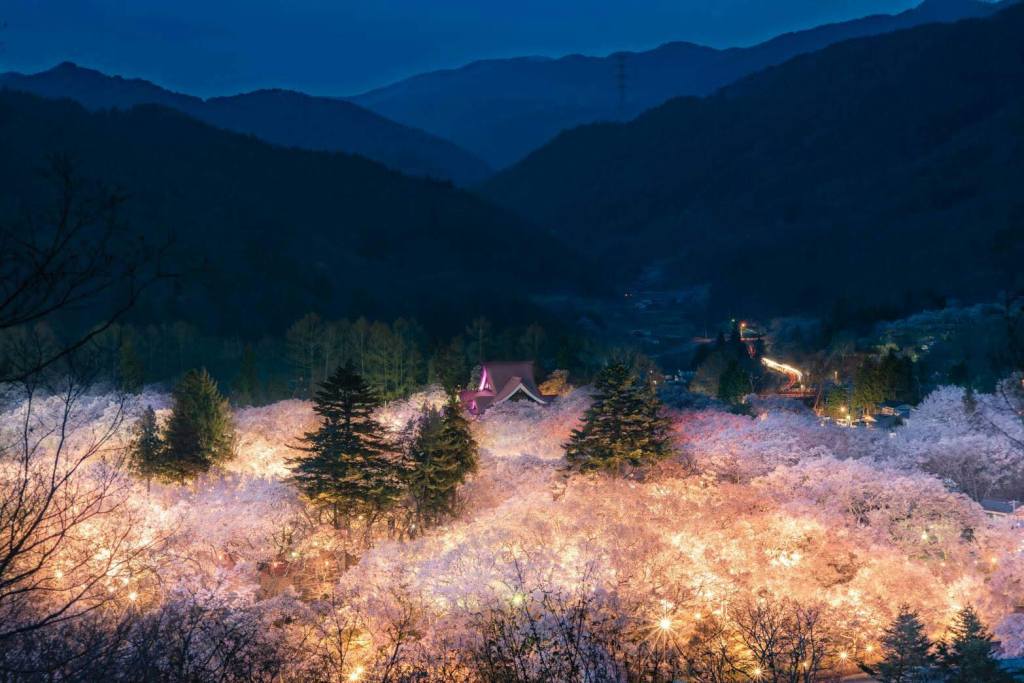
Cherry Blossom Festival is held in Takato Castle Park every spring. This Park’s cherry blossom is chosen as the best 3 beautiful cherry blossoms in Japan! Visitors can experience to look at a lot of cherry blossoms and many historical monuments.
→Takato Castle Park Cherry Blossom Festival in Japan
→Tips of cherry blossom in Japan-How long? When best season?-
→The best Cherry blossom spots all around Japan
17, Tateyama Kurobe Alpine Route|Omachi city

The featured attractions are unique and spectacular routes along the Northern Japan Alps. Visitors can enjoy varying vistas during different seasons of the year. You can traverser by some hands of transportations such as a ropeway and trolleybuses. Especially, in 2020, the entire route is opening from 15th April to 30th November.
→The Best Guide of Tateyama Kurobe Alpine Route 2020
18, Nanohana blossoms|Omachi city

In spring, the plateau is covered with yellow Nanohana blossoms. The areas of Nagano famous for Nanohana are Iiyama city(Nanohana Park) and Omachi city(Nakayama plateau).
→Must see Event and Landscape in Japan in Spring
19, Obasute terraced rice-fields|Nagano city

Rice fields filled with water are traditional Japanese spring landscape. The area around Obasute station in Chikuma city is also famous for its night scene and beautiful moon. The history goes back to about 1,200 years ago, and many historical great people compose a tanka.
→More sightseeing places of Nagano in spring
Things to do and Sightseeing places in summer season in Nagano
20, togakushi shrine|nagano city.

In Togakushi, There is 5 shrines are called Togakushi jinja (戸隠神社). These shrines were constructed for 2000 years ago. This place is famous as a power spot. If you can all shrines, probably you will get good things.
→The Best Things to do in Togakushi Shrine in Japan
21, Kumoba Pond|Karuizawa Town

Kumoba-Pond (雲場池) is one of the 3 major attractive spots in Karuizawa. It is a beautiful spot that reflection of the forests in the water of the lake. Kumoba Pond is called Swan Lake. Since visitors can look at many kinds of birds.
→KUMOBA POND: SWAN LAKE IN KARUIZAWA
22, Hakuba Iwatake Mountain Resort|Hakuba village

Iwatake mountain is well known as a winter season resort. Today, we will report Hakuba Iwatake Mountain Resort that is opened while spring to autumn. Visitors can look at a panorama view by only one gondola.
→HAKUBA IWATAKE MOUNTAIN RESORT
23, Senjojiki Curl|Komagane city

Senjojiki Cirque(千畳敷カール) is a popular alpine landscape in Komagane city. There are many kinds of alpine wildflowers, alpine animal. In the summer season, there is a field of a flower as far as the eye can see. Kenga-ike Pond is a popular photo spot. Let’s try to take a photo that mountain is reflected in the pond.
→SENJOJIKI CIRQUE AT THE CENTRAL ALPS
24, Sora terrace|Yamanouchi town
.jpg?resize=1024%2C681&ssl=1)
Sora Terrace (空テラス)is located in Ryuoo Ski Park, Yamanouchi-town. In the summer season, visitor can enjoy a sea of clouds, sunset, a sky full of stars. Especially, Sora terrace is famous as the sea of clouds spot. If you want to see, you should go to the evening (June to August: 5 p,m~/September to November: 4 p,m~).
SORA terrace in Nagano, Japan
→Nagano’s Must Beautiful Scenic Views
Things to do and Sightseeing places in autumn season in Nagano
25, akiyama-go valley|sakae village.

Twelve villages aside the 405 national roads are called Akiyama-go valley(秋山郷). There are holy forests, traditional culture, and beautiful autumn leaves. Visitors can look at the original scenery of Japan.
→NAGANO IN THE AUTUMN TIME
26, Yonago-dai-bakufu Fall|Suzaka city

Yonago-dai-bakuhu Fall (米子大瀑布) is located in Suzaka city. This fall is selected a 100 selections of waterfalls in Japan. The set of Fudo-taki-waterfall (不動滝, 85 meters) and Gongen-taki-waterfall (権現滝, 80 meters) are called Yonago-dai bakuhu.
27, Okususobana Valley|Nagano city

Okususobana Valley(奥裾花渓谷) is famous as a majestic valley. in Kinasa-area, Nagano city. The landscape of the valley is made by strangely shaped rocks and great rock cliff aside Susobana River rises in which wetlands (Okususobana Nature Park) is famous as skunk cabbage.
28, Around Lake Suwa|Suwa city

Around Lake Suwa(諏訪湖) is the biggest lake in Nagano prefecture. visitor can ride a boat, a sightseeing boat, an amphibian motor car. We recommend Takashima-jo Castle. Around the castle is one of the best autumn leaves spot.
→1 DAY SUWA TRIP IN NAGANO
29, Eating Soba in Nagano

Autumn season is the best Soba season. Because visitors can eat New-Soba (Shin-soba/新そば) in this season. Soba restaurant changes a resource of buckwheat flour each year because flour loses its freshness. Therefore the restaurant changes a new buckwheat flour in autumn. Visitor can eat the freshest soba all year round/
→WHAT’S JAPANESE SOBA NOODLES? HOW TO EAT
Things to do and Sightseeing places in winter season in Nagano
30, jigokudani yaen monkey park.

Jikokudani Monkey Park (地獄谷野猿公苑) is only one spot in the world that we can look at monkeys who take an Onsen (hot spring). There is the park in Yamanouchi town in the north area in Nagano prefecture. Recently, the park is a well known most popular destination for foreign tourists in the winter season’s Nagano. A lot of monkeys in the onsen may wait that you come!
→JIGOKUDANI SNOW MONKEY PARK, NAGANO, JAPAN-TAKING ONSEN (HOT SPRING) MONKEYS-
31, Hakuba Snow Resort

10 ski resort in Hakuba(白馬) is collectively called Hakuba Valley. There is a Hakuba valley in the foot of the Northern Alps in the North area of Nagano. Hakuba Valley is an international mountain resort After this area was used as a place of Nagano Winter Olympic in 1998.
32, Shiga Kogen Ski Resort

Shiga Highlands(志賀高原) is a magnificent ski resort in winter. Ski areas are connected by a useful shuttle bus service. It is famous for the skier that Shiga-Kogen’s snow quality is great! By the way, Shiga-Kogen Plateau was entered as a Biosphere Conservation Area (UNESCO Eco Park) by UNESCO.
→Best Skiing and Onsen Hot spring Resorts near Tokyo in Japan
33, Illumination at Alps Azumino Park|Azumino city

Alps Azumino Park (アルプスあづみの公園) is in Matsumoto city. You can go to there in 12 minutes by taxi from Matsumoto station. In this park, you can see a beautiful location, mountain, flower at noon and you can see different scenery at night. There are beautiful illuminations named” TWIN ILLUMINATION” in January.
→Where to go in January in Nagano-Onsen & Illumination & Skiing!-
Historical places and Old townscape in Nagano
34, matsumoto castle|matsumoto city.

Matsumoto-jo Castle(松本城) is a Japanese-style castle built about 400 years ago. It is registered as a national treasure. We recommend the scenic view from the top floor. And visitors can take beautiful pictures of Matsumoto-jo Castle with cherry blossoms and the Northern Alps.
→The Best Guide of Matsumoto Castle
35, Narai Juku Post Town|Siojiri City

Narai-Juku (奈良井宿) is a Japanese traditional townscape. We can look at a state of remaining Japanese traditional townscape and feel a historical atmosphere.
→More Detail about Narai Juku Old Town
36, Obuse Town|Obuse Town

Obuse town is in the north part of Nagano. It is known for sightseeing spots having a nice cafe and sweets shops, historical temples and cultural museums. Especially Katsushika Hokusai, who is the famous Ukiyo-E Painter, Museum is got attention in the world.
→The Best 7 Things to do in Obuse Town in Nagano-Model Course-
→Japanese Ukiyo-e Print (Floating World)-Katsushika Hokusai and Utagawa Hiroshige-
37, Unno Juku Post Town|Tomi City

Unno juku post town (海野宿) is located in Tomi city in the East Nagano area. This place was a post town of Hokkoku Kaido (Japanese Edo era’s public old road between Edo to Kanazawa). Even now, Unno-juku is constructed by about 100 buildings. In addition, this road is elected as a Top 100 Japanese Road. Visitors can timeslip to Edo-period!
→UNNO JUKU POST TOWN, TOMI CITY, NAGANO, JAPAN
→THINGS TO DO TOMI CITY, NAGANO PREFECTURE, JAPAN
38, Yanagimachi|Ueda City

Yanagimachi(柳町) Street has a Japanese traditional townscape. The street was samurai castle street as a part of Hokkoku Kido(北国街道) Road. Recently, there has been increasing some trendy shops. You can experience traditional culture and trendy culture. There are Japanese Sake shop(I strongly recommend), Wine shop, Cafe, Soba restaurant and much more…
→1 DAY IN UEDA, NAGANO TRAVEL GUIDE
→THINGS TO DO IN EASTERN NAGANO
39, Suwa Taisha Grand Shrine|Around Suwa Lake

Suwa-Taisha Shrine has a religious faith among the people of Japan. Suwa Taisha and around the area is renowned as a spiritual place in Japan. From a long time ago, some gods relate Suwa-Taisha Shrine, so recent tourists often feel mysterious power.
→Suwa Taisha Shrine
→1 Day Suwa Trip in Nagano
40, Kaikoen|Komoro city

Kaiko-en (懐古園) is located in Komoro city in the East Nagano area. There was the Komoro castle a long time ago. Visitors feel the atmosphere in an old castle town around the Kaiko-en. The characteristic point is that the castle was called “Anasiro “. Usually, there is a castle above a castle town. But, the Komoro castle was under a castle town. This situation was called “Anashiro.
→Nagano’s best historical places
Onsen (Hot spring) in Nagano
41, bessho onsen|ueda city.

Bessho Onsen Area is located in Ueda city. Bessho Onsen is called “One of the oldest hot spring areas in Nagano.”. There are some historical Onsen-Accommodation and famous temples. Especially Anrakuji Temple(this picture) was registered as a Japanese National Treasure for the first time in Nagano.
→BESSHO ONSEN (HOT SPRINGS)
42, Nozawa Onsen|Nozawa Onsen village

Nozawa Onsen(野沢温泉) is well renowned in Japan. Nozawa Onsen is located at the foot of Kenashi mountain which has a resource (gensen) at its center. Nozawa Onsen is popular hot spring health. There are 13 atmospheric public bathhouses called Soto-yu in the Onsen district.
→The Best 11 Things To Do in Nozawa Onsen
43, Shibu Onsen|Yamanouchi town

Shibu Onsen is a popular hot spring in Nagano. These days, many travelers come there because it is near to skiing parks and Snow Monkey Park.
→The Best Guide of Shibu Onsen in Japan-Access, Ryokan, Restaurants-
44, Shirahone Onsen|Matsumoto city

Shirahone Onsen (白骨温泉) is located in halfway up to a hill of Norikura Mountain that is a sacred mountain in Matsumoto city. Shirahone Onsen lies near the famous and popular alpine nature area such as Norikura plateau and Kamikochi. There is 12 ryokan in Shirahone area. These ryokan has characteristic onsen each other.
→SHIRAHONE ONSEN (HOT SPRINGS) in NAGANO in JAPAN
45, Hakuba Onsen|Hakuba village

In Hakuba Onsen, there are many hot springs whose effects are good. After Skiing and Snowbording, you can feel confortable and heal fatigue.
→The 10 Best Hakuba Onsen (Hot Springs) in Japan-A one day Onsen (Higaeri Onsen)-
46, Mixed Gender Bathing in nagano

Mixed-gender bathing (Konyoku, Onsen) is a kind of Onsen (hot spring). Usually, Onsen is separated between man and woman. On the other hand, Konyoku is not separated from gender. Before the Meiji era (before 1868), Japanese hot spring was usually Konyoku. However Japanese goverment studied Western Europe. As a result, Konyoku is stopped. Currently, we can not establish a new Konyoku. However, Konyoku facilities can continue the place that has remained since ancient times as a culture.
→MIXED-GENDER BATHING (KONYOKU, ONSEN) IN NAGANO, JAPAN
This article is definitely the one that summarizes the most tourist spots in Nagano on the Internet. But not everything was posted. Please read other articles!!
Contents outline
Welcome to nagano.
The characteristic points of Nagano prefecture are a fusion between affluent nature and Japanese traditional lifestyle. Nagano is constructed in many town and village, where have originality. These regions have a different history, different culture, different nature, we can feel a side of Nagano as a treasure box.

NAGANO TRIP
”NAGANO TRIP” is sightseeing contents site to offer tourist information about Nagano prefecture in Japan. People who are interested in Nagano can learn and know about sightseeing contents before visit Nagano. In addition, visitor can learn and enjoy while traveling and after the trip.

LATEST POSTS

"Get knowledge to enjoy Nagano!" We offer information about Nagano preference’s sightseeing contents. 世界に向けて長野県の魅力を発信中!
- Media & Industry
- Meetings & Events
- Select Language 简体中文 繁體中文(香港) 繁體中文(臺灣) India (English) Bahasa Indonesia 한국어 ภาษาไทย Tiếng Việt Singapore (English) Philippines (English) Malaysia (English) Australia/New Zealand (English) Français Deutsch Italiano Español United Kingdom (English) Nordic countries(English) Canada (English) Canada (Français) United States (English) Mexico (español) Português العربية Japan(日本語) Global (English)
- India (English)
- Bahasa Indonesia
- Singapore (English)
- Philippines (English)
- Malaysia (English)
- Australia/New Zealand (English)
- United Kingdom (English)
- Nordic countries(English)
- Canada (English)
- Canada (Français)
- United States (English)
- Mexico (español)
- Global (English)
- Fujiyoshida
- Shimonoseki
- Ishigaki Island
- Miyako Island
- Kerama Island
- Tokyo Island
- Koka & Shigaraki
- Hida Takayama
- Ginza, Nihonbashi
- Beppu & Yufuin (Onsen)
- Ginzan Onsen
- Nagasaki Islands

- Kumano Kodo
- Shikoku Karst
- Amami Oshima
- Hachimantai
- Omihachiman
- Aizuwakamatsu

- Diving in Japan
- Skiing in Japan
- Seasonal Flowers in Japan
- Sustainable Outdoors
- Off the Beaten Track in Japan
- Scenic Spots
- World Heritage
- Home Stays & Farm Stays

- Japanese Gardens
- Japanese Crafts
- Temple Stays
- Heritage Stays
- Festivals and Events
- Theater in Japan
- Japanese Tea Ceremony
- Cultural Experiences in Japan
- Culture in Japan

- Local Cuisine Eastern Japan
- Local Cuisine Western Japan
- Local Street Food
- Japan's Local Ekiben
- Japanese Whisky
- Vegetarian and Vegan Guide
- Sushi in Japan Guide
- Japanese Sake Breweries

- Art Museums
- Architecture
- Performing Arts
- Art Festivals
- Japanese Anime and Comics
- Japanese Ceramics
- Local Crafts

- Scenic Night Views
- Natural Wonders
- Theme Parks
- Samurai & Ninja
- Iconic Architecture

- Wellness Travel in Japan
- Japanese Ryokan Guide
- A Guide to Stargazing in Japan
- Relaxation in Japan
- Forest Bathing (Shinrin-yoku)

- Experiences in Japan
- Enjoy my Japan
- National Parks
- Japan's Local Treasures
- Japan Heritage
- Snow Like No Other
- Wonder Around Japan

- Visa Information
- Getting to Japan
- Airport Access
- COVID-19: Practical Information for Traveling to Japan
- Anime Tourism
- Countryside Stays
- Accessible Tourism
- Hokkaido Great Outdoors
- Scenic World Heritage in Tohoku
- Shikoku’s Nature and Traditions
- Southern Kyushu by Rail

- Traveling by Rail
- How to Travel by Train and Bus
- JR Rail Passes
- Scenic Railways
- Renting a Car
- Sustainable Travel in Japan
- Travel Brochures
- Useful Apps
- Online Reservation Sites
- Eco-friendly Accommodation
- Luxury Accommodations
- Traveling With a Disability
- Hands-free Travel
- How to Book a Certified Tour Guide
- Volunteer Guides
- Tourist Information Center

- Japanese Manners
- Spring in Japan
- Summer in Japan
- Autumn in Japan
- Winter in Japan
- Cherry Blossom Forecast
- Autumn Leaves Forecast

- Japan Visitor Hotline
- Travel Insurance in Japan
- Japan Safe Travel Information
- Accessibility in Japan
- Vegetarian Guide
- Muslim Travelers
- Safety Tips

- JAPAN Monthly Web Magazine
- Arts & Cultures
- Nature & Outdoor
- Festivals & Events
- Insider Blog
- Things to do
- Local Guides
- Food & drink
- Traditional
- Hokuriku Shinetsu

My Favorites
${v.desc | trunc(25)}
Planning a Trip to Japan?
Share your travel photos with us by hashtagging your images with #visitjapanjp
NAGANO Nagano City & Around Internationally renowned as host city for the 1998 Winter Olympics and hot spring-bathing snow monkeys
- NEAR NAGANO CITY & AROUND
- Destinations
- Nagano City & Around
Internationally renowned as host city for the 1998 Winter Olympics and hot spring-bathing snow monkeys
- Chestnut sweets, local sake and Hokusai's wood block prints in charming Obuse
How to Get There
From Tokyo, Nagano City is a straight 80-minute shot on the Hokuriku Shinkansen. From Osaka and Kyoto, take the bullet train to Nagoya and connect to JR's Wide View Shinano express service.
Quick Facts
Nagano is the prefecture's largest city with a population of about 375,000
Host city of the 1998 Winter Olympics
Turn yourself into a ninja
Don't forget to try Tokagushi's famous buckwheat soba noodles while in town. There are plenty of shops to choose from.
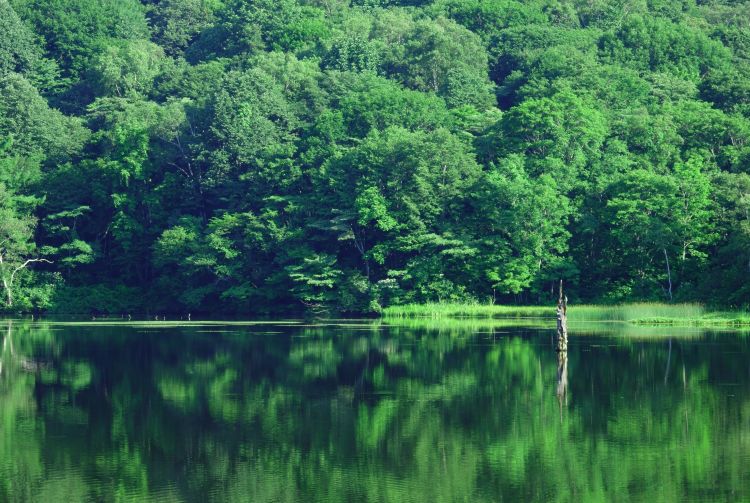
Get acquainted with Obuse
Obuse is famous for chestnuts, and its cafes offer amazing chestnut confectionaries and cakes. Local sake is also popular, with some brews still hand crafted in cedar barrels. Stop by Masuichi-Ichimura brewery or Matsubaya for samples.
Explore the Hokusaikan Museum
Meet the fabled snow monkeys, more to do back in the city.
The Nagano Prefectural Art Museum hosts the work of artists with ties to the prefecture; the attached Higashiyama Kaii Gallery has permanent and rotating exhibitions of Hokusai's work.
Zenkoji Temple, near Nagano Station, has a history of about 1,400 years and is the largest wooden structure in eastern Japan. The present main hall was built about 300 years ago. There are as many as 39 sub-temples on the grounds, called shukubo, that allow visitors to experience an overnight temple stay.
* The information on this page may be subject to change due to COVID-19.
Recommended for You
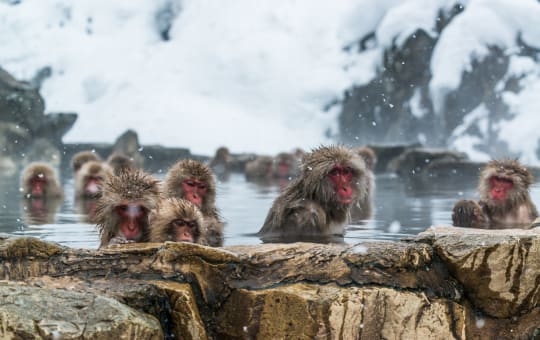
Did this information help you?
out of found this information helpful.
Thank you for your feedback.
Related links.

Please Choose Your Language
Browse the JNTO site in one of multiple languages
- Things to Do
- Tourist Spots & Attractions
10 Best Places to Visit in Nagano Prefecture - Ski Resorts, National Parks, and Ancient Castles! (2023 Edition)

Nagano is Japan’s 4th largest prefecture, and is known for its expansive mountain-covered wilderness, making it a mecca for winter sports. It is home to several Japanese national parks, full of wonders like the famous “snow monkeys” and the idyllic scenery of Kamikochi. Dotted by ancient castles, townscapes, hot springs, temples, and more, Nagano is also a strikingly well-preserved slice of traditional Japan. Here are 10 must-visit Nagano tourist spots to add to your Nagano travel itinerary!

This post may contain affiliate links. If you buy through them, we may earn a commission at no additional cost to you.
The long and narrow country of Japan is divided into what are called the 47 prefectures, but are actually 43 prefectures, 2 urban prefectures ( Osaka and Kyoto ), one territory ( Hokkaido ), and one metropolis ( Tokyo ).
Each area has their own unique nature, with their own good characteristics and peculiarities.
Of course, when you talk about sightseeing in Japan, places like Tokyo and Kyoto are famous, but other than that there are plenty of sightseeing areas to go to.
Among those is Nagano prefecture, which sits almost exactly in the center of the Japanese archipelago.
Nagano is bordered by eight prefectures (Gunma, Saitama, Yamanashi, Shizuoka, Aichi, Gifu, Toyama, and Niigata) and is narrow east-to-west but long north-to-south.
It is the fourth biggest prefecture in Japan. It's usually broken up into northern, eastern, and western areas, and even within this one prefecture each area has its own dialect.
Its ancient name was Shinshuu, and to this day items from Nagano have the name Shinshuu attached, and it is possibly used more than the name Nagano.
Here are ten recommended spots to visit in Shinshuu.
Our Top Tips
JR Pass for Whole Japan
Explore Japan in the most convenient and economical way with a Japan Rail Pass! It is valid for the majority of railways and local buses operated by JR.
1. Karuizawa
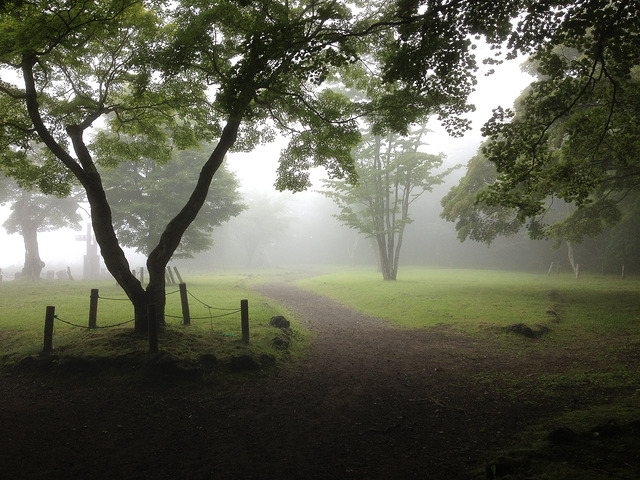
Karuizawa is famous as a summer resort and overflows with tourists in the summer.
It's known as the city where John Lennon brought his family for a long stay and Bill Gates rents holiday villas. Many writers and rich people have built their vacation houses here.
There are many churches and wedding halls here, as well as many Western-style restaurants.
2. Shiga Kogen Ski Resort

It's located at a high elevation and surrounded by beautiful nature with an abundance of snow in the winter, so it's a famous ski resort.
3. Kamikouchi
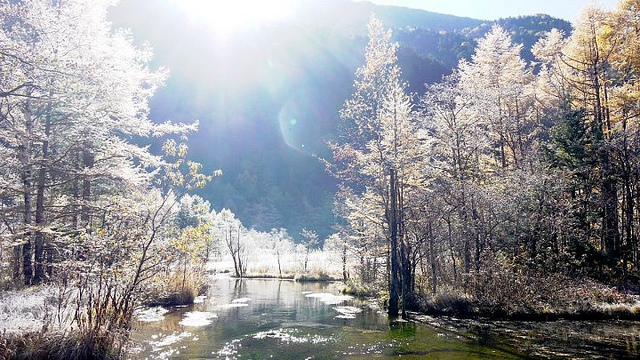
It was Japan's first mountain resort, and has since been awarded special protected habitat as well as special scenic area status. Each year 1,500,000 people visit.
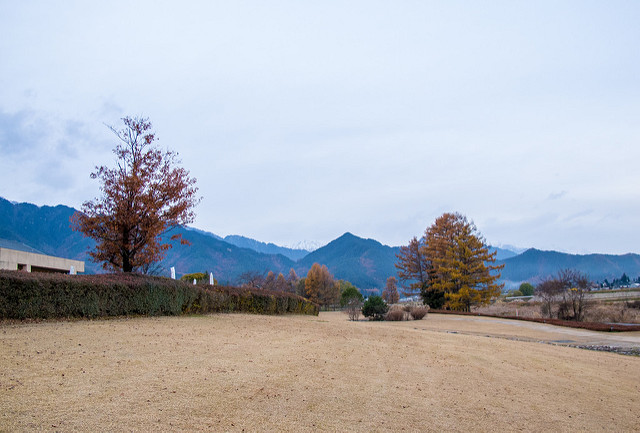
This area has the clear stream flowing from the northern Japanese alps, and they cultivate wasabi, rainbow trout, and Shinshuu salmon here, all things that wouldn't live in dirty water.
There are many art galleries and museums, and it's a place where people who like to look at art and visit small, unique stores will enjoy.
5. Zenkouji

This is a temple that is built in Nagano's prefectural capital, Nagano City.
This building has been designated as both a national treasure and a national important cultural property.
The restaurants and stores around it also have their own unique charms.
6. Matsumoto Castle
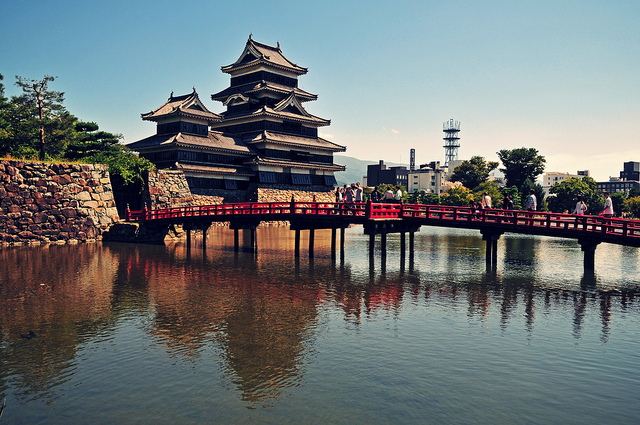
This castle, in Matsumoto City, was used from the Azuchi-Momoyama period to the Edo period. The castle tower is designated as a national treasure.
7. Ueda Castle
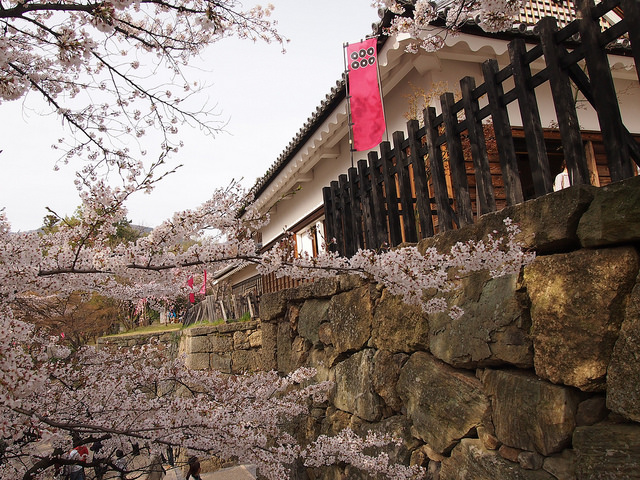
This castle has become the Ueda Shiroato Koen ("Ueda castle ruins park"), and every spring it flourishes with cherry blossoms and people often go cherry blossom viewing here.
8. Komoro Castle

Only renmants of the castle are left, so it is surrounded by the Komori Shiroato Kaiko Park, which has a zoo and a museum that you can enjoy.
It was used as a location in one of the famous Tora-san movies.
This is another popular flower-viewing place in the spring. Around the castle there are also plenty of Shinshuu soba restaurants.
9. Suwako Onsen
This hot spring gushes out of the land in Suwa City, Nagano.
In the hot spring town around Suwako, Katakurakan, Japan's oldest health preservation spring, is famous for its thousand person bath. Katakurakan is also designated as a national important cultural property.
10. Shimosuwa Onsen
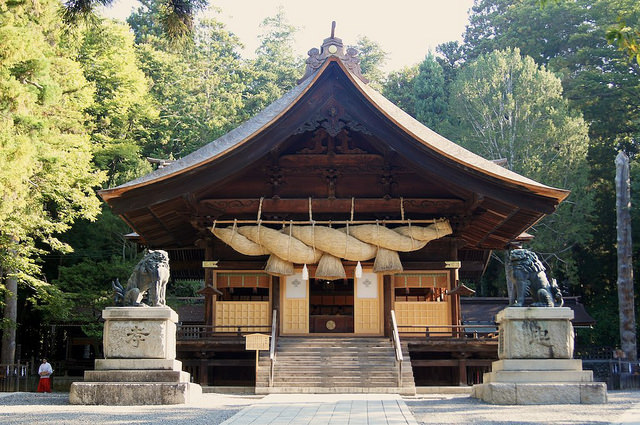
KOTOKO/Flickr
This hot spring is also in the Suwa region, but in Shimosuwa Town.
In the surrounding hot psring village, there's Suma Grand Shrine which is famous for being a power spot, and Lake Suma, which is surrounded by inns and ryokan.
Originally it was just a place where travelers stopped for the night, and there are many inns and buildings that have kept the traditional Japanese facades of inn towns.
Japan Shinkansen, Narita Express (N'EX) & Express Train Tickets
Plan ahead by booking your shinkansen, airport train, and express train tickets online in English. Have the tickets sent to you by mail or collect them at the station once you're in Japan.

The information in this article is accurate at the time of publication.
tsunagu Japan Newsletter
Subscribe to our free newsletter and we'll show you the best Japan has to offer!

About the author
Related Articles
Related interests.
- Otaru canal
- Umeda sky building
- Rainbow bridge
- Tokyo skytree
- Tokyo tower
- Imperial Palace
- World heritage sites
Restaurant Search
Tsunagu japan sns.
Subscribe to the tsunagu Japan Newsletter
Sign up to our free newsletter to discover the best Japan has to offer.
Connect with Japan through tsunagu Japan
Let us introduce you to the best of Japan through our free newsletter: sightseeing spots, delicious food, deep culture, best places to stay, and more!
Best Places to Visit in Nagano
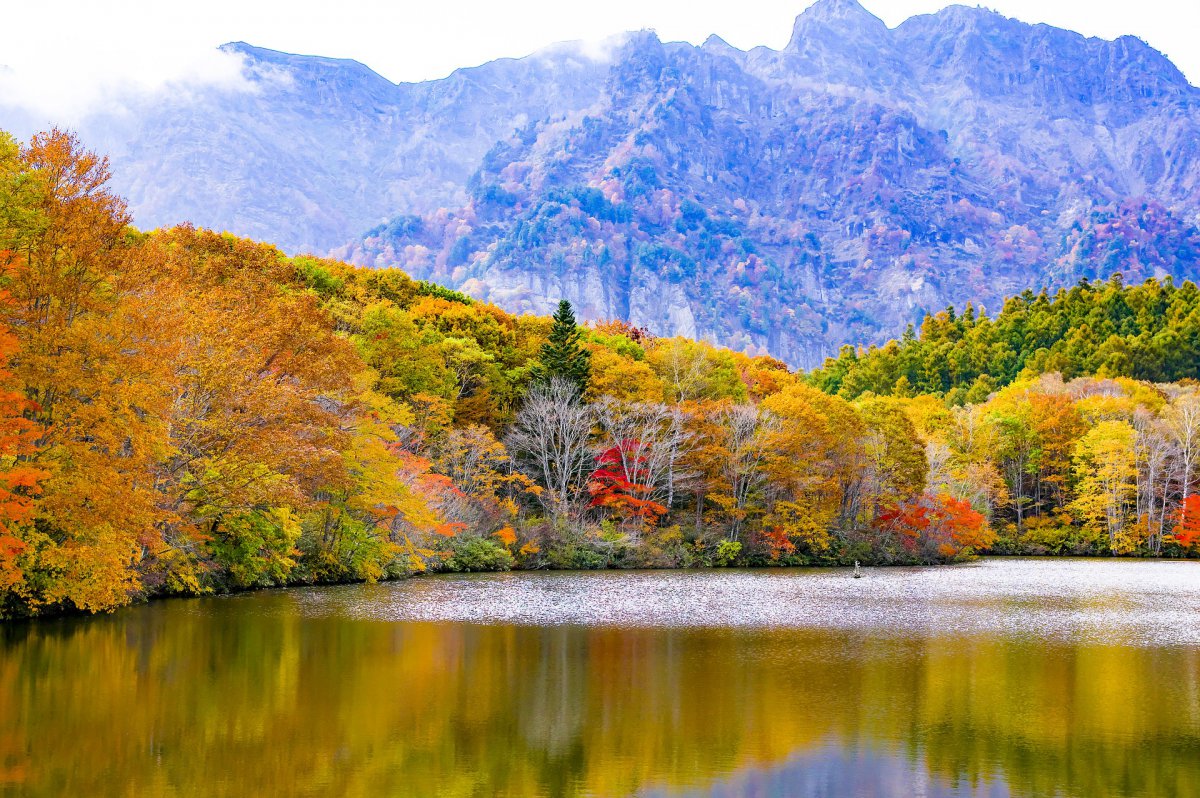
Nagano prefecture is located north west of Tokyo, in the centre of Chubu region. The large prefecture is well known for its beautiful nature that includes mountains, forests and highlands. In 1998, the Winter Olympics were organised in Nagano, boosting the areas’ popularity amongst snow activity lovers. Nowadays it is a popular destination for snow activities and hot springs in winter time, but also for hiking in summer time. Nagano city can be reached from Tokyo in under 2 hours per Shinkansen. If you love nature and outdoor activities, this will be one of your favourite areas. Let’s discover some of the highlights!
Best places to visit in the other prefectures of Chubu region.
*If you already live in Japan, you can travel cheap with the Go To Travel Campaign ▷ How to Travel Cheap with the Go To Travel Campaign
Nagano City
Snow monkey park, matsumoto castle, yudanaka and shibu onsen area.
Shiga Kogen
Nozawa Onsen
Kiso valley
Daio wasabi farm azumino, hotels around snow monkey park.
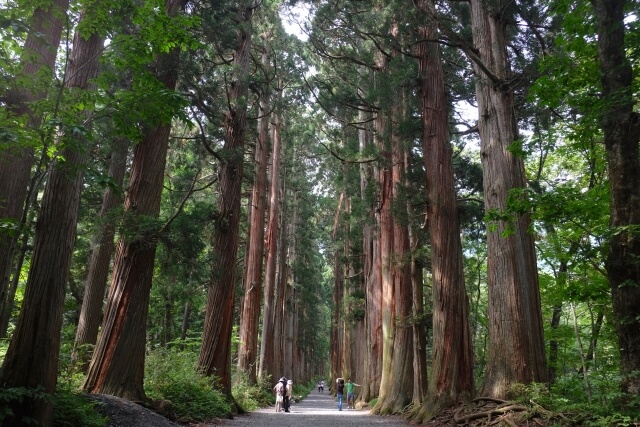
Nagano City is the prefectural capital, well known as the host of the Winter Olympics in 1998. It is the most developed city in Nagano and has many interesting places closely located to visit. Zenkoji Temple , one of the most important and popular temples of Japan, is one of the most famous places in Nagano. Togakushi Shrine is another great place to visit too. The Togakushi shrine consists of three shrines, connected by beautiful hiking trails that are surrounded by nature. The area is also famous for the Kids Ninja Village, a ninja school that is also popular amongst adults! Lastly, a trip to Nagano City could also never be complete without trying some of the local specialities; soba noodles. Make sure you enjoy this signature dish for lunch or dinner, or both!
Have you ever seen a monkey taking a bath? In Japan, you can see the famous snow monkeys relaxing in an onsen in winter season! In north Nagano, up in the mountains about 50 minutes from Nagano city, the Japanese Macaques survive the tough winters by grouping around natural hot springs. It is an very fun thing to observe, and many people see a visit to the snow monkeys as one of the highlights of their trip to Japan!
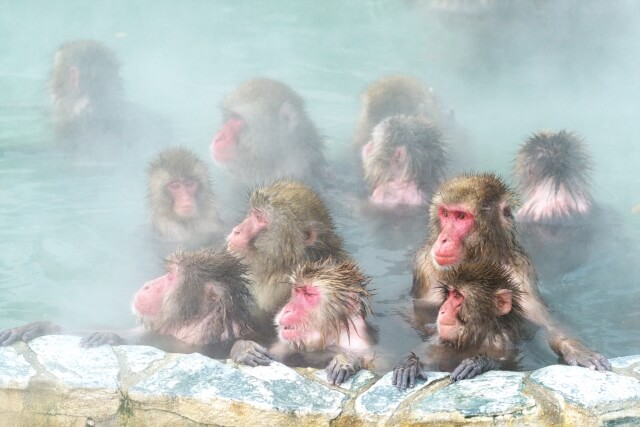
The Snow Monkey Park is the place where the monkeys bathe in the hot springs during the winter season. The mountainous area is the natural habitat of the Macaques. During the cold winters, the monkeys stay alive by seeking shelter in the onsen, where the wild animals can be spotted at close distance without fences. The Snow Monkey Park is also called Jigokudani Yaen-park and is located in the valley of the Yokoyo river .
Zenkoji Temple
Zenkoji Temple is a famous Buddhist temple located in Nagano city, the prefectural capital of Nagano. The temple was built in the 7th century and is visited by about 6 million people annually. The temple is home to Japan’s oldest Buddhist statue brought into Japan when Buddhism was first introduced in the 6th century. The statue is hidden though, every six years a replica of the statue is displayed for a few weeks, attracting many people from all over Japan. The main hall, which was reconstructed in 1707, is said to be one of the oldest wooden cultural structure in the east of Japan!

On either side of the streets leading to the main entrance, you have the opportunity to have another traditional, local experience: staying overnight at Buddhist temple lodgings called shukubo . Shukubo are still very popular both for visiting pilgrims as well as tourist. You can have a traditional experience staying at the Shukubo regardless of your religion!

Matsumoto Castle is one of the most famous historical sites in Nagano and one of the 12 original castles in Japan . The nearby town a smaller sized city with a traditional atmosphere with several fantastic food options. The history dates back to the 16 th century making it the oldest surviving castle tower in the nation. The five-story main tower is thought to be built during the Azuchi Momoyama to the Edo era, and is designated as National Treasure along with other four castles such as Himeji Castle in Hyogo and Inuyama Castle in Aichi. The black and white exterior creates a stunning view with the natural surroundings and the Northern Japan Alps in the background! The black walls also earned the castle’s nickname: Karasujo (Crow Castle).

Matsumoto castle 8.30am – 5pm ¥700 (adults) When you enter the castle grounds, look for the free guided tours, local volunteers often offer frequent tours in English.
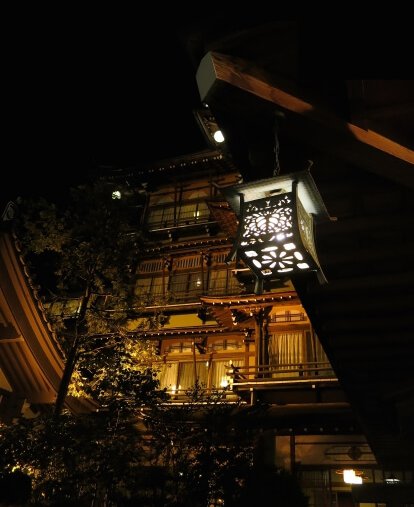
Yudanaka and Shibu Onsen area lies approximately 10 minutes away from the Snow Monkey Park by car, alternatively you can take the train to Yudanaka station. After your visit to the snow monkeys, follow their example and relax in one of the onsen of Shibu Onsen. In total there are nine different onsen and it is said that a visit to all nine onsen will bring good fortune! There are some traditional ryokans in Shibu Onsen, so you can stay overnight as well.
Snow resorts in Nagano
When you visit Nagano to see snow monkeys, you will probably plan your visit in the winter season, when there is snow. Which brings us to the next place to visit: The mountains of Nagano also known as the Japanese Alps. The mountainous area offers great possibilities for winter sports. With 9 of the 12 tallest mountains in Japan, the region of Nagano offers winter sport options for everyone. Skiing in Japan has become a very popular activity, because of its great quantity of high quality of snow.
Next to Hokkaido, Hakuba is very popular ski resort in Japan considered as the best ski resort in the mainland. Hakuba comprises several smaller ski resorts in the area, offering various courses with spectacular scenery of Japan Alps and fine powder snow.
Hakuba Tourism

About 25 minutes from the Snow Monkey Park you will find the famous ski resort Shiga Kogen. Shiga Kogen is Japan’s largest ski resort, made out of 18 smallers resorts, that has some of the best and most reliable powder in Japan. This is because of the topography and elevation of the resort in combination with the cold temperatures. These circumstances give very dry powder snow that stays on the ground for longer and in better condition than most others resorts.

Nozawa Onsen is a hot spring and ski resort village near Nagano. The nostalgic town is famous for its many different types of onsen, in total 13, which have been maintained by the local community since the Edo Period and are freely open to the public. The ski area comprises about 50km of ski slopes, making it a great weekend trip from Tokyo. The village is especially popular amongst international travellers because of its snow quality, its traditional cute centre and because English speaking travellers are well catered for.
Lake Suwa is the largest lake in Nagano area which boasts a number of tourist attractions around. The lake itself is beautiful and worth a visit, but we highly recommend you explore other enjoyable spots nearby depending on your interests. If you prefer to go somewhere associated with history, Suwa Taisha or Suwa Grand Shrine could be a perfect option for you! It is a main shrine of the more than 10,000 Suwa shrines located in Japan. The grand shrine mainly consists of four complexes that can be found around the lake. Each of them maintains a sacred atmosphere, and offers a valuable experience for visitors.

Another spot is Tateishi Park that offers a panoramic view of the lake and the city of Matsumoto! As the scenery looks similar to a scene from the famous movie Kimi no Nawa (English title Your name), it became a popular place among movie fans as a real-life anime location for the movie!
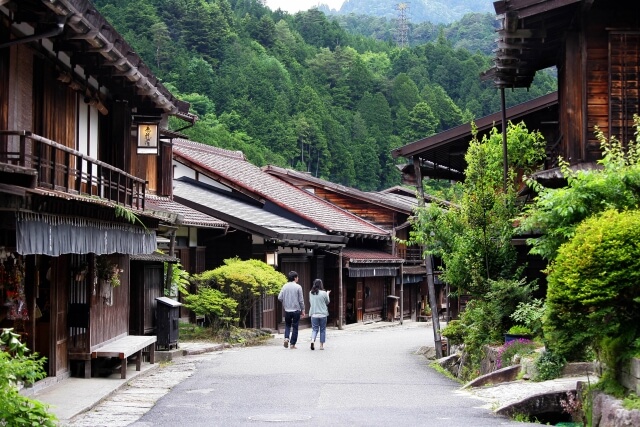
Kiso Valley is known as a historic preservation area that is great for a weekend trip from Tokyo . In the Edo period (1603 – 1868), the Nakasendo road was one of the two roads connecting Edo (Tokyo) and Kyoto . Because of restrictions by the shogunate, people usually travelled this road by foot, causing villages where travellers could eat and rest, to pop up every few kilometers. Some towns along the Nakasendo (“path through mountains’), such as Magomejuku & Tsumagojuku , were preserved to look as they did during the Edo Period (1603-1868) .
Juku refers to places that served as post towns (also known as post stations) offering accommodations and other service for travellers. Most buildings are currently used as inns or restaurants to welcome tourists from all over the world as well. The trail between the two towns is about 6 km in length and takes 2 hrs to complete. Alternatively, when you start in Magome and end in Tsumago you can walk a further 90 minutes to Nagiso. Buses also make the journey between Magome, Tsumago and Nagiso and back.
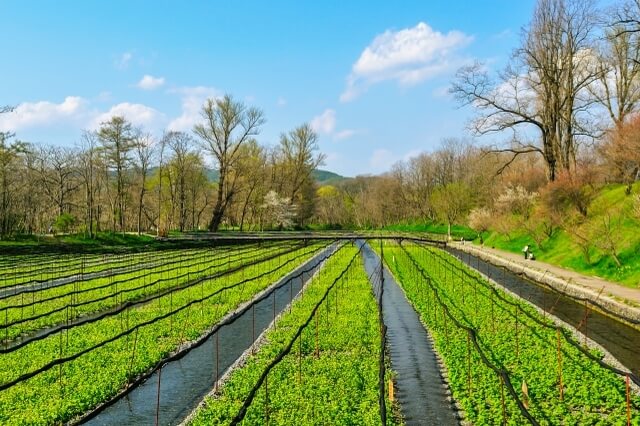
Wasabi is known as a condiment that is often used in Japanese traditional cuisines such as sushi or sashimi. We usually use the stem part which is carefully grated into a paste. The spicy flavour directly stings your nose, and sometimes brings even tears! It may sound strange at first, but once you get used to it, you can’t enjoy Japanese food without it! Azumino city is a famous producer of wasabi in Nagano, and Daio Wasabi Farm produce one of the most tasteful wasabi in Japan! They use clear water from the Northern Alps to grow Wasabi and sell a variety of wasabi-flavoured products such as wasabi soft serve ice cream! There are other enjoyable activities around the farm such as rafting in a peaceful river and spiritual spots.
These are recommended hotels located in the area around Snow Monkey Park. While it is possible to do a day trip from Tokyo, we recommend you stay at least one night to discover the area. If you stay at Shibu Onsen area, make sure to check these accommodations! These traditional Japanese ryokan all offer free pick-up and/or transportation to the Snow Monkey Park and several onsen, both indoor and outdoor.
- Hotel Omodaka
- Aburaya Tousen
Japan’s pride are not just the urban areas like Tokyo and Kyoto, that are popular among tourists. Nagano gives you an opportunity to immerse yourself into the nature and history of Japan which are hardly to be found in developed areas full of skyscrapers and busy people. A visit to the Snow Monkey Park and seeing the Japanese Macaques relax in the onsen is considered by many a must do, or even a highlight of their trip to Japan. We recommend you make most out of your visit to Nagano prefecture and stay overnight and visit the highlights mentioned in this article. Combine the outdoor activities with a relaxing moment at the onsen, followed by a traditional local soba noodles meal!
Follow us on Instagram or Facebook for more travel inspiration. Or tag us to get featured!
Happy travelling!
This post may contain some affiliate links. When you click through and make a purchase we may receive some commission, at no extra costs to you.
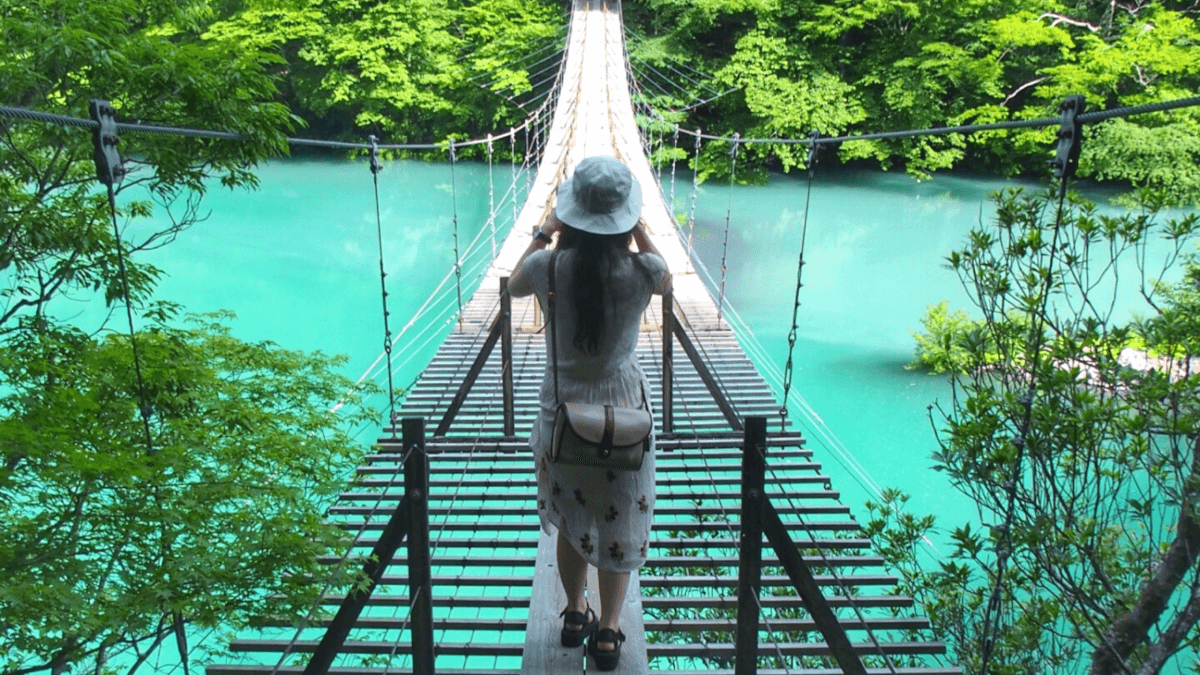
- Popular destinations
- Hidden places in Japan
- Tours and workshop
- Food and drink in Japan
- Itinerary in Japan
- Places to visit in Tokyo
- Food and drink in Tokyo
- Seasonal events
- Tours & workshops
- Tokyo This Week
- Day trip from Tokyo
- Itinerary in Tokyo
- Places to visit in Kyoto
- Food and drink in Kyoto
- Itinerary in Kyoto
- Day trip from Kyoto
- Travel tips
- Accommodation
- Cultural tips
- Transportation
- Tokyo Tours
- Kyoto Tours
- Kimono Rental
- Fukushima Tours
- Mount Fuji Tours
- Tour Package
- Media Kit(English/日本語)
10 amazing things to do in Nagano, Japan!
Jan 06, 2021
- Destination
- 10 Amazing Things
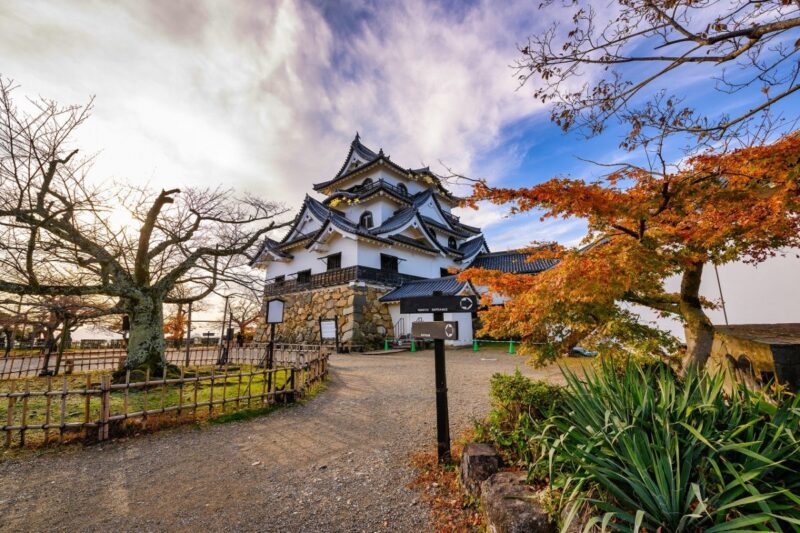
Nagano Prefecture sits exactly in the center of the Japanese archipelago, and it is bordered by eight prefectures (Gunma, Saitama, Yamanashi, Shizuoka, Aichi, Gifu, Toyama, and Niigata). The prefecture is known as the fourth biggest prefecture in Japan, and its surrounding high mountains have made it a popular winter sports location with fantastic skiing areas.
Nagano Prefecture is famous for its natural beauty and amazing ski resorts, and it became a popular travel destination after it hosted the 1998 Winter Olympics. Some of the most famous spots in Nagano are the Jigokudani Monkey Park, where you can see monkeys chilling in the hot springs, Matsumoto Castle, or the Crow Castle, which is famous for its black walls and roof, and Karuizawa, an area in Nagano that is dotted with resorts, hotels, tea rooms, and museums.
Perfect to visit if you’re looking for something off the beaten path, how about visiting Nagano for both, a chillaxing (chill-and-relaxing), yet an unforgettable vacation?
How to get to Nagano Prefecture
Recommended sightseeing spots in nagano prefecture, jigokudani monkey park, matsumoto castle, zenkoji temple, kagami pond, shiga kogen ski resort, ueda castle.
- Nagano City Joyama Zoo
Nagano’ s best local treats:
- Sauce katsudon
- Shinshu soba
- Gohei mochi
Nagano is accessible by trains and highway buses, and the main transportation hub in Nagano is Nagano Station, which is served by all trains in the region, including the JR Hokuriku Shinkansen, other JR trains, Shinano Railway, and the Nagano Electric Railway (Nagaden).
The prefecture is directly connected to Tokyo by the Hokuriku Shinkansen, and the one way trip from Tokyo to Nagano takes 80-100 minutes, costs about 8,000 yen, and is fully covered by the Japan Rail Pass and JR East Nagano Niigata Area Pass.
If you’re traveling from Osaka or Kyoto, the easiest way to reach Nagano is by taking the JR Tokaido Shinkansen to Nagoya and transfer to the JR Shinano Limited Express train to Nagano, which runs hourly.
You can also take the highway buses from Tokyo, Osaka, Kyoto, and Nagoya to Nagano.
Nagano is a perfect destination for a day trip from Nagoya, or even for a weekend trip from Tokyo. The best timing to visit the prefecture is in spring, fall, or in winter when the powder-covered mountains around Nagano turn the prefecture into a top location for snow sports in Japan.
Some of the most famous travel spots in Nagano are the Zenkoji Temple, Togakushi Shrine, and Kagami “mirror” Pond. Nagano is also famous for its mouthwatering local treats like Sauce Katsudon and Shinshu Soba.
Here are our picks for the best things to do in Nagano, Japan!
1. See the adorable snow monkeys at Jigokudani Monkey Park!

One of the most interesting places to visit in Nagano is perhaps the Jigokudani Monkey Park, which is best known as a home to the most hygienic and health-conscious monkeys in the world since the snow monkeys in the park are taking part in communal hot-spring bathing.
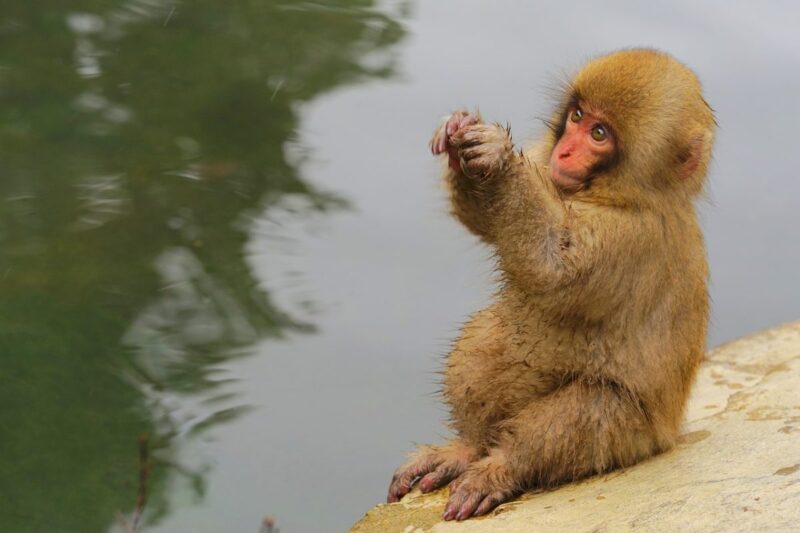
The park protects wild Japanese macaques and keeps them under observation, and the reserve is also known for its good walking and hiking trails, so make sure you wear waterproof boots as they can get muddy.
- Business hours : 8:30 – 17:00 (April to October); 9:00 – 16:00 (November to March)
- Admissions: 800 yen (age 18 & above), 400 yen (6 – 17 years old)
- Access: a 30-minute walk from Kanbayashi Onsen Free Parking
Back To Index
2. Stop by Matsumoto Castle, one of the oldest castles in Japan
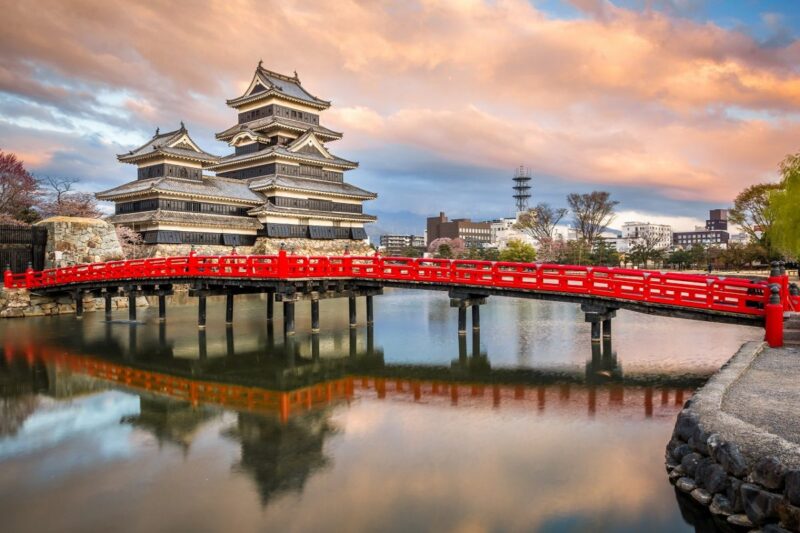
Matsumoto Castle is a castle in Matsumoto City that is also designated as a National Treasure by the Japanese Government. The castle is famous for its tremendous keep tower, and for its jet-black walls and roofs, which became the reason why it is nicknamed “Crow Castle”.
The castle is famous for its amazing view of the northern Alps, and the huge red bridge standing on the castle moats.
- Business hours : 8:30 – 17:00 (regular season); 8:00 – 18:00 (April 25 to May 6, and August 8 to August 16)
- Admissions : 700 yen (age 15 & above), 300 yen (age 6 to 14)
Back To Index
3. Find your peace at Zenkoji Temple
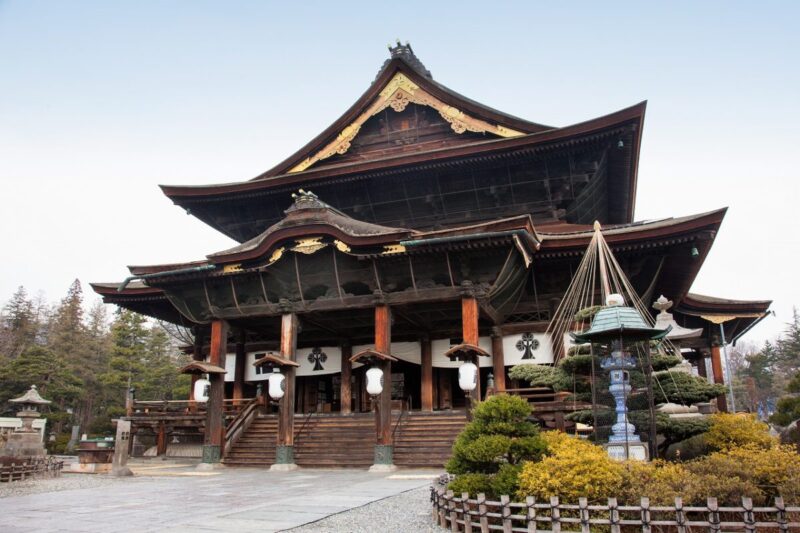
Zenkoji Temple was built in the 7 th Century, and it is known as one of the most famous pilgrimage sites in Japan within the Buddhist community.
The temple houses an ancient Buddha statue that is considered to be the first Buddha statue to have ever been brought to japan, which is called as The Secret Buddha Statue ( hibutsu ), and this is the reason why the statue is never shown to the public. However, the temple displays the replica of the statue in a festival for about two weeks, once every 6 years.
When visiting Zenkoji Temple, don’t forget to stop by Omotesando Street around Zenkoji, which is lined by restaurants and souvenir shops.
- Business hours : 1 hour earlier than the morning service (usually held during sunrise) to 16:30 (16:00 from December to February, and 16:15 in March)
4. Enjoy the beauty of the “mirror” pond, Kagami Pond
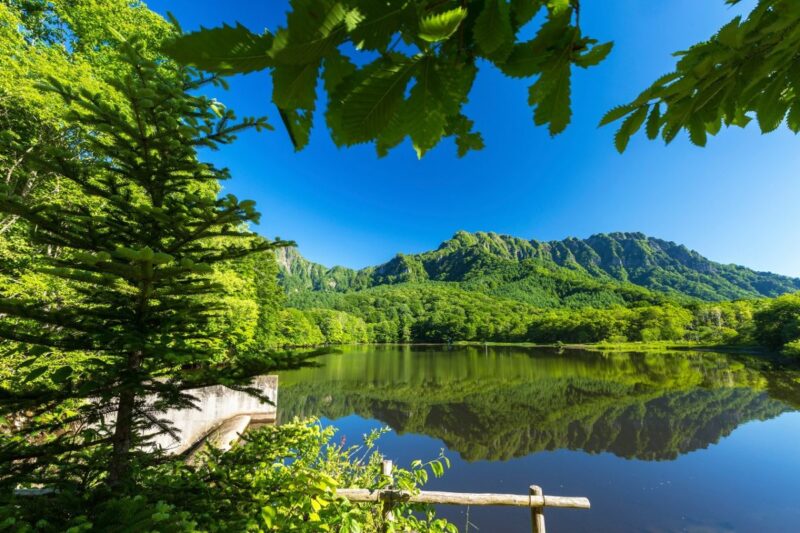
Surrounded by the Togakushi mountains, Kagami Pond is best known for its mirror-like crystal clear surface, which reflects the mountains and surrounding nature. One of the best timing to visit Kagami Pond is in fall when the mountains are covered with autumn leaves.
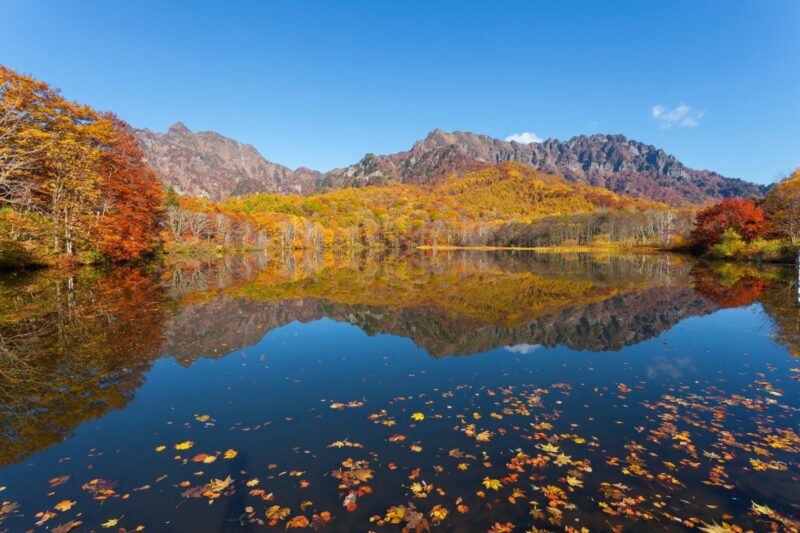
The easiest way to visit this amazing pond is by taking the bus from Nagano Station to Togakushi, which takes about an hour. The pond is a 30-minute walk from Kagami-ike Station, and there is a shuttle bus that takes you to the station on the weekends.
- Open 24 hours
- Website (in Japanese)
5. Visit Karuizawa for its gorgeous nature
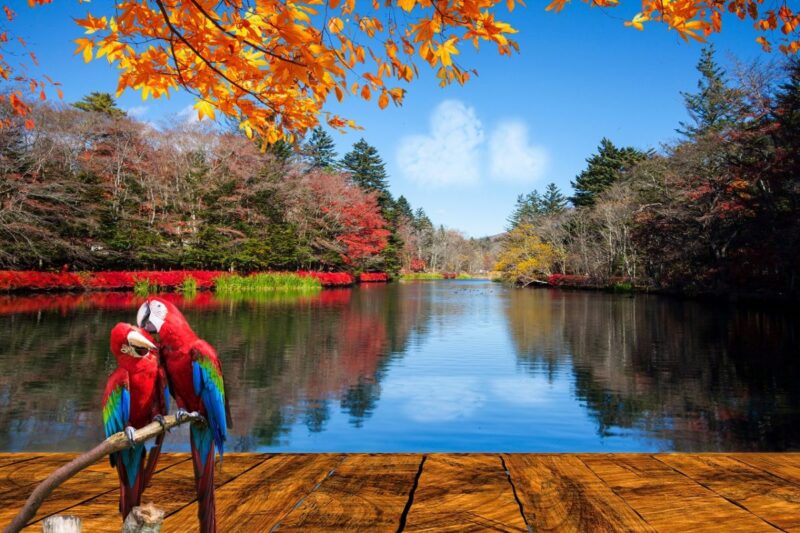
Karuizawa is a famous resort city in Nagano, and it overflows with tourists in the summer and the winter. Public figures like John Lennon and Bill Gates have visited and stayed in Karuizawa, and many conglomerates have vacation houses in the area.
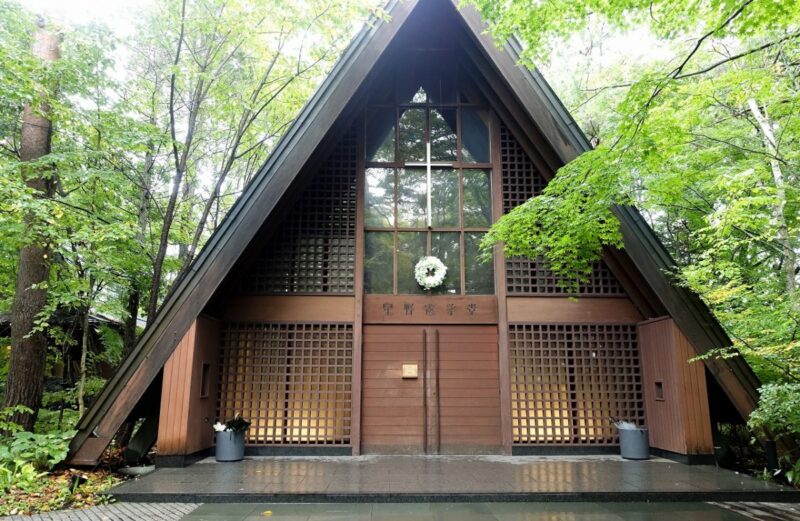
Karuizawa is dotted with hotels, churches, wedding halls, tea houses, museums, and Western-style restaurants. One of the best spots in Karuizawa that you should never miss is the Japanese-style church, which has Japanese calligraphy carved on its entrance.
6. Enjoy winter sports at Shiga Kogen Ski Resort

Nagano is best known for its amazing ski resorts, and one of the best ski resorts to visit is perhaps Shiga Kogen Ski Resort.
Unlike other ski resorts in Nagano, Shiga Kogen Ski Resort is a good all-rounder as it provides a large variety of ski and snowboard terrain, and high-quality snow since it’s the second-highest ski resort in Japan.

Shiga Kogen Ski Resort’s elevation ranges from 1,300 to 2,300 meters, and it has over fifty ski lifts and gondolas, making it the largest skiing destination in Japan. In addition to its amazing facilities, the ski resort also offers ski lessons, snowshoeing and snow hiking courses, and snow playing programs for children.
- Business hours : 8:30 – 16:30 and 18:30 – 21:30 (November 22 to May 6)
- Admissions : 5,000 yen (adults); 2,500 yen (children)
7. Visit Kamikochi for its scenic views and beautiful nature
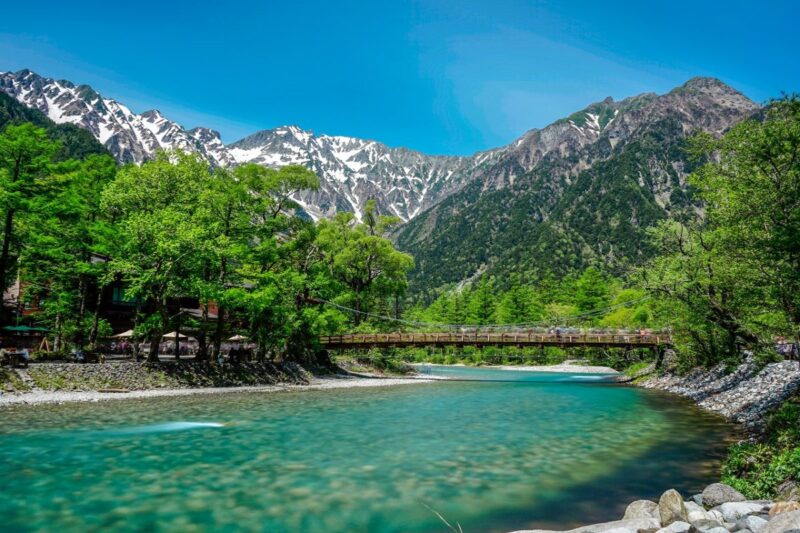
Kamikochi was designated as a National Cultural Property in 1952, and it is also known as one of the best resort destinations in Japan. Each year, over 1,500,000 tourists visit Kamikochi, and it is best known for its beautiful seasonal views.
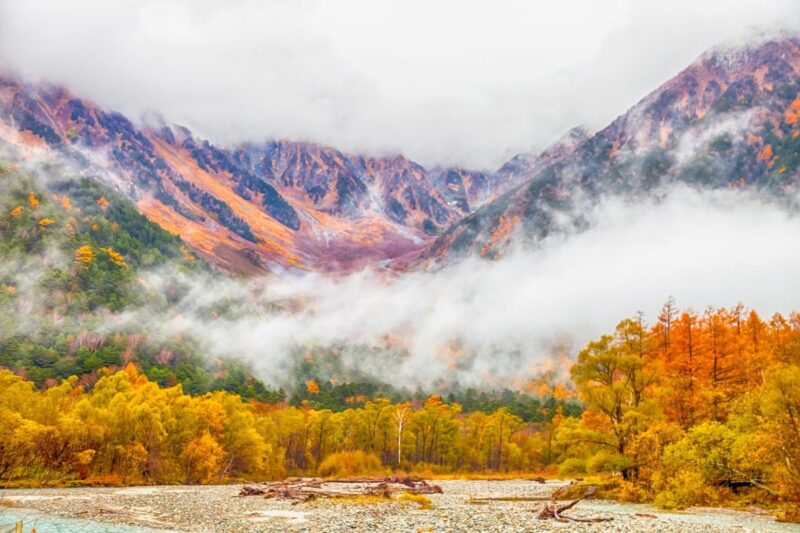
Kamikochi is the first mountain resort in Japan, and the best timing to visit this area is in fall to enjoy its gorgeous autumn leaves, and in the winter, to enjoy winter sports like snowshoeing.
8. Visit Ueda Castle for its beautiful historical castle and seasonal views

Ueda Castle is a castle ruin that is famous for its breathtakingly beautiful cherry blossoms, and many people visit this castle in spring to enjoy cherry blossom viewing. The castle is known as one of the oldest castles in Japan, and it was built in 1583 by Masayuki Sanada, who went to war with the Tokugawa clan in 1600.
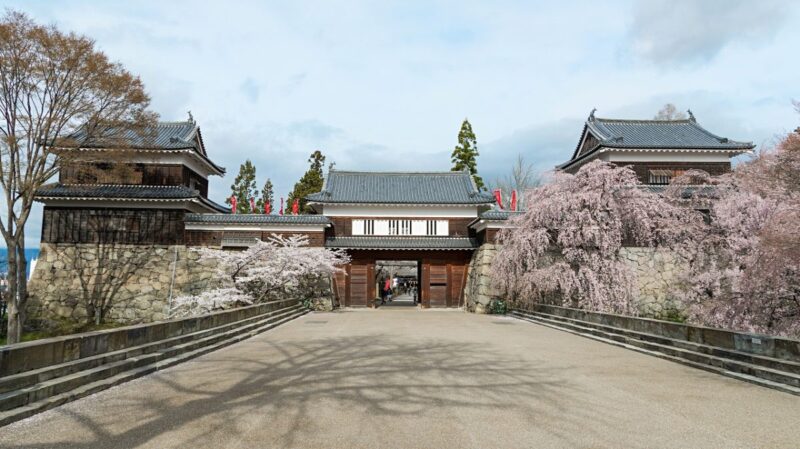
Ueda Castle was badly damaged when the Sanadas were defeated at the Battle of Sekigahara, but the castle was rebuilt in 1626 by Hidehisa Sengoku, the new lord of Ueda Castle.
- Business hours : 8:30 – 17:00 (last entry at 16:30)
- Admissions : 300 yen (age 18 & above), 200 yen (high school students), 100 yen (age 6-14)
- Close on Wednesdays, year-end and new year’s, and the day after public holiday
9. Explore the ruins of Matsushiro Castle and its beautiful moats
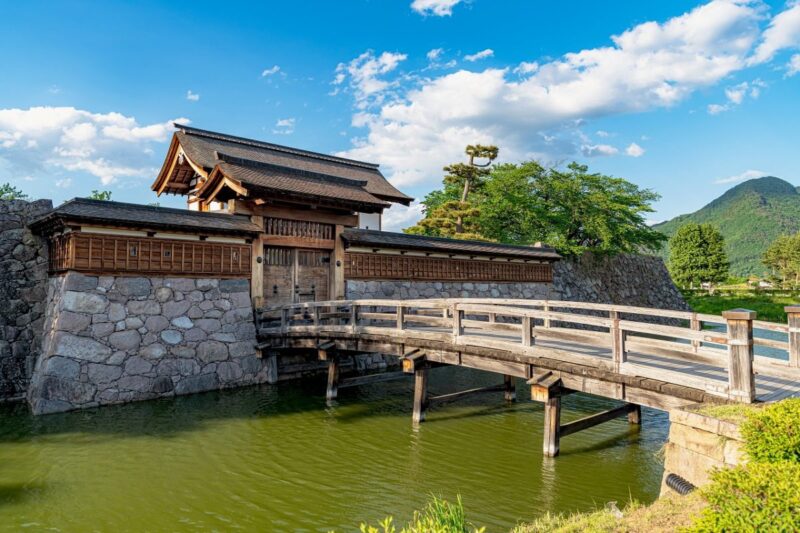
Matsushiro Castle is 12 kilometers to the south of Nagano City, and it is best known for its beautiful small castle and samurai houses, which were built in 1560. The castle functioned as a defense against hostile feudal lords, and it has been destroyed and restored several times during its turbulent history. The current castle building was reconstructed in 2003, using traditional building plans and methods.
The castle is famous for its moats and beautiful Japanese Zen gardens.
Matsushiro Castle
10. visit togakushi shrine, one of the most beautiful shrines in nagano.
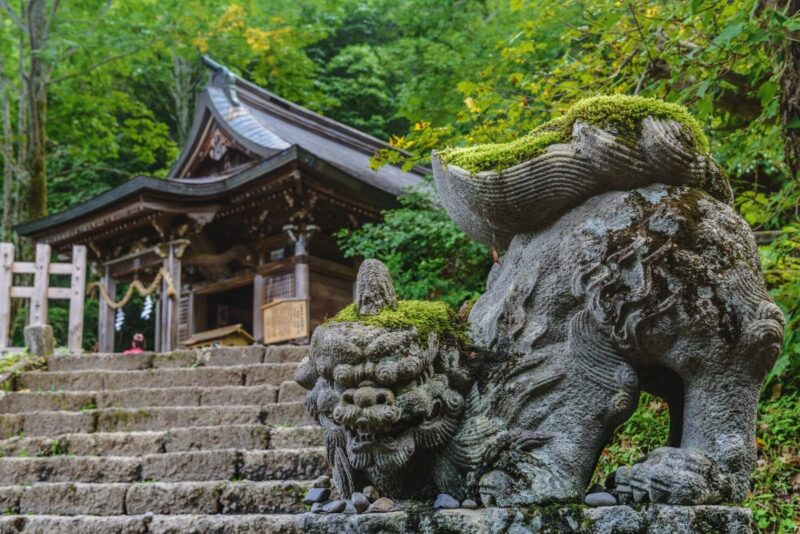
Togakushi Shrine is considered one of the most beautiful shrines in Nagano, and it is famous for its beautiful small shrines and trails that are good for hiking. The shrine has over 2000 years of history, and it is best known for its 700 years old holy tree.

The area of Togakushi Shrine is known as one of the mystical spiritual spots in Japan, and many people visit this area to have a spiritual journey while enjoying nature.
Togakushi Shrine
Nagano’s best local treats.
Nagano is best known for its beautiful castle-like Matsumoto Castle and its amazing winter destinations like Jigokudani Monkey Park and Shiga Kogen Ski Resort. Blessed with beautiful mountains and nature, the prefecture is home to many mouthwatering dishes like sauce katsudon, shinshu soba , and basashi . Here are our picks for the best foods to try when visiting Nagano!
1. Sauce katsudon
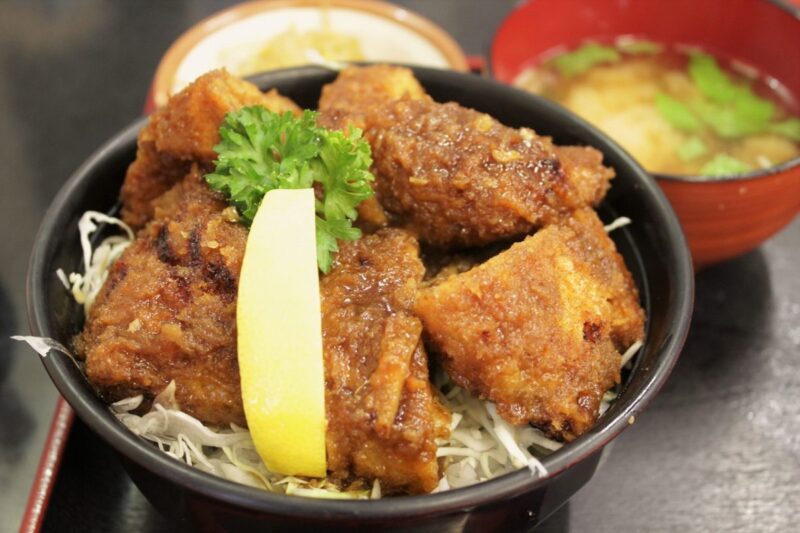
Tonkatsu is known as one of Japan’s most popular comfort foods, and it is usually served plain or with curry, or even turn it into a sandwich. Sauce katsudon; a deep-fried pork cutlet (tonkatsu) dipped in a rich brown sauce and served over a bed of rice with sliced cabbage, is a local specialty of Komagane, a city Nagano.
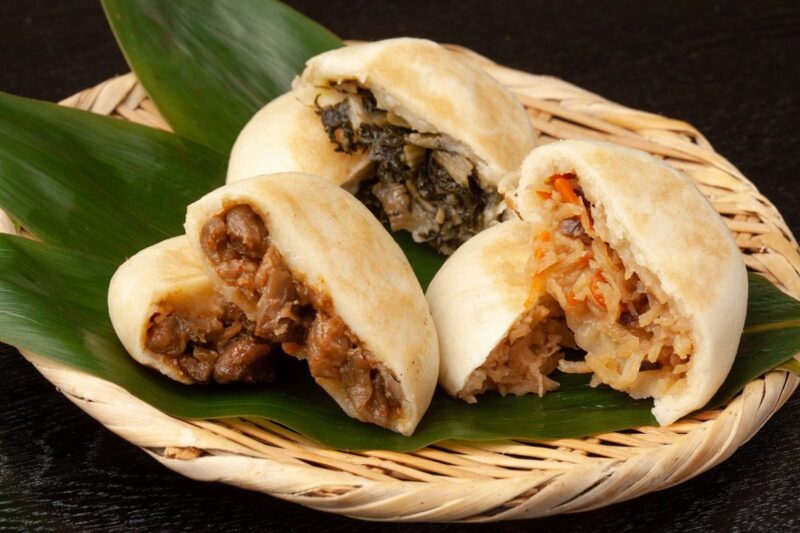
Oyaki is a dumpling originated in Nagano, which is made from fermented buckwheat dough and filled with a wide variety of filling including anko (sweet red bean paste), meat, fruit, or vegetables. The dumpling has both, crunchy and chewy textures, and you can purchase it from street stalls in fall or winter.
3. Shinshu soba
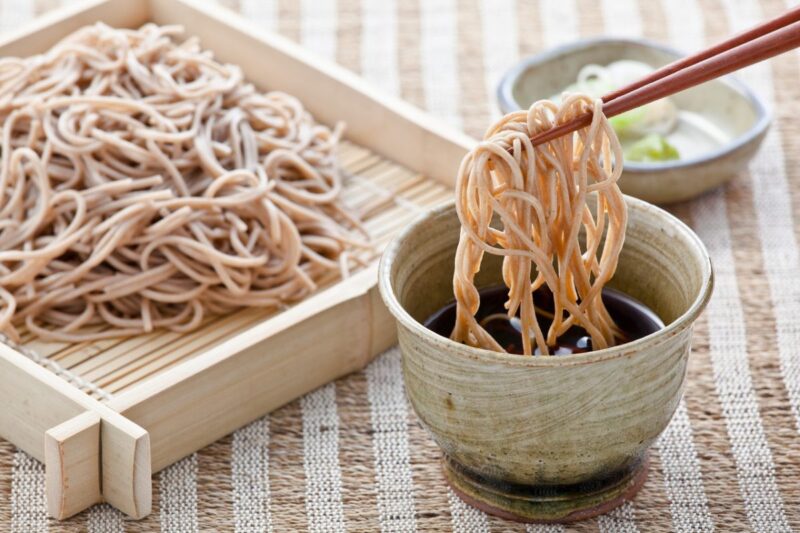
Nagano is one of the largest buckwheat producers in Japan, and the Shinshu variety, which is originated in Nagano, is considered one of the best soba noodles that exist. Shinshu soba is usually served cold with dashi (fish stocks), grated daikon, and green onion, but it can also be served hot, like other soba noodles. The main characteristics of Shinshu soba are its earthy color and rich flavor.

Landlocked by other prefectures, Nagano isn’t known for its seafood, but it is best known for its amazing agricultural and farm produce, so instead of having fish sashimi, you might want to opt for basashi instead.
Basashi is a slice of raw horse meat, and it is a local specialty of Matsumoto City, Nagano, and the most famous cut of basashi is the akami , or lean cut, which can be found in many izakayas and restaurants in Nagano. The texture of basashi is slightly chewy, and if you visit a restaurant that specializes in basashi , you might be able to enjoy unordinary, fatty cuts of basashi , including the belly and neck parts.
5. Gohei mochi
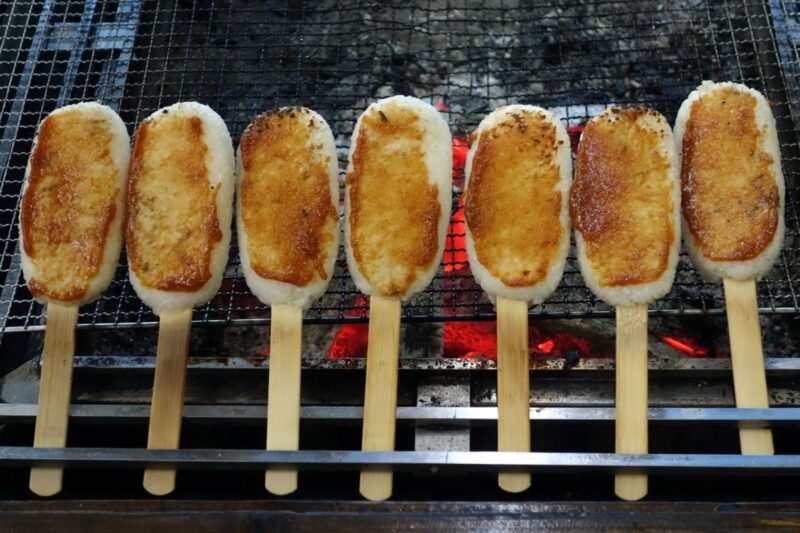
Gohei mochi is a local specialty of central Japan, and it is a roasted half-pounded mochi covered in a sweet-and-savory miso sauce. You can find Gohei mochi when visiting Kiso Valley or Nakasendo, and each post town in Nagano has its own flavor and shape of Gohei mochi.
Now that you have an idea of how many fabulous spots are in Nagano, all you must do is plan your itinerary to enjoy unforgettable experiences in Nagano!
Back To Top
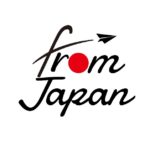
fromjapan_en_editor
We share all interesting stories about Japan; travel guide, food, shopping, and many trivial stories. If you’re the one who loves Japan, this is your area.
Recommended Article
Dec 08,2020
Jan 22,2021
Mar 25,2021
Jul 06,2020
Jun 26,2020
Mar 01,2021
Jan 10,2021
Keyword search
Detailed search
13 Places to Visit in Nagano, Matsumoto & Karuizawa + Things To Do

1. Matsumoto Castle
Location : 4-1 Marunouchi, Matsumoto . Save on Google Maps .
Matsumoto Castle was one of the main reasons why I decided to visit Nagano. It’s small compared to other castles in Japan but it’s also one of the prettiest thanks to its peaceful sprawling garden and distinctive black walls beautifully reflected by the surrounding moat.
To make your trip planning easy, I added links to the locations on Google Maps. Feel free to click/tap on the links posted. Then, use the “save” feature on the Google Maps app for easy reference. I’ve also shared photos from my Instagram feed . Feel free to use Instagram’s save feature for quick access later.
Follow me on Instagram
2. Nawate Shopping Street (Nawate-dori)

Save on Google Maps .
A row of small shops and food outlets with an old town Edo period feel. Nawate Shopping Street (Frog Street) is a great place to buy cheap souvenirs and try some Japanese snacks. It’s located 5 minutes on foot away from Matsumoto Castle.
3. Yohashira Shrine

Location : 3 Chome-3-20 Ote, Matsumoto . Save on Google Maps .
A traditional Shinto shrine & popular destination for viewing colorful autumn foliage. You can easily find it near the entrance of Yohashira Shrine, so don’t miss it if you’re in the area.
Nagano Essentials & Top Discounts
5-day nagano pass.
See discounts
JR East Nagano-Niigata Area Pass (5 Days Flexible)
Japan mobile data sim card/pocket wifi.
Travel with ease & confidence throughout your trip. Get a data SIM card or pocket WIFI device! Access Google Maps and all your favorite travel apps. Share your travel stories instantly with all your friends. Click below and choose your pick-up location:
Japan SIM card Pocket WIFI See all discounts
4. Eat Soba Noodles at Kobayashi Soba

A must-eat in Matsumoto! You can find Kobayashi Soba right next to Yohashira Shrine, along Nawate Street. This long-established family-run restaurant specializing in local cuisine, especially soba (buckwheat) noodles and tempura.
5. Eat Ramen at Mensho Sakura

Location : 1 Chome-20-26 Central, Matsumoto . Save on Google Maps .
Craving for a hot bowl of ramen? Mensho Sakura is only of the highly rated restaurants in Matsumoto that serve delicious ramen. Prices are very reasonable too!
6. Matsumoto Shrine

Location : 10-37 Marunouchi, Matsumoto . Save on Google Maps .
A quiet and picturesque Shinto Shrine found just north of the Matsumoto Castle moat. Stop by and enjoy a refreshing drink from Matsumoto Shrine bubbling cool spring water.
7. Former Kaichi School

Kaichi Gakko Primary School is the oldest school in Matsumoto and one of the country’s oldest elementary schools. It is converted into a museum with exhibits about the education system and how it developed in Japan.
8. Matsumoto City Museum of Art

Location : 4 Chome-2-22 Central, Matsumoto . Save on Google Maps .
Nagano City
9. Zenkō-ji Temple

Location : 491 Naganomotoyoshichō, Nagano City . Save on Google Maps .
The Zenkō-ji Temple is one of the most important pilgrimage sites in Japan. Founded in the 7th century, the temple stores the first Buddhist statue ever to be brought into Japan. Train travel from Matsumoto to Nagano is 1 hour.
10. Shiraito Falls
Location : Shiraito Falls, Karuizawa-machi, Nagano Prefecture . Save on Google Maps .
I first knew about Shiraito Falls when I was researching about the most beautiful waterfalls in Japan. Turns out there are two waterfalls sharing the same name. I was able to visit the more spectacular Shiraito Falls near Mount Fuji previously. This time, since I was already in Nagano, I decided to check out Karuizawa’s Shiraito Falls along with other attractions in town. Shiraito no Taki literally means “the waterfall of white threads”, which aptly describes its appearance, as multiple streaks of water drape over the surface forming what seems like a white curtain.
11. Kumoba Pond
Location : Kyukaruizawa Karuizawa . Save on Google Maps .
Kumoba Pond is famous for its beautiful Autumn foliage. Take lots of scenic pictures as you go on a 15-minute walk around the lake.
12. Karuizawa Prince Shopping Plaza

Location : In front of Karuizawa Station. . Save on Google Maps .
A bargain shopper’s paradise! This outdoor factory outlet mall features many high-end designer brands, sports brands, shops selling homewares and food outlets. There are over 200 shops covering a huge beautifully landscaped area.
13. Old Karuizawa Ginza Street

Location : 541 Karuizawa . Save on Google Maps .
Karuizawa’s old main street where you can find souvenir shops selling local products and cozy cafes.
What places have you added to your bucketlist? Have you been to beautiful places in Nagano that should be on this list? Feel free to share your thoughts!
Places to visit in Nagano
Nagano tourist spots, things to do in Nagano, where to go in Nagano & more.
Note: Destinations featured above are not listed by rank.
Where to Stay in Matsumoto
Click below & search recommended Matsumoto hotels/hostels/home rentals within your budget. Remember to set your min/max price , travel dates, and sort by review ratings . I often book online with these trusted booking sites below for rock-bottom prices & convenient bookings.
Agoda Airbnb Booking.com
Book sooner rather than later if you already have your dates set. Cheaper-priced rooms and hotels with high reviews tend to get fully booked faster, especially during busy days like weekends, holidays & peak tourist seasons.
Where to Stay in Karuizawa
Click below & search recommended Karuizawa hotels/hostels/home rentals within your budget. Remember to set your min/max price , travel dates, and sort by review ratings . I often book online with these trusted booking sites below for rock-bottom prices & convenient bookings.
Popular discounts and tours booked by other travelers:
JR Pass for Whole Japan
Japan Trail and Shinkansen Tickets
JR Osaka-Tokyo Hokuriku Arch Pass (7 Days)
5 Day JR Alpine-Takayama-Matsumoto Area Pass
Asia 4G LTE WIFI Hotspot (Manila Airport Pick Up)
Click below to see more on:
Klook GetYourGuide
Don’t Stop Here
Click below for more travel inspiration:

Don’t leave yet. There’s more!

Discover more blogs and travel tips in:
Leave a Reply Cancel reply
Your email address will not be published. Required fields are marked *
This site uses Akismet to reduce spam. Learn how your comment data is processed .
May 16, 2020 at 11:40 pm
I would like to appreciate on this gorgeous travel procedure to see attractions of Nagano. Thanks for the info.

Girl Eat World
A girl's adventure in food and travel around the world, 5-days nagano itinerary: what to do in nagano prefecture in japan.
This past October, I went on my twice-yearly pilgrimage to Tokyo . I was determined to see something new this time. My husband suggested to do a road trip out Nagano, so I did a quick research and realized it’s the perfect choice for my criteria! I wanted to visit a place outside Tokyo and I also wanted to be in nature, which I can’t really find back home in Singapore. Nagano ticks both of those boxes perfectly.
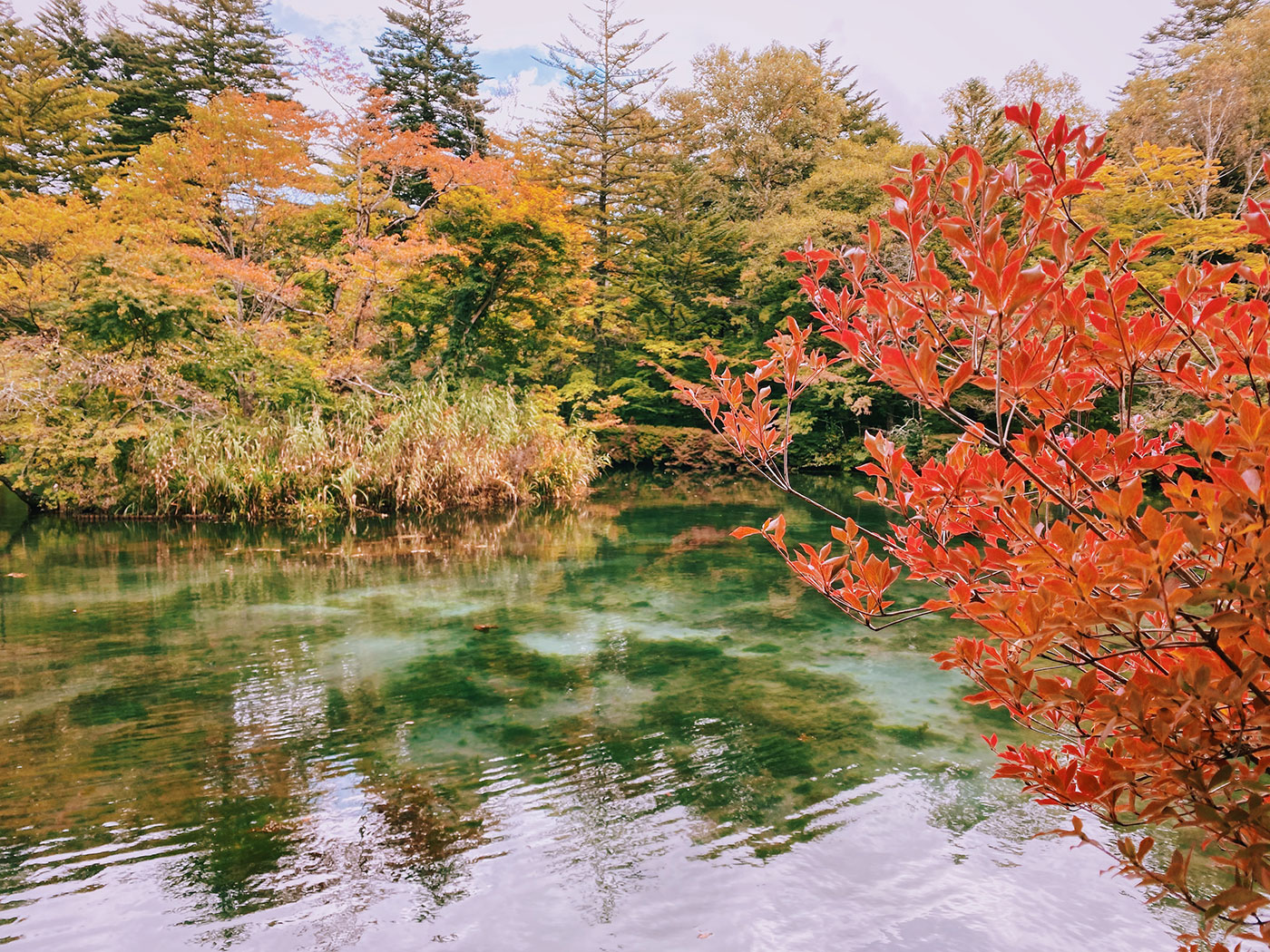
How to get around Nagano prefecture
Self Driving – Nagano prefecture is a large area to explore. If you have an international driver’s license and are comfortable with driving in a foreign country, this is the most convenient and flexible option since you won’t have to be dependent on public transport. You can book a car rental from Tokyo here, which you can pick up from the airport or the city:
- Car Rental Pick up from Narita Airport
- Car Rental Pick up from Haneda Airport
- Car Rental Pick up in Tokyo
By Train – If you can’t / don’t want to drive, then getting a JR Pass is still a great option. You can use the unlimited JR Pass , or if you’re only planning to visit Nagano then you can opt for the cheaper 5-day JR East Nagano pass , which will cover most of the itineraries below. Keep in mind JR Pass MUST be bought from outside of Japan, so get this before your trip!
The price of Unlimited JR Pass has increased by 70% since 1 Oct 2023 . Even though you’ll see many recommendations for buying a JR Pass to save some costs, it could be outdated. Since the price hike, it has become harder to justify the cost of the JR Pass, however regional passes like the JR West Kansai Pass might still be worth it. I am working on updating my blog post to reflect this change.
Tips for Roadtripping in Nagano Prefecture
Nagano prefecture is a mountainous area . If you are self-driving, make sure you know how to drive in the mountains. And, if you’re visiting in the winter, please be prepared to drive in icy conditions.
It’s worth noting most restaurants seem to close rather early here (8-8:30 pm) so make sure you’re well-fed by then unless you don’t mind eating at an Izakaya or meals from the Konbini (convenience store), which is really not that bad.
What to eat in Nagano Prefecture
1. soba noodles.
Due to the mountainous terrain of Nagano prefecture, it is difficult to successfully grow rice. Instead, soba (buckwheat) became the main produce of Nagano.
The most popular form of buckwheat is, of course, Soba noodles! I’m sure most of us are already familiar with this noodle – but in Nagano, you definitely can’t miss it. It’s served in almost every traditional restaurant. You can have Soba noodles in a hot soup or served cold with a broth on the side, and with various toppings.
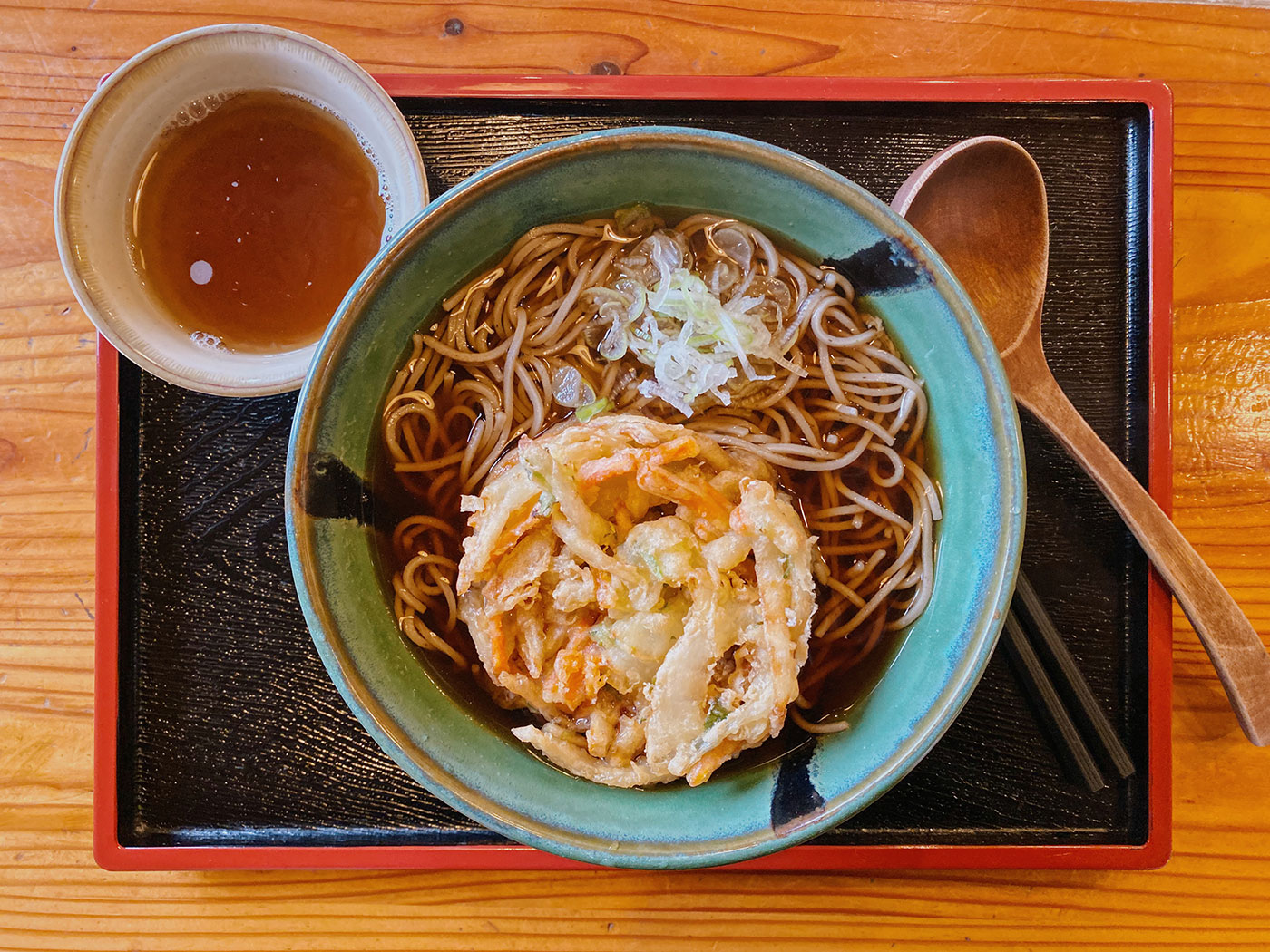
2. Oyaki (Savory or Sweet Dumpling)
Oyaki is a Japanese savory dumpling, traditionally stuffed with roasted local vegetables. Oyaki is super popular and widely available in Nagano. Like Soba noodles, It’s a great representation of the prefecture – Oyaki skin is made from buckwheat flour. I tried one near Matsumoto Castle which had leek, mushrooms, and potatoes. Apples and other fruits are also commonly used to make the sweet version!
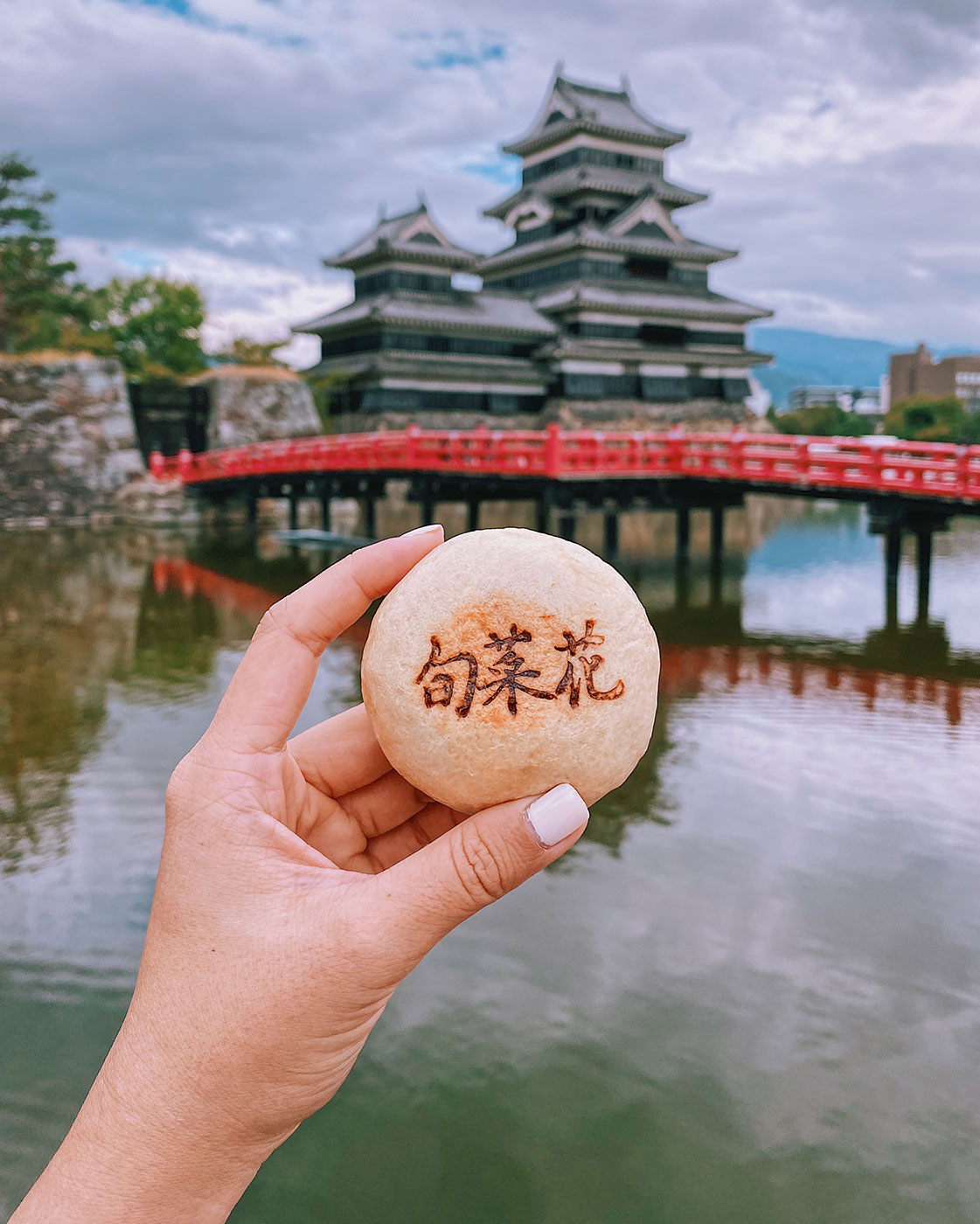
My 5-day Nagano Prefecture Itinerary
Here is my five-day itinerary when I went to Nagano. I think it’s a great itinerary as it combines both city exploration and nature! You can easily stretch this to more days too if you have more time than I did. I’ll include other places worthy of visiting that I didn’t get to go to.
Day 1: Karuizawa
Day 2: matsumoto.
- Day 3: Kamikochi (Japanese Alps)
- Day 4: Omachi – Lake Kisaki and Kurobe Dam
- Day 5: Kusatsu Onsen town
- What else can you see in Nagano?
And now without further ado, here’s what you can expect from each stop in my Nagano Itinerary:
Our first stop is a small town called Karuizawa. Although small, Karuizawa is hardly unknown to Japanese people. And especially to people from Tokyo, Karuizawa is known as an idyllic mountain town and an escape from the summer heat.

So what makes Karuizawa a worthy stop? Well, Karuizawa is the perfect mountain town that has everything: nature, hiking, good food, and shopping. I’ve written a separate blog post on Karuizawa which will tell you all about this town.
Tip! Find out more about what to do, where to stay, and what to eat in Karuizawa: Read my blog post on Karuizawa here
Where to eat in Karuizawa
- Cheesecake from Izumiya Saku at Harunire Terrace
- Sonmin-Shokudo at Hoshino Onsen
- Kumobatei next to Kumoba Pond
- SASA Japanese Cuisine – famous as the curry shop of one of the Terrace House participant
- Hamy’s
Where to stay in Karuizawa
- Karuizawa Pension Sato is where we stayed in Karuizawa. It’s a super cute 2-story house, located deep inside the foresty streets of Karuizawa, where you can pick rooms with either shared bathroom or private bathroom ensuite. Their price is the most affordable I could find in Karuizawa.
- Hotel Wellies – a cute british style cabin hotel located in the resort area of Karuizawa
- APA Hotel Karuizawa Ekimae – If convenience is what you’re after, this hotel is only 2 mins walk from the station with easy access to Karuizawa tourist spots.
From Karuizawa, we drove approximately 2 hours to Matsumoto. Honestly, the only reason why we made a stop here is because it is the closest point to Kamikochi, which is next on our itinerary.
1. Matsumoto Castle & Matsumoto City Museum
Matsumoto Castle is difficult to avoid when you are in Matsumoto. It’s definitely a must-do. Unlike the rest of the castles in Japan, Matsumoto Castle is unique due to its black exterior, which has earned its nickname “Crow Castle”. It is said the cost of the maintenance for this castle is high due to the material and man hours needed to keep up the black paint exterior.
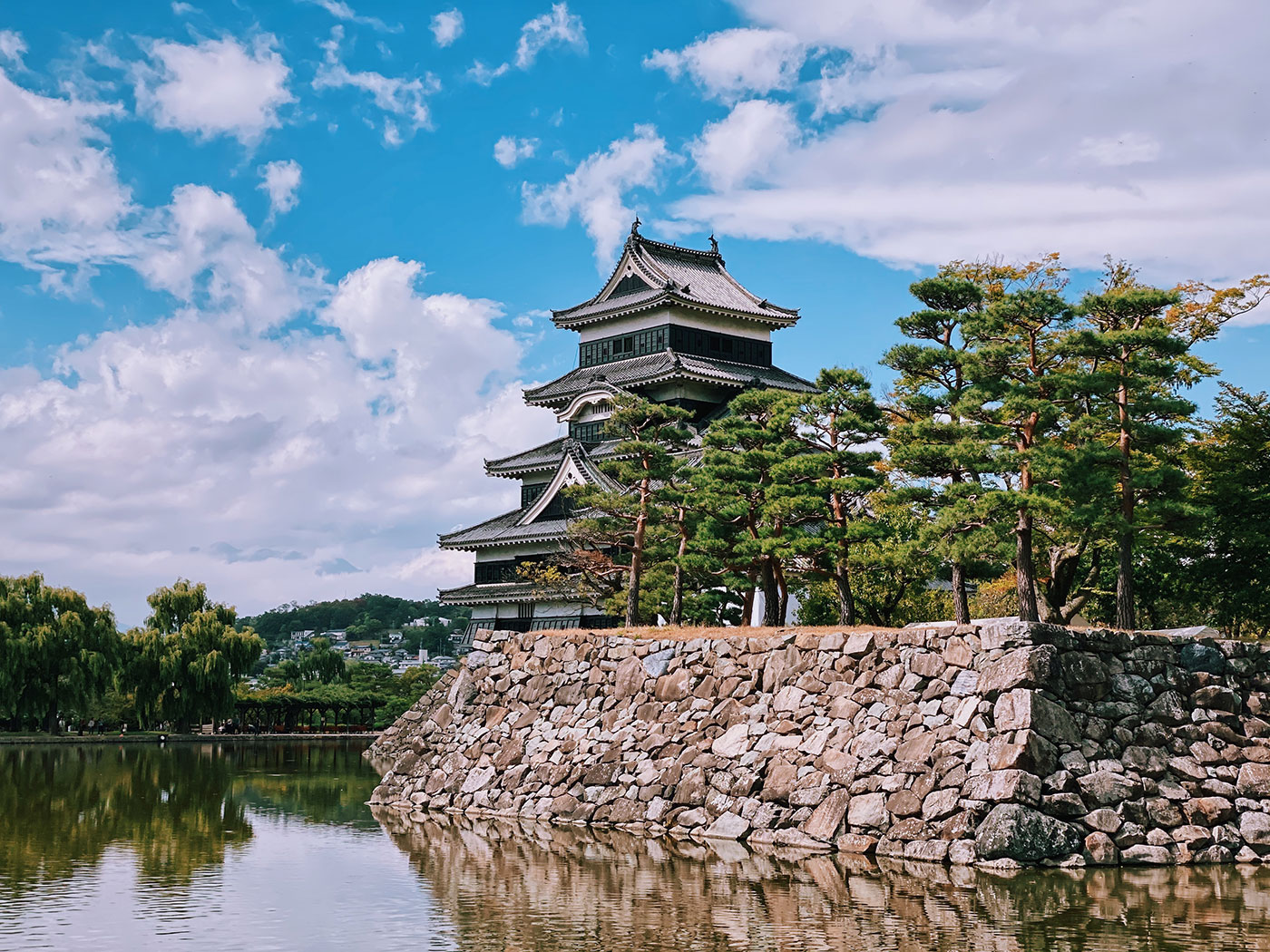
At the castle, you can opt to go inside and explore all 5 floors which I totally recommend. The castle gets more and more narrow as you reach the top and the stairs get steeper, but you get a nice view at the top where you can really see how this area is surrounded by mountains.
Next to the entrance to the castle is the city museum, which you can explore after the castle.
2. Matsumoto City Museum of Art
Matsumoto City Museum of Art is a must-stop if you’re a fan of the works of Yayoi Kusama, arguably one of Japan’s most famous contemporary artists who was born and raised in Matsumoto. Heck, even if you have no idea who Yayoi Kusama is, I still think the permanent exhibition is worth a visit! It only costs 400 yen to enter and you can go through it in less than an hour. Keep in mind the museum is closed on Mondays.

In this museum, you can see permanent collection of her works. While you won’t see the famous “Infinity Mirrored Rooms” (which has gone viral thanks to Instagram and commanded hours of queue at The Broad in Los Angeles ) you’ll get to see many of her early works and an insight into her quirky mind.
3. Former Kaichi School
Kaichi School was one of the first schools in Japan. If you are interested in seeing how schooling was done, I suggest visiting this place. However, if you are out of time you can give it a miss.
4. Nawate Dori
Nawate Dori is a shopping strip where the style of the shops is preserved to look like how it would back when Matsumoto was a castle town. You can find souvenir shops, vintage goods shops, and most importantly, please stop by Furusato for a delicious treat of Taiyaki!
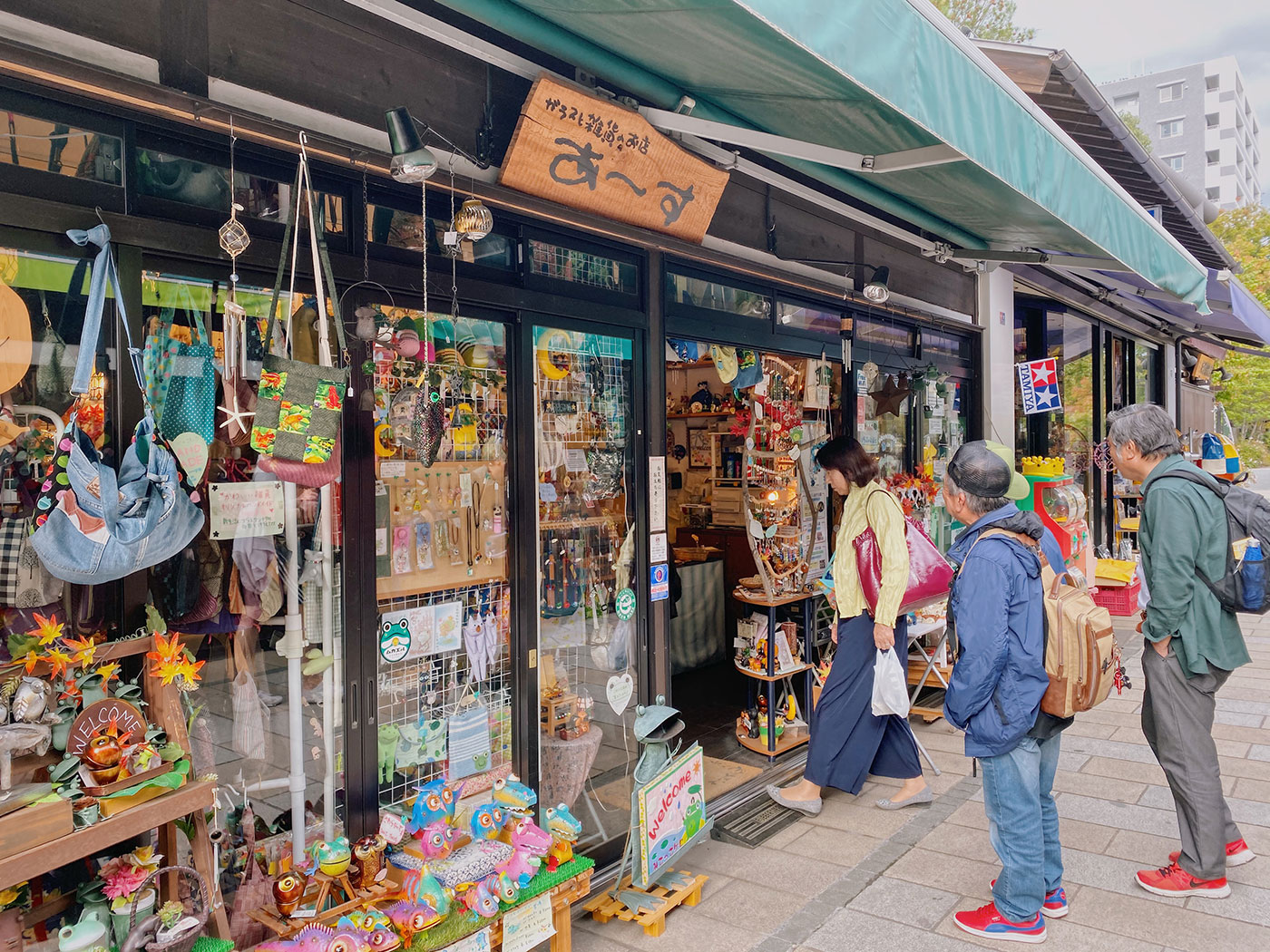
5. Asama Onsen
What is Nagano without a daily visit to the onsen? Okay, fine, maybe it’s not normal to go to Onsen every day, but we made a point to try an Onsen in each of the places we stopped by. Asama Onsen is out of the way from the city, so you don’t have to stop by here if you’ve done / planning to do onsen elsewhere (Kusatsu might have been the better choice).
Anyway, compared to Hoshino Onsen from Karuizawa, Asama Onsen is much more simple. Their price is very simple too – more than half of Hoshino at 600 yen per adult. Inside, you can find one cold pool, one hot pool, and one outdoor pool. I suggest trying the hot/cold bathing method – first, take a shower and then dip yourself into the hot pool. Once you feel that your body temperature is high enough, go to the cold pool and dip yourself. Then go back to the hot pool. It sounds crazy, but I’ve been told this builds immunity!
Where and where to eat in Matsumoto
- Miyota Soba
- Matsumoto Fried Chicken at Matsumoto Karaage Center
- Furusato Taiyaki at Nawate-dori
Where to stay in Matsumoto
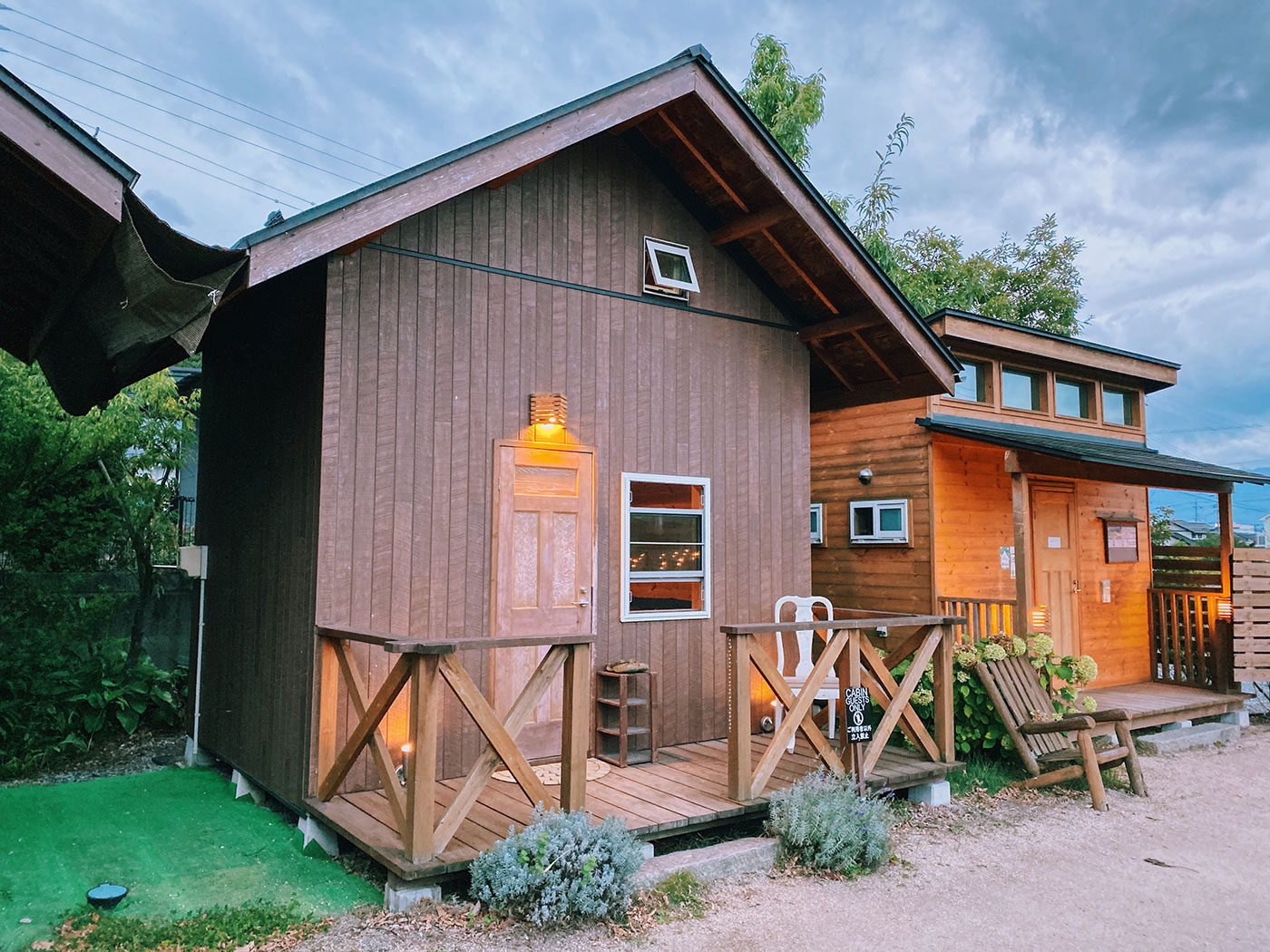
- We stayed at L-BASE Fuchian Mura , and got one of their mountain lodge/holiday home. It’s a super small yet cozy wooden lodge with a bed located on the second floor. I posted this on Instagram and got so many requests to reveal the location, so here you go! L-BASE isn’t located in the city itself though, so it might be a bit inconvenient if you aren’t driving – but it’s still within walking distance to one of the train stations.
- Premier Hotel Cabin Matsumoto – If you need to stay close to the train station, this hotel is a great choice. It’s close to the Matsumoto castle and city center.
- Dormy Inn Matsumoto – Also a great option for staying near the city center.
Day 3: Kamikochi
Kamikochi is part of the Chubu Sangaku National Park, also known as the Northern Japanese Alps . It has also been referred to as the “Japanese Yosemite Valley”, due to the similarity of the terrains found in Kamikochi.
I gotta admit – this entire itinerary was built around our plan to hike in Kamikochi! I saw one photo of Kappabashi (below) and I was sold.
As there is a lot to say about this place, I’ve written a separate guide on hiking in Kamikochi . This includes what to expect and places to stay, as well as day trip options if you’re not in the mood to hike.
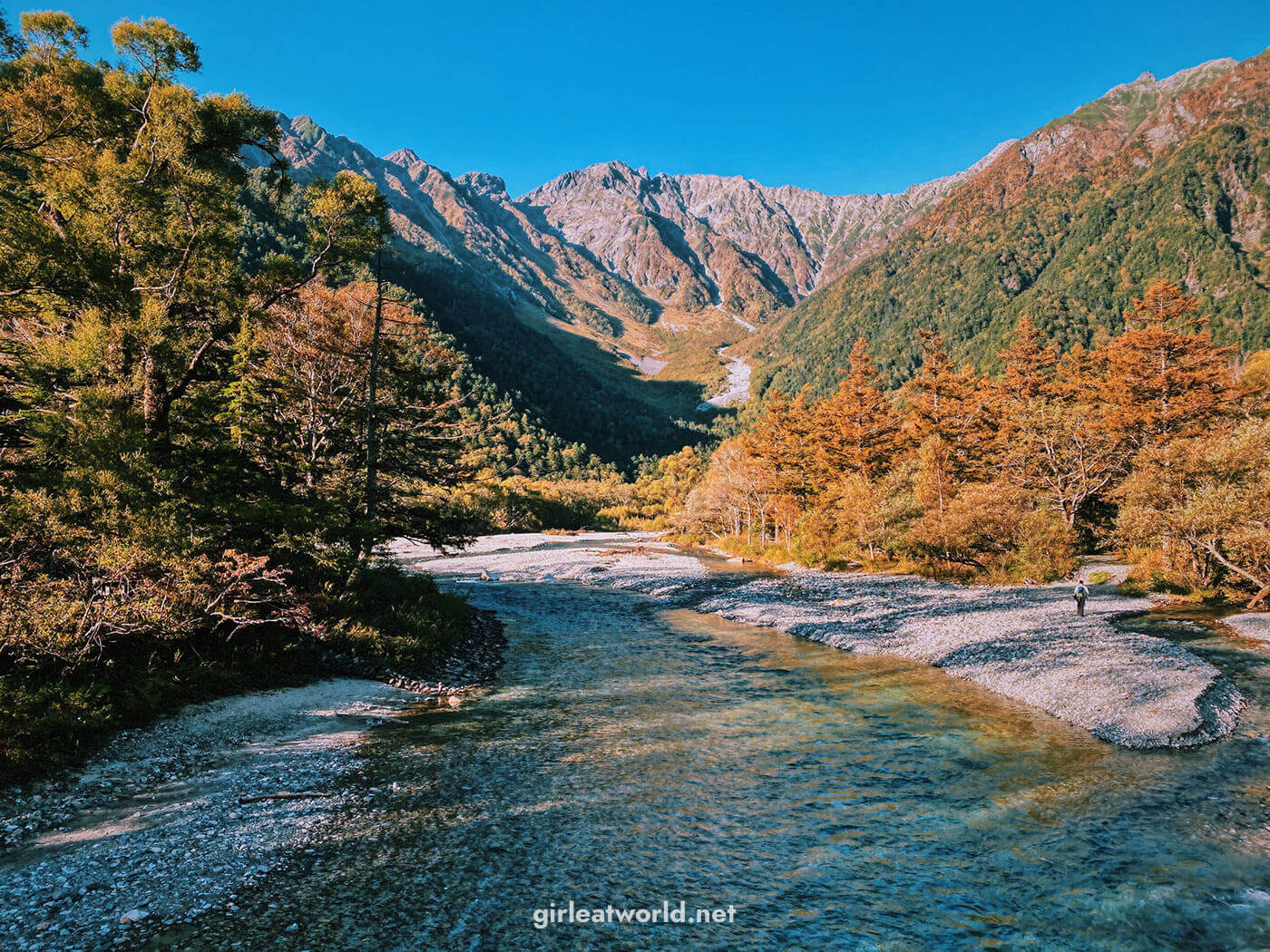
Keep in mind though, Kamikochi is only open from April 15 – November 15 . You need to check their official website at kamikochi.org for exact dates, as it may change on a yearly basis. The park closes down for winter and you cannot visit, so it’s best to skip if you’re here during the winter months.
Day 4: Omachi – Lake Kisaki & Kurobe Dam
I designated this day as our rest day after the insane 10 hours hike / walk we did in Kamikochi , but we still ended up walking around plenty!
1. Lake Kisaki & Kizakiko Camping Ground
If you did the same hike as we did and stayed in Kamikochi, then you have the option to go straight to Lake Kisaki once you’ve left Kamikochi. It’s about 2 hours drive from Kamikochi.
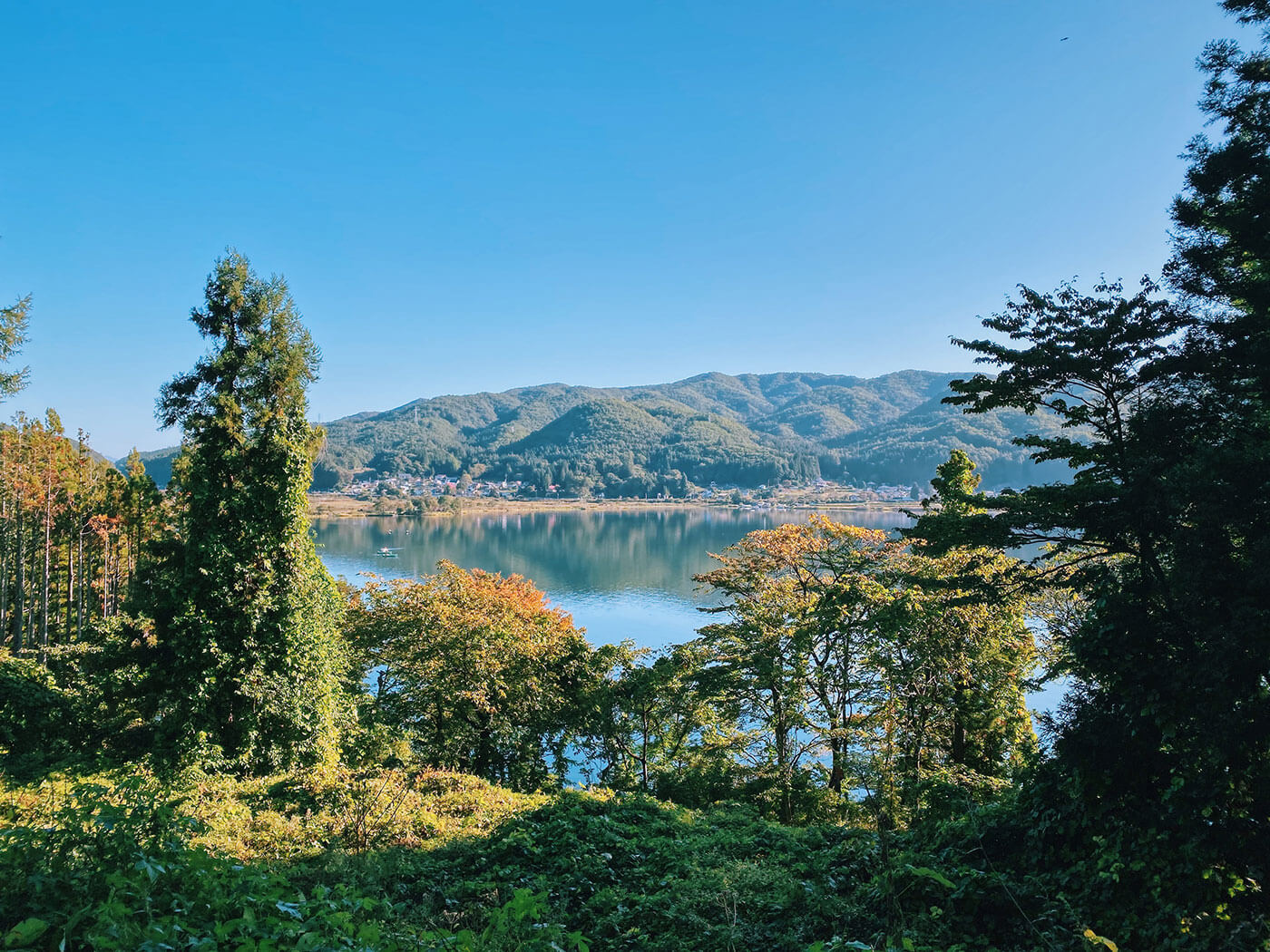
Lake Kisaki is a fairly small lake – walking the perimeter of this lake takes about an hour, and it’s mostly lined by holiday houses and farms. There isn’t much to do here, but relax. That’s the main reason why we came here! To stay at one of the lake side lodge and rest after our Kamikochi trek.
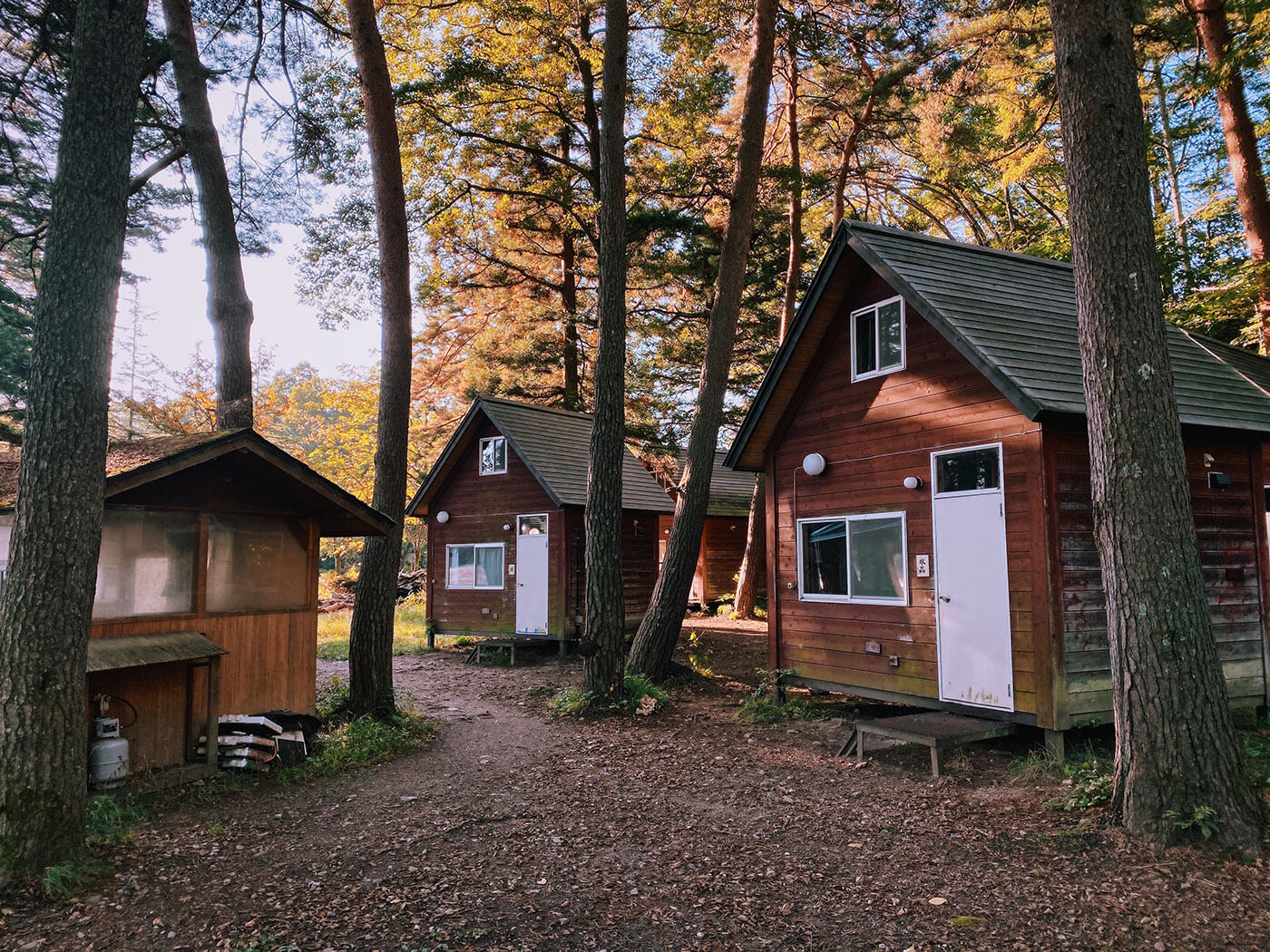
If you feel like going to an onsen, there’s (of course) one nearby the camping ground called Yupuru. This one is the most basic out of all the onsen I’ve visited so far, with only one indoor pool and a washing area. It costs 700 yen per adult to enter.
2. Kurobe Dam
Kurobe Dam is one of the marvel of Japanese engineering, built in the post-WWII era to resolve drought and power shortage in the area. It is the tallest dam in Japan at 186m high, completed in 1963 after an arduous 7 years of construction which claimed the lives of 171 workers.
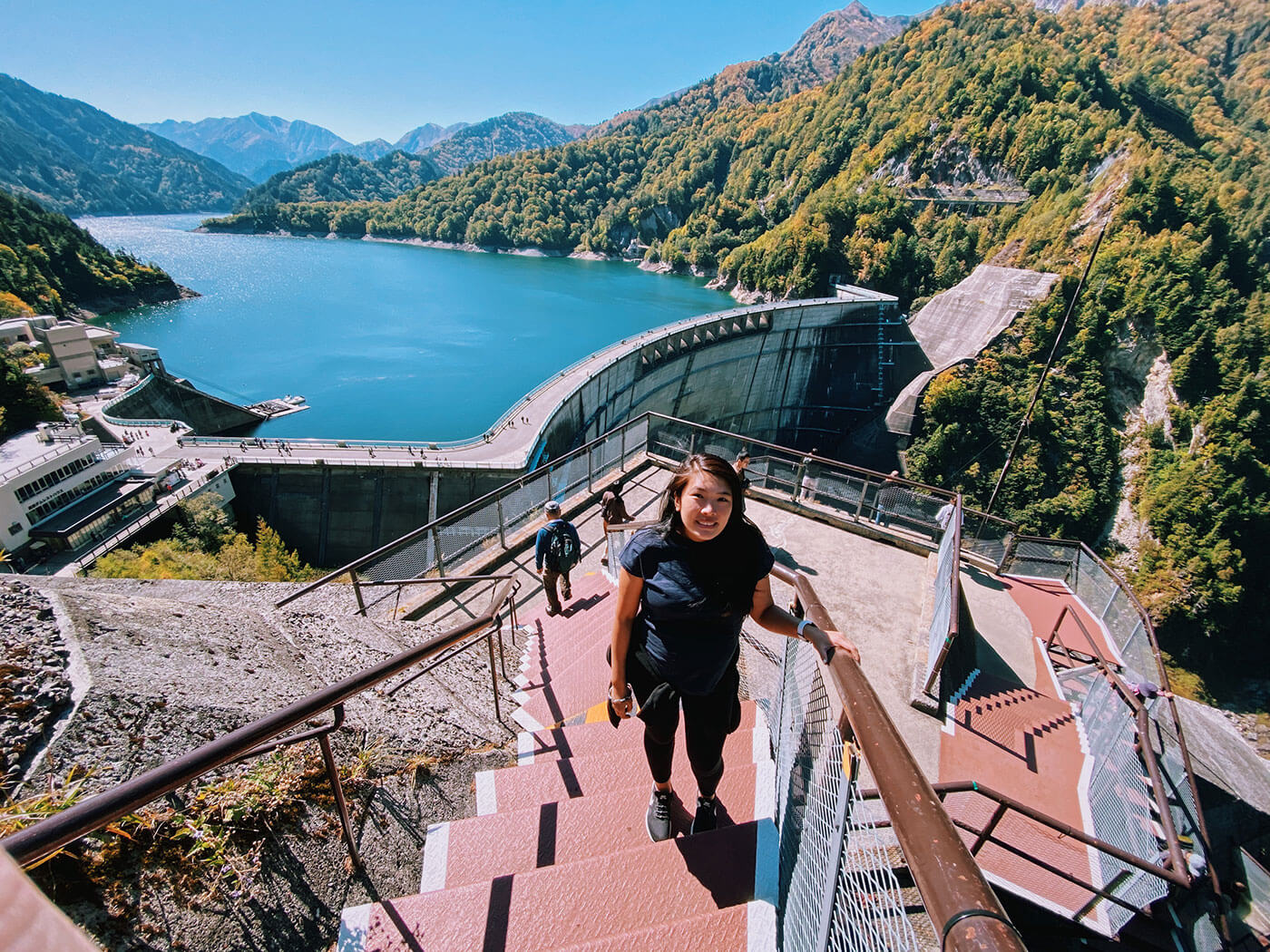
Kurobe Dam station is only about 30 minutes drive from Lake Kisaki. From the station, you need to take one of their electric buses through Kanden Tunnel to continue your way up to the dam itself. You get to pass through the famed “fracture zone” which made the construction of this dam so difficult. The temperature in this tunnel is very cold regarding the outside temperature – it always remains around 10C.
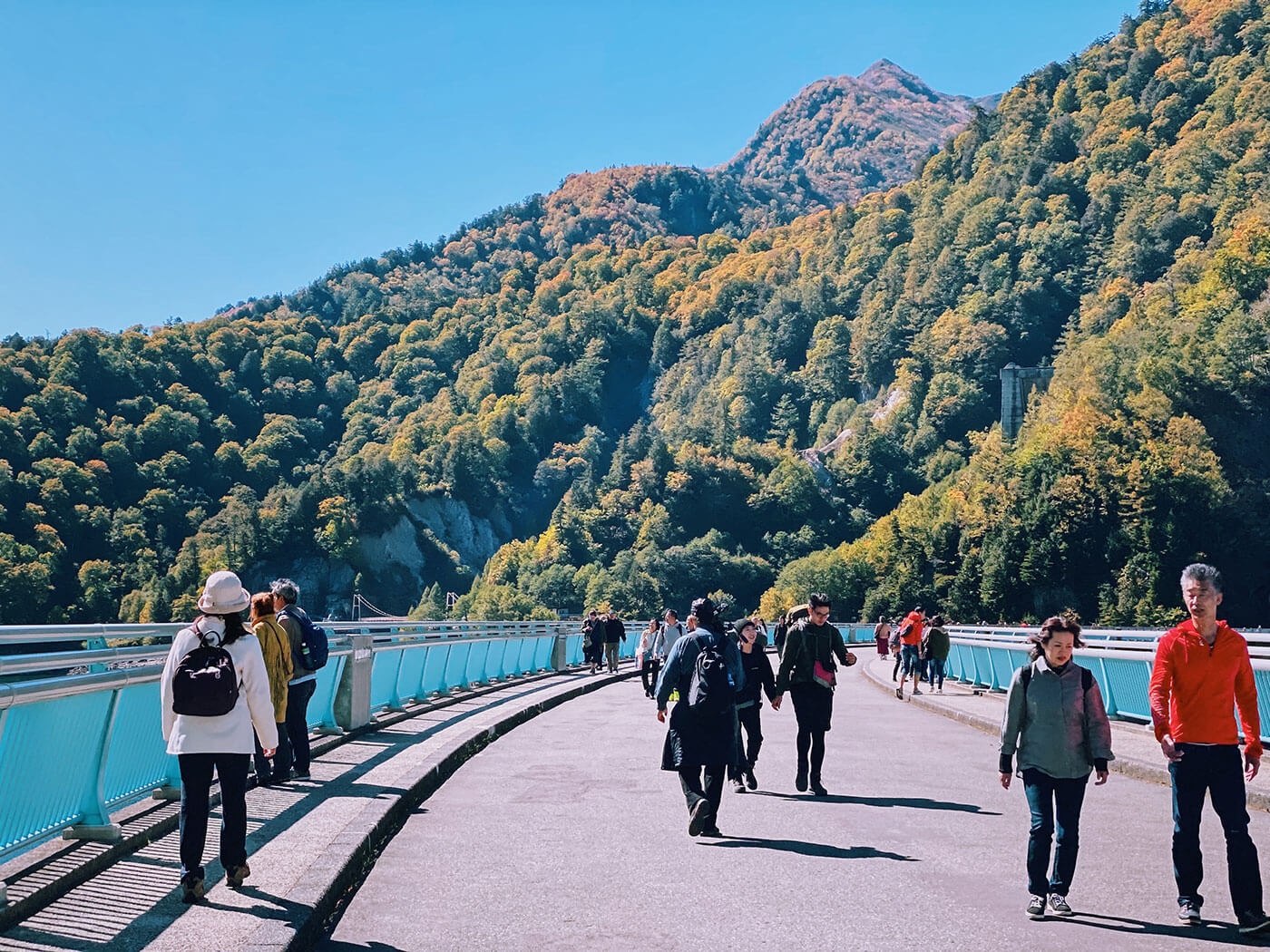
If you happen to be here on a beautiful day, a visit to the dam is totally worth it. It’s also part of the Japanese Alpine hiking route (the Tateyama Kurobe Alpine Route to be exact), so you might see hikers in their gear and bear bells walking across the dam!
What and where to eat
- Kurobe Dam Curry – This dish is technically just a Japanese curry dish, which is already delicious on its own, what makes the dish an Omachi specialty is the way it’s served. The Japanese white rice is moulded to the shape of Kurobe Dam, and the sauce is green (from Spinach) to represent the color of the water in Kurobe dam. Two pieces of nuggets are also served to represent the boats that you can take during certain months in Kurobe Dam. You can have this dish at the Kurobe Dam restaurant or at Yupuru onsen restaurant near Lake Kisaki.
Where to stay
- Kizakiko Camping Ground – We booked a lake-side bungalow at this camping ground. It was not cheap by any means (8000 yen a night!), especially for how simple the bungalow is, but the location couldn’t be better. It’s literally by the lakeside! The only issue is that booking needs to be done in Japanese.
- Hotel Yume-no-yu – A ryokan with a private bathroom and its own onsen in the vicinity.
- Nanakuraso – This ryokan is located conveniently in Omachi town.
Day 5: Kusatsu
Kusatsu is such a charming little town. The entire vibe of the city reminds me of Spirited Away, and it’s made extra whimsical on cold nights since the natural hot spring would occasionally stir up steam into the air. Many visitors would dress up in a Yukata (Japanese summer wear) and Geta (wooden slipper) while going to an onsen.
Read more: If you’re visiting Kusatsu, take the time to read my Kusatsu travel guide
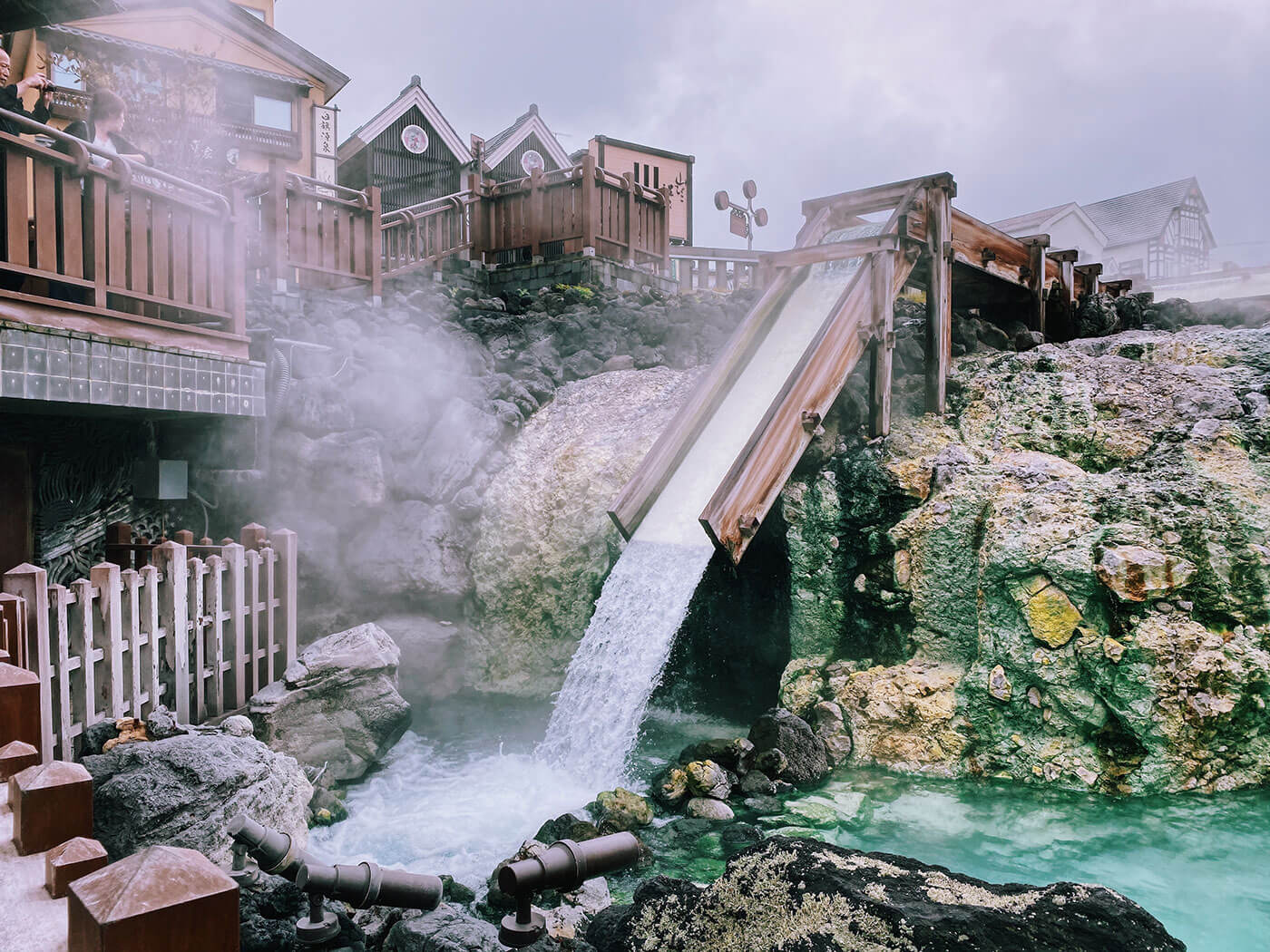
Where to stay in Kusatsu
- Ryokan Tamura – If staying near the town center is your priority, then this Ryokan fits the bill. It’s a cute Japanese-style inn located minutes from the town center.
- Hananigen – Similar to Tamura, Hananigen is also a ryokan located within minutes of Kusatsu town center.
- Kusatsu Onsen Eidaya – Slightly cheaper ryokan as the location is a bit further away from the town center, but still within walking distance!
What else you can see in Nagano Prefecture
If you have more time in Nagano and wondering what else to do, here are some recommendations you can check out.
- Jigokudani Monkey Park – You’ve probably seen photos of Japanese Macaque (monkeys) taking a bath in an onsen.
- Mount Kusatsu-Shirane – I really wanted to check out this mountain, but unfortunately, it was closed during the time I visited as it is an active volcano and there were a lot of activities observed around the mountain.
- Nagano City – Nagano City is the capital of Nagano prefecture. Most famous for hosting the 1998 Winter Olympics, you can still see the remnants of Olympics architecture around town.
- Hakuba – Most famous as a ski resort, Hakuba is best visited during winter.
So that’s all my itinerary for Nagano prefecture! After leaving Kusatsu, we drove straight back to Tokyo.
A little trivia: I was actually there right on the day before Typhoon Hagibis was set to hit the center of Tokyo. It was rated as the biggest Typhoon of the year, and we could already see the weather being affected by the incoming typhoon – it started to rain, whereas the previous days were clear sunny days. It was also my first time hunkering down for a typhoon. Thankfully for us, the typhoon did not cause too much damage in Tokyo itself. However, we heard Nagano prefecture was flooded and we were lucky to have gotten out just in time.
As usual, feel free to leave comments if you have any questions! I will always reply 🙂
- November 1, 2023
Great info and beautiful photos. Details will come in handy. Planning a trip with family next fall. Thanks a lot!
- May 30, 2023
Wonderful tips! I used a lot of them on my one week Nagano trip. Thank you for posting and your incredible work.
- November 13, 2022
Hi … is parking easy on your trip ? Are the charges expensive ? Does the lodging provide free parking ?
- November 15, 2022
Hey Alvin, parking was pretty easy when we went. Some lodging provides parking, it depends where you book. Usually if its city center they probably don’t have parking. Parking cost was ok, less expensive than Tokyo.
- May 7, 2022
Nagano is one of my favourite areas for travel in Japan. I recently explored Kumamoto as well. Maybe you already know it? anyway, thanks for reading my comment.
- January 6, 2020
Its seems like perfect place where we can enjoy and see natural beauty of nature. I love Japanese Food and I will try to visit their with my best ones.
- December 11, 2019
Love following your blog. It is most informative with useful and relevant detail. Also sharing a common interest of travel, food ,culture and dive experiences. Have you looked into Shikoku island, Japan or had been there already! Thank you for sharing your experiences.
Leave a Reply Cancel reply
Your email address will not be published. Required fields are marked *
Save my name, email, and website in this browser for the next time I comment.
40 Things to Do Around Nagano & Where to Stay
Lying in the centre of Honshu, Japan’s largest island, Nagano is the country’s fourth largest prefecture. Completely landlocked, Nagano is known for its mountains, natural landscapes, liveability, abundant farmlands, wildlife and of course, many ski resorts. Nagano City is largest city in Nagano Prefecture and the most convenient point from where to explore the many destinations on offer in Central Japan. On this page you will find the following information:
— Where is Nagano City?
— 40 Best Things to Do Around Nagano
— Where to Stay In Nagano?
— How to Get to Nagano City
— Tours and Charters to the Monkey Park
As the proud host of the 1998 Winter Olympics and home to the now world-famous Jigokudani Monkey Park, Nagano has a strong association with winter. It’s for good reason! Home to around eighty ski resorts and boasting the majority of Japan’s tallest mountains, Nagano is indeed a land of heavy snow and deep cold each winter – a combination that attracts skiers and snowboarders from all over the world. Yet there’s just as much to do outside of winter! As the snow melts in spring, a fertile and lush landscape is revealed offering some of Japan’s best hiking and mountaineering, along with other outdoor pursuits and plenty of great food.
We are proud to call Nagano our home and hope this page entices you to visit. As a registered travel agent and Nagano’s No.1-rated tour and charter operator , we offer both group and private tours, ski and travel packages, accommodation, private charters and more! For further details, scroll to the bottom of the page. Let’s start with the obvious question:
WHERE IS NAGANO CITY?
Located around 245KM to the north-west of Tokyo, Nagano City is the largest city in Nagano Prefecture and the primary transport hub for visitors heading to the region’s most popular destinations including the many ski resorts of Nagano, the Jigokudani Monkey Park, the Tateyama-Kurobe Alpine Route, multiple national parks and many other fantastic attractions. Nagano Station is a stop on the Hokuriku Shinkansen line running from Tokyo to Kanazawa – 80 to 110-minutes from the capital depending on which service you choose – along with the Limited Express ‘Shinano’ service running to Matsumoto, the Kiso Valley and Nakasendo, and Nagoya; while the Nagano Dentetsu Line runs to Yamanouchi, home of Nagano’s famous Snow Monkeys. Highway and local bus services also run from the station to many regional destinations including Togakushi, the monkey park and the ski resorts of the Hakuba Valley and Shiga Kogen – Japan’s largest resort – making Nagano City the primary transport hub for northern Nagano Prefecture. While Nagano may be the largest city in the region, it is small compared to the expansive metropolises of Japan with a population of around 370,000. One of Japan’s most liveable cities, Nagano is most famous for the near-1400 year old Zenko-ji Temple – a registered National Treasure and one of the most important Buddhist complexes in Japan – along with the Shinto shrines of Togakushi and samurai town of Matsushiro, that lie within the city boundary.
40 BEST THINGS TO DO AROUND NAGANO
Best Places to Stay in Nagano
Nagano City is the largest city in Nagano Prefecture and the primary transp…
Host of the 1998 Winter Olympics , Nagano is known best for its long winter and world-class snow. Boasting the most ski resorts of any region of Japan, there is no doubt that when it comes to skiing and snowboarding, Nagano is one the best destinations in Asia. However the mountains are just as big outside of winter and offer just as many reasons to visit in spring, summer and autumn. When visiting the region, chances are you’ll do so via Nagano City so let’s start there with our suggestion of the best things to do while in Nagano:
1 / ZENKO-JI TEMPLE – NAGANO’S SPIRITUAL HEART / all year round
Founded in 642, Zenko-ji is one of the oldest and most important Buddhist temples in Japan . Less than 20-minutes walk from Nagano Station, follow the city’s historic thoroughfare – the ‘Omotesando’ or ‘Pilgrim’s Way’ all the way to the temple. Arriving at Zenko-ji, visitors discover one of the most welcoming temples in Japan. Housing the oldest known Buddhist statue in Japan, the main temple is a registered National Treasure and the spiritual heart of the region. A morning ceremony takes place every day of the year, with visitors of all faiths and backgrounds welcome, with the temple also hosting several major festivals each year. Within and around the temple complex, guests can stay overnight at one of many traditional ‘shukubo’ (temple lodgings) , offering the most memorable and rewarding way in which to experience Zenko-ji.
However, the history and culture around Zenko-ji temple is not necessarily readily apparent. To make the most of your visit and ensure that you do not miss out on any of tidbits of knowledge and fascinating facts about the Temple, the best option is to take a guided tour with a knowledgeable guide. See below for more information about our tour of the region.
2 / BUDDHIST EXPERIENCES AT ZENKO-JI / all year round
Known as one of Japan’s most open and welcoming temples, Zenko-ji offers visitors of any faith and background the opportunity to try several key Buddhist practices All led by resident monks, ‘goma’ prayer (fire ceremony) , ‘shakyo’ (calligraphy) and ‘zazen’ (seated meditation) experiences are available upon request. Experiences take different lengths of time and can be booked on most days, as long as you provide adequate notice. Visitors wanting to extend their knowledge of the temple might also like to consider booking a tour with us – see below for details.
3 / THE FOREST SHRINES OF TOGAKUSHI / all year round
Japan’s native religion of Shintoism has its roots in nature worship and a belief that notable natural features are imbued with divinity. This belief is on grand display in Togakushi , where the five shrines making up the Shinto complex are spread through the forest with trails leading from one to the next. Of the five, the ‘Okusha’ (Upper Shrine) is the best known due to the avenue of giant cedars leading to it. Many of the huge trees are between 400 to 800 years old and considered inhabited by ‘kami’ or ‘the divine’, meaning that they have as much importance as the shrine itself.
Approaching the Okusha from Nagano, you will pass the largest of the five shrines – the ‘Chusha’ (Middle Shrine). Accessible via walking trails or directly via car or local bus, the shrine is dedicated to wisdom and famous for several enormous cedars that estimated to be around 800 years old. Surrounding the middle shrine, several ‘soba’ restaurants and bamboo craft shops are within easy walking distance.
Togakushi can be quite time consuming to reach if you do not have a rental car. Instead, why not leave it up to the pros and take part in our guided tour of the area which includes accommodation?
4 / RELEASE YOUR INNER NINJA / April to November
For more than 800 years, Togakushi has had a strong association with Japan’s fabled ninjas. Established in the 12 th century, the Togakure school of ninja was founded in the mountains of Togakushi and though practicing ninja maybe few and far between these days – believe it or not there are still some – the mountains and forests of Togakushi now play host to a ninja museum and kids village. Located directly across from the cedar avenue leading to the Okusha, the Togakure Ninpo Museum showcases the local Togakure school of ninja including exhibits of tools and weapons used. Visitors can try their hand at essential ninja skills such as throwing ‘shuriken’ (ninja stars) while the highlight of the museum lies in wait at the Ninja House. Rigged with secret doors, passages and traps to confuse those who enter, the aim is simple – get yourself back out of the house! The house is a true maze, equally fun for adults as it is children
The ‘Chibiko Ninja Mura’ (Kids Ninja Village) is located within 15 minutes walk of the Chusha (Middle Shrine) and designed for children with obstacle courses and everything they need for ninja training. Activities including blow darts and shuriken are available at an extra charge. Children can also dress-up in ninja outfits for the duration of their visit. Two ninja mansions include trapdoors and contraptions, to confuse and delightful the kids as they attempt to escape.
5 / MYOKO-TOGAKUSHI RENZAN NATIONAL PARK / all year round
Located around 1200 metres above sea level, Togkaushi is nestled within the larger Myoko-Togakushi Renzan National Park. The park is densely-packed mountainous area of forests, waterways, ski resorts and important mix natural and cultural sites. Among its multiple peaks Mount Hiuchi is the tallest at 2,462 metres above sea level while the park takes its names from the peaks of Mount Myoko and Mount Togakushi.
Extending into Niigata and the ski resorts surrounding Mount Myoko, the national park is a destination to itself that can be enjoyed throughout the year.
6 / MATSUSHIRO: NAGANO’S SAMURAI TOWN / all year round
15 Things to Do in Matsushiro & Where to Stay
Located 12KM to the south of central Nagano City, Matsushiro is a small tow…
Located 12km to the south of central Nagano City, Matsushiro is a small enclave known for its samurai heritage and as the former stronghold of the Sanada clan. Originally from Ueda, the Sanada clan relocated to Matsushiro during the 17 th century. Today, the town’s samurai heritage lives on many excellent Edo Period attractions including Matsushiro Castle Park, the former Sanada Residence and Bunbu Military Academy, other samurai residences, temples, shrines and museums.
7 / MATSUSHIRO: ZOZAN WAR TUNNELS / all year round
Less apparent than Matsushiro’s celebrated samurai heritage, the town is also home to an open secret beneath its feet. Excavated in the final months of WWII, the Zozan Imperial Wartime Tunnels were the intended headquarters of the Japanese military and government during the expected invasion by the Allied Forces. An extensive network of tunnels and subterranean bunkers were around 75% completed when the war came to an end and were as a result, never used. Formally referred to as ‘Matsushiro Daihonei’ or the ‘Matsushiro Underground Imperial Headquarters’, a 500 metre tunnel remains open to the public.
8 / JIGOKUDANI MONKEY PARK / all year round
Located in the Yamanouchi area of Nagano, the Jigokudani Monkey Park is one of the region’s most popular destinations. Most famous for their hot spring-loving antics of winter, the monkeys actually come to the park all year round. Each season provides its own unique reasons to visit the park; from the curious sight of the monkeys enjoying life in the snow through winter, to the cherry blossoms and baby monkeys of spring, hot and lush surroundings of summer and the beauty of the leaves in autumn.
Want to turn your visit to the monkeys into a real experience? Why not join one of our tours to the park! Operating through the year all tours are led by locally-based guides and include entry to the park, all transport costs, lunch and other activities.
9 / EXPLORE YAMANOUCHI – HOME OF THE SNOW MONKEYS / all year round
25 Things To Do Around The Jigokudani Monkey Park & Where To Stay
Within easy reach of Nagano Station, the monkey park is one of the region’s…
Home to the Jigokudani Monkey Park and ski resorts of Shiga Kogen and Kita-Shiga Kogen, Yamanouchi is at its most popular in winter yet offers just as many reasons to visit through spring, summer and autumn. Blessed with abundant farmlands, pristine nature, numerous hot springs and heavy snow in winter, Yamanouchi has a strong association with healing, refuge and renewal and Yamanouchi is divided into three areas – Yudanaka & Shibu Onsen, Shiga Kogen and Kita-Shiga Kogen. Staying a one of Yamanouchi’s many guesthouses is an ideal way to enjoy Japan’s renowned traditional service – including traditional ‘kaiseki’ (multi-course) dining that showcases the abundant produce of the region. For further information, see our ‘Discover Yamanouchi – Home of the Snow Monkeys’ page .
10 / SHIGA KOGEN: JAPAN’S LARGEST SKI RESORT / late-November to May
Located a short distance from the Jigokdani Monkey Park, Shiga Kogen is Japan’s largest and highest ski resort . The resort is comprised of 18 ski areas – some large, some small – spread over more than 600 hectares of terrain and offering more than 80km of ski runs. Spread between five mountain peaks, Shiga offers visitors an unparalleled expanse of interconnected terrain with free shuttle buses running around the resort to the few areas that are not connected. Shiga Kogen’s higher altitude means it receives snow earlier than nearby resorts and keeps it for longer, blessing the resort with the longest season and best spring skiing in Nagano.
Nearby but not connected to Shiga Kogen, the four ski resorts making-up Kita-Shiga Kogen live in the shadow of their much larger neighbour, but also win lots of fans including locals. Of the four resorts, Ryuoo Ski Park has the most to offer with some excellent powder up top and long runs all the way back down.
11 / OTHER WINTER ACTIVITES IN SHIGA KOGEN / December to March
Outside of skiing and snowboarding, Shiga Kogen offers a range of family-friendly facilities for visitors. If you are visiting the resort with children or don’t have much experience and looking for a fun and easy activity, Maruike Snow Activity Park – located in the Maruike ski fields – is a great option for you! The activity area is fenced-off and provides you with a various gear including sledges, snow-tubes, snowscoots and snowdrives and lots of snow to make a snowman or have a snowball fight. Further into the resort, the Yakebitaiyama Family Snow Park is located directly outside of Prince Hotel West, offering a similar range of activities for kids, families, or anyone wanting to release their inner-child!
12 / HAKUBA VALLEY: NAGANO’S MOST INTERNATIONAL RESORTS / December to late-March
Located between 60 to 90-minutes drive from Nagano Station, the ski resorts making-up the Hakuba Valley are considered some of the best in Japan. In total, ten resorts make the area collectively referred to as ‘Hakuba Valley’, offering skiers and snowboarders a vast amount of terrain and spectacular alpine views. Having hosted several events during the 1998 Winter Olympics, Hakuba Happo One Snow Resort is the best known and largest of the lot. Within walking distance of the Hakuba Happo Bus Terminal, Happo One has a fantastic range of terrain including epic backcountry.
Nearby Hakuba Goryu Snow Resort and Hakuba 47 Winter Sports Park are connected and can be enjoyed on a single all-mountain pass. Rivalling Happo One in size and boasting Hakuba’s longest season, these resorts always popular with international visitors. These are only three of the many fantastic resorts of Hakuba!
13 / NOZAWA ONSEN, MADARAO, & BEYOND! / December to April
Around 70-minutes drive from Nagano Station or only 20-minutes from Iiyama Station, Nozawa Onsen Snow Resort is one of Nagano’s most popular resorts – offering skiers and boarders around 300 hectares of train between 565 and 1650 metres. Also known for its great powder and setup for snowboarders, Nozawa is a lively resort serviced by a large village full of accommodation, restaurants and bars and ‘onsen’ (hot springs), Nozawa’s reputation is as much based on what happens off the mountain as what happens on it. Across the valley from Nozawa Onsen, Madarao Mountain Resort has quickly found popularity due to its heavy snowfall, great powder and super enjoyable tree runs.
Only 30-minutes drive over the backside of Madarao, the resorts of Myoko Kogen are quickly coming to the attention of international visitors who have discovered its epic powder. Actually located in Niigata rather than Nagano and nearby the coast, Myoko receives a massive amount of snow each year. The resorts making-up the area collectively known as ‘Myoko Kogen’ are less developed than resorts such as Nozawa Onsen and have pretty liberal policies when it comes to backcountry, making Myoko the up-and-coming destination for international powderhounds.
14 / EXPERIENCE THE BEST OF NAGANO ON A GUIDED TOUR / all year round
Operating all year round, we are Nagano’s No.1 tour provider . Throughout the year we offer a range of group tours, many of which combine a visit to the monkeys with some of Nagano’s best experiences and destinations. Our longest running and most popular tour – 1-Day Snow Monkeys, Zenko-ji Temple & Sake Tour – combines a visit to Nagano’s near-1400 year old temple, followed by a guided ‘sake’ tasting experience and lunch, and early afternoon visit to the monkeys.
For visitors in spring, enjoy a visit to the monkeys with an afternoon wandering beneath Nagano’s beautiful cherry blossoms on our 1-Day Snow Monkey & Cherry Blossoms in Nagano Tour .
Visitors in winter can enjoy the best of Shiga Kogen in combination with a visit the monkey park on our 1-Day Snow Monkeys & Snow Fun in Shiga Kogen Tour , operating from December to March each year. Of course, not all of our tours head to the monkeys with other options including the stunning alpine valley of Kamikochi or fabled Snow Walls of the Tateyama-Kurobe Alpine Route. All tours are led by locally-based, English-speaking guides and include all transport and entry costs. See our ‘Tours’ main page for a complete listing of our tours throughout the year.
15 / ENJOY SOME OF JAPAN’S BEST HOT SPRINGS / all year round
Home to countless natural hot springs, enjoying an ‘onsen’ while in Nagano really is a must-do activity! In the cold months of winter and cooler months of autumn, dipping into a thermal bath feels fantastic whereas in the warmer months of spring and summer, the initial heat of onsen leads your body to cool itself – a truly pleasurable feeling. Spread throughout the region, the historic onsen towns of Nagano – including nearby Yudanaka Onsen and Shibu Onsen , Nozawa Onsen, – have numerous ‘ryokan’ (traditional guesthouses) with their own in-house onsen. Our ‘Onsen In & Around Nagano’ page introduces everything you need to know about using an onsen, the benefits and where to find them.
16 / STAY & UNWIND AT A ‘RYOKAN’ / all year round
When visiting Japan or for those who live here and in need of a relaxing getaway, we encourage everyone to spend at least one night at a traditional guesthouse. Known as ‘ryokan’ in Japanese, guesthouses pride themselves on their comfort, hot springs and seasonal ‘kaiseki’ (multi-course) meal service. The type and range of guesthouses is huge in scope, from family-run and homely inns to luxurious hotels with high prices. Staying at a ryokan is all about escaping the troubles of daily life and indulging in the refinement of traditional Japanese service. Most ryokan will offer the option of dinner and breakfast, with traditional ‘kaiseki’ meal service making use of local and seasonal ingredients to create unique and changing menus.
Of course, many guesthouses also pride themselves on their in-house ‘onsen’ and the unique properties of their water. Enjoying a hot spring in the comfort and quiet of a ryokan is without question one of the most quintessential Japanese experience and a must-do while here. With so many to choose from, why not start with the hot springs of Kanbayashi Onsen, Yudanaka Onsen and historic Shibu Onsen in ‘Yamanouchi – Home of the Snow Monkeys’ .
17 / CHERRY BLOSSOMS & BABY MONKEYS OF SPRING / April
Blooming every spring, the cherry blossoms of Nagano and Central Japan transform the atmosphere and character of the region and banish all thoughts of winter. Known as ‘sakura’ in Japan, the blossoms are viewed as symbolic of the fleeting beauty and fragility of life itself and Japanese look forward to ‘hanami’ (flower-viewing) each spring. Our ‘Cherry Blossoms’ page introduces everything you need to know about the importance of the flowers and where to find them in Nagano.
Around the same time, the expecting mothers of the Jigokudani Monkey Park will begin to give birth to the years adorable babies. Witnessing these awkward bundles of fur, with their long limbs and glassy eyes, begin their first stumbling exploration of the world is a true highlight of spring.
Typically born from mid-April until mid-June , the baby monkeys grow in confidence quickly, and by summer and scurrying around the park trying to keep up with their brothers, sisters, and cousins.
18 / HISTORIC OBUSE & HOKUSAI / all year round
Only a short train-ride from Nagano Station, Obuse is a small but historic town known for its chestnut confectionary shops, sake and miso breweries and – perhaps most famously as home of the Obuse Hokusai Museum . Having spent some of his final years painting in Obuse, the museum is dedicated to the life and work of Japan’s most famous artist, Katsushika Hokusai, and offers an engaging and informative experience. Combined with a visit to the nearby Takai Kozan Memorial Museum – at which you can enter and take in the atmosphere of Hokusai’s actual studio – along with Ganshoin Temple – the ceiling of which is adorned with Hokusai’s last great masterpiece – a visit to Obuse offers a unique glimpse into the life and work of Japan’s greatest artist.
19 / MATSUMOTO CASTLE / all year round
25 Things to Do Around Matsumoto & Where to Stay
Located in the shadow the North Japan Alps, Matsumoto is a small historic c…
Standing around 30 meters tall, the black and white façade of Matsumoto Castle is an impressive sight . A registered National Treasure, the 5-tower, 6-storey structure is the pride of this pleasant city. Fondly referred to as the ‘Karasu-jo’ or ‘Crows Castle’ due to its distinctive splayed black tiles that evoke imagery of a bird taking flight, Matsumoto Castle is one of Japan’s best preserved castles – and one of only two 6-storey castles in the country
20 / THE UPLIFTING ART OF KUSAMA YAYOI / all year round
Most famous for its iconic castle, Matsumoto is also quickly developing a reputation as one of Japan’s most liveable cities. Hometown to the country’s most famous contemporary artist, Kusama Yayoi, Matsumoto has a thriving arts scene along with plenty of great restaurants, bars, cafes and nightlife. The Matsumoto City Museum of Art is best known for its permanent exhibition of artwork by Matsumoto-native Kusama Yayoi. The museum also features an exhibit of works by local artists and visiting exhibitions of other Japanese and international artists. But for international visitors, it is Kusama’s collection which is likely to hold the greatest interest. Although classically trained, Kusama’s defining style is heavily-influenced by avant-garde, pop and conceptual art movements– of which, she is now a celebrated and pioneering artist. While you might not know her name, there’s a good chance you will recognize her artwork which is bright, playful and bold and uplifting. For more information as to what’s on offer, see our ’25 Things To Do Around Matsumoto & Where To Stay’ page .
21 / ENJOY A RURAL RETREAT IN AZUMINO / all year round
20 Things To Do In Azumino & Where To Stay
Located within three hours of Tokyo, Azumino offers visitors a chance …
Located just outside of Matsumoto, Azumino is a tranquil rural enclave in the shadow of the North Alps. Home to scenic farmlands producing some of Nagano’s best fruit and vegetables, exploring Azumino through summer and autumn is a great way to enjoy the harvest including fruit-picking at one of the many local farms. Azumino’s Daio Wasabi Farm is one of Japan’s largest produces of wasabi and in itself, a beautiful destination well-worth visiting. Wasabi requires large amounts of clear water to grow and the streams and pools that flow across the farm create a picturesque and idyllic setting in which to wander. The surrounding region is home to numerous art galleries, museums, local cafes, and restaurants and the hot spring village of Hotaka Onsen-kyo.
22 / EXPERIENCE THE TATEYAMA-KUROBE ALPINE ROUTE / April to November
Heralded as one of Japan’s best experiences, traversing the Tateyama-Kurobe Alpine Route takes approximately 6 hours including time to stop and enjoy all of its stunning sights. Open from mid-April to mid-November, the Alpine Route is most famous for its immense snow walls which, at their peak, ascend 20 meters above the road below.
The snow walls are at their best from the opening day in April until mid-June , after which outstanding hiking is available through summer and autumn, climaxing with stunning autumn colours in October until the route closes again in November. Visitors can start from the Nagano-side via Ogizawa Station (or the Toyama-side via Tateyama Station) and choose to finish on the other side or return to their point of origin.
A series of mountain transports including trolley buses, cable cars, a ropeway, and coaches carry visitors to and from Ogizawa Station and Murodo Station – which at 2540 meters is the highest station in Japan.
23 / EXPLORE KAMIKOCHI / April to November
Traversing the country’s highest mountain range, the Tateyama-Kurobe Alpine Route is part of the expansive Chubu Sangaku National Park. Lying to the south within the same national park, Kamikochi is a pristine and beautiful alpine valley open to the public from mid-April until mid-November each year. The valley follows the Azusa River while some of Japan’s tallest mountain peaks rise to over 3000 meters above. Considered the jewel of the Chubu Sangaku National Park, visiting Kamikochi is one of Nagano’s most memorable experiences – a truly special place of natural and spiritual importance.
While Kamikochi can be difficult to reach from Nagano by public transport, it is very easy on our guided tour of the area! With pickup and dropoff at both Nagano and Matsumoto, you can easily ride right into the Kamikochi area on our certified vehicles – into areas where only licensed tour vehicles are allowed.
24 / ADVENTURE TRAVEL IN CENTRAL JAPAN / all year round
Home to the majority of Japan’s tallest mountains, Central Japan offers the best adventure travel in the country. From the deep snow and amazing skiing and boarding of winter, to alpine hiking from late-spring to autumn, visitors to Nagano and Central Japan can enjoy expansive and pristine landscapes that can be explored on-foot, on the water or in the air. Hakuba is one of the best adventure travel destination in Japan while the nearby Joshinetsu Kogen National Park – see below – offer some fantastic nature, wildlife and adventure experiences, and all within easy reach of Nagano Station. For more information, see our ‘Japan Adventure Travel’ page .
25 / JOSHINETSU KOGEN NATIONAL PARK / all year round
Around 70-minutes from Nagano Station, Joshinetsu Kogen National Park is the fourth largest national park in Japan. An expansive landscape that boasts multiple ski areas – including Shiga Kogen Ski Resort – within its boundary, fantastic hiking trails, a wealth of alpine flora and fauna, and on its western border, the Jigokudani Monkey Park. A While the park can be enjoyed all year round, mid-November to April sees heavy snow blanket the area as the ski resorts enjoy Nagano’s longest seasons. If you want to hike or explore by car, best to do so from June to early November when the snow will mostly have melted.
30 Things to Do Around Shiga Kogen & Where to Stay
Located to the east of Nagano City and nearby the Jigokudani Monkey Park, S…
In recent years, Shiga Kogen has become popular with trail-runners and now hosts a couple of popular events each year. The Shiga Kogen Mountain Trail Run is one of two such events taking place each summer with races including a 40km, 14.8km and 1-3km kids course in July. Complementing this event, the Shiga Kogen Extreme Trail Run is held in October and takes things that little bit further with 54km, 32km and 8km races, along with shorter 1-3km kids event. These are serious alpine races attracting both professional and semi-professional athletes. Running across mixed terrain and unsealed tracks, participants need to be of very high fitness.
26 / SUMMER ROPEWAYS & GONDOLAS OF HAKUBA / May to November
Most famous for its fantastic ski resorts, the mountains of Hakuba are just as big in green season and offer lots of reasons to visit. Busy ferrying skiers and snowboarders up the ski resorts in winter, several of Hakuba’s gondolas continue to operate from late-spring to autumn (with brief periods closed either side of winter) opening-up fantastic hiking trails, summer flower fields and panoramic alpine views. Operating from Hakuba Goryu Snow Resort, Hakuba Goryu Alpine Botanical Garden is accessible using the main gondola. Taking 10 minutes to climb to around 1500 metres above sea level, visitors can enjoy the alpine garden of more than 300 varieties of plants, leisurely walking trails and the ‘ALPS 360’ restaurant.
The ‘Noah’ gondola at Hakuba Iwatake operates from early-June to mid-November and transports visitors to the Hakuba Mountain Harbor (pictured above) including City Bakery and walking trails. Known for its outstanding view of the North Alps and stunning autumn leaves, the Mountain Harbor has quickly established itself as one of Hakuba’s most popular all-year-round destinations.
Happo Pond can be accessed using the ‘Adam’ gondola at Hakuba Happo One. Located around 2000 metres above sea level, the pond is around 90-minutes walk from the upper gondola station and blessed with one of Hakuba’s most iconic vistas. Trails lead onto the pond further into the mountains – more serious undertakings that require appropriate experience, preparation and gear – however, for anyone of reasonable fitness, Happo Pond is a beautiful and rewarding destination.
Accessible using the Tsuigake ‘Eve’ Gondola followed by the shorter ropeway, the Tsugaike Nature Park sits at around 1900 metres above sea level and offers a series of leisurely yet beautiful alpine trails. Courses ranging from 1km to 5.5km / 1 to 4 hours walk provide access over 100 hectares of alpine landscape, known for its beauty, variety of mountain plants and flowers, and panoramic views of the North Alps rising another 1000 metres above.
27 / KISO-ONTAKE MOUNTAIN RANGE & KISO VALLEY / all year round
25 Things To Do Around The Kiso Valley / Nakasendo & Where To Stay
Most famous for the historic Nakasendo and its beautifully preserved ‘shuku…
The Kiso Ontake Mountain Range is one of several dramatic and beautiful alpine areas covering Central Japan. Dominated by the imposing volcanic peak of Mount Ontake – Japan’s second highest volcano behind Fuji – the region is known for its pristine nature, lush landscapes and stunningly-coloured water of its rivers and gorges. Blessed with rare natural beauty the Kiso Ontake Mountain Range includes the stunning Kiso Valley and the most famous section of the Nakasendo, including the beautiful postal towns of Narai, Magome and Tsumago, which can still be walked today. Still somewhat undiscovered by international visitors, exploring Kiso Ontake and the Kiso Valley takes you deep into the heart of Central Japan.
28 / WALK THE HISTORIC NAKASENDO / best: spring and autumn
The Nakasendo Trail traces a historic trade route that once connected Tokyo – then called Edo – and Kyoto during the Edo Period (1603-1868). Though much of the route is now gone, several sections can still be walked including the picturesque ‘Kisoji’, the section of road that runs through the Kiso Valley. Serviced by many ‘juku’ or post towns, Kisoji is known for the historic preservation of Narai-juku, Magome-juku and Tsumago-juku. These picturesque little towns are cared for by local residents who strive to maintain their traditional aesthetic and ways of life, and are lined with traditional guesthouses, restaurants and craft stores. Walking the Nakasendo is best enjoyed in spring and autumn.
29 / VISIT KARUIZAWA / all year round
30 Things to Do Around Karuizawa & Where to Stay
Only 70-minutes from Tokyo using the Hokuriku Shinkansen, Karuizawa is one …
Once also a post town on the Nakasendo, Karuizawa is a popular mountain resort town located around 1000 metres above sea level. Blessed with a cool climate in summer and snow in winter, Karuizawa is a popular year-round destination for Japanese and an increasingly popular for international visitors. The expansive Karuizawa Prince Shopping Plaza – boasting more than 200 stores and restaurants – is immediately accessible from Karuizawa Station while in winter, Karuizawa Prince Hotel Snow Resort is popular with Tokyoites and families. Within walking distance of the station, the old area of Ginza Street is home to many excellent stores, galleries and restaurants while nearby attractions including Hoshino Terrace and Shiraito Falls are always popular.
30 / AUTUMN LEAVES OF NAGANO / late-September to November
As a place of mountains and abundant forests, Nagano is one of the best places to enjoy the beautiful autumn leaves of Japan. Known as ‘koyo’ in Japanese, the stunning colours of the autumn leaves are cherished and valued, much like the cherry blossoms of spring. The exact timing of the leaves varies from year-to-year and depending on the altitude and location of each area. From late-September onward, the landscape will start to turn and soon be awash with colour – a mosaic of red, gold, amber and brown – as the autumn leaves fill the forests, valleys and mountains through October and November. Needless to say, the higher altitude of Nagano provides the perfect conditions for some of Japan’s most stunning autumn leaves. For information about ‘koyo’ season and the best places to find the leaves, see our ‘Autumn Leaves in Nagano’ page .
31 / THE TASTE OF NAGANO: SOBA, MISO, APPLES & MORE! / all year round
Nagano is one of Japan’s true food bowls. Situated at the heart of the main island of Honshu, Nagano is a region of dramatic mountains and bountiful farmlands. Blessed with abundant pure water and fertile soil, the region produces some of Japan’s best fruit, vegetables, meat and rice. Nagano produces some of Japan’s best ‘soba’ (buckwheat noodles), ‘miso’ (fermented soybean paste), rice, and most famously, apples and grapes. From the mountains, many types of ‘gibie’ (wild meat) are procured including deer, boar, rabbit and even bear, while ‘basashi’ (horse) is a traditional delicacy. For more information about the tastes and treats on offer, see our ‘The Famous Food of Nagano’ page and ‘Enjoy the Fruit of Nagano’ page .
Looking for a great place to eat or enjoy a drink in Nagano City? We recommend Monzen Terrace Enya , located under 2-minutes walk from Zenko-ji Temple and around 20-minutes walk to Nagano Station. Serving a mixed menu of both Japanese and Western cuisine, Enya is known for delicious menu, wide variety of drinks, friendly service and English-speaking staff. Enya also offers both indoor and outdoor dining making it the ideal restaurant to enjoy coffee, beer or local ‘sake’ after a day exploring the city.
32 / THE TASTE OF NAGANO: SAKE, BEER, WINE & MORE! / all year round
While in Nagano, visitors are spoiled for choice when it comes to finding something to drink. Most famously, Nagano is home to the second largest number of ‘sake’ breweries in Japan. The tradition of sake production in Nagano stretches back countless years and is as fundamental to the identity of the region as the mountains, snow and monkeys. In recent years, Nagano has also seen a boom in craft beer with many excellent breweries and a burgeoning cider and wine industry starting to attract global attention. For further information about diving into the warm world of ‘sake’ while in Nagano, see our ‘Enjoy Sake in Nagano’ page .
33 / AUTUMN FESTIVALS OF NAGANO / September to November
Known as ‘matsuri’, festivals play an important role in bringing communities together to celebrate all types of weird and wonderful things. Taking place at the end of September, the ‘Azumino O-Fune Matsuri’ or ‘Ship Festival’ celebrates the founding to the Azumino region with a climatic ship fight, propelled by local residents.
In October, the historic town of Matsushiro – part of Nagano City – plays host to its autumn ‘Sanada Clan Jumangoku Festival’ – a spectacular celebration of the town’s samurai heritage.
In November, Nagano City hosts the stunning and huge ‘Ebisu-ko Fireworks Festival’ . Attracting an estimated crowd of around 400,000 people, more than 15,000 fireworks explode in the crisp autumn sky in thanks for a good harvest and heralding the winter to come – and one of our most popular tours of the year.
34 / WINTER FESTIVALS OF NAGANO / December to March
Visitors to Nagano can enjoy some great festivals each winter, starting with the ‘Zenko-ji Omotesando Illumination’ in Nagano City. Held each December, the illumination sees the city’s famous temple come to light and life, awash with colour as it and the ‘Omotesando’ (avenue leading to temple) are lit-up in the cold winter night.
The ‘Nozawa Onsen Dosonjin Matsuri’ , or commonly referred to as the ‘Nozawa Fire Festival’, is one of Japan’s three great fire festivals. The festival is held annually on January 15 but preparation starts in October and involves hundreds of villagers, who build a huge wooden shrine which is then – on the night of the festival – simultaneously attacked and defended by men of the village. Always popular and raucous, the festival ends with the shrine being set ablaze – a remarkable sight and unforgettable night! Please note that a reservation at a hotel in the area may be required for attendance.
In the first week of February, the ‘Tomyo Lantern Festival’ again sees Nagano City’s historic temple come to light, as light installations and projects offer thanks to the Buddha – an important act in Buddhism – while also commemorating Nagano’s role as host to the 1998 Winter Olympics. Finally, for three days in the middle of March, ‘Snow Monkey Beer Live’ kick-offs in Shiga Kogen Ski Resort. As Japan’s largest and highest ski resort, Shiga is blessed with Nagano’s longest season and just many other resorts – including many in Hakuba – are winding-down for the season, Snow Monkey Beer Live heralds the start of Shiga’s spring-skiing season.
35 / SPRING FESTIVALS OF NAGANO / April to June
Spring is always a big event in Japan, with Japanese traveling the country to see the best cherry blossoms. One of the best cherry blossom spots is the Takato Castle Park, a park which lays on the ruins of Takato Castle. Instead of a castle keep, the park now has numerous ‘sakura’ trees which all bloom bright in beginning to mid-April and host one of Japan’s most famous spring festivals – the Takato Castle Park Cherry Blossom Festival .
Wander among the 1,500 cherry blossom trees and enjoy the festive atmosphere; you’ll see people lounging on picnic blankets looking at the blossoms above them, vendors selling everything from ‘yakitori’ to ice cream, and amazing views over the surrounding alpine mountains.
The Matsushiro Spring Cherry Blossom Festival takes place on the second Saturday of April, within the grounds of Matsushiro Castle Park. Typically blooming in the first week of April, the festival is planned to coincide with the expected peak bloom – referred to as ‘mankai’ in Japanese – with events and performances celebrating the samurai heritage of Matsushiro.
36 / SUMMER FESTIVALS OF NAGANO / July to August
In August, Nagano City’s ‘Binzuru Dance Festival’ sees troupes of dancers take over the streets, totalling around 200 groups and thousands of onlookers. In the heat of summer, the festival attracts a big crowd and great atmosphere. Matsumoto’s ‘Bon Bon’ Dance Festival also takes place in early-August, just one of the many festivals in a busy calendar of events in the famous castle town . Located just outside of Matsumoto, the ‘Azumino Fireworks Festival’ takes place on August 14 th each year. This decidedly local festival attracts a big crowd to see the warm summer night burst into light with around 12,000 fireworks exploding in the sky above.
The ‘Zenko-ji Summer Ennichi Festival’ takes place at the Nagano’s historic Zenko-ji Temple in mid-August. This event draws visitors from far and wide – a spectacular display of the continued importance of the temple to the people of Nagano.
The third weekend of August sees Shiga Kogen’s three-day ‘Daija Festival’ take place in the beautiful surroundings of Joshinetsu Kogen National Park. For more information, see our ‘Events’ page for a complete listing of Nagano’s upcoming festivals.
37 / HEAD SOUTH: SOUTHERN NAGANO, MOUNT FUJI & TOKYO / all year round
30 Things To Do Around Mount Fuji & Where To Stay
Standing 3776 metres in height, Fuji is Japan’s tallest and most iconic mou…
As one of Japan’s largest prefectures, there’s plenty to explore as you head south and into the Southern Alps, starting with the Kiso-Ontake – see above for details – and onto Mount Fuji. Standing 3776 metres in height, Fuji is Japan’s tallest and most iconic mountain . An active volcano, Fuji has long been revered, feared, and held in awe by the Japanese people. It holds huge spiritual and cultural importance for Japan and rising high above the surrounding plateau is a constant presence in the daily life of the country.
Offering great views of the mountain and some of Japan’s best hot springs, guesthouses and museums, Hakone is another hugely popular destination. For further information, see our ’15 Things To Do Around Hakone & Where To Stay’ page . From either Hakone or Fuji, Tokyo is within easy reach. As Japan’s expansive capital, Tokyo offers something for everyone – from world-class dining to tiny eateries, brand stores to the super cool, traditional arts and crafts to the most obscure subcultures.
Where to Stay in Tokyo? Best Neighbourhoods & Accommodation Areas
To say that Tokyo is a big city is something of an understatement and does …
For first-time visitors – and even seasoned veterans of travel to Japan – planning your visit to Tokyo can be somewhat confusing given its size. Our ‘Tokyo’ main page includes our recommendations of the best areas to stay, the best museums, cherry blossoms spots and more in the capital along with information about nearby destinations including Yokohama, Kamakura and more.
38 / HEAD WEST: TAKAYAMA, NAGOYA & THE KII PENINSULA / all year round
For visitors heading to destinations including Matsumoto and Kamikochi, it’s an easy onward journey to the historic old town of Takayama . Famous for the excellent preservation of its Edo Period (1603-1868) historic centre, Takayama draws large crowds. Equally famous for its food scene including Hida beef and Takayama ramen, Takayama attracts visitors as much for its food as it does for its historic streetscapes.
Easily accessible by bus from Takayama by bus, the villages of Shirakawa-go and Gokayama were inscribed on the World Heritage list in 1995. Actually consisting of three villages, they are known for this distinctive ‘gassho-style’ thatch-roofed houses set in a beautiful alpine setting of rice fields and high mountains above. World Heritage-listing has ensured that the villages are hugely popular with both domestic and international tourists but don’t let that put you off.
On our popular tour of the area, you can easily see both Takayama and Shirakawa-go in a single day. Even better, you can choose to be dropped off at Kanazawa to facilitate further adventures in Central Japan. This is the easiest way to travel across this area while sightseeing for those who do not have their own car.
From Nagano, Matsumoto and the Kiso Valley it’s an equally easy journey to the south-west and onto Nagoya. One of Japan’s great metropolises and an industrial powerhouse, Nagoya is a modern and industrious city with a rich history and great food scene, making it an ideal stop as you move west toward Kyoto and Osaka. The city’s industrial, youthful and energetic atmosphere blends with a fascinating history as seen in Nagoya’s famous castle, Atsuta Shrine, Toyota Commemorative Museum, the Central Japan Railways Museum, Tokugawa Art Museum and more.
25 Things to Do Around Nagoya & Where to Stay
Nagoya is one of Japan’s great metropolises and one of the country’s financ…
From Nagoya, the Kii Peninsula is easily accessible using public transport. Blessed with three of Japan’s most important religious destinations – the Ise Grand Shrine complex, the pilgrimage trails of the Kumano Kodo and the temple mountain of Koyasan – the Kii Peninsula can lay claim to be Japan’s most sacred and engaging areas.
39 / HEAD NORTH: TOYAMA, KANAZAWA & FUKUI / all year round
Visitors heading to the Tateyama-Kurobe Alpine Route or using the Hokuriku Shinkansen line onward from Nagano, can head onto Toyama. Nestled between Toyama Bay and the North Alp, Toyama is known throughout Japan for its fantastic seafood . One of the great pleasures of visiting the city is trying its famous seafood, best experienced at the seafood markets on the coast. But if you don’t have time to explore and are just passing through, it’s worth noting that there are excellent seafood restaurants inside Toyama Station or in the nearby precinct, which also includes Toyama Castle Park and Toyama Glass Art Museum.
A short onward train-ride from Toyama, Kanazawa is a well-established, popular destination for international visitors. Kanazawa is a relatively small city with an attractive mix of historic areas, modern museums and great food. Part of the ancient Kaga Province, the name Kanazawa literally translates as ‘marsh of gold’. Under the rule of the Maeda clan during the Edo Period (1603-1868), Kanazawa developed into one of Japan’s most important cities, accumulating great wealth and attracting artisans through a series of policies designed to consolidate the power, and services the needs, of the samurai class. Today, Kanazawa remains a city of historic districts, fantastic museums and great food.
Kanazawa is a very walkable city. However, it may be rather difficult to organize and properly plan out your route without some help – that’s where we come in! With our tours in the area, you will be able to absorb the best of Kanazawa’s famous culture and sightseeing spots along with commentary from your knowledgeable guide.
Moving on from Kanazawa, Fukui is often overlooked by international visitors but should not be. Home to two of Central Japan’s best destinations – Daihonzan Eihei-ji Temple and the Fukui Prefectural Dinosaur Museum – Fukui is well-worth including on any itinerary. For more information, see our ’10 Things To Do In Fukui & Where To Stay’ page .
40 / HEAD EAST: KUSATSU ONSEN, YUZAWA & NIIGATA / all year round
Visitors heading west have just as much to choose from starting with Kusatsu Onsen in Gunma Prefecture. One of Japan’s most famous hot spring towns, Kusatsu can be reached using public buses from Karuizawa or – in green season – is accessible by car using the Shiga Kusatsu Kogen Route. One of many fantastic hot spring towns in Gunma, the region has loads to entice you. For further suggestions, see our ’25 Things To Do Around Kusatsu Onsen & Where To Stay’ page .
15 Things to Do Around Yuzawa & Where to Stay
A convenient stop on the Joetsu Shinkansen line running from Tokyo to Niiga…
Finally, bordering Nagano to the north-west and of similar character, Niigata is a large prefecture known for its mountains and heavy snow . Fondly referred to as ‘yukiguni’ or ‘snow country’, Yuzawa and the surrounding area is subject to exceptionally heavy snowfall and many excellent ski resorts. Best known as a winter destination, summer events including Fuji Rock Festival – Japan’s largest music festival – and the increasingly popular Echigo-Tsumari Art Field mean that Yuzawa and Niigata are quickly becoming all-year-round destinations.
WHERE TO STAY IN NAGANO?
Our ‘Best Places to Stay in Nagano’ page includes lots of information about where you’ll find the best accommodation in Nagano City and wider Nagano Prefecture. As the largest city in Nagano Prefecture, Nagano City offers the most accommodation options and is the most convenient place to stay thanks to Nagano Station, which is serviced by multiple train lines and bus services running to the region’s best destinations. There are also a couple of other options nearby for travellers wanting to enjoy a traditional guesthouse while visiting places including Togakushi, the monkey park and Shiga Kogen. Let’s start with the most convenint option:
NAGANO CITY AREA
Nagano City boasts lots of accommodation options, most of which are centred around Nagano Station – a stop on the Hokuriku Shinkansen line running from Tokyo to Kanazawa – 80 to 110-minutes from the capital depending on which service you use. Other train lines, tours, local buses and taxis all operate from the station making the area around it, the most convenient place to stay when exploring the region. Prices for accommodation are typically good with many hotels offering Western-style rooms and amenities, in-house restaurants and English-speaking staff. Around 15 to 20-minutes walk from the station, the area around Zenko-ji Temple has smaller guesthouses including many ‘shukubo’ (temple lodgings) in the surrounding streets. For accommodation listings, see our ‘Nagano City Area’ hotel page . When staying in Nagano City, we recommend:
HOTEL KOKUSAI 21
Located between Nagano Station and Zenko-ji Temple, Hotel Kokusai 21 is the city’s most established international hotel. Known for its blend of modern amenities and attentive Japanese service, Kokusai 21 offers guests spacious Western-style rooms with private bathrooms, multiple in-house restaurants including daily breakfast service and English-speaking 24-hour reception. Within easy walking distance of the station and the city’s most popular attractions and dining areas, Kokusai 21 offers unmatched comfort, convenience and professional service in the heart of Nagano.
HOTEL NAGANO NEW NeXT
Only 2 minutes walk from Nagano Station, Hotel New Nagano NeXT offers travellers affordable yet modern, comfortable and convenient accommodation. Four room types – single, double, twin and superior twin – each feature comfortable Western-style bedding, private bathrooms including toilet, shower and bath along with TV and Roomcast with ability to access streaming services and lots of touches more typical of a hotel well above its price range, rounded-out by a delicious buffet breakfast service that guest can enjoy in their rooms.
TOGAKUSHI AREA
Located around 40 to 50-minutes drive from Nagano Station, Togakushi is home to some of Japan’s most important Shinto shrines and a number of ‘ryokan’ (traditional guesthouses) including several ‘shukubo’ (temple lodgings). As such, staying in Togakushi offers guests the chance to enjoy a uniquely Japanese accommodation experience. Most guesthouses offer both dinner and breakfast service, traditional rooms with on-floor ‘futon’ bedding with some also have in-house hot springs. Most guesthouses are concentrated around the ‘Hokosha’ (Lower Shrine) and the lower area of Togakushi village with a second concentration nearby the ‘Chusha’ (Middle Shrine). Togakushi Ski Resort is located another 5-minutes drive past the village and offers several small ski lodges and family-run guesthouses. For accommodation listings, see our ‘Togakushi Area’ hotel page .
YUDANAKA & SHIBU ONSEN AREA
Around 45-minutes by train from Nagano Station, the historic hot spring towns of Yudanaka and Shibu Onsen boast many guesthouses and small hotels, most of which have their own in-house ‘onsen’ (hot springs). Of the two towns, Shibu Onsen is the most picturesque, retaining much of its historic character in the preservation of its small laneways, traditional public and nine public hot springs. Yudanaka is less pretty but very convenient, with most accommodation within walking distance of Yudanaka Station. Staying in this area is a good option for guests wanting to be outside the city centre, enjoy the comforts and cuisine of a traditional Japan inn, and visit nearby destinations including the Jigokudani Monkey Park, Shiga Kogen Ski Resort and Joshinetsu Kogen National Park. For accommodation listings, see our ‘Yudanaka Onsen Area’ hotel page .
SNOW MONKEY PARK / KANBAYASHI ONSEN AREA
Under 5-minutes drive from Yudanaka and Shibu Onsen – and around 50-minutes from Nagano Station – Kanbayashi Onsen is best-known for the Jigokudani Monkey Park, which is located at the top of the small village and within walking distance of all hotel and guesthouses. Sharing the same source of natural thermal water as the monkey park, all accommodation in the area have their own hot springs and service traditional ‘kaiseki’ (multi-course) menus highlighting the seasonal produce of the area. For accommodation listings, see our ‘Kanbayashi Onsen Area’ hotel page . When staying in Kanbayashi Onsen, we recommend:
HOTARUTEI VILLAS
Offering two luxurious, modern villas with multiple rooms and attached private outdoor onsen baths, Hotarutei Villas is located only a short walk from the entrance to the Snow Monkey Park Trailhead. With easy access to Nagano Station or Shiga Kogen by Express Bus, this is the perfect place to stage your ultimate retreat in the mountains of Japan. The attached restaurant, housed in a 170 year old farmhouse, serves delicious and traditional Japanese cuisine prepared with local ingredients.
HOTEL SENJUKAKU
Hotel Senjukaku is one of the best hotel’s in the region within easy walk of the Jigokudani Monkey Park and around 25-minutes drive to Shiga Kogen. A favourite hotel with members of the Japanese Royal Family, this elegant hotel is known for its exceptional service, traditional comforts, indulgent ‘onsen’ (hot springs)and outstanding ‘kaiseki’ (multi-course) meal service. Guests can choose between Japanese rooms with on-floor ‘futon’ bedding or mixed rooms featuring traditional Japanese design and Western-style bedding. Several rooms also include their own hot spring bath with all guests having access to the hotel’s large indoor, outdoor and private ‘onsen’.
HOW TO GET TO NAGANO CITY
As a stop on the Hokuriku Shinkansen line running from Tokyo to Kanazawa, Nagano is easy to reach from the capital and beyond with other express train lines connecting Nagano City to Matsumoto, the Kiso Valley and Nagoya. Our ‘How To Get To Nagano City’ page has everything you need to know about how to get here.
TOURS AND CHARTERS TO THE MONKEY PARK
As Nagano’s No.1 tour operator, we are proud to offer multiple tours that combine a visit to the Snow Monkey Park with other fun local activities. No matter the season, we can help you make the most of your time in Nagano. Whether with your family or friends, or on your own, we are sure to have something that suits your needs!
Our most popular offering is our “ 1-Day Tour: Snow Monkey Park, Zenkoji Temple and Sake in Nagano “. Guests on this delightful excursion will first be treated to Sake Tasting and a guided tour of the historic Zenkoji Temple in Nagano, including lunch at a nearby restaurant.
With the first half of the tour complete, you will then depart for the Monkey Park on our private tour vehicle. Once you have arrived your guide will lead the way up to the place the Monkeys call home, before you once again board the bus and return to your starting destination.
For those guests coming in the Winter, we also offer the “ 1-Day Tour: Snow Monkeys & Snow Fun in Shiga Kogen “, combining exciting snow activities such as sledding and riding snow scoots with a visit to the Monkey Park. Lunch is also included, making for the perfect day trip for anyone looking to experience what winter in Nagano is all about!
Another unforgettable tour is our “ 1-Day Tour: Snow Monkeys & Cherry Blossoms in Nagano “. Including two of Japan’s most amazing natural spectacles, the blooming of the Cherry Blossoms and the hot-spring loving monkeys of Jigokudani, this offering is the easiest way to enjoy a relaxed spring day in Nagano.
Private Tour
For those who want a more customized experience, we also offer private tours of the Snow Monkey Park and nearby attractions such as Zenkoji Temple. For more information, please click the link above or send us an inquiry describing your ideal itinerary.
CHARTER A VEHICLE TO THE SNOW MONKEY PARK !
For those interested in private charter services, we would be pleased to provide a vehicle and propose an itinerary to suite your needs! Please see our charter page and send us your trip details so we can can start planning your journey together.
Nagano City & Togakushi
Visit Nagano City: Everything You Need To Know
15 Things To Do In Togakushi & Where To Stay
30 Best Events, Festivals & Seasonal Activities in Nagano
20 Best Places To See Autumn Leaves In & Around Nagano
Myoko-Togakushi Renzan National Park
How to Get to Nagano
How To Get To Togakushi
How To Get To Matsushiro
1-Day Tour: Snow Monkeys, Zenko-ji Temple & Sake in Nagano
1-Day Tour from Nagano and Matsumoto: Kamikochi & Matsumoto Castle
[Spring Only] 1-Day Tour from Nagano: Snow Walls of Tateyama-Kurobe Alpine Route
1-Day Tour from Nagano and Matsumoto: Step into the Past on the Nakasendo
[START FROM NAGANO CITY] Private Snow Monkey Tour
[START FROM HAKUBA] Private Snow Monkey Tour
2-Day Snow Monkey Tour: Nagano To Takayama via Matsumoto
2-Day Snow Monkeys & Nagano Cultural Tour inc. Luxury Villa Stay
(Green Season) 4-Day Tour from Nagano to Kanazawa: The Ultimate Central Japan Tour
1-Day Tour from Nagano and Matsumoto: Experience Matsumoto Castle and Narai-juku
1-Day Togakushi Legends Tour: Hands-on Soba Noodles, Ninja Village, and Hidden Shrines
1-Day Samurai Food & Life Tour: Oyaki, Samurai Residences, and Katana Practice
(Special Event) Nagano's Hidden Samurai Town & Tomyo Lantern Festival Tour
[START FROM NOZAWA/MADARAO] Private Snow Monkey Tour
[START FROM MYOKO] Private Snow Monkey Tour
[START FROM SHIGA KOGEN] Private Snow Monkey Tour
[START FROM KARUIZAWA] Private Snow Monkey Tour
[START FROM NAGANO/MATSUMOTO] Private Kamikochi Tour
Zenkoji Experience Tour inc. Overnight 'Shukubo' (Temple Lodging) Stay
2-Day Tour: Snow Monkeys, Samurai Experience & Zenko-ji 'Shukubo' Stay
[Spring Only] 1-Day Tour: Snow Monkeys & Cherry Blossoms in Nagano
2-Day Snow Monkeys & Nagano Cultural Tour inc. Luxury Onsen Hotel
2-Day Snow Monkeys & Snow Fun Winter Tour inc. Luxury Onsen Hotel
[NOV 23 ONLY] 1-Day Tour: Ebisu-ko Fireworks Festival & Snow Monkeys
1-Day Historic Obuse & Hokusai: Japan's 'Mad Man of Art' Tour
1-Day Tour From Hakuba & Nagano: Nozawa Fire Festival & Snow Monkeys
1-Day Tour: Snow Monkeys & Snow Fun In Shiga Kogen
[Summer/Autumn only] Tateyama-Kurobe Tour: Walking on the 'Roof of Japan'
1-Day Tour: Snow Monkeys & Zenko-ji Winter Illumination
(Special Event) Nagano's Hidden Samurai Town & Zenko-ji Winter Illumination Tour
1-Day Tour: Snow Monkeys & Zenko-ji Tomyo Lantern Festival
1-Day Tour: Snow Monkeys & Snowmobiling in Shiga Kogen
[Special Event] 1-Day Tour: Cherry Blossoms of Takato Castle Park
Snow Monkey Resorts Tour Desk
Zenko-ji Temple
Stay at a Traditional 'Shukubo' in Zenko-ji Temple
Discover Matsushiro - Nagano City's Samurai Town
Cherry Blossoms In Nagano
The Famous Food of Nagano
Enjoy Sake in Nagano
Autumn Leaves In Nagano
Nagano Cultural Experiences
Discover the Spirit of the 1998 Olympics
Nagano Prefectural Art Museum
Shop at Nakamise Street
Yoshinoya Sake Brewery
Rosary Blessing & Morning Service At Zenko-ji Temple
‘Zazen’(Seated) Meditation
‘Goma’ Prayer (Fire Ceremony)
'Shodo' (Calligraphy) Experience in Nagano City
‘Shakyo’(Brush) Meditation
'Origami' Experience in Nagano City
'Mizuhiki' (Paper Cord) Making Experience in Nagano City
Traditional Tea Ceremony in Nagano City
'Washi' (Japanese Paper) Making Experience in Nagano City
Fine-Dining 'Tempura' Course at Shunka
Fine-Dining 'Kaiseki' Course at Shunka
Matsushiro Castle Park
The Sanada Family Residence
Matsushiro Bunbu Literary & Military Arts School
Samurai & Traditional Experiences in Matsushiro
Former Higuchi Residence
Zozan Shrine
Yamadera Jyozan Residence
Sanada Treasures Museum
Zozan Imperial Wartime Tunnels
Chokoku-ji Temple
Obakushu Zozan Emyozenji Temple
Takeyama Zuigo Inari Shrine
Togakushi 'Okusha' (Upper Shrine)
Hiking & Walking Trails of Togakushi
Kagami-ike (Lake Kagami)
Togakushi Ninja & Folk Museum inc. Ninja House
Kids' Ninja Village
Togakure Ninja Training in Togakushi
Stay at a Traditional 'Shukubo' in Togakushi
Snowshoe in Togakushi
E-Bike in Togakushi
Olympic Stadium / Minami Nagano Sports Park
M-Mave Olympic Memorial Arena & Olympic Museum
Big Hat Arena
White Ring Arena
Aqua Wing Arena
Movie Theater (Grand Cinema)
Midori Department Store
Tokyu Department Store
C-ONE Department Store
Karaoke: JoySound
Kaleidoscope Workshop
Bracelet Making
Tonbo-Dama Bead Crafting
Yuzen & Kusaki-Zome Dyeing Workshop
Meet Maids At Maid Cafe & Bar REI
Play With Cats At Cat Cafe NARU
Hotel Kokusai 21
Hotel New Nagano NeXT
Nagano City Area
Togakushi Area
Jizokan Matsuya Ryokan
Ryokan Chuokan Shimizuya
Tokyu Rei Hotel
Hotel Abest Naganoeki-mae
Hotel Nagano Avenue
Chisun Grand Hotel Nagano
Hotel Metropolitan Nagano
RESTAURANTS
MONZEN TERRACE ENYA
KOKUSAI 21: TEPPANYAKI SAKURA
KOKUSAI 21: ITALIAN RESTAURANT DONODONO
KOKUSAI 21: CHINESE RESTAURANT KARIN
KOKUSAI 21: COFFEE LOUNGE BAYBERRY
Patio Daimon
Oyaki Ogawanosho
Soba Cuisine Tsumugi
Japanese Cuisine Yorifuji Ayu
Japanese Cuisine Yamabuki
Cafe + Town Guide Engawa
Ramen Kirinji
Cafe & Bar Happa
Western Cuisine Moritaro
DAIMARU SOBA
Oldies Bar My Life
GONDO'S MENYA BUSON
BISTRO & BAR NAGI
Morino Coffee Shop Kumori Tokidoki Hare
Ristorante de Campanella
Food Delivery in Nagano
BEERHALL TOPI
TENTEN RAMEN
SATSUMAIMO (SWEET POTATO) SWEETS STORE
KUICHI IMAMURA SOBA
HAKATA TONKOTSU RAMEN
SUZUKIEN CHATEN
MENYA BUSON
RISTORANTE LA CAMPANELLA
CHO BALI BALI
ARTERIA BAKERY
SHINSHU NAGAYA SAKABA
THE FUJIYA GOHONJIN
OGAWA NO SHO
JAMES NAGANO BEER MARKET
ORIENTAL KITCHEN SANDALWOOD
BURGER SPRINGS
MOMIJI CHAYA
The Treat Dressing
Kantenpapa Shop
Gallery / Shop Geshi
Ebisu-ko Fireworks Festival
Zenko-ji Omotesando Illumination
Nagano Setsubun Festival
Nagano Tomyo Lantern Festival
Zenko-ji 'Gokaicho' Festival
Takato Castle Park Cherry Blossom Festival
Nagano Binzuru Dance Festival
Togakushi 'Dondo-Yaki' Festival
The Beeso - Togakushi Drinking Festival
Matsushiro Spring Cherry Blossom Festival
Nagano Marathon
The Nagano Flower Festival
Nagano Gion Festival
Wakaho Fure-Ai Odori Festival
Toyono Yoishoko Festival
Binzuru-Ichi Market
Iizuna Fire Festival
Zenko-ji Temple Summer Ennichi
Rokaku-Lake Fireworks and Lantern Float Festival
Nagano Daidogei Street Performance Festival
Kawanakajima Battlefield Fireworks Festival
Matsushiro Autumn Sanada Clan Jumangoku Festival
Democrato Artists, Anime, and Western-style Paintings: Diversity at Nagano Prefectural Art Museum’s remaining 2023 Exhibition Schedule.
“Katsushika Hokusai and the Three Shinanos” Exhibit Honors the Enduring Legacy of Japanese Art at Nagano Prefectural Art Museum
Discover the Winter Wonderland of Japan: A Journey Through the Snow Walls of Tateyama Kurobe Alpine Route
Work With Us! Part-time Guiding Position with Snow Monkey Resorts
TripAdvisor Travelers’ Choice ‘Best of the Best 2022’ Award: Our 1-Day Snow Monkey, Zenko-ji Temple & Sake Tour Named One of Japan’s Top 10 Travel Experiences!
FIND A HOTEL
BOOK A TOUR
- Meet the Team
- Work with Us
- Czech Republic
- Netherlands
- Switzerland
- Scandinavia
- Philippines
- South Korea
- New Zealand
- South Africa
- Budget Travel
- Work & Travel
- The Broke Backpacker Manifesto
- Travel Resources
- How to Travel on $10/day
Home » Asia » Japan » Where to Stay in Nagano (Best Places in 2024)
Where to Stay in Nagano (Best Places in 2024)
If you’re like me, Nagano wasn’t even on my radar outside of the Olympics—and I’m so sad it took me 20 years to realize the absolute gem this city is.
Located in central Japan, Nagano offers a perfect blend of nature and modernity that will leave you breathless. Once you start exploring this mountainous region of Japan, you’ll quickly realize that there is so much more to Nagano than the 1998 Winter Games.
The prefecture is landlocked and surrounded by tall mountains, making it one of the most epic skiing destinations in the world.
It’s also famous for the unique snow monkeys that inhabit the Jigokudani Monkey Park. But with long distances between attractions, choosing the right place to stay is crucial to maximizing your time and experience in Nagano.
Each area of Nagano only takes about a day to explore, so it’s best to base yourself in one area and make day trips from there.
Whether you’re on a budget, trying to hit the slopes, or hiking through pristine forests, this guide on where to stay in Nagano will give you all the options you need to make the most of your trip.
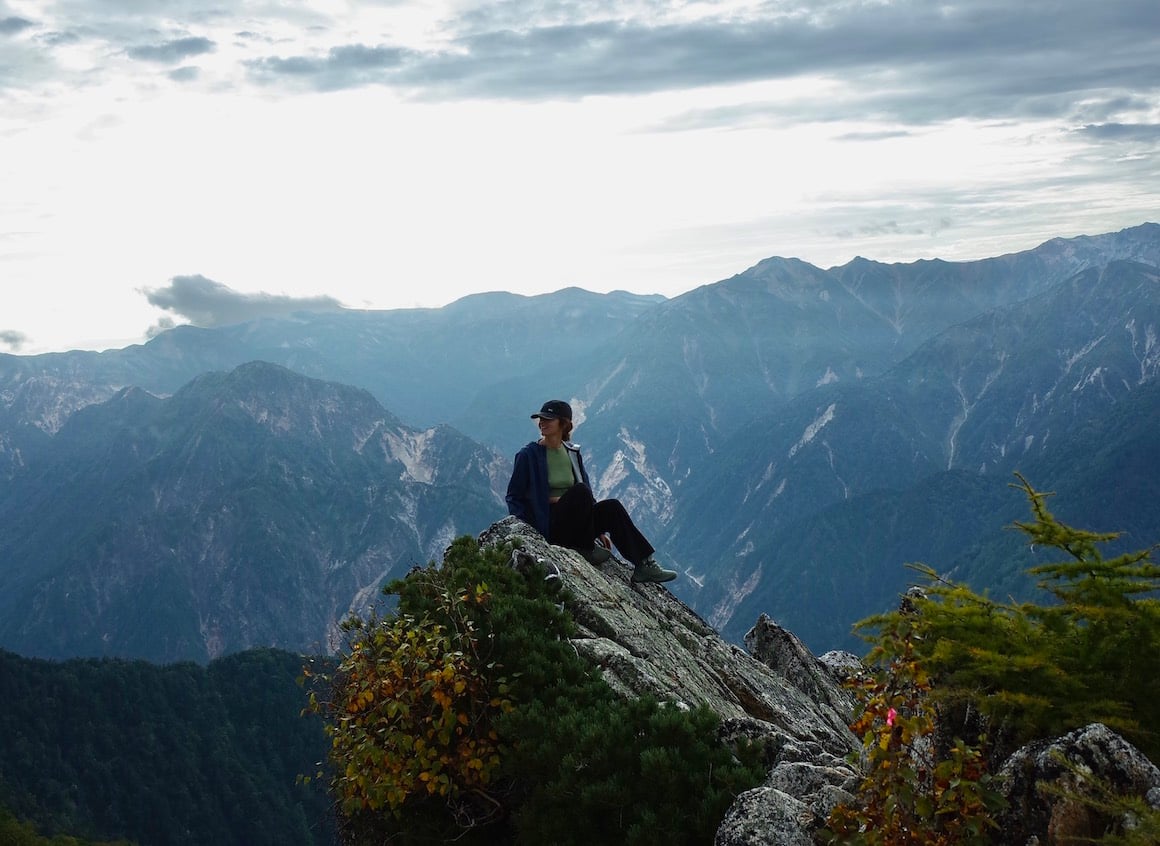
The Broke Backpacker is supported by you . Clicking through our links may earn us a small affiliate commission, and that's what allows us to keep producing free content 🙂 Learn more .
Where is the Best Place to Stay in Nagano?
Nagano neighborhood guide – best places to stay in nagano, nagano’s three best neighborhoods to stay in, faqs about where to stay in nagano, what to pack for nagano, don’t forget travel insurance for nagano, final thoughts on where to stay in nagano.
Your Nagano cabin not nice enough for ya? No worries, these are our top picks for accommodations in the sensational Nagano area. Enjoy!
Suminoyu – Best Ryokan in Nagano
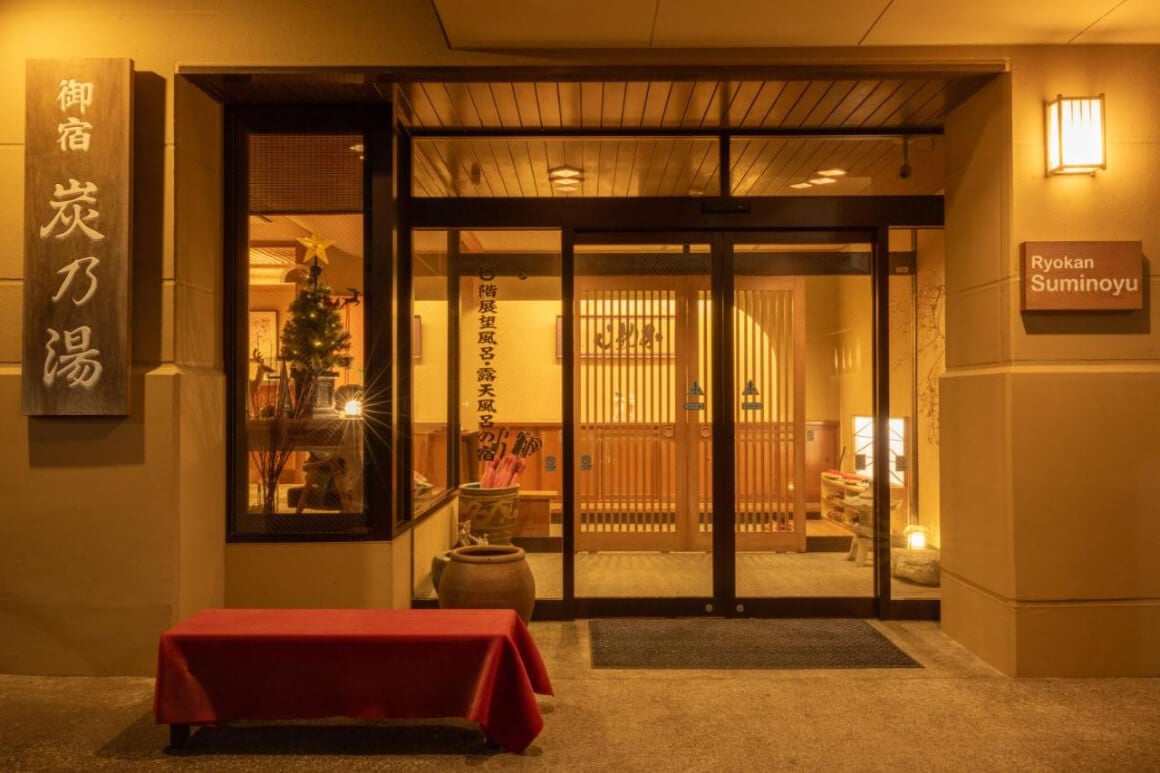
My favorite stay in Nagano was at Suminoyu, a lovely Japanese ryokan (traditional Japanese inn) located in the charming town of Yamanouchi.
The town is famous for its onsen (hot springs) but even more famous for its location at the base of the Jigokudani Monkey Park.
Suminoyu offers traditional Japanese rooms with tatami mat floors and futon beds, as well as a delicious kaiseki dinner.
Mash Cafe and Bread – Best Hostel in Nagano
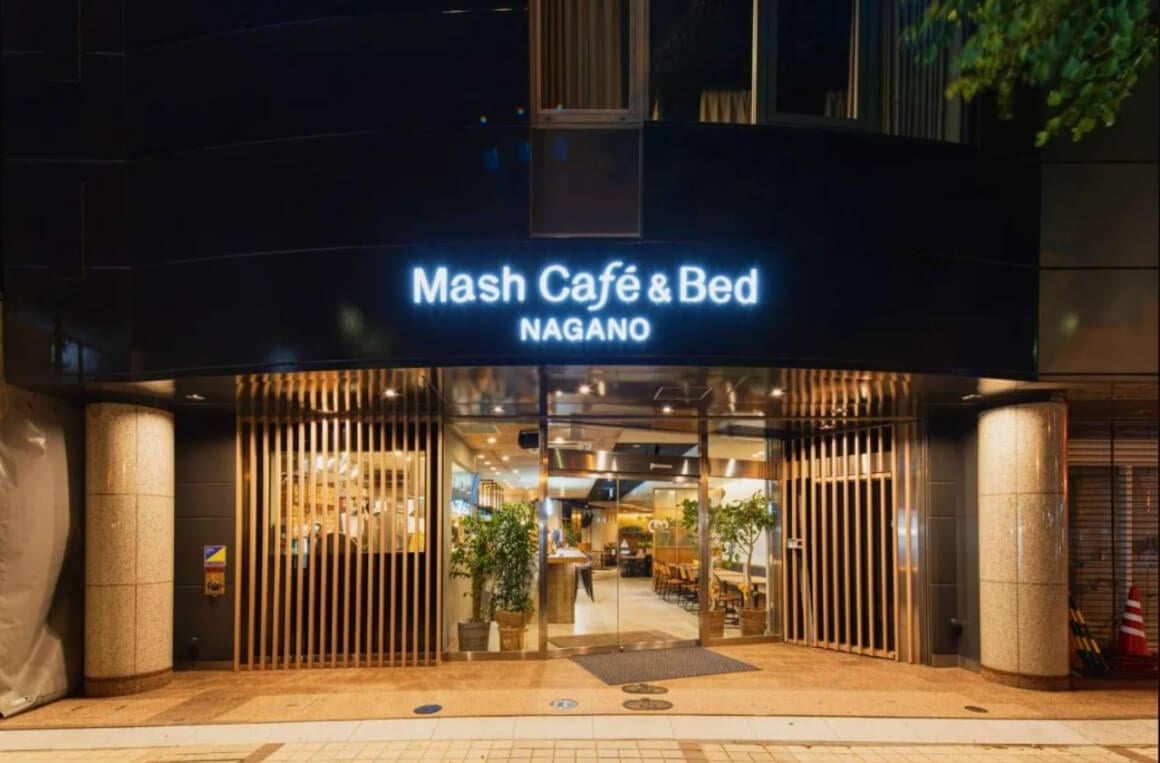
This hostel in the city center is perfect for a few nights’ stay in Nagano.
It offers clean and comfortable dorm rooms, as well as private rooms for those who want a bit more privacy.
The dorm rooms are super spacious, unlike a lot of hostels in Japan . The cafe downstairs is great for a coffee in the morning or a beer in the evening.
Wadano Gateway suites and apartments – Best Private Stay in Nagano
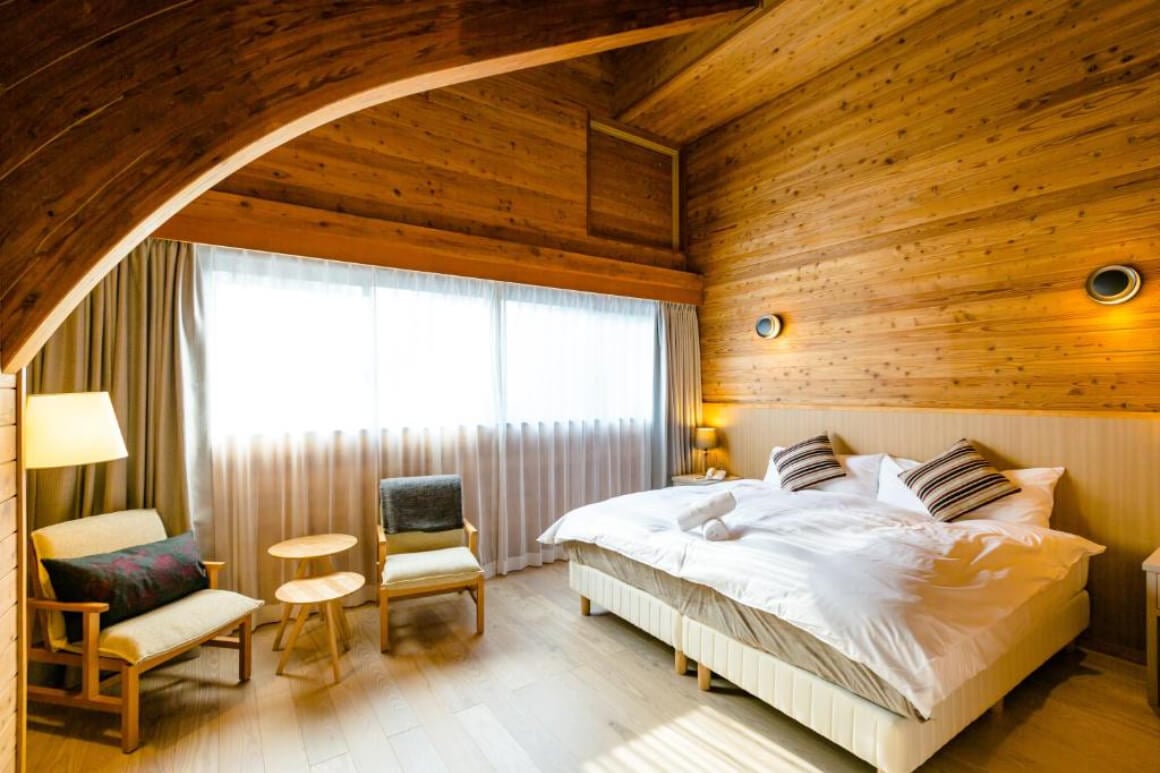
An upscale cabin in Hakabu is perfect for those looking to escape the city and enjoy some outdoor activities.
Close to multiple ski resorts, this cozy cabin offers a warm and inviting atmosphere with stunning mountain views.
The common area has a fireplace, a pool table, and a kitchen where guests can mingle and relax.
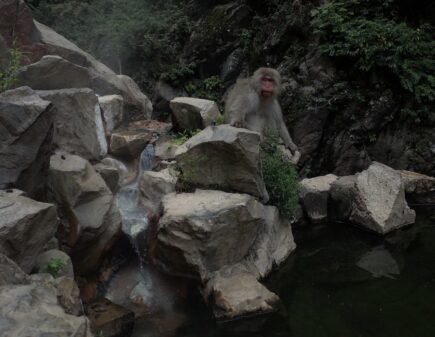
Near Snow Monkey Park
Choosing where to stay for your first time in Nagano is a big decision because you’ll want to be close to all the popular attractions. That’s why I highly recommend staying near Snow Monkey Park, it’s the perfect location for first-timers.
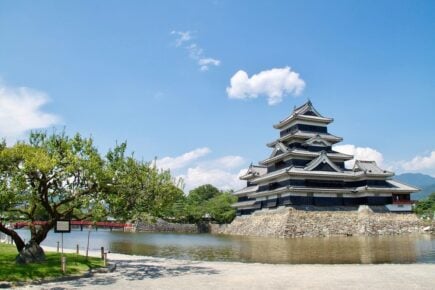
City Center
The Nagano city center is an excellent base regardless of your budget, but it’s especially good if you’re trying to save a few bucks. From traditional ryokans to modern hostels, you’ll be able to have a comfy stay that won’t break the bank.
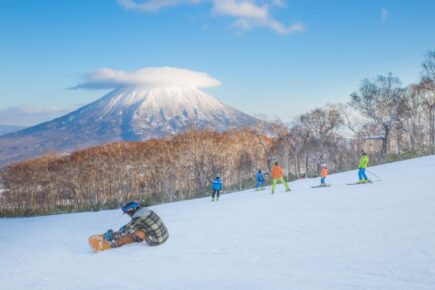
There is nothing quite like a family ski vacation, and Hakuba is the perfect place to experience it in the Nagano prefecture. Located in the Japan Alps, Hakuba boasts some of the best ski resorts in the country.
Nagano is a picturesque prefecture in the central region of Japan, located between the Japanese Alps. As I mentioned, prior to visiting, I only briefly remembered the prefecture name from the Nagano Winter Olympics. (I was six, so I mean…).
But now, I’m basically the spokesperson for Nagano—it’s a magical escape from Tokyo and Kyoto. During my trips to Japan , Nagano was one of my most visited destinations. I was able to find some of the best places to stay there, and I’m so excited to share them with you.
The area is vast, so plan for 5-7 days to explore . Visit Matsumoto with its famous castle, Hakuba for skiing, the snow monkeys of Jigokudani (a must-see), downtown Nagano with Zenko-ji Temple, and a day in the Japanese Alps. It may sound like a lot, but it’s totally worth it!
If this is your first time in Nagano, I recommend staying near Snow Monkey Park; this is the most popular thing to do in Nagano. You can watch the snow monkeys get their spa day on; it’s seriously adorable. It’s one of the most unique experiences I’ve had, and it’s so magical when everything is covered in snow.
For more of a city feel, downtown Nagano would be the ideal place to stay in Japan —it’s also the cheapest. Here you’ll find Zenko-ji Temple, one of Japan’s most important and popular temples. It’s also a great spot for shopping and trying out the local cuisine.
Families will love the ski chalets in Hakuba, a popular ski resort in Nagano. Not only will you have easy access to some of the best slopes in Japan, but there are also plenty of family-friendly activities such as snowshoeing and sledding.
I know you’re begging for more after that brief overview of Nagano’s top neighborhoods, so I’m about to deliver a more in-depth look at the four best areas to stay in while exploring this beautiful city.
1. Near Snow Monkey Park – Where to Stay in Nagano for Your First Time
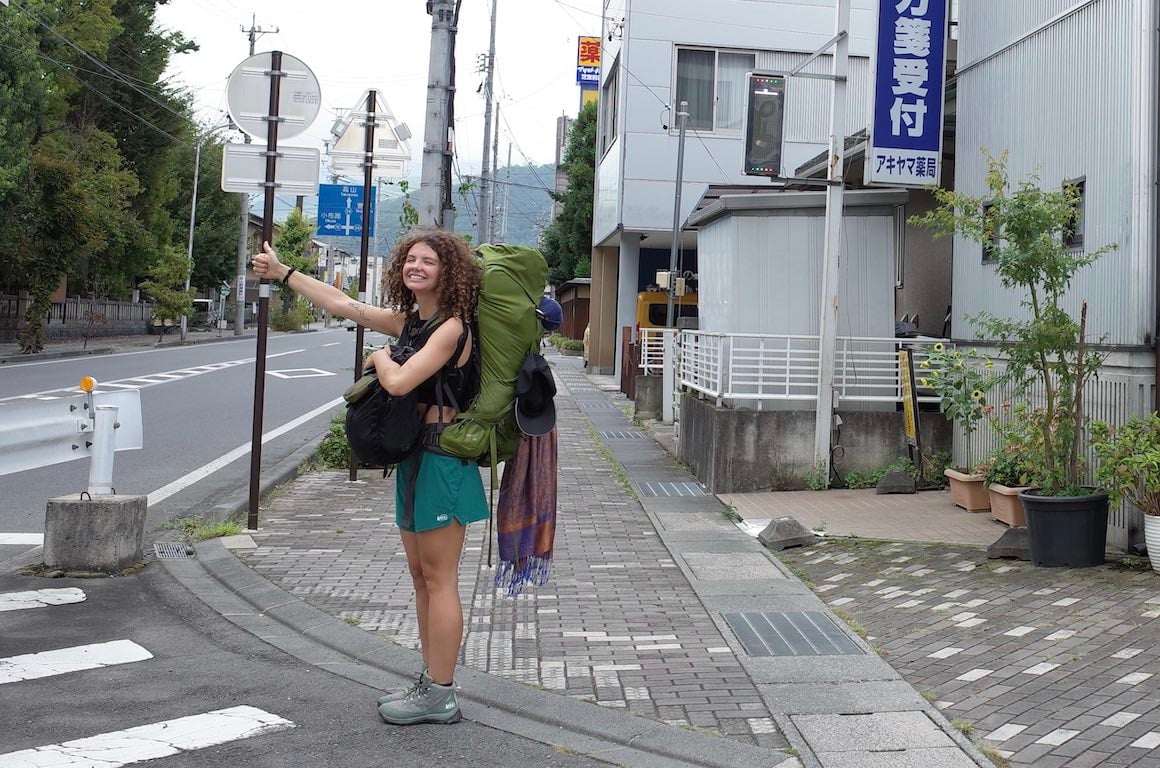
The park is located in the town of Yamanouchi, about an hour and a half from downtown Nagano. But don’t worry, there are plenty of transportation options available to get you there.
Once you arrive, you’ll be greeted by the famous snow monkeys soaking in the hot springs. You will also be close to some of the most quaint townships and breathtaking natural scenery in Nagano.
Sakaeya | Best Boutique Hotel near Snow Monkey Park
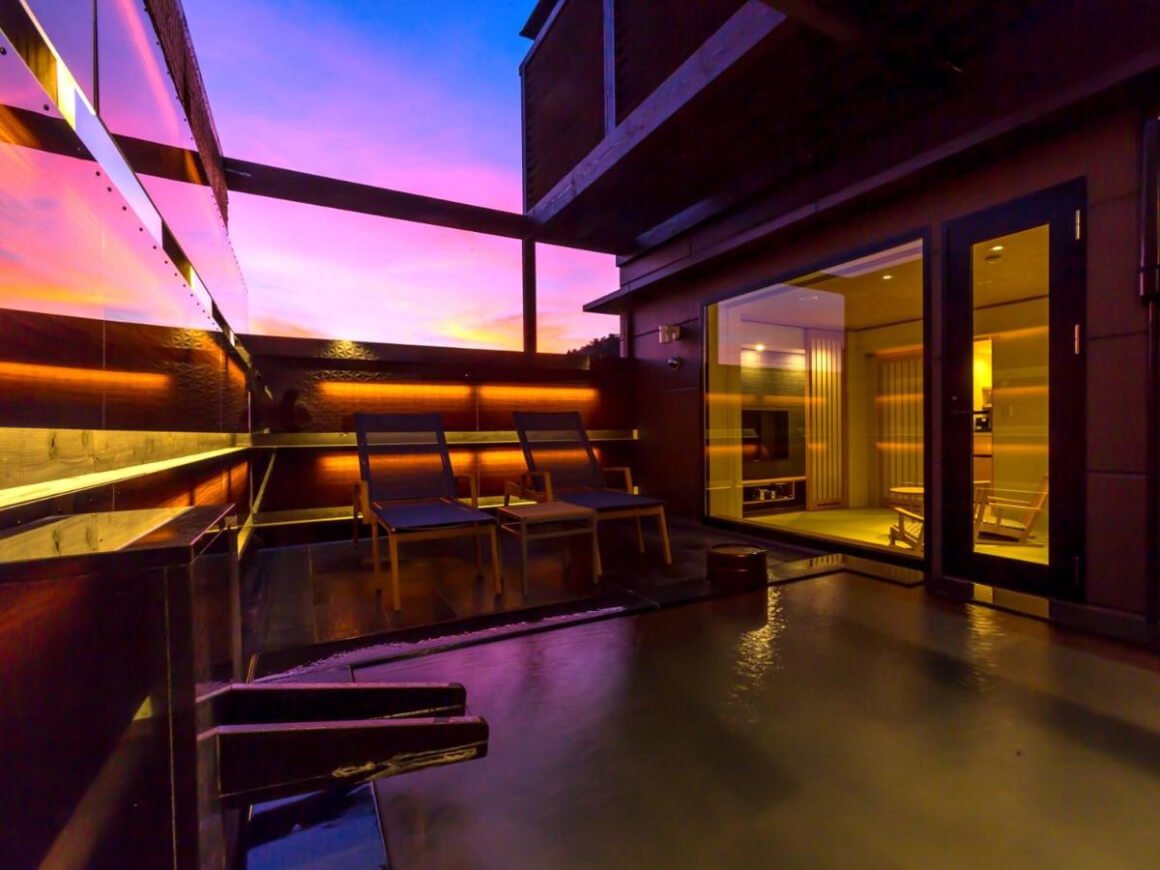
A charming boutique hotel, Sakaeya offers a modern interpretation of a ryokan experience.
The rooms feature a mix of traditional Japanese design and contemporary elements.
They have indoor and outdoor hot baths, traditional robes, and traditional Japanese breakfast and dinner.
Minshuku Miyama | Best Guesthouse near Snow Monkey Park
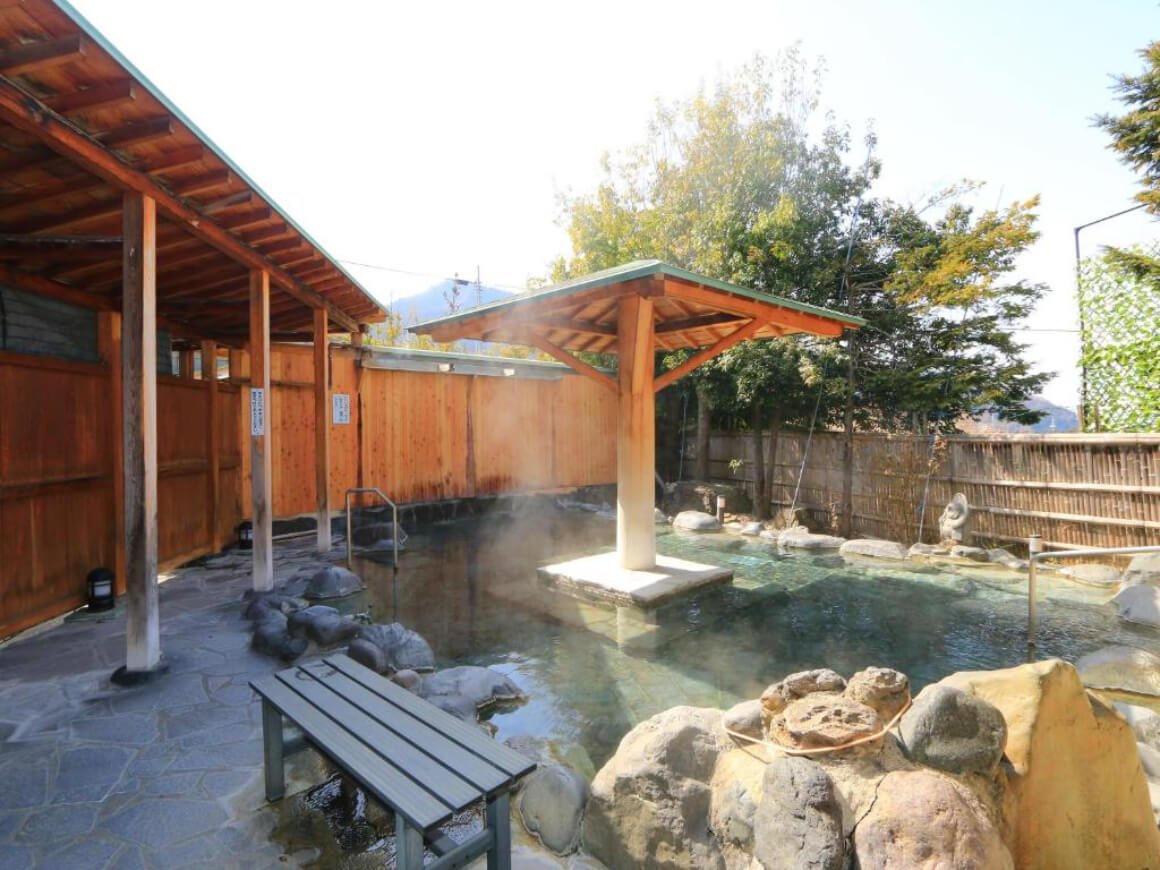
After a day of hiking in the nearby forests or exploring the park, the hot spring in Minshuku Miyama is literal heaven on earth.
The charming guesthouse is located just five minutes away from Snow Monkey Park.
The traditional Japanese-style rooms provide a cozy atmosphere, and the friendly staff will make you feel right at home.
Suminoyu | Best Ryokan near Snow Monkey Park
A traditional ryokan located just a few minutes away from the Snow Monkey Park, Suminoyu offers an authentic Japanese experience with its tatami rooms, onsen hot spring baths, and kaiseki dinner.
They provide pick-up from the train station and a shuttle service to the park, making it uber-convenient for guests.
Things to See and Do near Snow Monkey Park
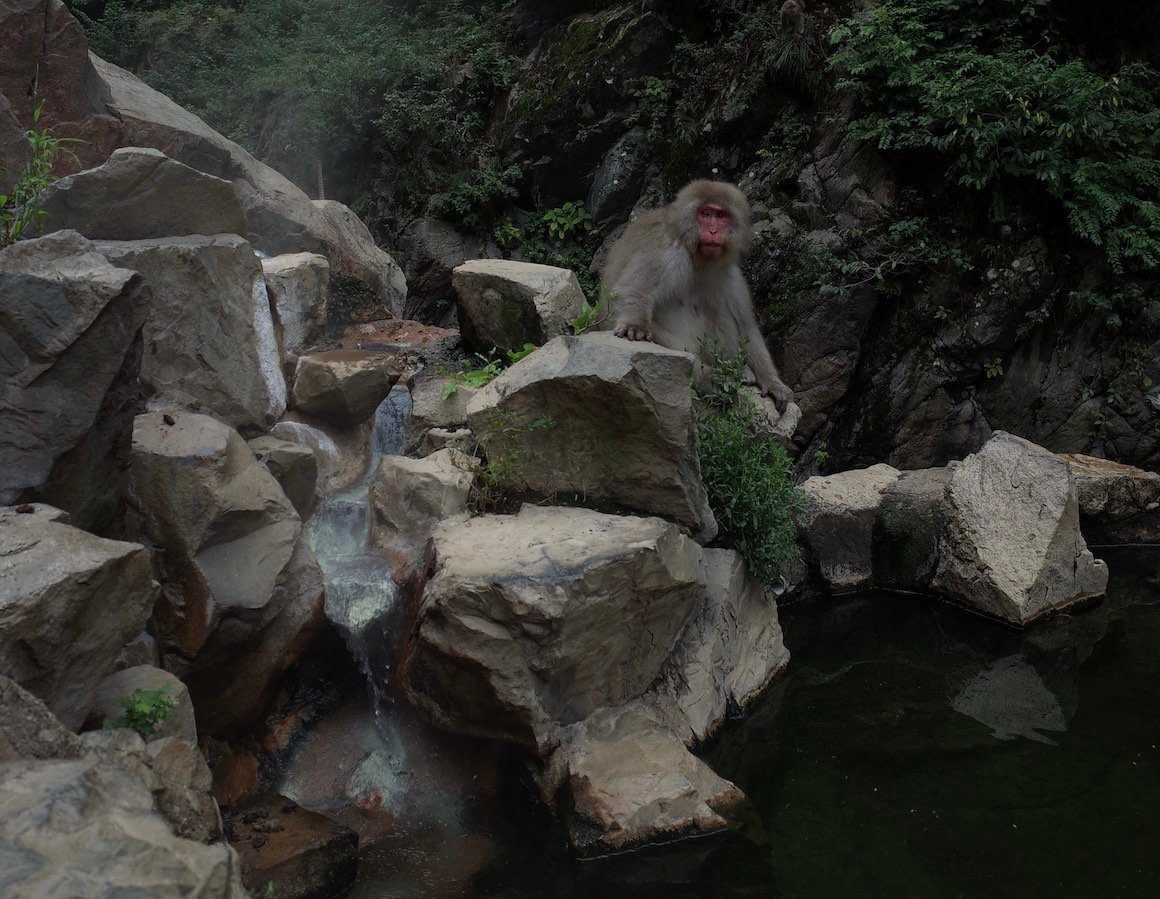
- Take a day trip to see the famous snow monkeys at Jigokudani Monkey Park .
- Take a leisurely walk through the scenic Shibu Onsen village.
- Go skiing or snowboarding at Shiga Kogen Skir Resort
- Hike in Joshinetsu Kogen National Park – one of the best national parks in Japan
- Drive along the Shiga Kasatsu Kogen Route
- Soak in one of the many relaxing onsens (hot springs) in the area

We’ve tested countless backpacks over the years, but there’s one that has always been the best and remains the best buy for adventurers: the broke backpacker-approved Osprey Aether and Ariel series.
Want more deetz on why these packs are so damn perfect? Then read our comprehensive review for the inside scoop!
2. City Center – Best Place to Stay in Nagano on a Budget
The Nagano city center is an excellent base regardless of your budget, but it’s especially good if you’re backpacking on a budget .
From traditional ryokans to modern hostels, you’ll be able to have a comfy stay that won’t break the bank. Plus, staying here puts you within walking distance of the main attractions and public transportation.
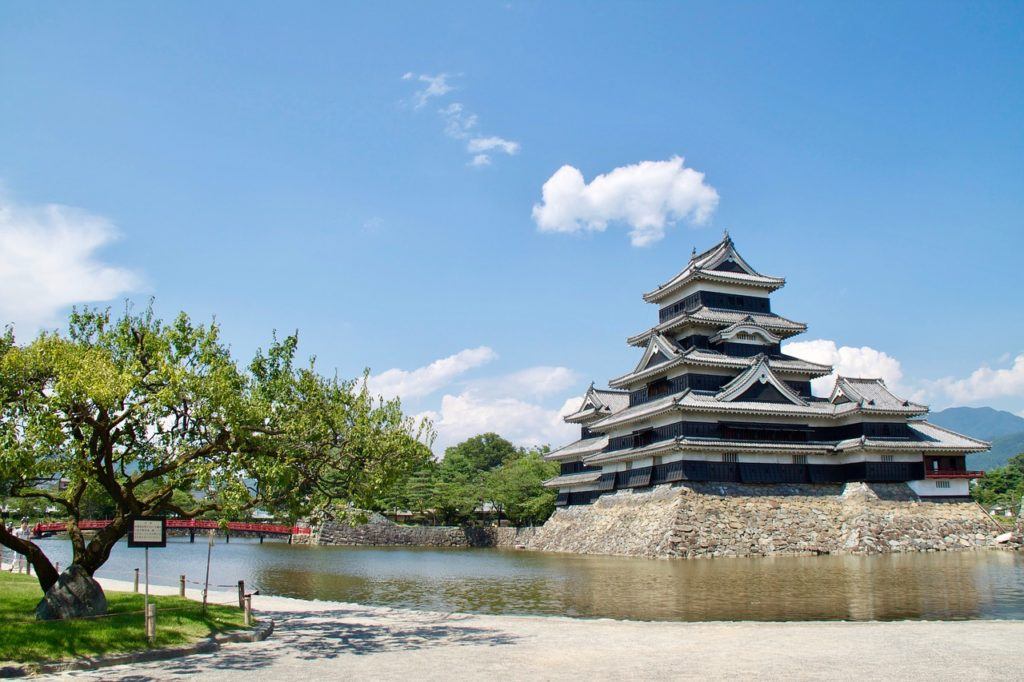
You’ll be able to spend a few days visiting Zenkoji Temple, the remaining Olympic sites, and the vibrant nightlife scene in the center. While still being a great home base for day trips to Matsumoto Castle or Togakushi Shrine.
Hotel New Nagano NeXT | Best Hotel in the City Center
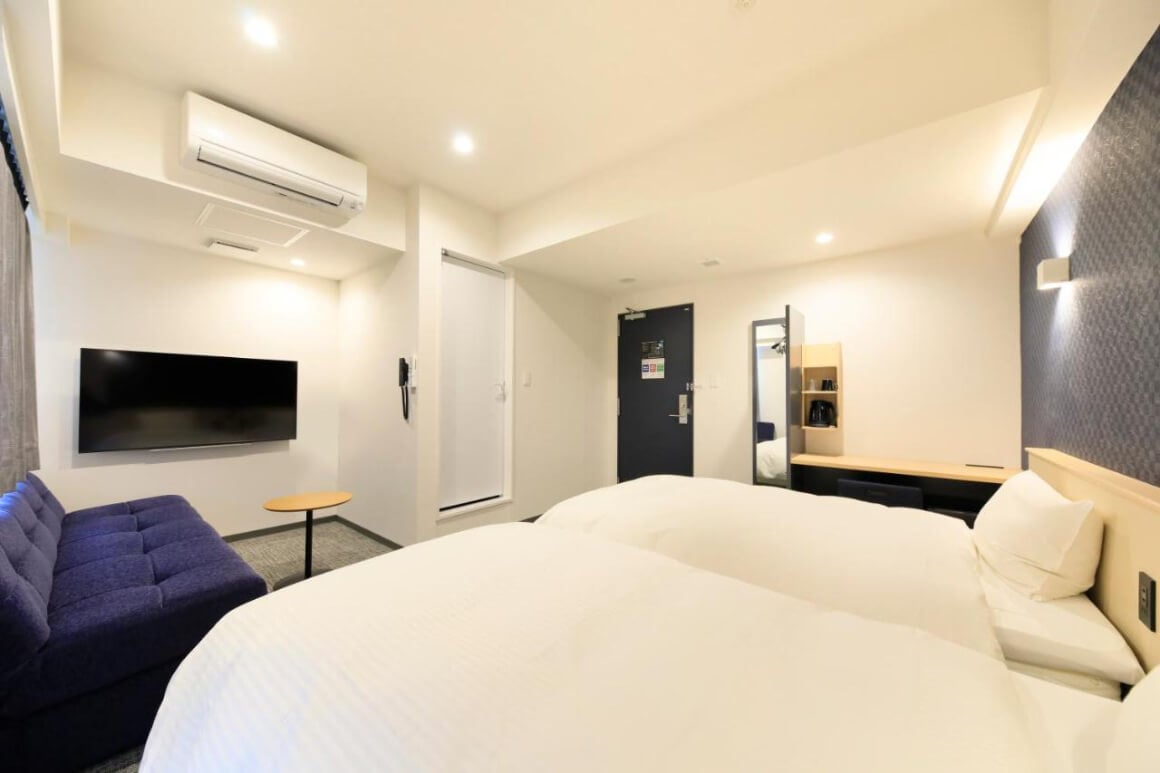
This hotel’s location is unbeatable —just steps away from Nagano Station and within walking distance of many restaurants, bars, and attractions.
The rooms are clean and comfortable and offer all the amenities you need for a pleasant stay. They offer single, double, and twin rooms to fit any budget.
Mash Cafe and Bread | Best Hostel in the City Center
A cozy hostel right in the heart of Nagano, Mash Cafe, and Bread offers one of the most affordable stays in the city.
The dorm rooms are extremely spacious, and all the beds have curtains and duvets to provide privacy and comfort.
The hostel’s cafe downstairs is perfect for meeting other traveler buddies and enjoying an evening pint or two.
Jizokan Matsuya Ryokan | Best Ryokan in the City Center
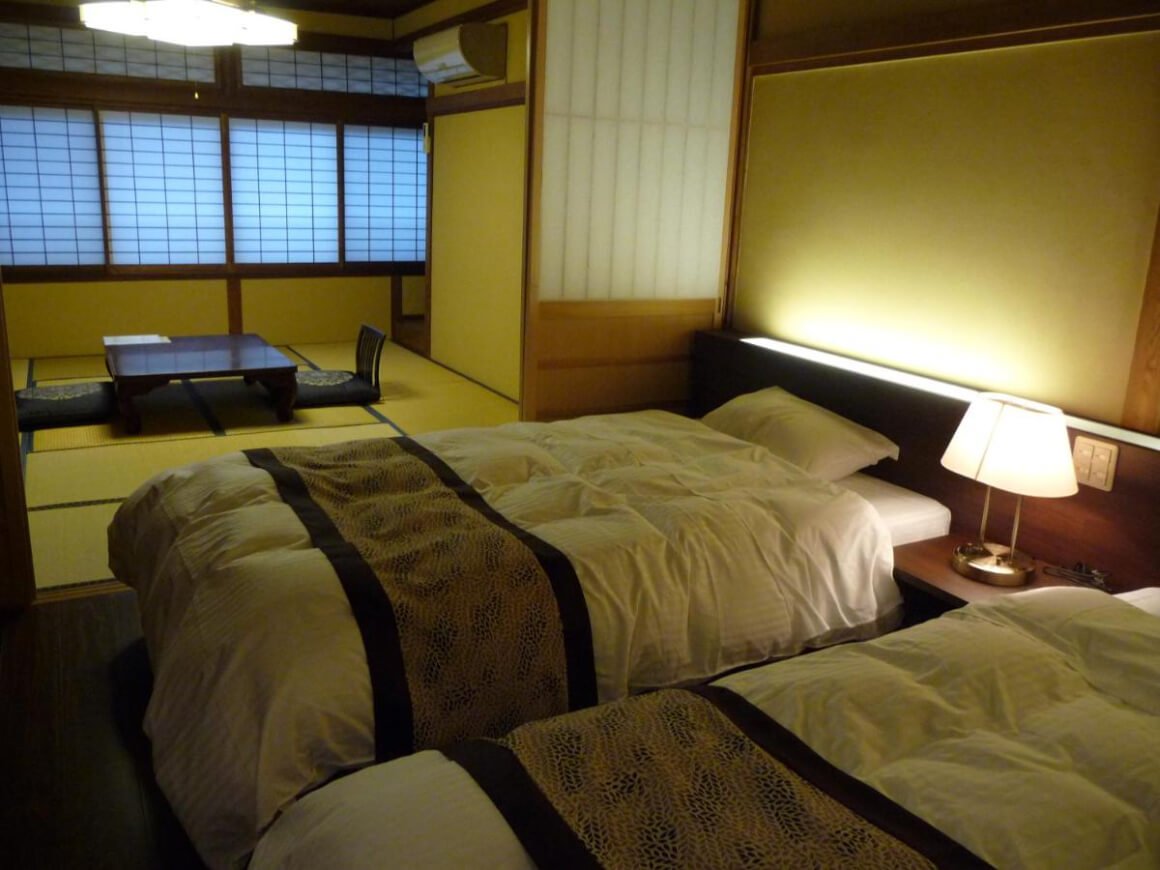
A traditional stay in the city doesn’t get much better than at Jizokan Matsuya Ryokan.
The rooms are beautifully designed with tatami floors and futon beds, giving guests a true taste of Japanese culture.
Enjoy a soak in the onsen before having a traditional sushi dinner at the Ryokan’s restaurant—a perfect ending to a day of exploring Nagano.
Things to see and do in the city center of Nagano
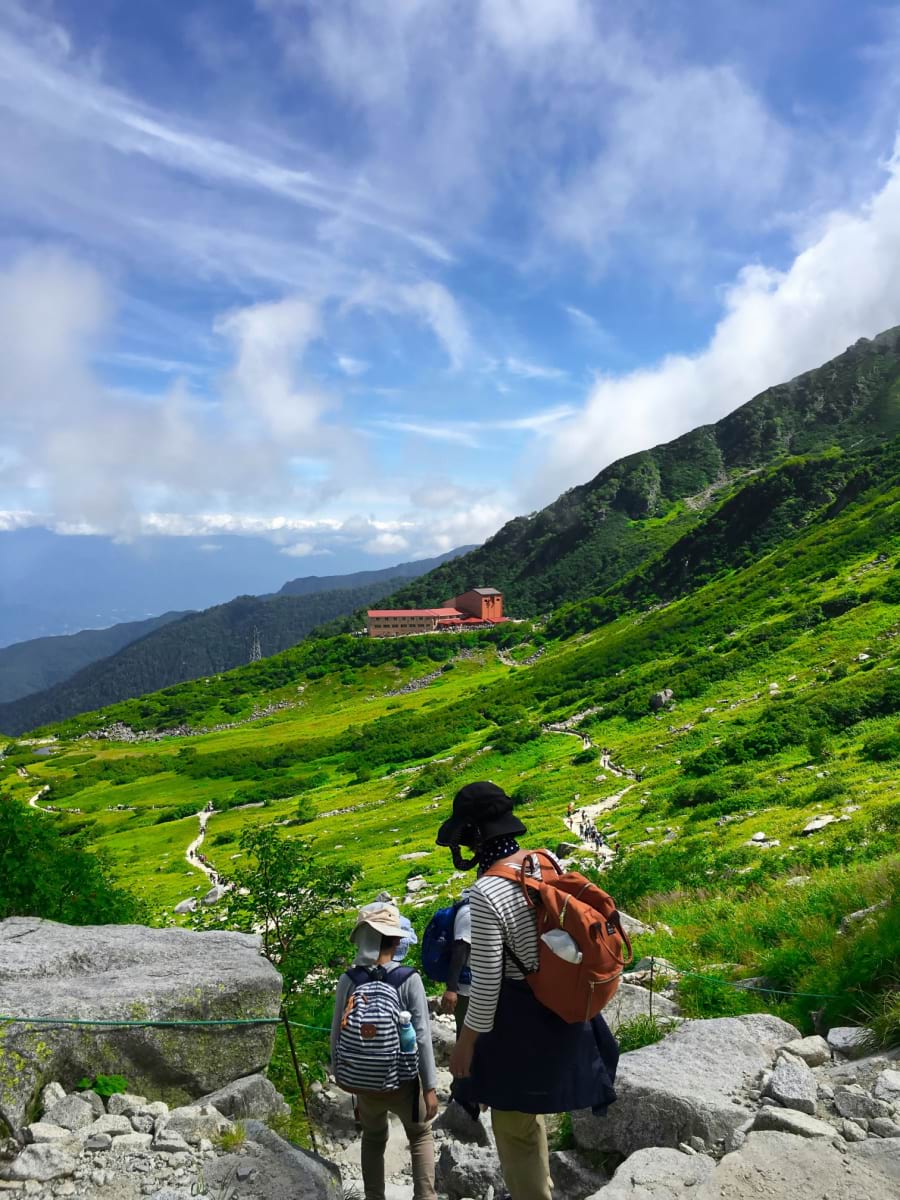
- Explore the Tagiri Street Market, known for its local produce and traditional crafts.
- Explore Nagano on a customized private tour with a local guide .
- Take a hike up to Togakushi Shrine, a series of five shrines set in the mountains.
- Learn about the local ninjas and Ninpo Museum
- Try out some of Nagano’s delicious local dishes, such as soba noodles and oyaki dumplings.
3. Hakabu – Best Neighborhood in Nagano for Families to Stay In
There is nothing quite like a family ski vacation, and Hakuba is the perfect place to experience it in the Nagano prefecture. Located in the Japan Alps, Hakuba boasts some of the best ski resorts in Japan , with over 100 runs spread across ten different resorts.
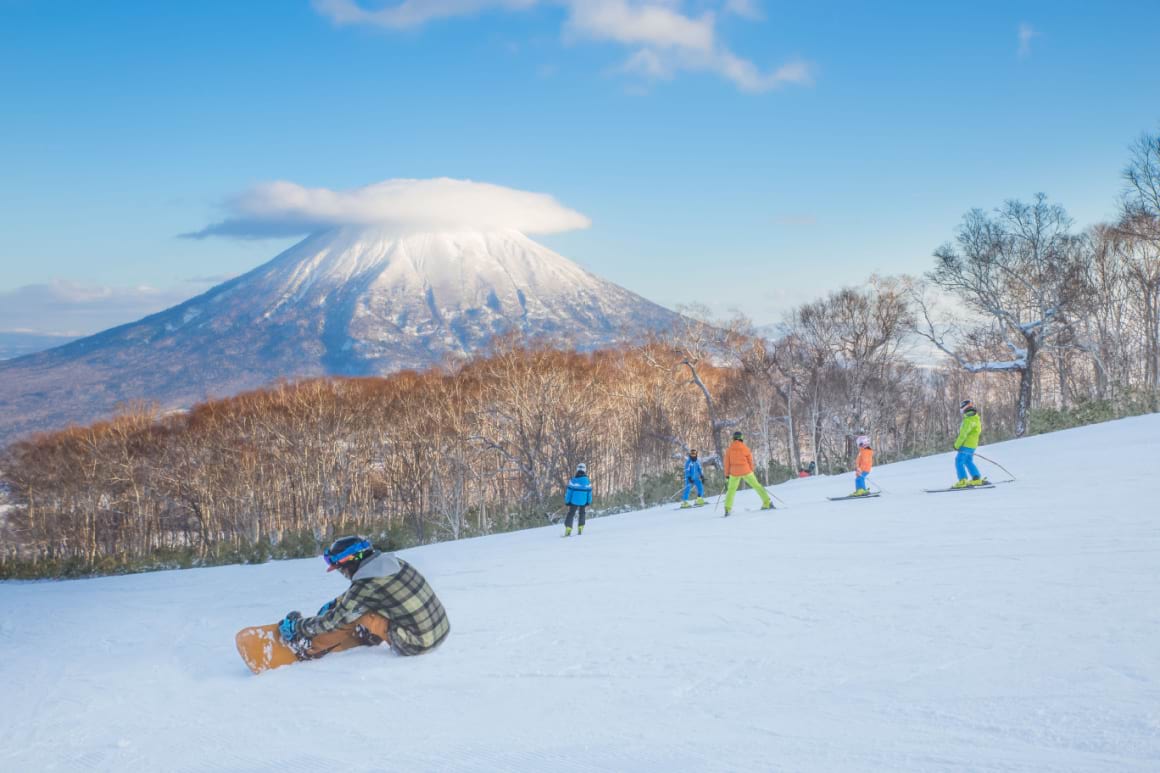
But there’s more to do than just skiing here—families can also enjoy snowshoeing, sledging, and even visiting a snow park with themed snow activities. Don’t forget the essentials – make sure to gear up with the best ski jacket for your snowy adventures!
In the summertime, families can take advantage of hiking trails and bike paths, as well as outdoor hot springs for some relaxation after an active day.
Hakuba-ism | Best Cabin in Hakabu
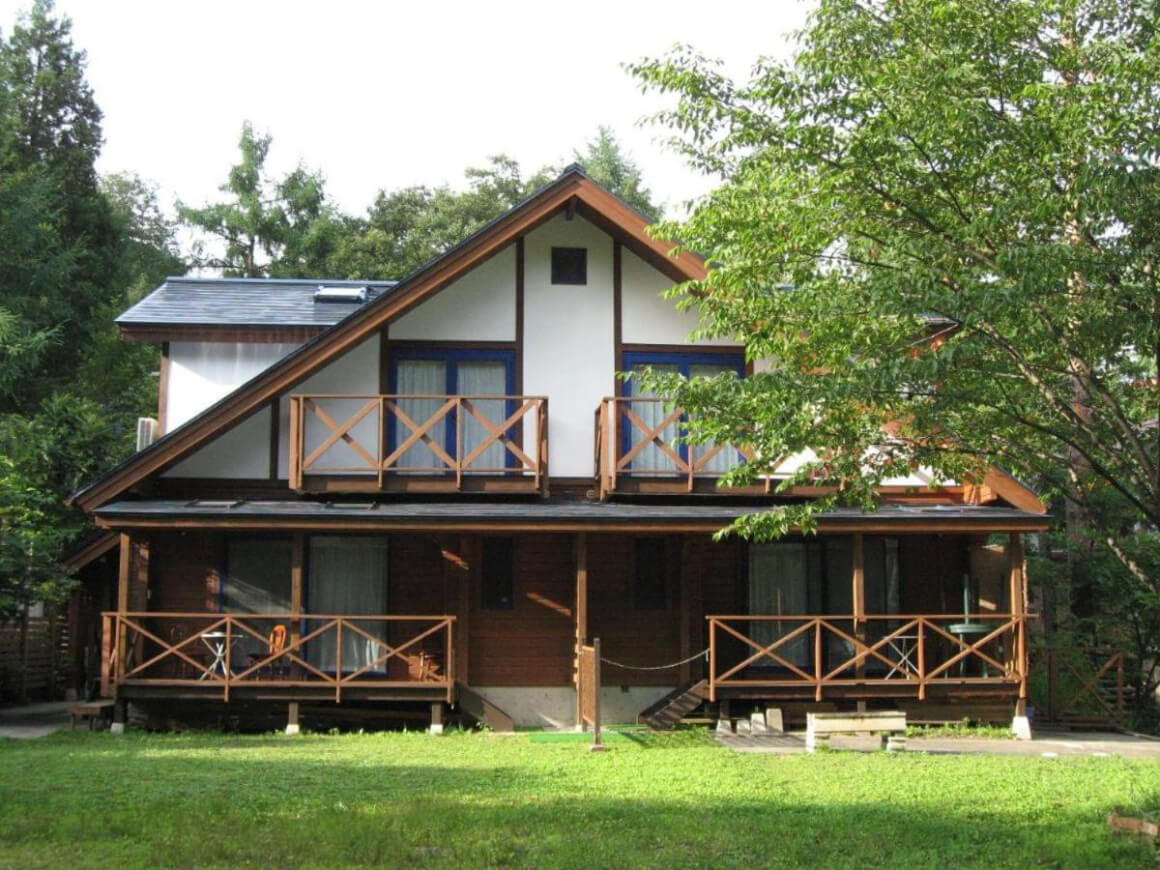
This cozy wooden cabin is Tucked away in Hakuba, near Tsugaike Kogen Ski Area.
The property has a gorgeous view of the garden and has a traditional Japanese-style interior with modern amenities.
Families can enjoy the spacious living area, fully equipped kitchen, and private bedrooms for a comfortable stay.
Wadano Gateway Suites and Apartments | Best Apartments in Hakabu
Enjoy quiet nights at this aparthotel. The location is superb with close proximity to bars, restaurants, and the Happo-One ski field.
The apartment features a secure dry room for ski gear (no more wet kids running through the hallway!), as well as a fully equipped kitchen, making it perfect for families or groups who prefer to cook their own meals.
Chianti Chalet- Private Family Room | Best Chalet in Hakabu
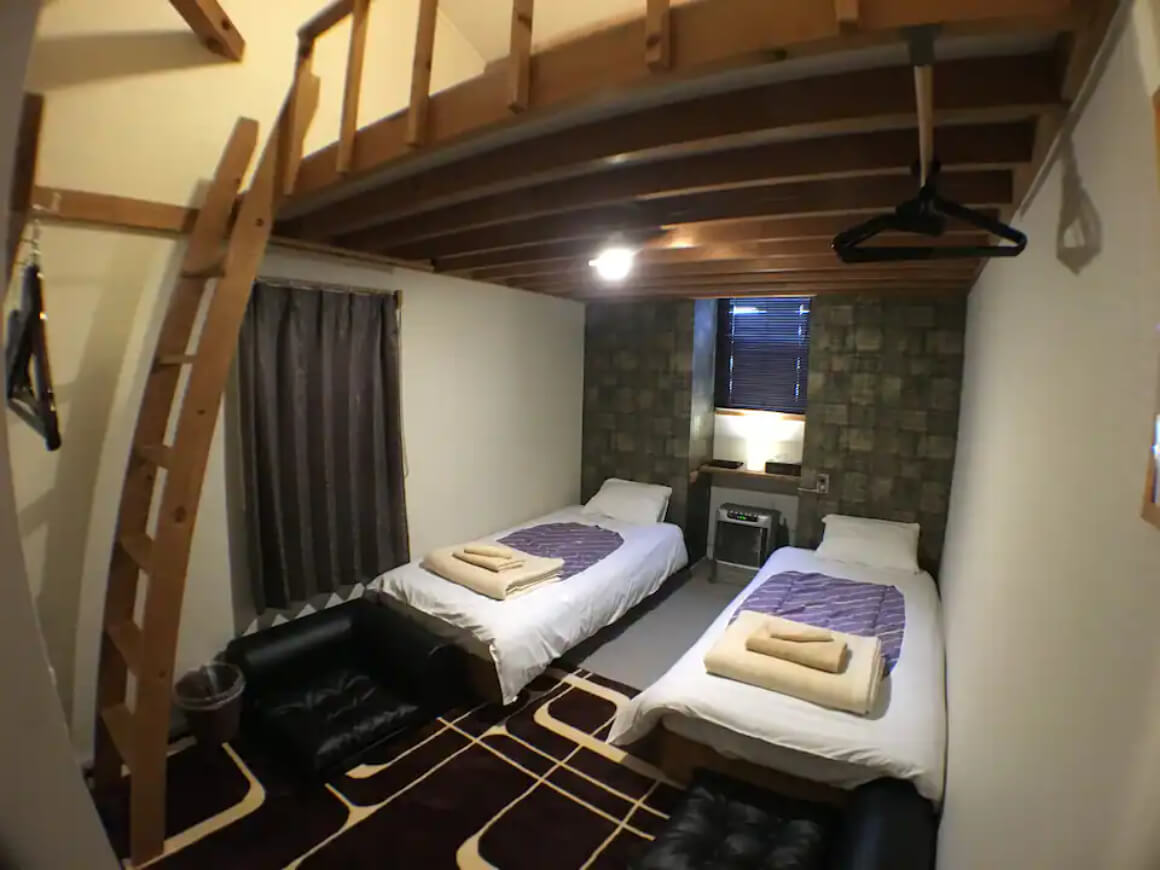
Just 10 minutes from the gondola at Tsugaike-Kogen Snow Resort, this chalet is perfect for getting the whole gang gathered and ready for the slopes.
Located at the foot of the forest and mountains, the vibes in and around Chalet Chianti will give you a true sense of being away from it all!
With private rooms and shared living space, this chalet is perfect for families or groups of friends looking for a comfortable and convenient stay in Hakuba.
Things to see and do in Hakabu
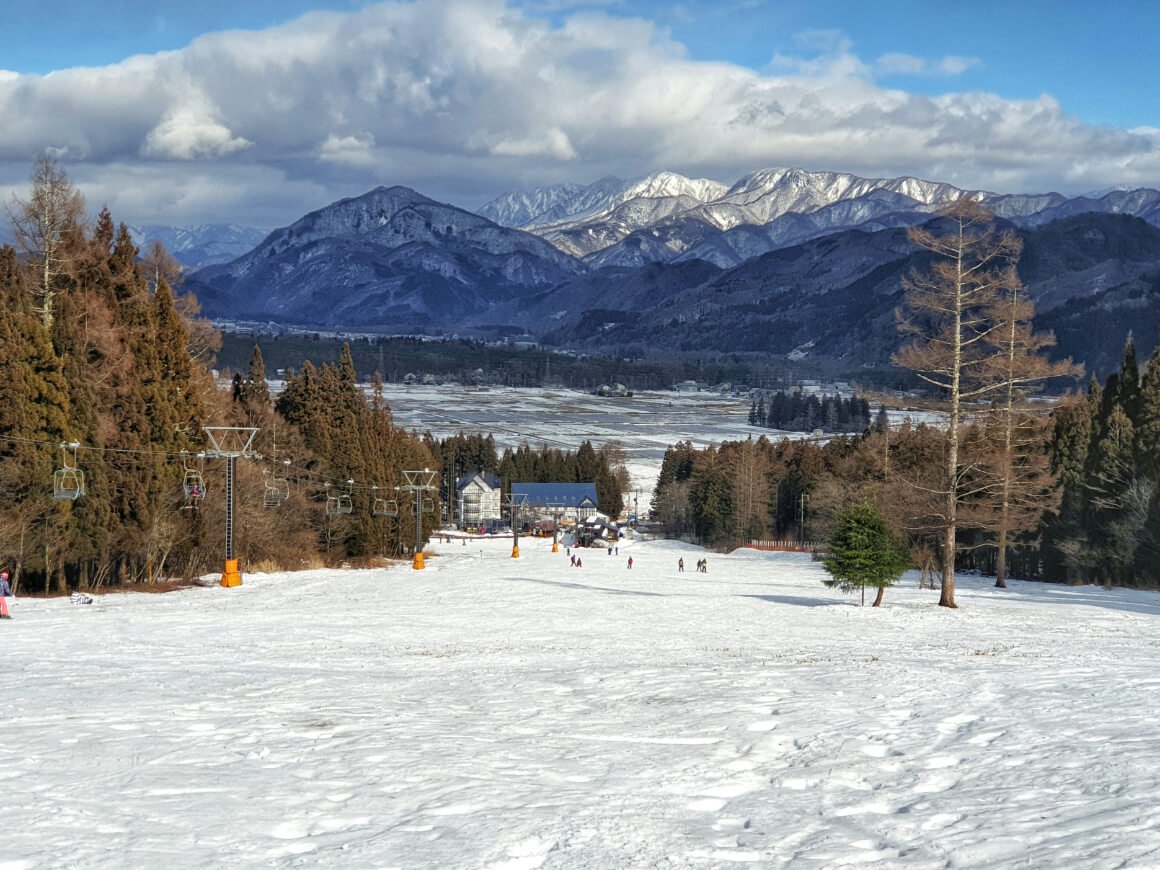
- Experience world-class skiing and snowboarding at Limori Resort
- Visit the Hakuba Sanroku Botanical Garden to see stunning alpine flora and fauna
- Take a dip in one of the hot springs, known as “onsen,” that can be found throughout Hakuba
- Go snow tubing on the longest course in Japan at Kashimayari Resort
- Explore Ichinoya, one of the region’s oldest Sake Breweries

Stash your cash safely with this money belt. It will keep your valuables safely concealed, no matter where you go.
It looks exactly like a normal belt except for a SECRET interior pocket perfectly designed to hide a wad of cash, a passport photocopy or anything else you may wish to hide. Never get caught with your pants down again! (Unless you want to…)
Curious about Nagano? Here are some of the most commonly asked questions. If you have any of your own, feel free to drop it in the comments below!
Where is the best place to stay in Nagano?
For a stay in Nagano, aim for the city center if you’re staying longer than three days. Hotel New Nagano NeXT , steps from Nagano Station, offers easy access to restaurants, cafes, and attractions. If you’re staying fewer days, choose lodging near your desired attractions for convenience.
Is Nagano City worth Visiting?
Nagano City is worth visiting if you are interested in Japanese culture, history, and outdoor activities. It is also a great place to experience authentic Japanese food and visit world-renowned temples and shrines.
How long should you stay in Nagano?
You should stay in Nagano for at least three days. This will allow you to see different areas of the prefecture and experience a variety of activities.
Do you need a car in Nagano?
Not necessarily! Japan’s extensive public transportation system makes it super easy to move around. However, if you want to explore the countryside or mountains, renting a car can give you more flexibility and convenience.
Pants, socks, underwear, soap?! Take it from me, packing for a hostel stay is not always quite as straightforward as it seems. Working out what to bring and what to leave at home is an art I have perfected over many years.

Snoring dorm-mates can ruin your nights rest and seriously damage the hostel experience. This is why I always travel with a pack of decent ear plugs.

Hanging Laundry Bag
Trust us, this is an absolute game changer. Super compact, a hanging mesh laundry bag stops your dirty clothes from stinking, you don’t know how much you need one of these… so just get it, thank us later.

Sea To Summit Micro Towel
Hostel towels are scummy and take forever to dry. Microfibre towels dry quickly, are compact, lightweight, and can be used as a blanket or yoga mat if need be.

Monopoly Deal
Forget about Poker! Monopoly Deal is the single best travel card game that we have ever played. Works with 2-5 players and guarantees happy days.

Grayl Geopress Water Bottle
Always travel with a water bottle! They save you money and reduce your plastic footprint on our planet. The Grayl Geopress acts as a purifier AND temperature regulator. Boom!
Check out my definitive travel packing list for even more top packing tips!
You can spend days researching safety statistics, travel only to the safest destinations, or pay extra money to fly with the best of the best airlines. Still, you’re never totally safe from the unexpected.
Even though Nagano is by and large a very safe place to stay, you should consider purchasing good travel insurance .
ALWAYS sort out your backpacker insurance before your trip. There’s plenty to choose from in that department, but a good place to start is Safety Wing .
They offer month-to-month payments, no lock-in contracts, and require absolutely no itineraries: that’s the exact kind of insurance long-term travellers and digital nomads need.

SafetyWing is cheap, easy, and admin-free: just sign up lickety-split so you can get back to it!
Click the button below to learn more about SafetyWing’s setup or read our insider review for the full tasty scoop.
Having found myself in Hakuba when I actually wanted to be in Matsumoto, I know firsthand the challenge of deciding where to stay in Nagano. But hey, at least my experience can benefit you—consider it a valuable lesson learned!
Nagano offers a wide range of accommodations and activities, so it’s important to consider what you want to do and see before deciding on a location.
Stay in the city center if you want easy access to transportation and day trips, or stay near specific attractions if you have limited time.
If you left it up to me, I’d be staying in Suminoyu soaking in the outdoor onsens, hiking to see the snow monkeys, and enjoying the delicious food in local restaurants. But that’s just me.
Hopefully, this guide gives you a better idea of where to stay in Nagano based on your own travel preferences.
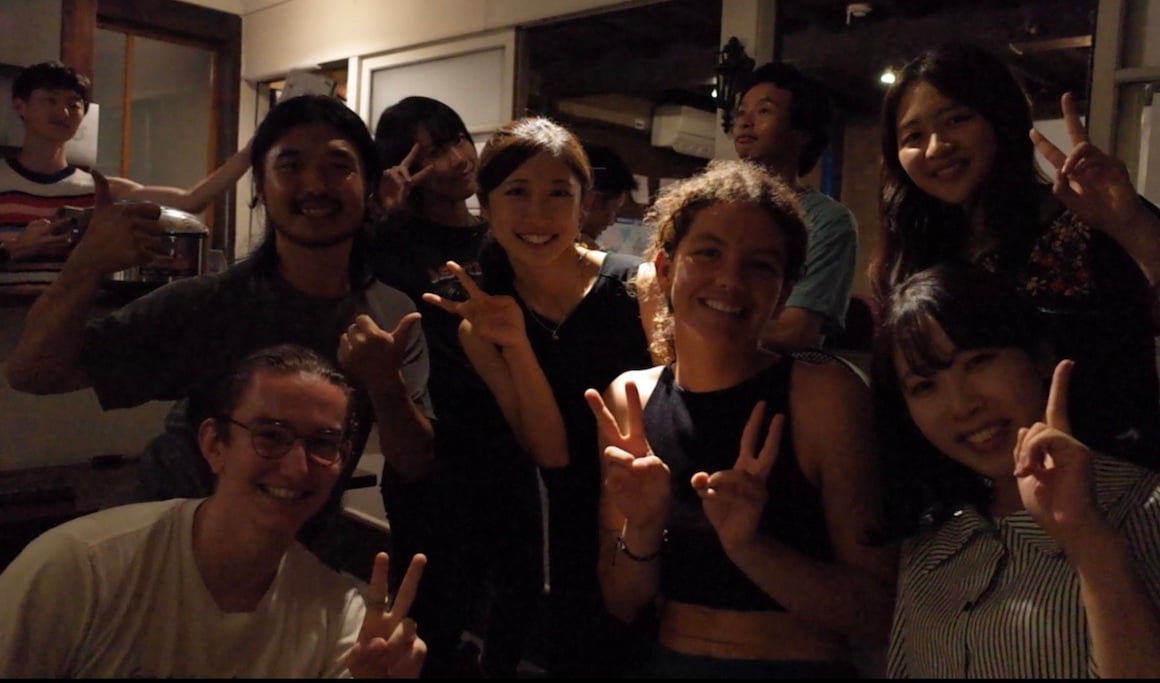
- Check out our ultimate guide to backpacking in Japan.
- Figured out where you wanna stay? Now it’s time to pick the perfect hostel in Japan .
- Or… maybe you want to check out some airbnbs in Japan instead.
- Next up you’re gonna need to know all the beautiful places to visit in Japan to plan your trip.
- Save yourself hassle and money and get an international SIM card for Japan .
- Swing by our super epic backpacking packing list to prep for your trip.

Share or save this post

Leave a Reply Cancel reply
Your email address will not be published. Required fields are marked *
Save my name, email, and website in this browser for the next time I comment.
Notify me of followup comments via e-mail.

Hidden-Gem Cities In Japan To Add To Your Bucket List
F uturistic megacities with neon-lit streets, impossibly fast bullet trains, towering skyscrapers, cosplay costumes fused with ancient Buddhist temples, jaw-dropping natural landscapes (hello, Mt Fuji), and kimono-clad geisha. This is Japan, a country of delicious contrasts, where ancient traditions blend seamlessly with modern-day life. It's one of the most rewarding and unique destinations you could ever visit — and many do — thanks, in part, to its holy reputation as one of the most Instagrammable cherry blossom spots around the world, as well as a plethora of local delicacies to tuck into.
You're likely to have heard of Tokyo, Kyoto, Hiroshima, and Osaka — four of Japan's most popular metropolises, luring visitors from all over the globe. But the "Land of the Rising Sun" has so much more to offer beyond these big hitters ... From the dramatic mountain scenery and historic architecture of spots like Takayama and Nagano to vibrant arts and delicious eats in Fukuoka and Nagasaki, there are plenty more unmissable destinations in Japan just waiting to be uncovered.
But before we dig in, we wanted to tell you how we put this article together. The majority of recommendations you'll see below are based on personal experience, and some are backed up by handy TripAdvisor reviews. Now that's out of the way — sit back, relax, and read about 10 relatively undiscovered cities in Japan that you definitely don't want to miss.
Read more: 22 Underrated Tourist Destinations In Asia To Add To Your Bucket List
Fukuoka — Best For Food
Travel to friendly Fukuoka for an escape to the harbor, featuring a temperate climate and the best Hakata ramen you've ever tasted. Often heralded as Japan's "Gateway to Asia," this city boasts a thriving art and nightlife scene — thanks to museums, art schools, and creative spaces, as well as jazz venues and burlesque performers. It's a popular destination for Japanese tourists, but international travelers are only just getting wind of it.
Start in lush Ohori Park with a leisurely stroll around the pond. A fabulous spot for joggers and dog walkers, this picturesque space allows you to strike out to some of Fukuoka's most celebrated sites. At the southeastern corner sits Fukuoka Art Museum, with Buddhist statues dating back to the 11th century and various special temporary exhibitions to marvel at. Ohori Park Japanese Garden should be next on your list, just a few steps away, which showcases typical Japanese features, such as dry landscapes, torii gates, shrines, and tea houses. Add the fantastically preserved Tōchō-ji Temple to the mix, and you have yourself a stellar itinerary. But it still feels like something is missing ...
A-ha! Food! When you're ready, head to the yatai — these are tiny Japanese versions of street food stalls, where you can rub elbows with locals and sample countless dishes from Fukuoka's lauded cuisine. The most famous of these is Hakata ramen, a local, lip-smacking noodle dish featuring thin ramen noodles in a pork-based broth.
Takayama — Best For Tradition
Do Meiji-era inns, hillside shrines, and a pretty riverside setting excite you? Head for Hida Takayama, nestled in the mountains and far enough away from the typical tourist trail to find a slice of peace. It offers a traditional touch that can be hard to find, with an immaculately preserved old town and festivals dating back to the 17th century. Timing your trip to take in the Takayama Spring Festival in April, or the Autumn version in October could be a way to squeeze in an extra culture hit, although it's likely to be the city's busiest season for tourists.
You'll feel at home as soon as you set foot in Takayama, especially on Sanmachi Street. Head here first thing for a dose of the old town's expertly carved wooden buildings, not to mention shops and cozy cafés. It's a buzzing little spot for tasty treats like mochi, dango, and buns, as well as iconic Japanese hand-crafted products. Next, get your dose of nature at nearby Shiroyama Park. From Buddhist temples and castle ruins to mountainside views, there's much to be gained from an hour or two in this idyllic haven — Soyuji Temple and Eikyo-in Temple are particular standouts. The city is also home to several museums, which could be a good option if it's raining or getting chilly. If you have to make a shortlist, the collections at Takayama Jinya should be your priority.
Matsuyama — Best For Ancient Castles
Welcome to Shikoku island's largest city, Matsuyama — home to some stunning pilgrimage temples. But the real star of the show, and a spot you should think about ticking off first, is Matsuyama-jō, a 17th-century original castle. Its hilltop vantage point offers spectacular surrounding views and even a glimpse of the Seto Inland Sea. Next, take in the stunning architecture of Ishteji Temple, featuring statues, a pagoda, and an inner section that you can only get to via a cave.
Matsuyama was first brought to national attention in 1906 after its inclusion in the novel "Botchan" by Natsume Soseki. In fact, the book is so well respected it's read by Japanese schoolchildren across the country. In its pages, the city's most iconic onsen is mentioned — a hot spring with bathing facilities around it. So, while you're here, you may as well soak the rest of the day away by relaxing at Matsuyama's centuries-old Dōgo Onsen, right?
Despite this national claim to fame, many Japanese people have never even visited the island of Shikoku, where Matsuyama can be found, let alone a string of international tourists. The city's location may have something to do with this — there are no bullet trains here, or direct trains for that matter. The best route is to catch a highway bus from Hiroshima Prefecture or book a flight from Tokyo or Osaka. Although a little inconvenient, the journey is worth it if you're looking for a quintessential Japanese holiday.
Beppu — Best For Hot Springs
Speaking of onsens, you'll want to make a note of this sleepy spa town. With steam rising from vents in the earth — even more magical to behold in the winter — Beppu is your chance to go hot spring crazy. In fact, there's more bubbling here than any other place in the country. Will it be a hot water bath, mud bath, sand bath, steam bath, or all of the above? There are almost too many to choose from, but Takegawara Onsen is a safe bet if only for its long history and nostalgic charm. A little tip — Beppu's waters are very powerful and likely to corrode your jewelry, turning it black. So, just remember to take it off before you wade in!
Once you're cleansed, start sampling Beppu's magnificent culinary scene. Jigoku-mushi purin (hell-steamed pudding) is the most famous of the city's dishes — a mix of smooth, delicately sweet custard and bitter caramel, all cooked up in hot spring steam. If you don't have a sweet tooth, go for what's considered a savory soul food of Beppu — a bowl of signature chilled noodles called Beppu reimen.
The "Onsen Capital of the World" doesn't feel overrun by tourists like Tokyo or Kyoto, which likely has something to do with its lack of direct transport to and from major hubs. You're looking at a 6-hour train journey from Tokyo and a 4-hour ride from Kyoto, with a connection for each.
Kagoshima — Best For Volcanoes
With the backdrop of Sakurajima (a very active volcano), mystical Kagoshima offers something slightly different. Picture an otherworldly blend of traditional and tropical, with plenty of glorious sunshine all year round — so much so it's often likened to the Italian city of Naples. Kagoshima also has a reputation as Japan's "friendliest city," but it's not one that many tourists seem to have on their radar. Its volcano erupts on a fairly regular basis, which may have something to do with that, but don't worry, the city is perfectly safe to visit. Just be sure to bring your camera — you don't want to miss the spectacle of fine ash coating its tranquil landscape.
Talking of volcanoes, your first stop should be none other than the Sakurajima Geopark. Here, you can learn more about life under an active volcano and follow several walking trails. All offer breathtaking views of the surrounding woodlands, but the 1.8-mile Nagisa Yogan Trail is not to be missed. Next, get some respite at one of Kagoshima's 2,730 hot springs. Prepare to soak your tired feet in a free foot spa, complete with a stunning volcano view. What's not to love? When you're ready for food, get down to Kagoshima Furusato Yataimura, which features a collection of small restaurants cooking up a range of tasty Japanese delicacies. Think seafood, udon noodle bowls, and mouthwatering Kurobuta pork.
Nagano — Best For Temples
Nagano city is affectionately known as a "temple town" as it surrounds one of Japan's most celebrated and oldest shrines, Zenkō-ji. In 1998, the city proudly hosted the Winter Olympic Games, which brought thousands of visitors to its forested mountains for the first time. With some of the best snow in the country and often regarded as one of the best places in the world to ski , Nagano continues to attract winter sports lovers, but its center remains largely untouched by international tourists.
Start your day by visiting Zenkō-ji, the spiritual heart of the Nagano region. If time allows, get there first thing — a morning ceremony takes place every day of the year. You can even stay overnight at one of many traditional temple lodgings (shukubo). Next, hop along to Matsumoto Castle, a must-see UNESCO World Heritage Site , boasting a moat full-to-the-brim with bright and colorful koi fish. Entry is free, and there are plenty of volunteer guides giving tours in several languages. Don't miss Nagano's famous street food, either — oyaki. This pan-fried Japanese dumpling is made with chewy wheat dough and stuffed with vegetables, mushrooms, or meat. If there's still time, journey to the Yamanouchi area of Nagano for the Jigokudani Monkey Park, which is open all year round. Each season provides a unique reason to visit — key highlights are the monkeys frolicking in the winter snow and the arrival of baby monkeys during the cherry blossom season in spring.
Chichibu — Best For Festivals
No trip to Japan is complete without visiting a shrine or taking in at least one festival, right? Well, here's some good news: Chichibu offers both, as the city is known for its impressive temples amid beautiful nature, and the fabulous Chichibu Night Festival takes place every December. Expect giant floats lighting up the night sky and a parade complete with mikoshi portable shrines, taiko drummers, and mesmerizing dancers. The festival is loved by so many that it's ranked among the top three in the country, alongside Kyoto's Gion Matsuri and the aforementioned Takayama Matsuri. Despite being a stone's throw away from Tokyo by train (around 90 minutes), Chichibu doesn't feel overrun by visitors. Instead, it plays the part of a quaint rural city well, attracting tourists looking for something different and those keen to escape the hustle and bustle.
The famous night festival might be Chichibu's calling card, but the city's second-best offering is its scenic location, nestled in the heart of Saitama Prefecture and surrounded by vast mountains and natural landscapes. If you've got time, the tranquil Hitsujiyama Park, Chichibu Festival Museum, and the Chichibu Imamiya Shrine are well worth visiting. And when it comes to food, you can't leave without getting a taste of some of the region's specialties. Chichibu soba, waraji katsudon (breaded pork cutlet), miso-pickled pork, and deep-fried potatoes (glazed with a miso-based sauce) are sure to blow your socks off.
Onomichi — Best For Sea Views
With a nostalgic port town atmosphere, Onomichi is another quaint gem to add to your ever-growing list. What makes this little spot so special is its geography. The city is sprawled across multiple tiny emerald-green isles within the Seto Inland Sea, all connected to each other and mainland Japan by a series of white bridges and small ferries. It's no wonder that picturesque Onomichi has served as a filming location for numerous movies and Japanese television dramas over the years, including Teppan (2010) and Tokyo Story (1953).
But what really sets the city apart is its many slopes and narrow lanes. If you plan on heading here, be sure to bring comfy sneakers — you'll find many of Onomichi's attractions clinging to deceptively steep hillsides. The most famous of these sites is the Temple Walk, with a whopping 25 sanctuaries to take in along its 1.5-mile route. Senkō-ji is probably the most impressive, thanks to a bell tower and highland setting, complete with stunning views of the surrounding sapphire blue sea. Last but not least, we come to the Shimanami Kaidō — a 43-mile cycle route that winds across six islands, from Onomichi to the city of Imabari, on Japan's Shikoku island. It's a particularly popular spot to visit during cherry blossom season in the spring, but it's one of the most picturesque bike rides you can take at any time of year.
Nagasaki — Best For History
The word "Nagasaki" likely brings tragedy to mind, what with the dropping of the second atomic bomb here in 1945. Known as the "Forgotten City," it was heavily overshadowed by the first bomb attack on its larger cousin, Hiroshima, three days earlier. To this day, it remains overlooked by tourists, and those who visit sometimes make the mistake of thinking of it as nothing but a melancholy memorial park. The reality? Nagasaki begs to be explored beyond its monuments and peace statues. When you scratch the surface, you'll uncover its lively, captivating port, with beautiful European colonial areas, jaw-dropping art, churches, parks, atmospheric bridges, colorful shrines, and a vibrant Chinatown.
The memorials and museums are deeply moving and important to acknowledge, so start by paying your respects here. Follow on from this with the Nagasaki Prefectural Art Museum, packed with a plethora of stunning modern art created by Nagasaki artists, alongside an equally stylish café on the roof. When it comes to local delicacies, we have Shippoku-ryori to be grateful for. It's an expert fusion of Japanese, Chinese, and Western cuisines, created thanks to the thousands of merchant traders from across the globe who lived alongside each other in the city for centuries.
Niigata — Best For Sake
Sitting pretty along the west coast of Japan, Niigata is a sprawling city with the humble grain of rice as its local star. By extension, it's the perfect spot to sample impeccably smooth rice wine (sake), and what better way to begin your trip than at Imayotsukasa Sake Brewery? Or, hop along to Ponshukan in Niigata Station and choose between 100 varieties of sake dispensed from tiny vending machines.
But the real draw of the Niigata region? Its cascading rice fields. For the best vistas, head to Hoshitoge Rice Terraces in nearby Tokamachi — a beautiful spot at sunrise. It is particularly gorgeous between June and November, when the tiered fields fill with water, reflecting the colors of the sky. For history buffs, Niigata City History Museum (Minatopia) is well worth a visit. It features a former Niigata Customs House, shipping landings, and a bonded warehouse, transporting you back to years gone by. With spectacular fireworks and folk dancing in the summer season, plenty of opportunities to ski in the winter, and the arrival of cherry blossoms in Hakusan Park to add to proceedings in the springtime, Niigata is a strong year-round destination. So, where are all the tourists? It's as much of a mystery to us, especially since getting here has never been easier — Tokyo and Niigata are connected by bullet train, with a one-way journey lasting just two hours. With all this in mind, what are you waiting for?
Read the original article on Explore .


COMMENTS
Here are our recommendations for 15 of Nagano's best sightseeing spots. 1. Jigokudani Wild Monkey Park. Adorable "snow monkeys" in the hot spring at Jigokudani. In the Jigokudani Valley above the hot spring town of Yamanouchi, you'll find steaming geothermal vents and a troupe of onsen-loving Japanese macaques.
Things to Do in Nagano, Japan: See Tripadvisor's 19,672 traveler reviews and photos of Nagano tourist attractions. Find what to do today, this weekend, or in May. We have reviews of the best places to see in Nagano. Visit top-rated & must-see attractions.
Here are the 15 best things to do in Nagano …. 1. Visit Zenkoji. Source: Manuel Ascanio / shutterstock. Zenkoji, Nagano. Zenkoji is a temple that was built in the 7th century and this is also one of the most famous pilgrimage sites in Japan for the Buddhist community. There is a hibutsu here which is known as a hidden Buddha and this is show ...
The mountainous prefecture of Nagano Prefecture (長野県, Nagano-ken) is the perfect summer resort to avoid the heat, with the town of Karuizawa being one of the most popular summer getaway spots in Japan.. Take advantage of the relatively cool weather to explore the famous Matsumoto Castle, one of Japan's oldest shrines in Suwa Taisha, and Zenko-ji, a major pilgrimage site.
Nagano City (長野) is the capital of Nagano Prefecture.It evolved as a temple town around Zenkoji, one of Japan's most popular temples.In 1998, the city hosted the Winter Olympic Games, and some former olympic facilities can still be viewed around town.. In the forested mountains northwest of the city center lies the Togakushi area which attracts tourists with its popular shrines and as the ...
4-1 Marunouchi, Matsumoto, Nagano 390-0873, Japan. Phone +81 263-32-2902. Web Visit website. While our minds may land on an image of Osaka Castle—or possibly Himeji Castle—when we think about Japanese castles, Nagano's Matsumoto Castle is easily as impressive a sight, if not more so.
Nagano is the perfect place to go to experience Japan's great outdoors year-round, including winter sports. Learn about how to get there, 25 of the best spots to visit, ski resort information, and other useful information on traveling in this gorgeous prefecture accessible from Tokyo and Osaka.
Admire Cherry Blossoms at Garyu Park. Garyu Park ranks as one of Japan's 100 best places to see cherry blossoms. If you are in Nagano during spring, it is an unforgettable place to see the budding flowers. This park is far from the tourist trail in a city called Suzaka. This is a charming city that sees few tourists.
The Togakushi hiking trail is about 5 km (3 mi) long and takes about 3 hours to walk between the 3 levels where the shrines are: Hokosha and Hinomikosha (lower shrines), Chusha (middle shrine), Kuzuryusha and Okusha (upper shrines). Okusha is the main shrine. Togakushi is about a 30-minute drive northeast of Nagano.
Plan your trip to Nagano, Japan. Plan your trip to Nagano, Japan. Plan your trip to Nagano, Japan. Explore Nagano for world-class skiing and snowboarding, bathing snow monkeys and an impressive castle, all within easy reach of Tokyo.
Nagano is Japan's most attractive tourist destination. There are many things to enjoy, such as nature, history, culture, art, and hot springs. This article summarizes 46 places and things you want to visit in Nagano Prefecture. Please refer to it as it has been compiled for each with whom of travel, way of transportation, and genre!
Zenkoji Temple, near Nagano Station, has a history of about 1,400 years and is the largest wooden structure in eastern Japan. The present main hall was built about 300 years ago. There are as many as 39 sub-temples on the grounds, called shukubo, that allow visitors to experience an overnight temple stay.
Nestled amidst awe-inspiring mountains that peak at 2,353 meters (7,719 feet) and located along the confluence of the Chikuma River, Japan's longest and widest river, Nagano is a picturesque city brimming with natural beauty and top attractions. The Nagano city is literally just a 10-minute walk from the Nagano station, which is easily ...
Top Things to Do in Nagano, Japan: See Tripadvisor's 19,678 traveller reviews and photos of Nagano tourist attractions. Find what to do today, this weekend, or in May. We have reviews of the best places to see in Nagano. Visit top-rated & must-see attractions.
Nagano is Japan's 4th largest prefecture, and is known for its expansive mountain-covered wilderness, making it a mecca for winter sports. It is home to several Japanese national parks, full of wonders like the famous "snow monkeys" and the idyllic scenery of Kamikochi. Dotted by ancient castles, townscapes, hot springs, temples, and more, Nagano is also a strikingly well-preserved slice ...
Nagano City is the prefectural capital, well known as the host of the Winter Olympics in 1998. It is the most developed city in Nagano and has many interesting places closely located to visit. Zenkoji Temple, one of the most important and popular temples of Japan, is one of the most famous places in Nagano.
Some of the most famous travel spots in Nagano are the Zenkoji Temple, Togakushi Shrine, and Kagami "mirror" Pond. Nagano is also famous for its mouthwatering local treats like Sauce Katsudon and Shinshu Soba. Here are our picks for the best things to do in Nagano, Japan! 1. See the adorable snow monkeys at Jigokudani Monkey Park!
Nawate Shopping Street (Frog Street) is a great place to buy cheap souvenirs and try some Japanese snacks. It's located 5 minutes on foot away from Matsumoto Castle. 3. Yohashira Shrine. Yohashira Shrine in Matsumoto, Nagano, Japan. Location: 3 Chome-3-20 Ote, Matsumoto. Save on Google Maps.
How to get from Tokyo to Nagano. The easiest way to reach Nagano from Tokyo is by train. The journey is around 1 hour 25mins from Tokyo Station to Nagano Station on the Hokuriku shinkansen, book individual tickets here. Cost: Approx 8740 JPY or covered by the Japan Rail Pass. Nagano Station is in the city's south, and the main area (Zenkoji Omotesando market street) is about 10mins bus ride ...
What to eat in Nagano Prefecture. 1. Soba Noodles. Due to the mountainous terrain of Nagano prefecture, it is difficult to successfully grow rice. Instead, soba (buckwheat) became the main produce of Nagano. The most popular form of buckwheat is, of course, Soba noodles!
Lying in the centre of Honshu, Japan's largest island, Nagano is the country's fourth largest prefecture. Completely landlocked, Nagano is known for its mountains, natural landscapes, liveability, abundant farmlands, wildlife and of course, many ski resorts. Nagano City is largest city in Nagano Prefecture and the most convenient point from where to explore the many destinations on offer ...
2. City Center - Best Place to Stay in Nagano on a Budget. The Nagano city center is an excellent base regardless of your budget, but it's especially good if you're backpacking on a budget. From traditional ryokans to modern hostels, you'll be able to have a comfy stay that won't break the bank.
From the dramatic mountain scenery and historic architecture of spots like Takayama and Nagano to vibrant arts and delicious eats in Fukuoka and Nagasaki, there are plenty more unmissable ...